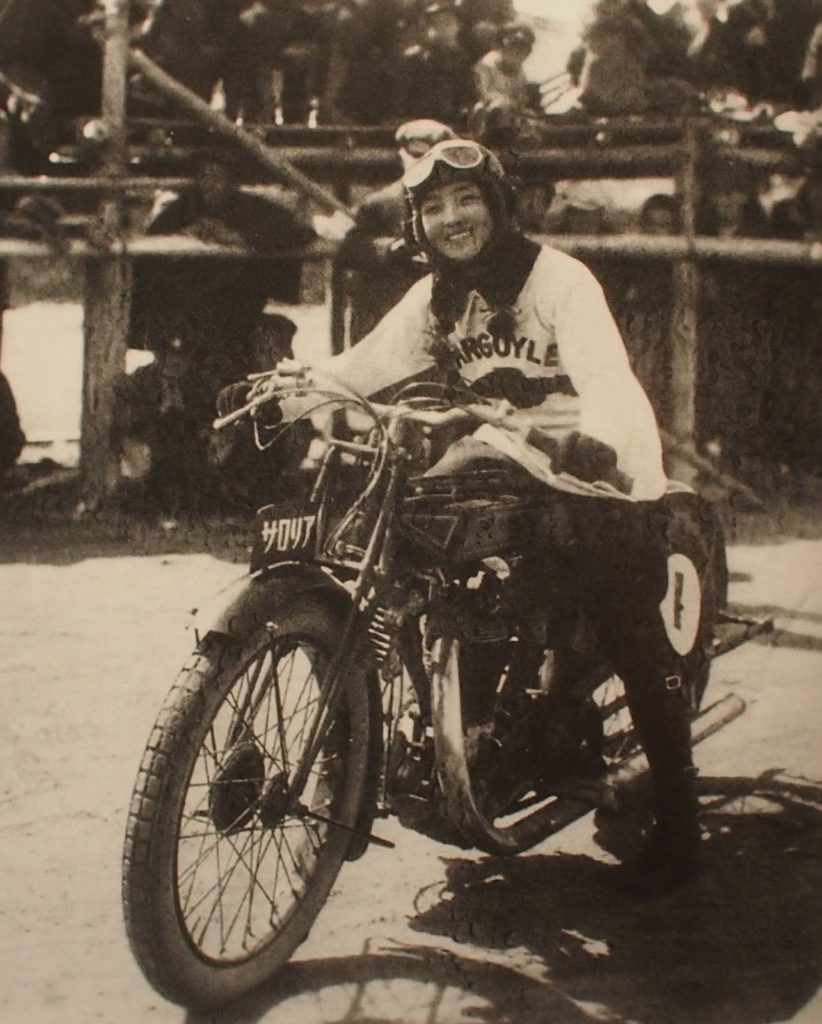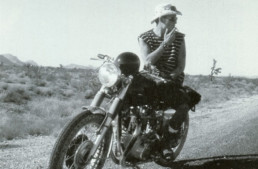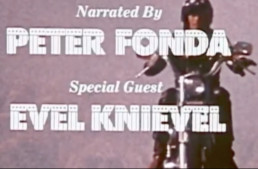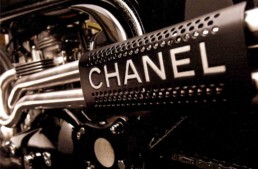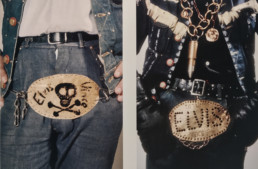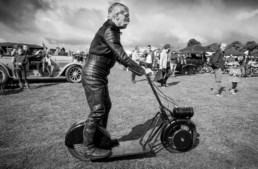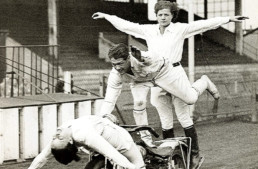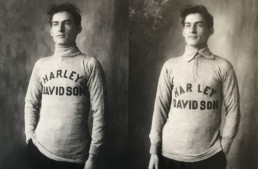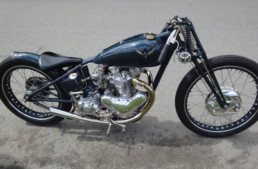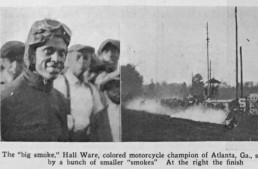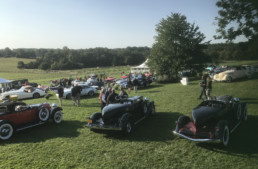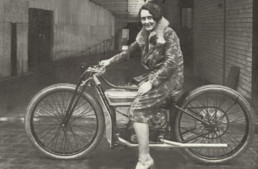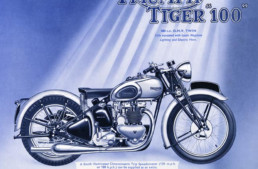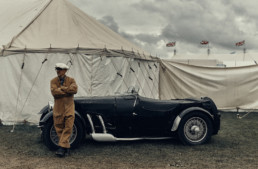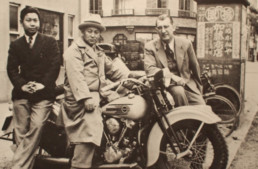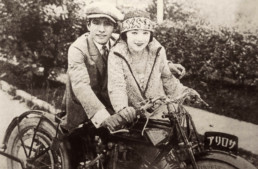Sylvester Roper's Steam Velocipedes
The earliest years of motoring and motorcycling are poorly documented, as inventors were far ahead of the press of the day, and their inventions even predated categories to name their machines. What to call a self-propelled vehicle of 2, 3 or 4 wheels? The first known self-propelled vehicle, Nicolas Josef Cugnot's steam-powered 'Fardier', was built in 1769 by this military engineer, who envisioned it replacing the horse as a heavy-duty hauler. The first known image of a motorcycle was published in 1818, although it's unknown if that steam velocipede was ever built, or was meant as a satire of steam enthusiasts and inventors. Unless another claimant is documented, it appears Sylvester H. Roper invented the motorcycle in 1867/8, in the Roxbury district of Boston. Recent research suggests the 'other' claimant, Louis-Guillame Perreaux, built and patented his own steam velocipede in 1869, in Paris. These 'first' dates are squishy, but what's remarkable about Roper and Perraux is they built their inventions independently, and nearly simultaneously. Small, light, portable power units were nonexistent in the mid-1800s, so both men had to build their own steam engines to attach to the 'boneshaker' bicycles of the day.
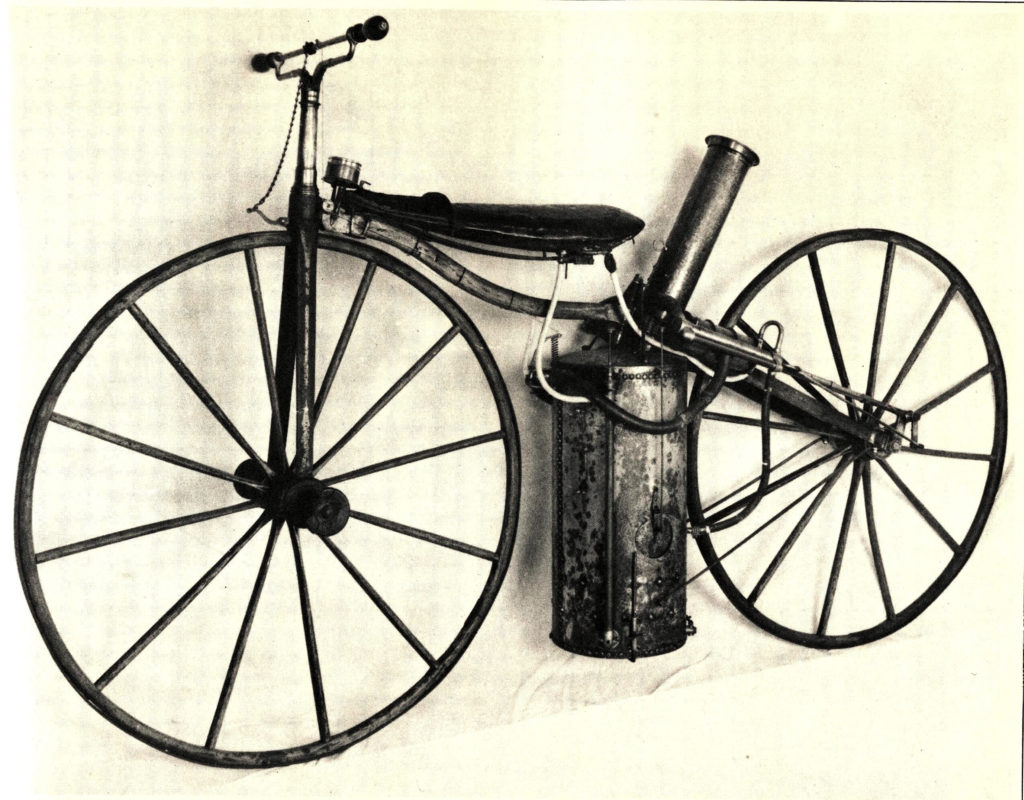
Sylvester Roper, born in Francestown, New Hampshire in 1823, was a singularly brilliant individual, patenting sewing machines, machine tools, furnaces, shotguns, fire escapes, as well as building his steam-powered two, three, and four-wheelers, which he did not patent. His Steam Velocipede was created a few years after building his first Steam Carriage (ie, automobile) in 1863, in the midst of America's Civil War, while he was stationed at the Springfield Armory. His first Velocipede of 1867/8 used a very small steam engine, which Roper built himself. The engine was suspended from a forged iron frame -purpose-built for the machine- on spring steel strips, which absorbed many of the road shocks typical of the 'boneshaker' bicycle chassis. The front fork was also iron, and wheels were wooden with steel 'tires', 34" in diameter. Water for the engine's boiler was carried inside the rider's saddle! The engine had two pistons of 164cc capacity, each connected by a crank-arm and rod to the rear wheel. The total engine capacity was 328cc.
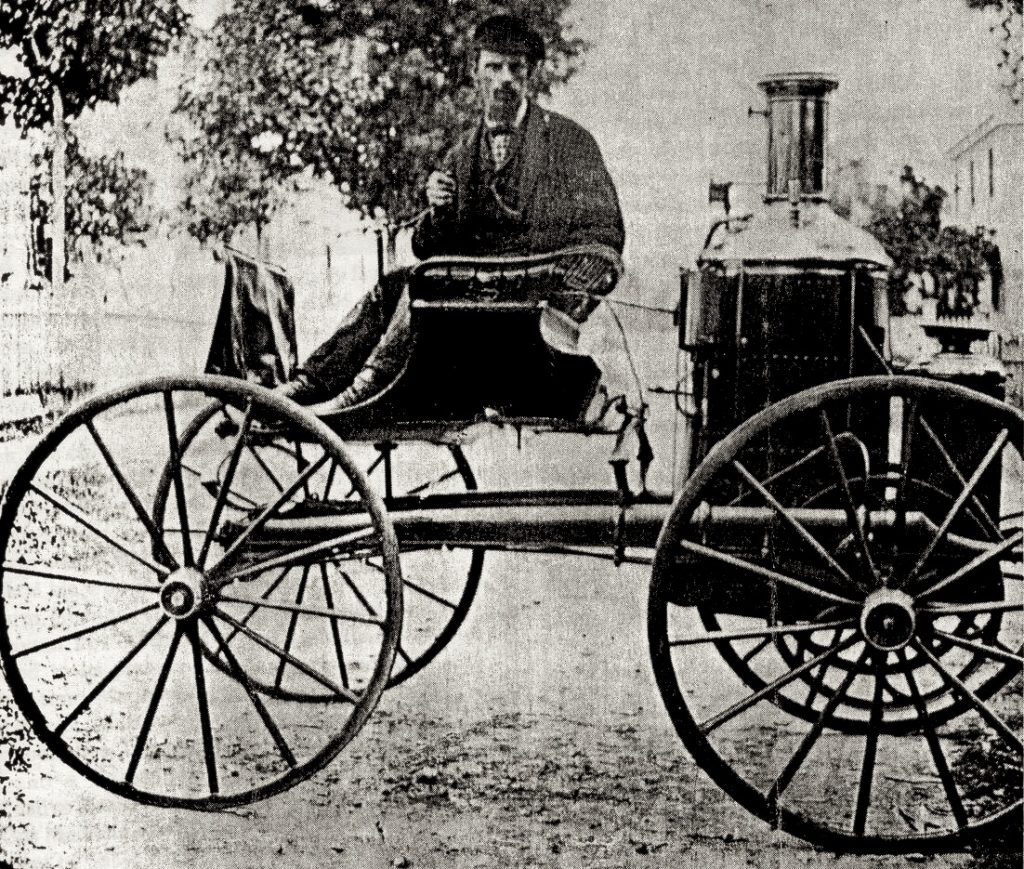
The rider controlled the Velocipede by rotating the handlebars forward - and thus the twistgrip throttle was born, decades before Glenn Curtiss claimed the same with his first motorcycles, which was again before Indian received general credit for this excellent idea! To stop the Roper, the rider rotated the handlebars backward, which pressed a steel 'spoon' onto the front wheel. Water was automatically fed from the seat to the boiler via a water pump actuated by engine rotation. The small firebox at the bottom of the motor was fed with charcoal, and a pressure gauge mounted on the steering-head kept the rider apprised of power, and danger.
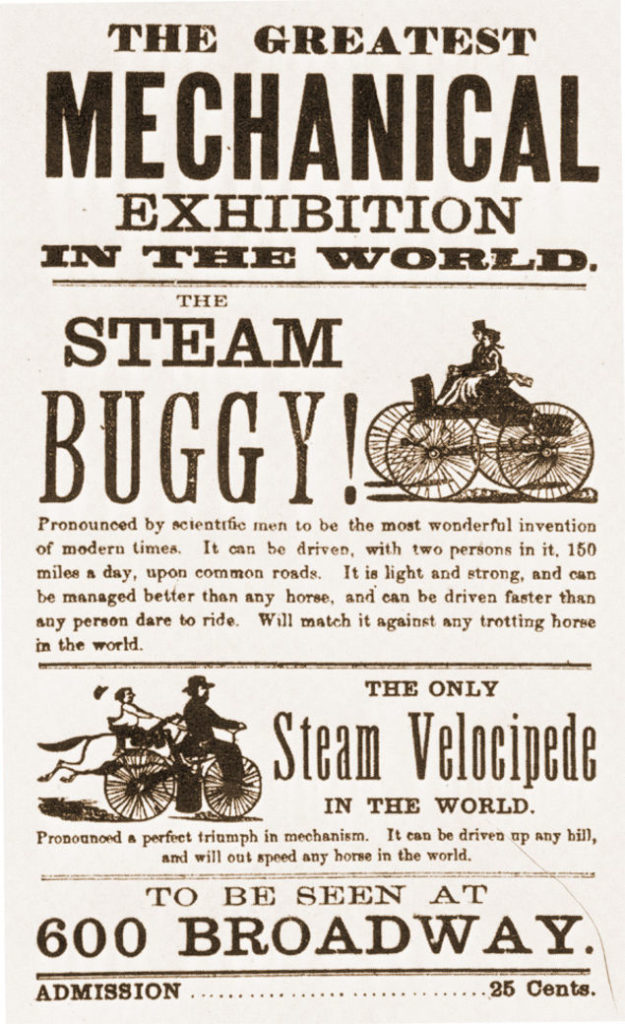
The contraption worked, although perhaps not as well as his Steam Carriages, which had space for much larger engines, and carrying capacity for water and fuel, which meant a longer travel range. The harsh ride of the wooden wheels with steel tires must have become tiresome as well, in contrast to his four-wheelers which used buggy springs for rider comfort...Roper postponed work on his Velocipedes for 15 years. In the intervening years, bicycle design had undergone a sea change, as in 1880, the Rover Safety Bicycle was invented, and rubber tires came into general use. These improvements must have spurred Roper to take up two wheels again in 1894, when Albert Augustus Pope commissioned Roper to make a new Steam Velocipede using a modified version of Pope's popular 'Columbia' safety-bicycle frame, with pneumatic 'Dunlop' tires. The intention of Pope (who by 1911 manufactured his own motorcycles) was to use the machine as a cycle-pacer on the incredibly popular bicycle racing velodromes of the day.
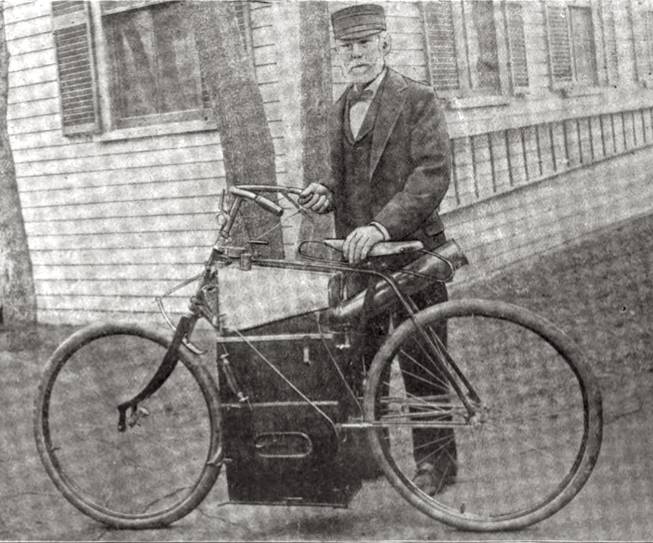
Roper designed a new steam unit weighing about 125lbs, making an all-up weight of the machine 150lbs. The bump absorption capacity of air-filled tires made it possible to solidly mount the engine to the frame, in the 'right' location, with the weight low and centrally between the wheels. A single cylinder and piston of 160cc drove the bicycle via a long connecting rod, and a short crank at the rear wheel. Steam pressure was kept between 160 and 225psi (for hills), although the engine was tested to 450psi. The machine was good for at least 40mph, and carried enough coal for a 7-mile trip. The new machine was compact, light, and very fast, and Roper, pleased with his results, put in quite a few miles on his steamer, regularly riding a round-trip of 7 miles between his home in Roxbury to the Boston Yacht Club. American Machinist magazine noted, "the exhaust from the stack was entirely invisible so far as steam was concerned; a slight noise was perceptible, but not to any disagreeable extent."
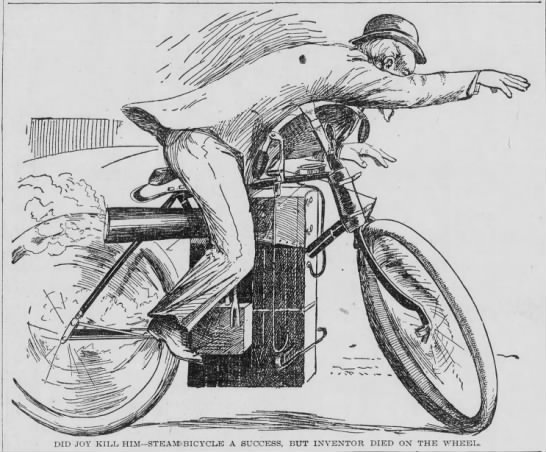
Roper was happy to demonstrate his steam vehicles to the public, at fairs and exhibitions, and claimed his latest Velocipede, or 'Self Propeller' as he called it, could "climb any hill and outrun any horse." On June 1st, 1896, he rode to the Charles River Speedway in Cambridge, to show the local bicycle racers his new cycle-pacer. Several cyclists agreed to keep pace with him on the banked 1/3 mile cement track. The Boston Globe reported on June 2, 1896: "The trained racing men could not keep up with him and he made the mile in two minutes, one and two-fifths seconds. After crossing the line, Mr.Roper was apparently so elated that he proposed making even better time and continued to scorch around the track. The machine was cutting out a lively pace on the back stretch when the men seated near the training quarters noticed the bicycle was unsteady. The forward wheel wobbled badly...", and it seems track-side viewers rushed out to catch the slowing rider, who had died of a massive heart attack while riding, at age 73. As Roper controlled the throttle with a cord around his thumb, steam power shut down as he relaxed into the arms eternal night, having proved himself motorcycling's Speed Merchant, and its first martyr.
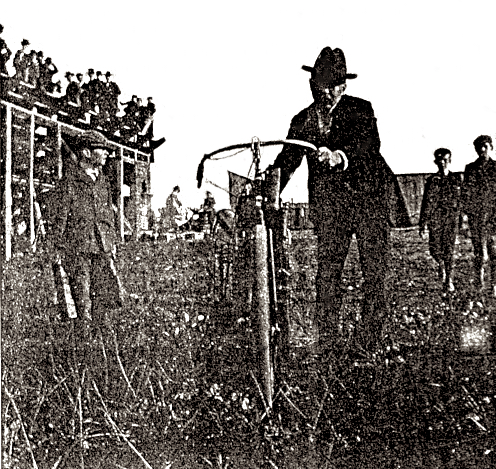
Freak Power: Hunter S. Thompson for Sheriff
[Words: Paul d'Orléans. Originally published in At Large Magazine]
He was a bitch from birth, or so said Virginia, the first woman to suffer Hunter Stockton Thompson, by pushing him complaining and bald into this world in 1937. He exited in the same state in 2005, taking a cue from Papa Hemingway and pulling the trigger on his inability to live up to a reputation for drink, drugs, mayhem, and - decades prior - the writing brilliance that secured a place in literary history. Long before a cartoon doppelganger overlapped and sucked the mojo from his real life, Hunter S Thompson was a ballsy and original human, the ‘pole around which trouble would occur’ according to a schoolboy chum. His authenticity was born of character, and not as in –acting; a charismatic little provocateur, he led a local street gang, who all agreed Hunter could ‘out think and out perform you’.
Thompson’s father Jack croaked a week before his 15th birthday, and Virginia washed her pain with booze. Hunter capped his high school career in Louisville with a month in jail for car theft, so never graduated, enlisting in the Air Force instead…but not until shooting every boat in the local marina beneath the waterline, sending most to the Ohio’s muddy bed. His early (but honorable) discharge in June ’58 might have been a summary of his whole life – “this airman, although talented, will not be guided by policy. Sometimes his rebel and superior attitude seems to rub off on other[s].” Reasons to live.

Thompson could ride bikes, shoot guns, and swallow drugs on par with any Angel, and his internal bullshit detector guided the story on this gang of romanticized losers. Motorcycle clubs had been chum to a media frenzy since 1947, when LIFE magazine ran Barney Peterson’s faked-up shot of a badly listing Eddie Davenport aboard a Harley-Davidson in Hollister. A patently false account of the Hollister street party - ‘Cyclist’s Raid’ - followed in Harper’s, which metastasized into ‘The Wild One’ movie. Thus began decades of shitty treatment for bikers, and demonization of the Hell’s Angels and most motorcyclists the press. Angels they were not, but any real societal impact was minimal, barring their glamorization as post-War boogeymen. In the context of such notoriety, ‘Hell’s Angels: the Strange and Terrible Saga of the Outlaw Motorcycle Gangs’ was a huge success, and secured Thompson’s reputation as a journalist, although ‘Gonzo’, and the perfection of his writing style into literature, were as yet a few years away.
By late 1967, his small family decamped yet again from San Francisco, as Thompson envisioned an unpleasantly domesticated future there as ‘a magazine editor with a mortgage’. They headed for the mountains of Colorado. By 1968, royalties from ‘Hells Angels’ brought $15,000 (that’s 100 large today, an enviable sum for any writer), which Hunter turned into a brand new BSA A65 Lightning, ‘the fastest motorcycle ever tested by Hot Rod magazine’, and a few acres – Owl Farm- in the hamlet of Woody Creek, 14 miles outside Aspen.

Hot on the heels of the Thompsons, a significant chunk of the Summer of Love followed in 1969; hundreds of hippies came and stayed in the area. The mountain town buzzed from both hippies digging the spectacular views and clean air, and ‘land rapist’ developers who saw dollar signs in those same features. Older residents were simultaneously seduced by development money and its associated businesses, and mortified by hundreds of dirty hippies swarming their parks. Aspen’s police magistrate, restaurant owner Guido Meyer, decreed “Riots, hippies, beatniks. They are all the same; working from Moscow. Lawlessness and disorder will be our downfall,” and arrested anyone with long hair, handing out 90-day jail terms for vagrancy. The Aspen Times commented on Meyer’s tinpot tyranny, “having long hair, beards, and sandals is not yet a crime in this country. His lack knowledge for, and respect of, the law, make his tribunal a mockery of justice.”
Meyer met his match in Joe Edwards, a 29-year old lawyer (and biker) with a civil rights background, who’d just been hired as counsel by the Snowmass ski resort. Highlighting Guido Meyer’s outrageous and unconstitutional antics in State court was easy pickings for Edwards, as Meyer had neither law nor police training; both Meyer and the bulk of the town council were shortly ejected. Edwards noted, “They got their ears boxed, and the police chief was fired and the entire city council was ousted.” Thus Joe Edwards was an instant hero, and Hunter S. Thompson had a flash of insight: the swelling population of hippies and heads just might elect a new set of politicians. Thompson dubbed this ‘Freak Power’, and became Edwards’ de facto campaign manager for a run for mayor of Aspen in 1969. “The Old Guard was doomed, the liberals were terrorized, and the Underground had emerged, with terrible suddenness, on a very serious power trip. Throughout the campaign I'd been promising, on the streets and in the bars, that if Edwards won this Mayor's race I would run for Sheriff next year … but it never occurred to me that I would have to actually run.”
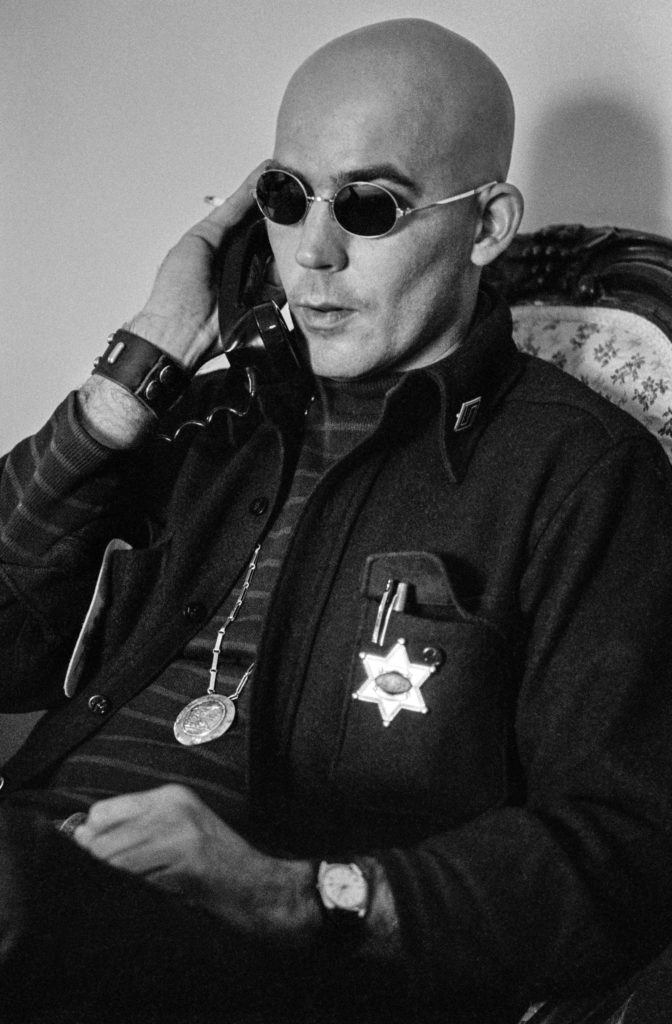
Edwards lost by 6 votes, but Thompson, his personal and artistic powers peaking, ran anyway, on a nationally watched ‘Freak Power’ campaign, whose logo was a double-thumbed fist clutching a peyote button, superimposed over a sheriff’s star. He brought real media savvy to the small town, buying radio time and producing a surreal TV ad of Hunter riding an enduro motorbike along a gravelly mountain road. Novelist James Salter (the best writer you’ve never read) narrated: “Hunter represents something wholly alien to the other candidates for Sheriff: ideas. And, a sympathy towards the young, generous, grass-oriented society which is making the only serious effort to face the technological nightmare we've created. The only thing against him is, he's a visionary. He wants too pure a world.”
Thompson was a well-known journalist for ‘Hell’s Angels’, but his gonzo antics were not yet the stuff of legend. Still, his campaign pointed the way towards his literary future, the start of both his legend and downfall. He knew in his heart his bid for Pitkin County Sheriff would fail, but damned if he wouldn’t go out with a pyrotechnic, psychedelic circus. “Why not run an honest freak and turn him loose, on their turf, to show up all the normal candidates for the worthless losers they are and always have been?" The campaign was a gesamtkunstwerk, with writing, video, radio, posters, and even Thompson’s appearance contributing; he shaved his head to refer to his rival, the crew-cut Sheriff Carrol D. Whitmore, as ‘my long haired opponent’. Now an established resident of the area, he invaded town hall meetings wearing his trademark Converse All-Stars and shorts, but underneath the show and bluster was serious talk about dangers to the local environment from development and hunting and fishing, and railing against the ‘silly’ laws against marijuana. He also promised never to take mescaline on the job.
His campaign promises stretched far beyond the normal parameters of the job, and included building a large parking facility outside Aspen, tearing up all asphalt roads in town in favor of grass, and providing a fleet of public bicycles. Aspen would be re-named ‘Fat City’ to discourage development, and “the Sheriff’s office will savagely harass all those engaged in any form of land-rape." The Sheriff and his deputies would be unarmed in public, to discourage ‘blood-baths by trigger-happy cops’, and would put ‘dope dealers’ in stocks on the courthouse lawn, as ‘no drug worth taking should be sold for money’; marijuana users would be ignored. Hunting and fishing by non-residents would be banned. A police ombudsman would keep track of power abuses, and a new drug treatment center would educate schoolkids on drug abuse. An office would be established to detect environmental crimes. All this was a clear fight against unbridled Capitalism, but the tone of the campaign, its big-pupil teeth gnashing, scared the shit out of the locals. Even worse, Thompson’s energy turned people on, and it was clear he had a lot of support. His ‘straight up Mescaline platform’ was pure druggy Dada, the coyote trickster path to Truth, and enough folks could see the wisdom beneath the madness that he almost won.
It took a cabal of Republicans, Independents, and Democrats (the ‘RID’) to foil the plan; they agreed not to run candidates against each other, and fight Freak Power together. There were threats of violence of course, so Aspen police recommended the Freak Power campaign offices be moved out to Thompson’s ranch, and that they arm themselves. The night of the election, Owl Farm took on the paranoid cast of Fear and Loathing, with stoned, gun-toting Freaks sweeping the property with flashlights, tensed for the imminent attack.
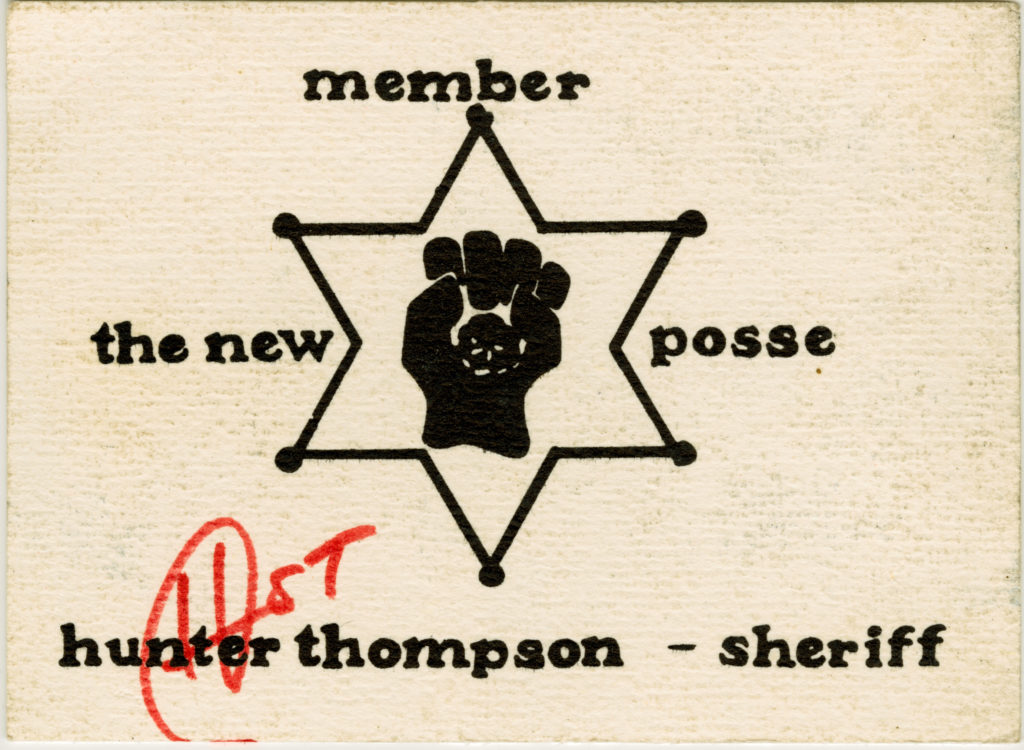
Hunter considered his Aspen antics a failure before he’d even begun, and was too self-absorbed to acknowledge the long-term success of the Freak Power project. He was really a political Johnny Appleseed (who we’ve recently learned intended alcoholic applejack, not snacks for rosy-cheeked schoolkids). In the next election, the entire city council was ousted, and liberal candidates like Joe Edwards took office. The next sheriff, Bob Braudis, overhauled the office and was re-elected 5 times; he was a great admirer of Thompson, and wrote the forward to the book ‘Freak Power’ (where much of this information was sourced). Growth was also severely restricted in Aspen, maintaining its natural beauty and subsequently raising property values significantly. And the final coda, of course, is that Colorado became the first state to legalize recreational use of marijuana, a result dear to Thompson’s heart…the man who threw a pound of dope into a Kinshasa swimming pool rather than watch Muhammed Ali fight George Frazer.
Two years before he kicked his home state in the nuts with ‘The Kentucky Derby is Decadent and Depraved’, incidentally inventing a new form of literature, Hunter S. Thompson’s political lark exposed what was best about the man. He’d taken the hippies to task in ’67 for abandoning the civil rights movement and the New Left in favor of simply getting high, and pulled a political stunt not repeated until punk hero Jello Biafra garnered 7000 votes for mayor of San Francisco. Thompson’s last words were still on the rollers of his IBM Selectric when Juan Fitzgerald discovered him dead in 2005: counselor. It’s the word that sticks in your craw during Handel’s Messiah, that fearful and strange composition of awesome beauty. Beethoven uttered on his deathbed, ‘and he shall be called Wonderful.’ Hunter took the next line. Johnny Depp generously re-created the Freak Power campaign’s double-thumbed mescaline-clutching fist as the cannon from which his ashes were shot over Owl Farm.
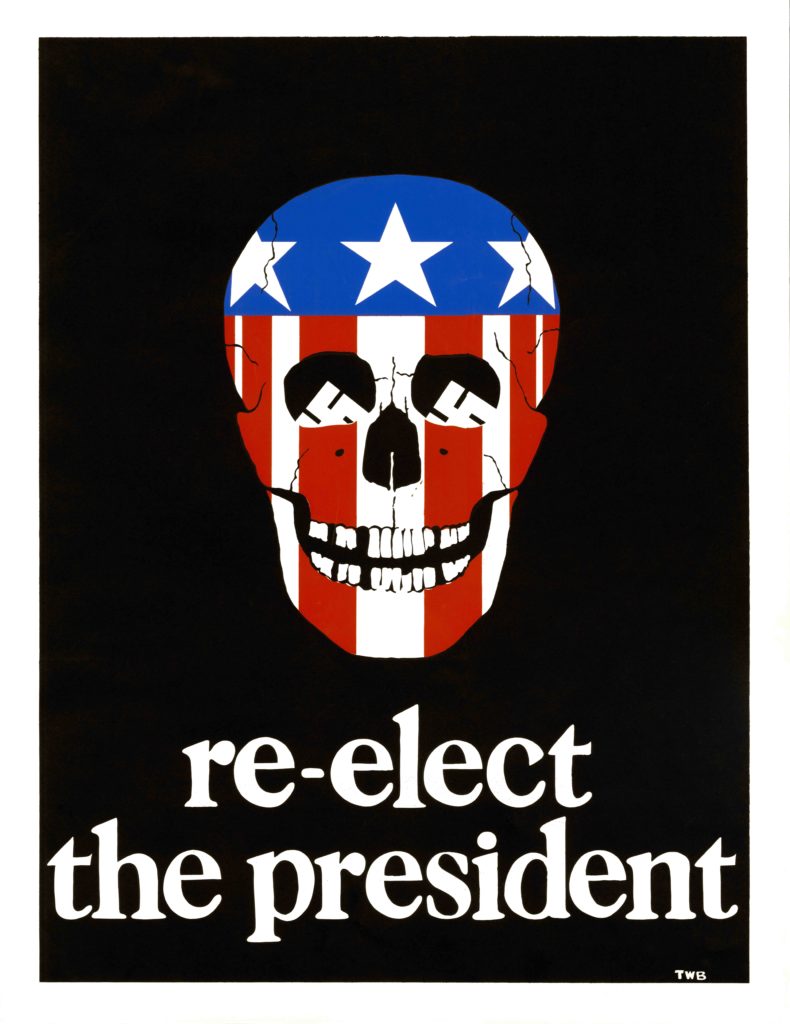

The Vintagent Selects: 'Not So Easy'
https://vimeo.com/236935464
The Vintagent Selects: A collection of our favorite films by artists around the world.
NOT SO EASY (1973)
Run Time: 17:57
Producer: Cliff Vaughs/Filmfair Communications
Director: Cliff Vaughs
Associate Director/Writer: Norman Rose
Editor: Phil Content
Director of Photography: Harry Winer
Assistant Cameraman: George Leskay
Sound: Conrad Rothman
Original Music: Jeff Hathaway, Bob Tomasky, John Webb, Terry Boylan, Frank Blumer
Key Cast: Peter Fonda, Evel Knievel, Cliff Vaughs, Wendy Vaughs
THE FILMMAKER
Cliff 'Soney' Vaughs was a chopper enthusiast and Civil Rights worker in the early 1960s, spending time in the South with the SNCC as an official photographer and activist. Returning to Los Angeles in 1965, Vaughs worked at KRLA producing stories, and making films such as 'What Will the Harvest Be?'. In 1968, he met Peter Fonda while reporting on Fonda's arrest for marijuana possession; the two discovered a mutual interest in choppers, and discussed Fonda and Dennis Hopper's idea for a 'new Western' with motorcycles.
Cliff Vaughs was named Associate Producer of what would become 'Easy Rider', for which Vaughs provided the title, critical parts of the story (from events in his own life - like being shot at in the South on his chopper), and the two iconic choppers in the film, 'Captain America' and 'Billy', which he built in collaboration with Ben Hardy. When Columbia Pictures took over production of Easy Rider, Vaughs was bought out of his contract as Associate Producer, and his name never appeared in the credits.
In 1972, in response to a wave of motorcycle fatalities during a great boom in motorcycle sales to new riders, Vaughs filmed 'Not So Easy', and asked his friends Peter Fonda and Evel Knievel to appear, with Harley-Davidson supplying motorcycles. The film was shown in motorcycle rider education classes across the United States and Canada through the 1970s and early 1980s.
SUMMARY
While motorcycles are great fun, they're also 'not so easy', and need careful training to ride safely.
RELATED MEDIA
Top 10: Most Expensive Motorcycles
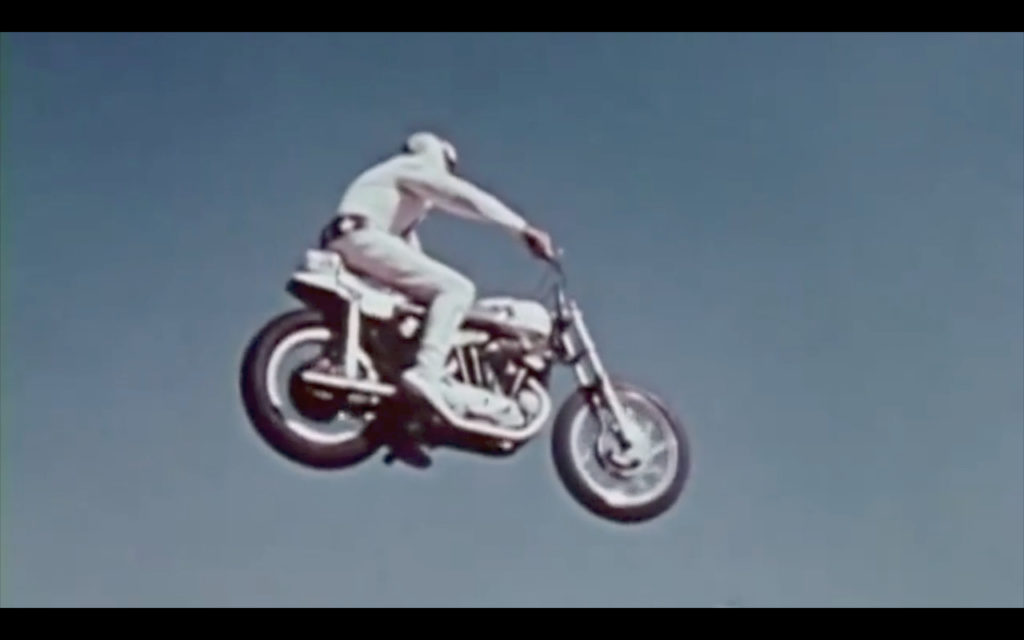
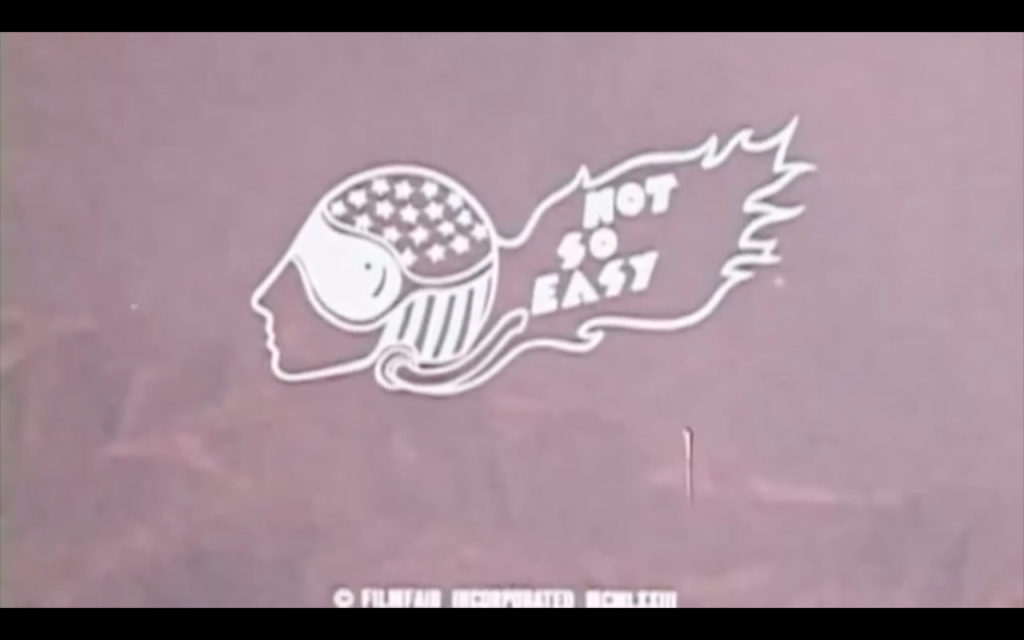
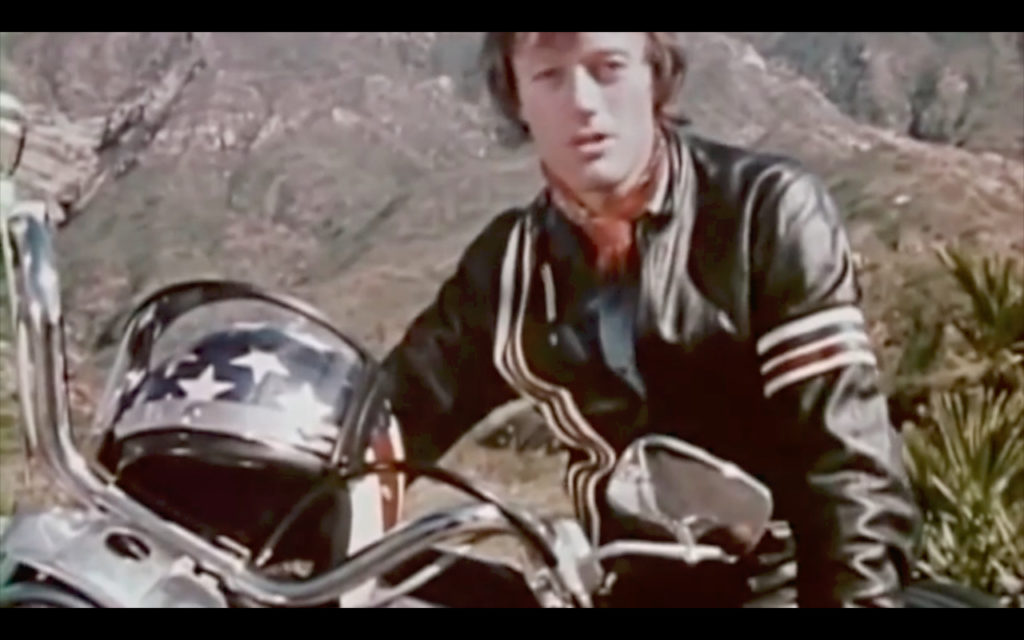
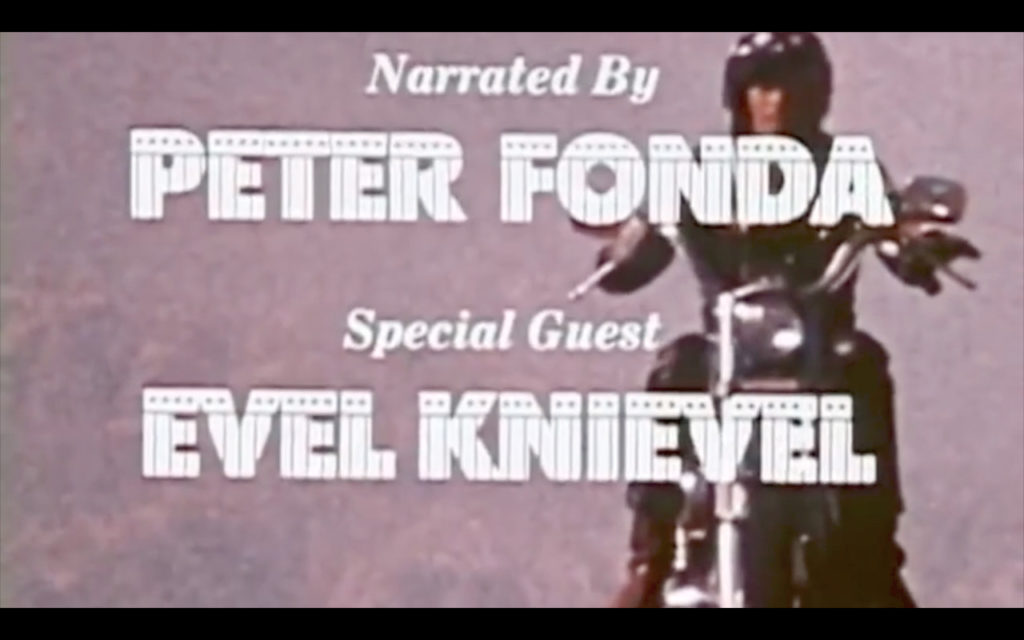

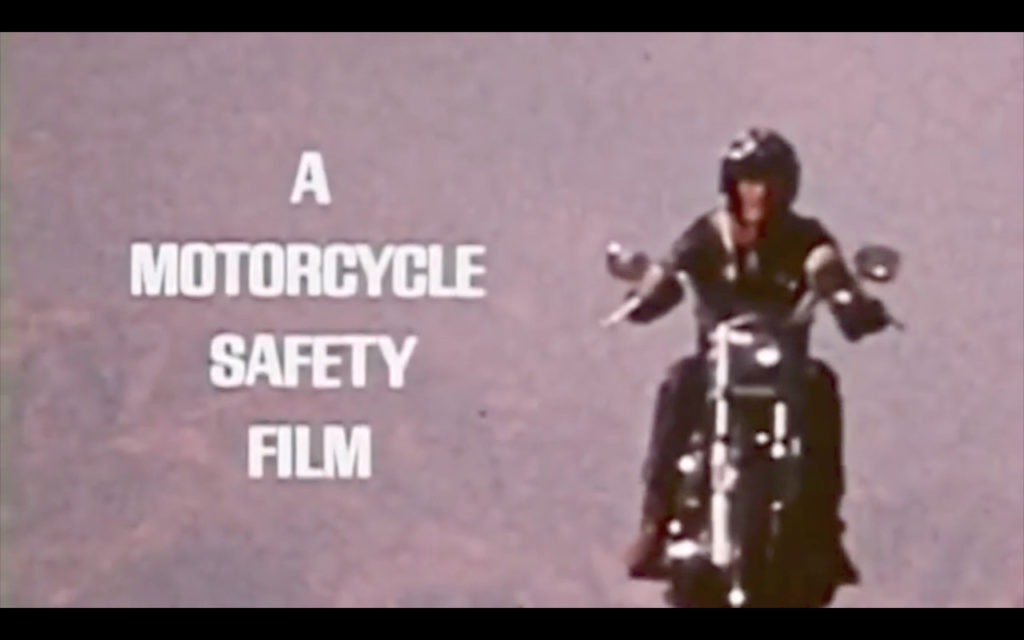

The Chanel Triton
July 2009: the fashion world was abuzz with two leaked photos (by Stéphane Feugére) of a custom-built 'Chanel Triton' being photographed for use as a prop for a Chanel photo shoot. Staff explained the photos were for their 2010 Spring collection, 'Starting Point', during the shoot on the Rue Royale Chanel boutique in Paris, during Fashion Week. The photos were no surprise to The Vintagent, as we'd watched the bike come together during the year, and were curious how this beautiful problem child would be received by the world.
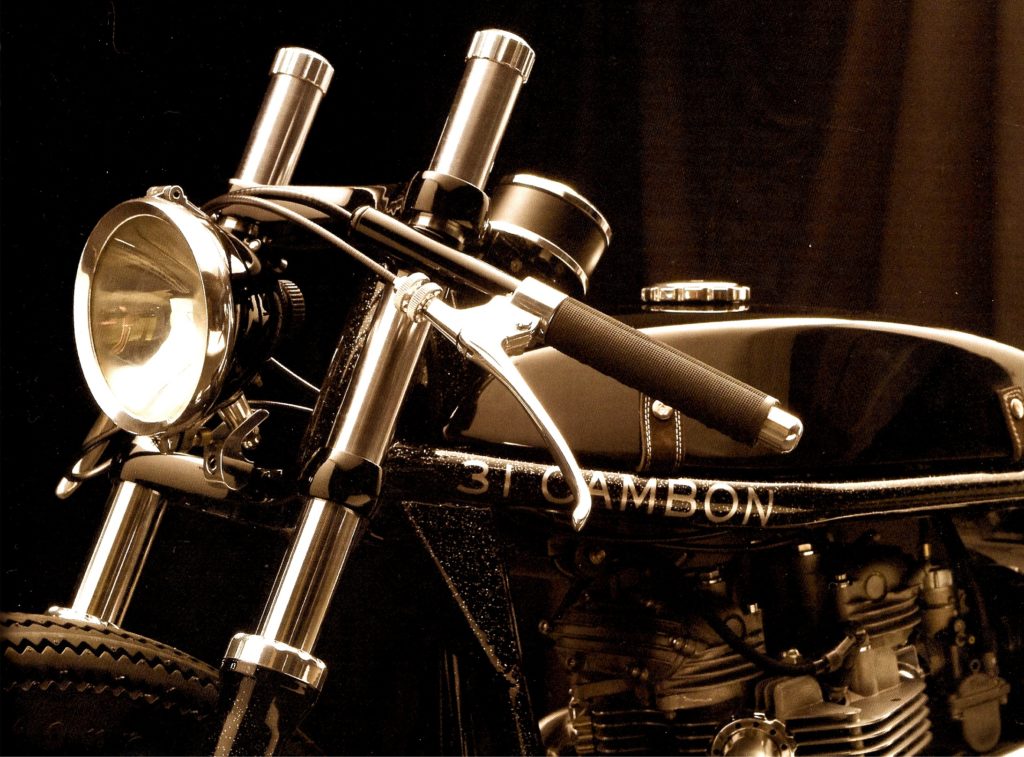
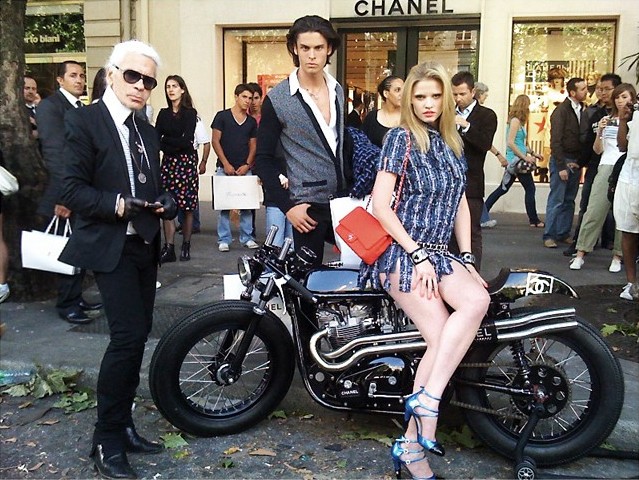
Models Lara Stone and Baptiste Giacobini were draped over the bike, and the Triton wasn't merely used for a photo shoot; Karl Lagerfeld, the infamous Creative Director of Chanel, featured the Triton as the principal prop of his latest film - 'Vol du Jour' (the film is nonfunctional on the Chanel website, watch it below). In the film, Stone and Giacobini shoplift clothing from various Chanel shops in Paris, and escape by stealing the Triton! A plotline with a sense of humor...but Karl should definitely keep his day job, as his films aren't nearly as polished as his clothing, or his image.
https://www.youtube.com/watch?v=hEHJnMh4skA&feature=youtu.be
The Triton was built as a collaboration between several French creatives: Daniel Delfour (builder of the Norton Alla'Verde hybrid, and a violin maker by trade), Vincent Prat (Wheels&Waves founder), and Frank Charriaut (an original Southsider, and former Chanel designer...which may have something to do with the Triton...), with paint by Momo. It was also born into trouble, being built without the the permission or knowledge of Chanel themselves. While Karl Lagerfeld loved the Triton, and rented it for Chanel's advertising and his own film that year, lawyers representing the firm insisted all identifying logos be removed from the machine. The raison d'etre of the exercise thus defeated, the Chanel Triton was then completely dismantled, having been built for a purpose. Its parts were scattered to serve other projects, and it exists today only as photographs and a short film, an avant garde alt.custom before its time, that was appreciated by creatives, but destroyed by lawyers. Handkerchief, please.

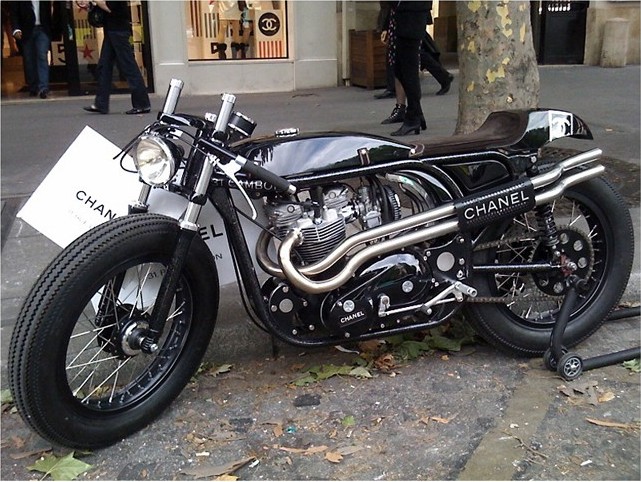
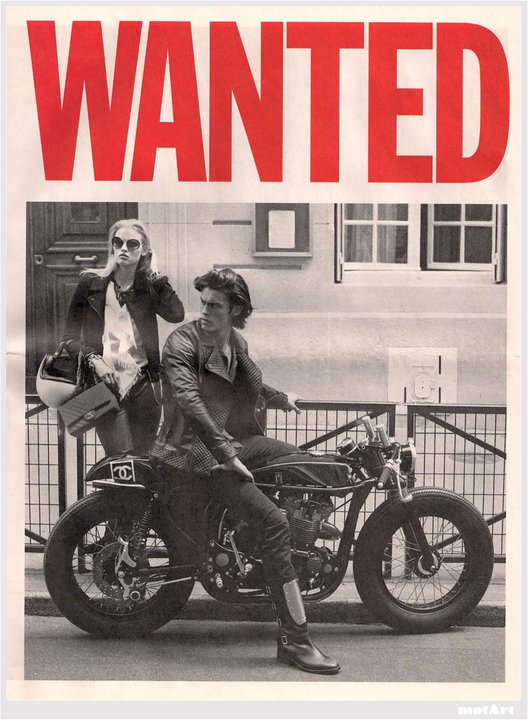
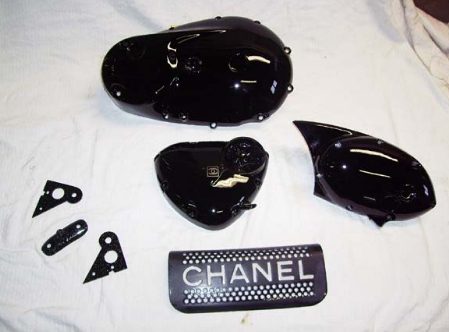
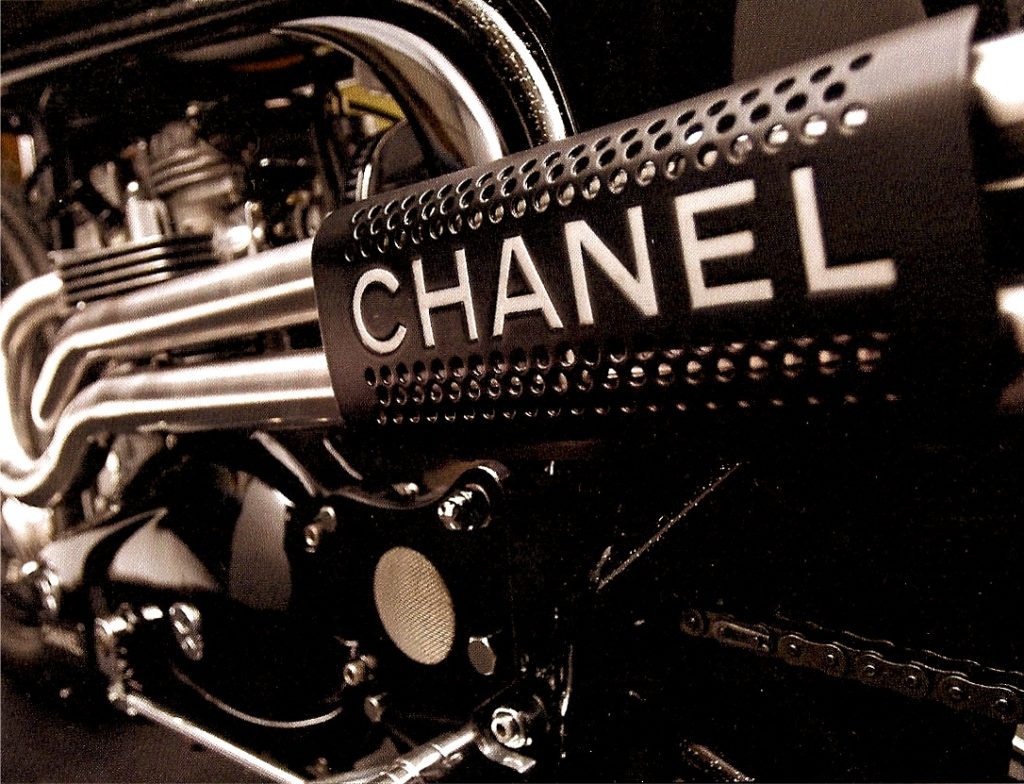
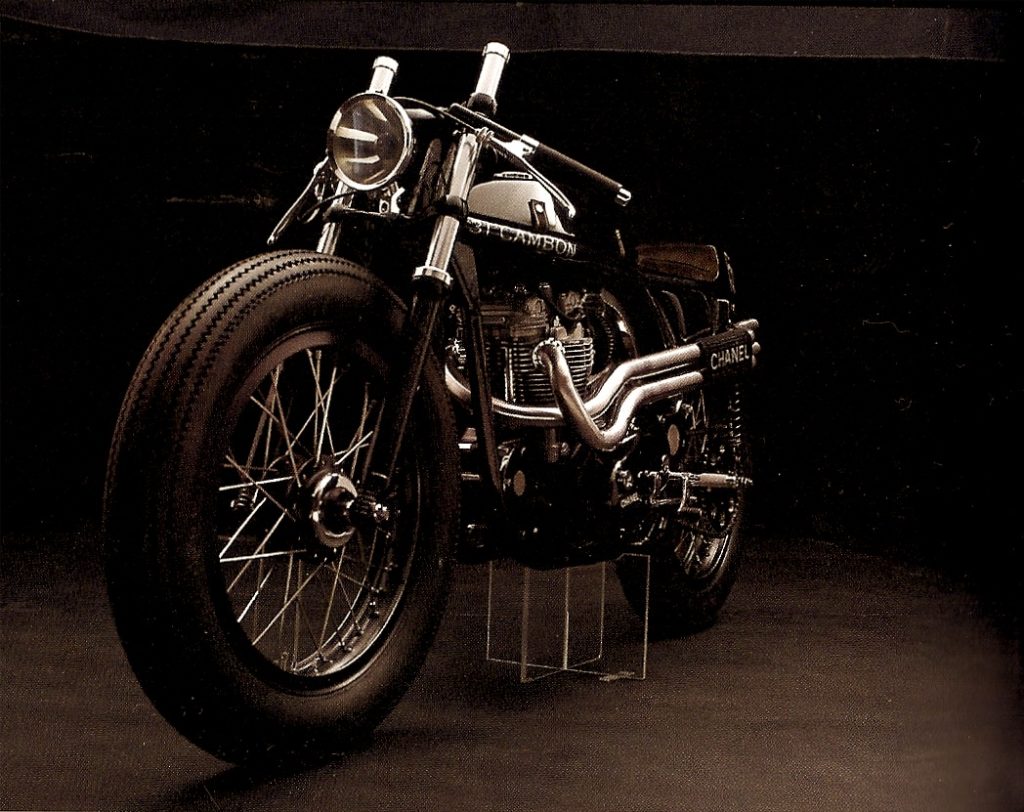
Karlheinz Weinberger
He was a 'grey man' in a suit, an ordinary worker, never missing a day in his job as an inventory clerk at the Seimens-Albis factory in Zurich, Switzerland. By all accounts, Karlheinz Weinberger was unassuming, quiet, kept to himself, and was a loyal employee. But in the evenings and on weekends, this self-taught photographer stalked the 'dark' places of the Swiss psyche, working under the pseudonym 'Jim' as a member of the gay beefcake photography club 'Der Kreis' in the early 1950s. If our story ended there, he would probably be forgotten as just another closeted gay man in squeaky-clean Switzerland.
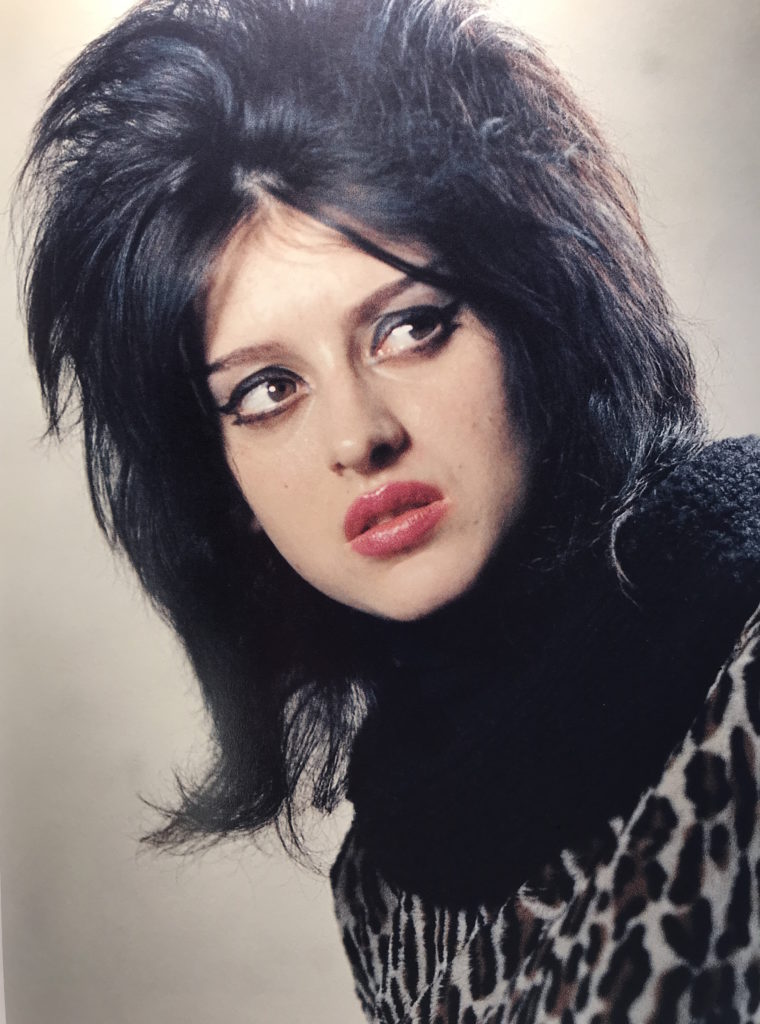
Around 1958, he insinuated himself into a totally different 'scene' of young rebels and bikers, who squirmed under the thumb of Conformity, and grasped at the crack in the universe which was Elvis Presley, James Dean, rock music, and motorcycles... just like kids in the rest of the world! These youngsters (dubbed 'Halbstark' - half-strong - by Swiss media) home-grew a flamboyant style, which veered away from the American 'rebel' dress code of blue jeans, t-shirts, and boots. They wore belt buckles the size of hubcaps, with crudely chased images of skulls, Elvis, or Gene Vincent, favoring oversize artillery shells, animal skins, and horseshoes as necklaces. They wore cowboy boots with heels rather than engineer's boots. Better still, addressing the very source of Teen energy, they tore out the zippers of their blue jeans and replaced them with bolts, chains, or barbed wire, in an almost Medieval display of crotchery.
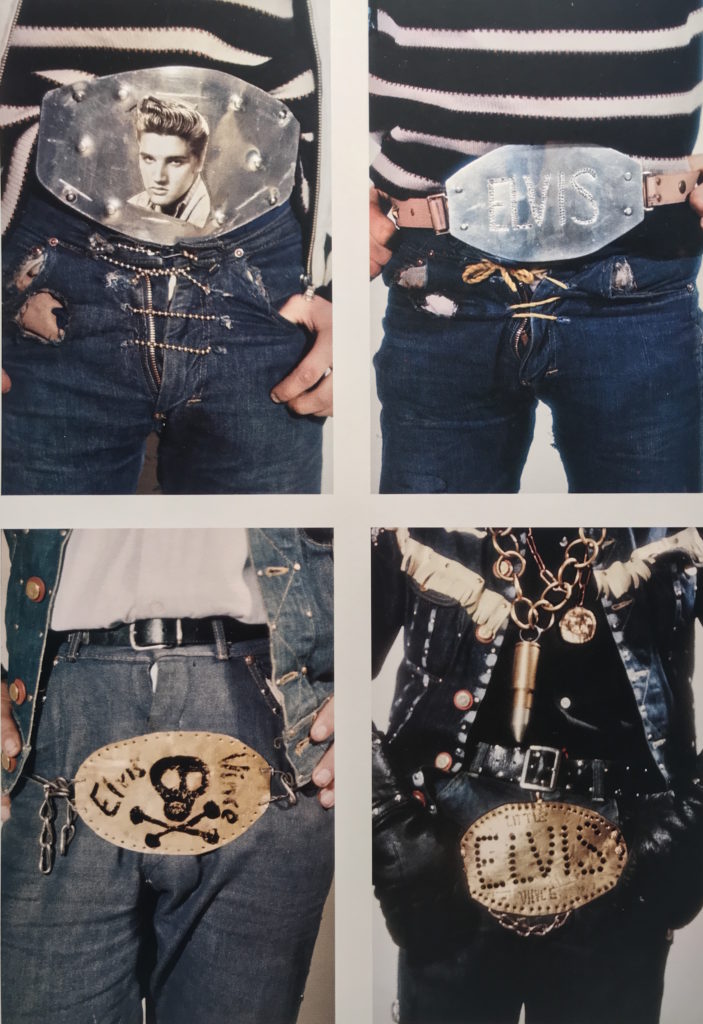
The Halbstark shaped a fiercely independent identity in their small, close-knit culture, and evolved in relative isolation, away from the prying eyes of the international press. After all, how many Swiss rock bands 'broke out' in 1958? Or ever? What part of Cool ever came from Zurich? The members of these gangs were 'Nowhere' and they knew it, but created their own life raft via subculture of fashion identity.
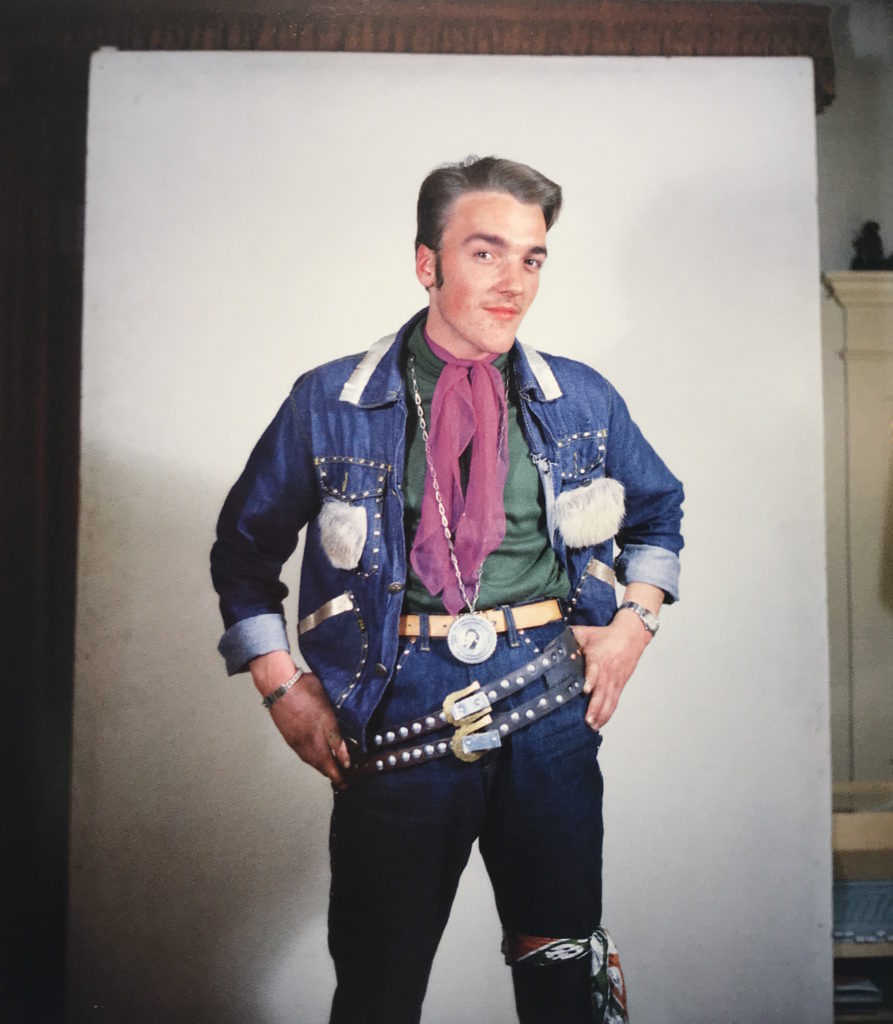
By the mid-1960s, the Swiss media began to take note of this homegrown oddity, and Karlheinz Weinberger's photographs of the gangs were published for the first time. He remained loyally embedded with his friends over the years, documenting their dissipation as the 60s wore into the 70s, and the era's corrosive elements began to take their toll.
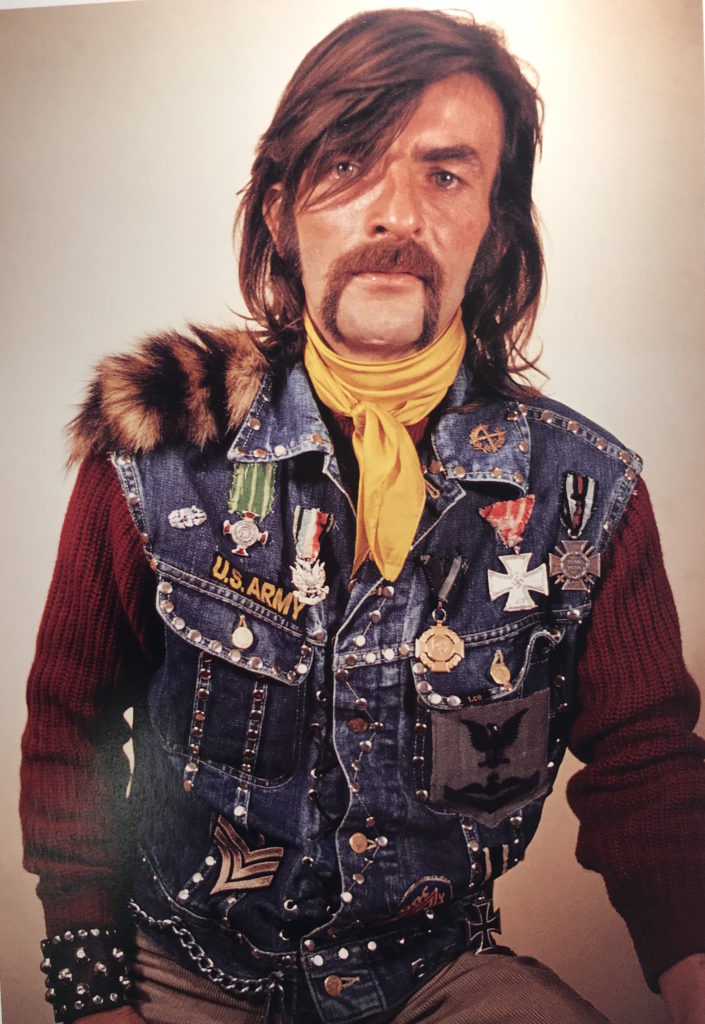
In the last 7 years of his life, Weinberger was transformed from an obscure photographer to a celebrated cultural chronicler of a fascinating, lost subculture. In 1999 the first book of his photos was published - 'Karlheinz Weinberger' (Andrea Zust Verlag, Binder/Meyer/Jaegi authors), which is long out of print, and is now a collector's item. Before and after his death, Weinberger was featured in numerous exhibitions around the world, and his photographs are in the collections of major museums. He was born in 1921 and lived most of his life in obscurity, but when he died in 2006, he was a famous artist.
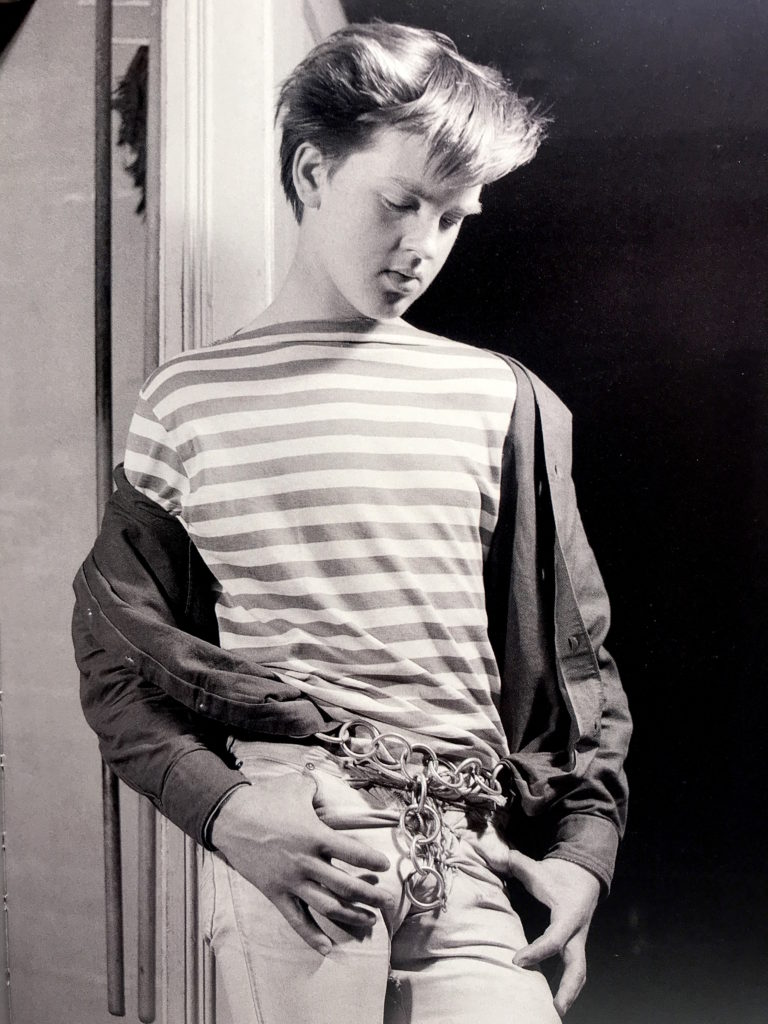
During the 1950s and early 60s, other pioneering artists working with motorcycle gangs as subject matter (Danny Lyon, Kenneth Anger, etc) produced rich and fascinating bodies of work with very similar themes. Let's call it the Zeitgeist of the 50s, which led these photographers and filmmakers into some interesting territory. A branch of Motorcycling evolved in the 1950s that was self-consciously 'antisocial', and brandishing imagery that was highly charged, threatening, or just plain offensive. They mined cultural turf that was anxiously avoided by 'straight' society (homoeroticism, fascist symbols, sadomasochistic hardware, blasphemous language). Motorcycles, symbolizing independence, fearlessness, and fun, became the perfect accessory for individuals who just didn't jibe with how they were 'supposed to be', as the rest of society (mostly, their parents!) desperately grasped for a period of normalcy after the horrors of global War and the threat of nuclear annihilation.
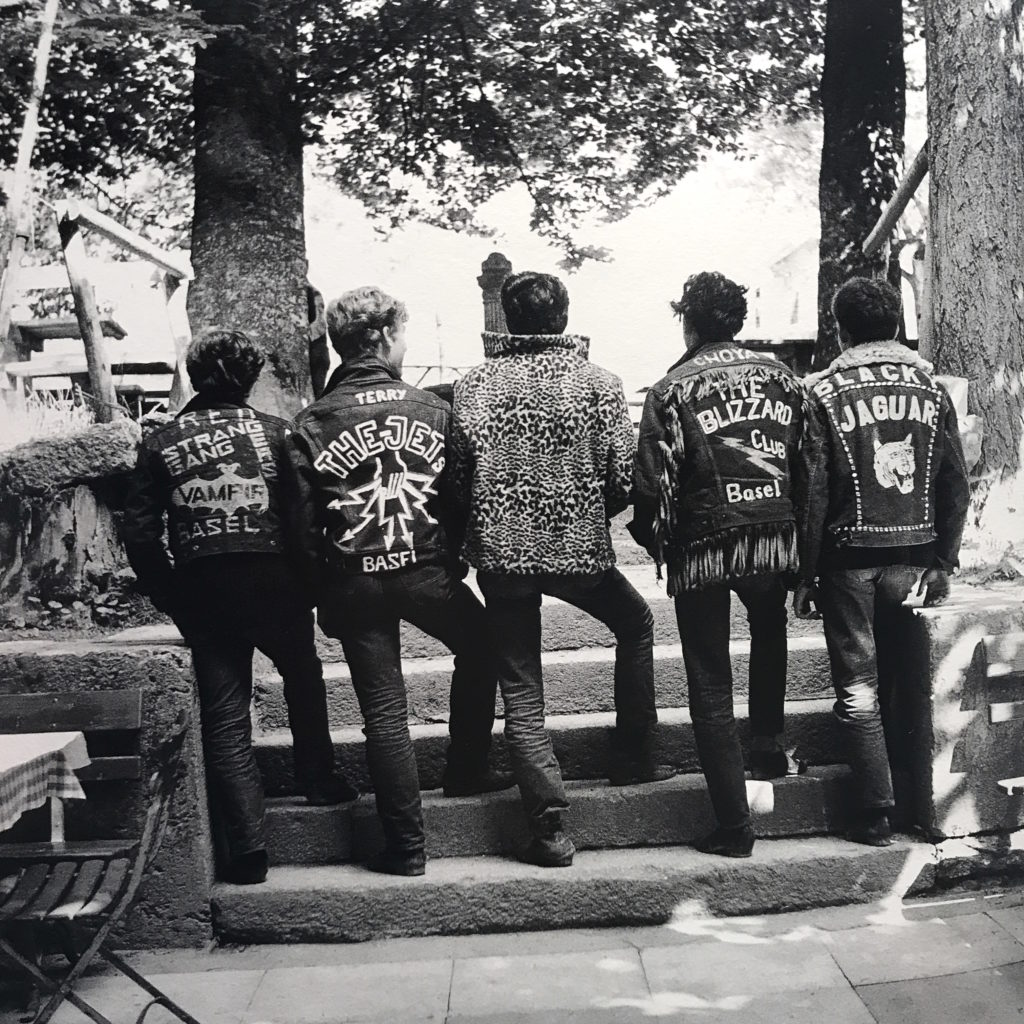
While the numbers of 'rebels on motorcycles' were relatively small in the US, Britain, and Europe, their powerful imagery stained the public's perception of Motorcycling for decades. Films about motorcycles during the 50s through 70s almost always featured violent gangs of ignorant thugs, with a few bright exceptions like 'On Any Sunday'. It took the concerted efforts of Soichiro Honda and his advertising team to shine a light back on Motorcycling as a fun pastime, allowing just regular folks to approach 'two wheels' without stigma for the first time since the 1930s. But damn, those thugs looked cool.
You can purchase a terrific compilation of Karlheinz Weinberger's work here: Rebel Youth: Karlheinz Weinberger.

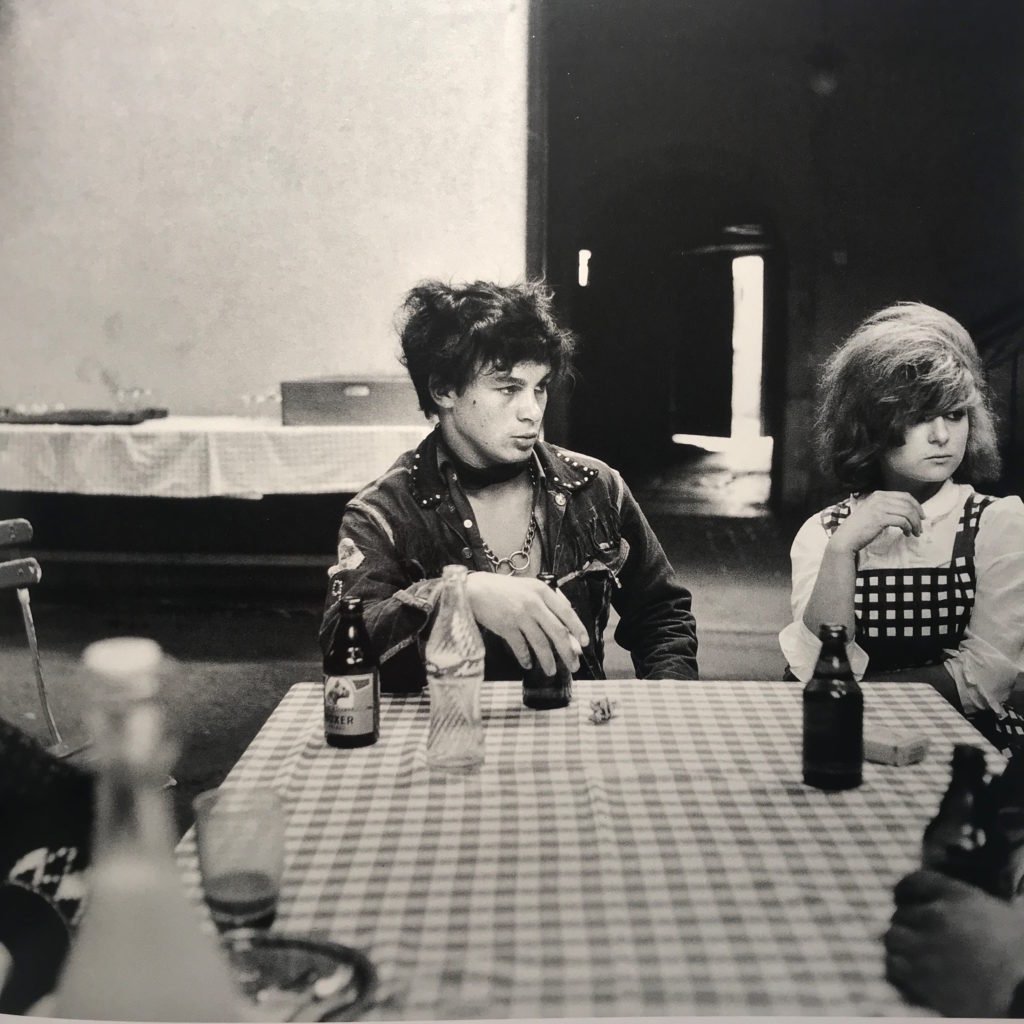
Kop Hill - the Perfume of Authenticity
[Words: David Lancaster Photos: Dave Norvinbike]
What explains an addiction to old motorcycles? They’re costly, dirty, noisy, not always reliable, but something keeps bringing us back for another hit. But what?
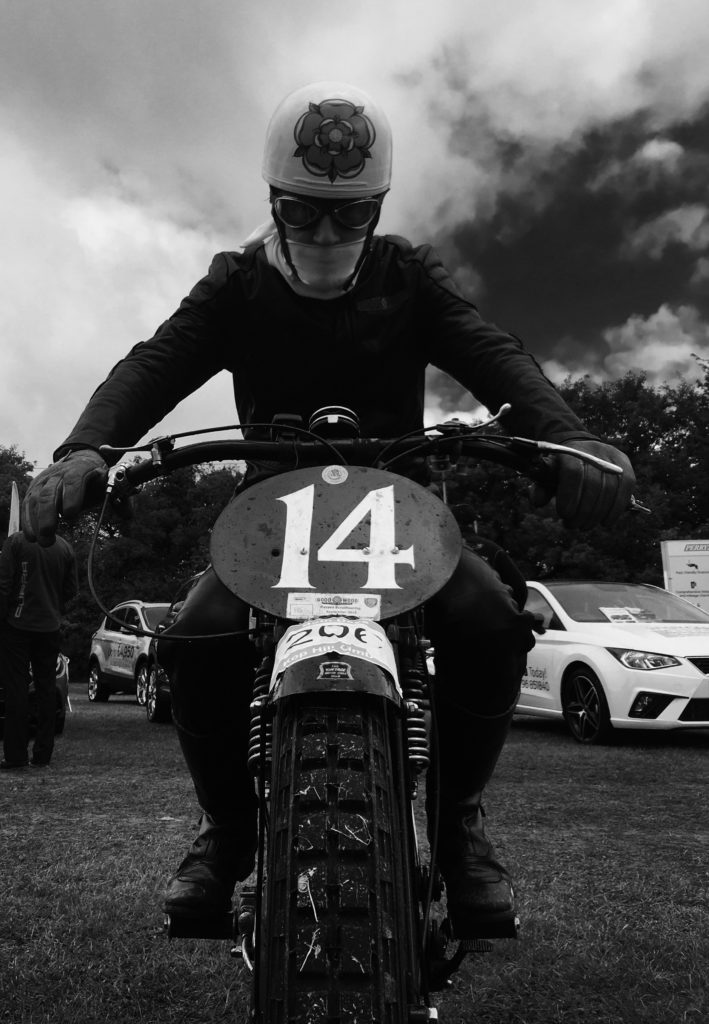
Well, they’re just great fun to ride. They’re involving. On an old bike you see, hear, even smell the cycle working beneath you. In an age of diagnostic servicing and electronic driver aids, they ask something of the rider; sometimes they ask a lot. But an older bike – running nicely, running fast – is a credit to its pilot-mechanic, not a computer. There’s also the appeal, for many of us, of riding back in time – older bikes have lived through history we can only read about. Doing so at pre-war venues such as the Montlhéry autodrome and the Brooklands speed bowl is a thrilling exercise in riding with ghosts; fast ones.
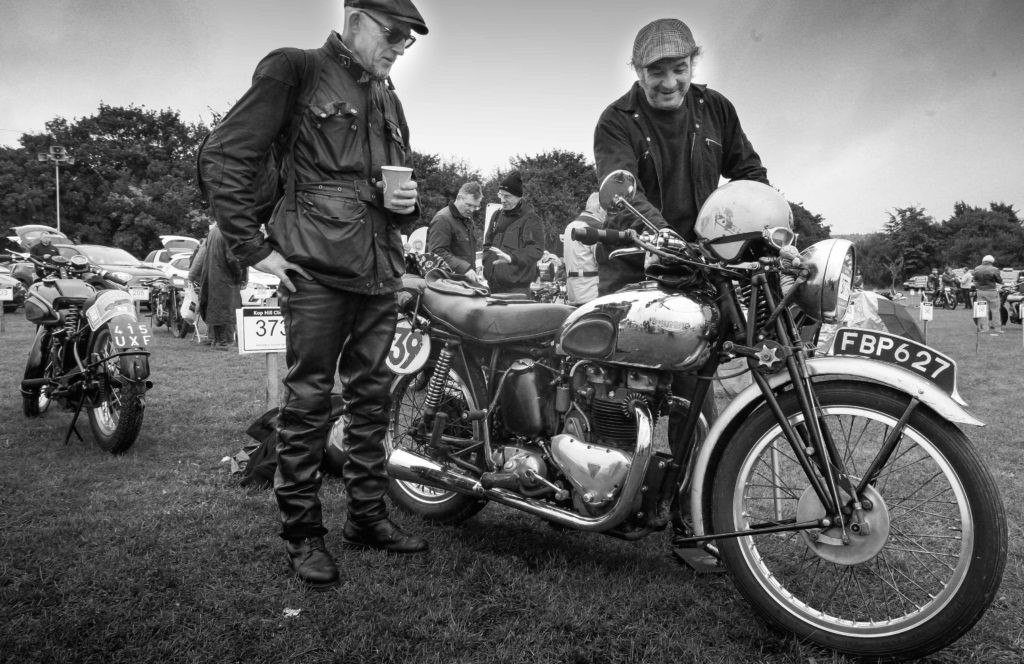
Kop Hill, in rural Buckinghamshire, has a history as rich as those historic venues, and it too has a lineage back to the pioneer era. The hill itself runs for just over a two-thirds of a mile, snaking gently into the English countryside with subtle turns on the way up. From 1910 until 1925 the Kop Hill speed trial was one of the country’s major motoring and motorcycling events, home to fierce competition between top riders and drivers of the day. These included the likes of Malcolm Campbell in his Talbot Blue Bird and Count Zborowski in his eight-cylinder Ballot.
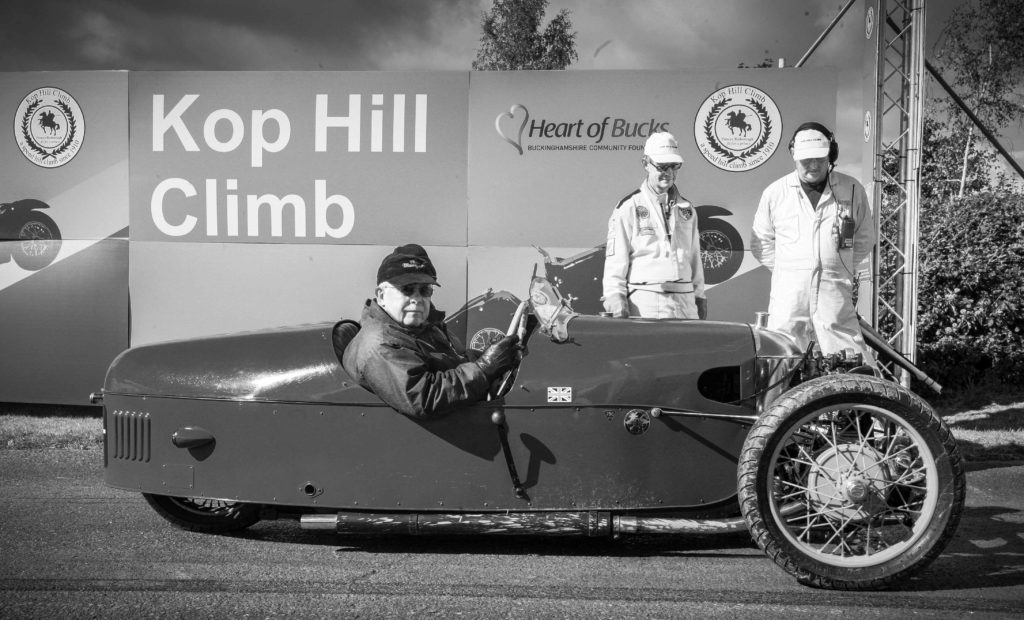
Fastest of all was Freddie Dixon, who in 1925 on a 736cc Douglas set the outright record for two or four wheels by taking the timed section of the climb in just over 22 seconds, at a remarkable 81mph average. This, over a stretch of ‘road’ which was mostly loose gravel back then, bumpy and with a one-in-five climb at its steepest point, was a high velocity swan-song for the original event.
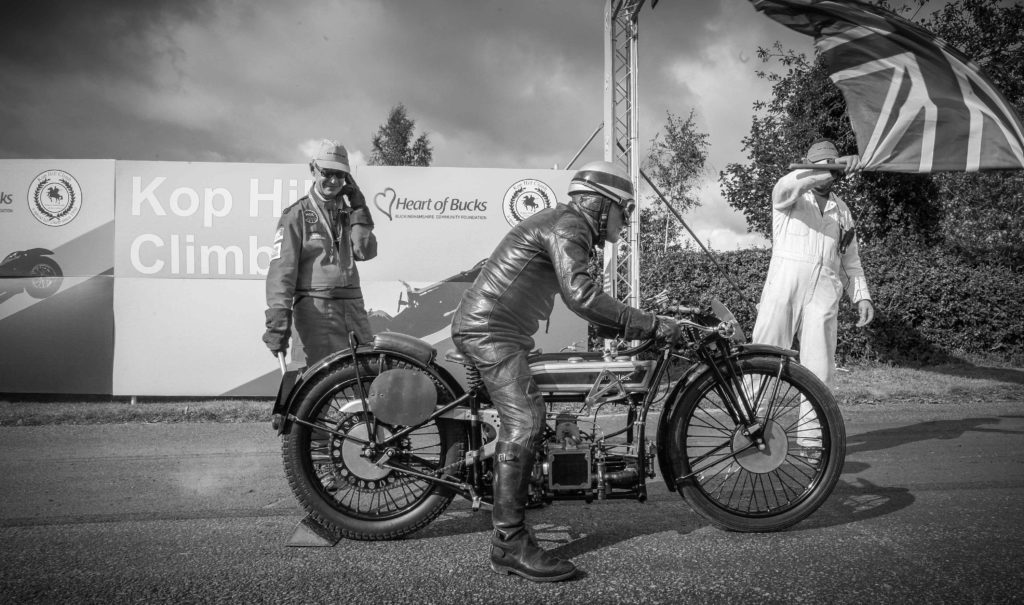
It has another claim to history, too. When in 1925 a spectator (who had been warned about standing too close to the action) was hit by a competitor’s car, the road-safety and political classes increased their opposition to motorsport events taking place on public roads, even if closed to traffic. The British establishment has been called a ‘committee which never meets’ and soon its various arms - by then including the governing bodies the Auto-Cycle Union and Royal Automobile Club - closed ranks and stopped all competitive riding or driving in the UK outside of purpose-built circuits like Brooklands.
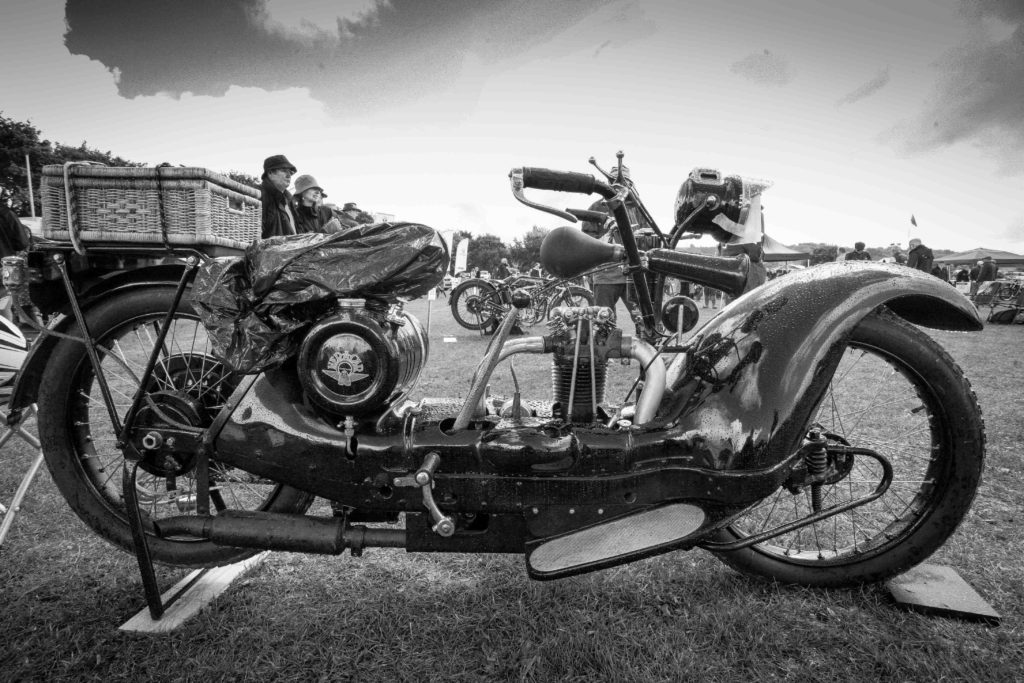
Kop Hill’s closure in 1925 was a victory for a vocal anti-motorsport lobby in the UK. The Isle of Man TT races were established in 1907 because the Manx government took a more indulgent attitude towards racing than the rest of the UK. And the famous British racing green of pre-war Bentleys, and later Jaguars and Aston Martins, owes its adoption to mainland drivers and team managers racing in Ireland. The famous Gordon Bennett Cup had moved there as early as 1903, leading the local paper the Leinster Leader to note excitedly that Ireland would be ‘the battle-ground on which to decide the supremacy of the latest inventions to revolutionize locomotion.’ British lawmakers looked the other way and British teams took on the green of Ireland as an act of thanks, tribute and rebellion.
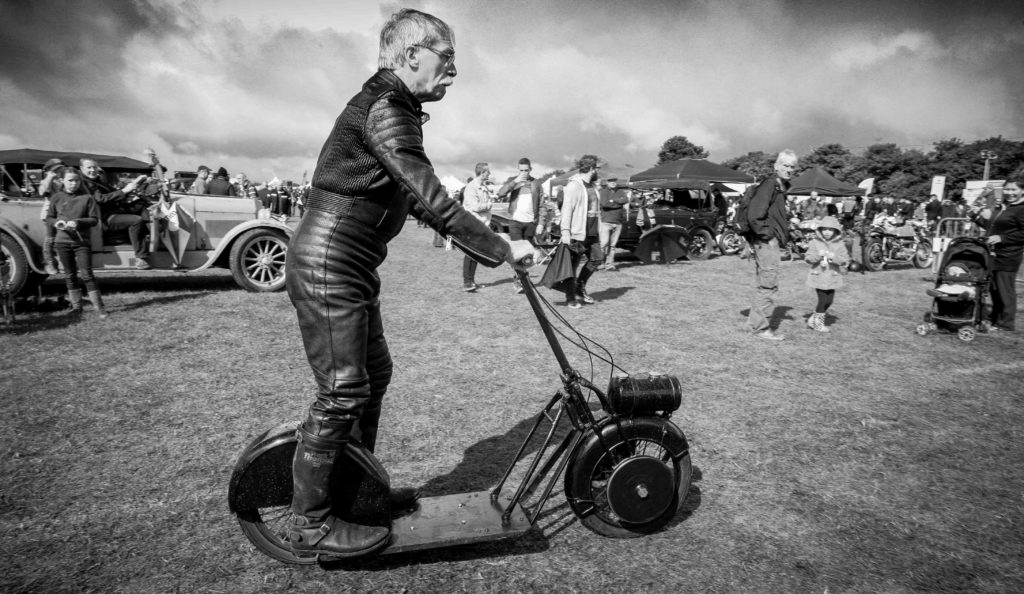
Since 2009, local enthusiasts have staged runs up the original Kop Hill for a cadre of mostly pre-1950 cars and bikes, with the numbers and quality of the vehicles increasing every year. Demonstration runs, of course, but amongst the open tourers with children nestled in the back (one was spotted happily asleep in an Alvis as the car headed off the start line), several hit high speeds from properly brisk take-offs. Unlike the short, sharp ascent of Brooklands’ Test Hill, here riders and drivers can charge through gearboxes and navigate the narrow lane, building speed all the time. The big shots turn out too: from the modest grandstand or watching from feet away along the length of the hill, spectators can see, hear and breathe-in Bentleys, Rolls Royces, Bugattis, Brough Superiors, Rudges, Vincents-HRDs gunning up a hill which is both longer and – should you wish – faster than you expect.
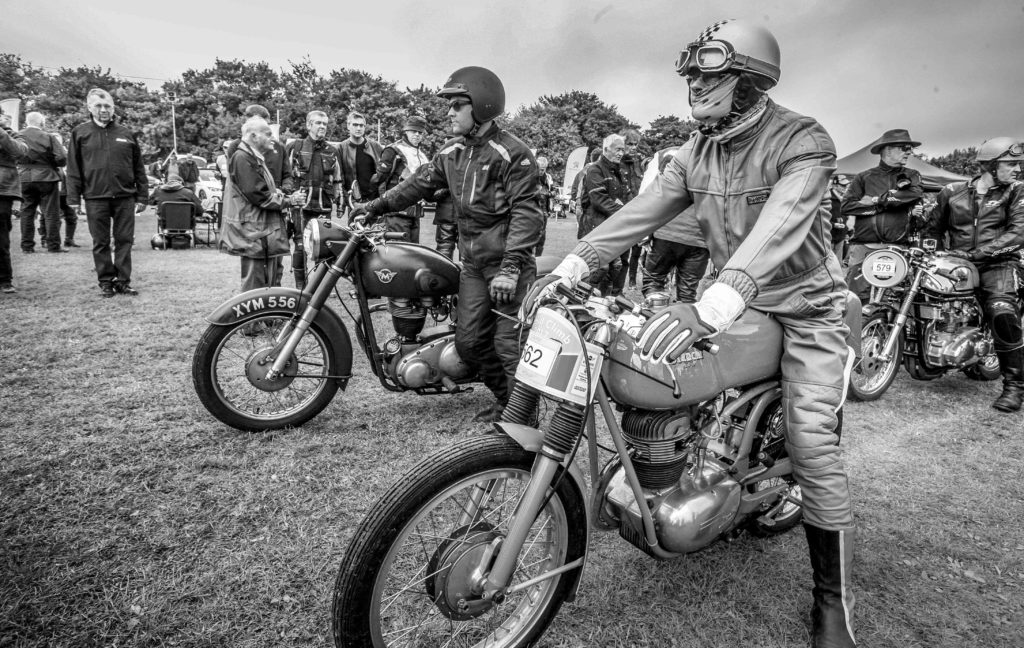
Proceeds from the two days of the September weekend go to the Heart of Bucks Community Foundation and since 2009 over £400,000 has been distributed to local charities. It’s all rather wonderfully British: a little chaotic at times, polite, run by dedicated amateurs. But it has an air of informality and stubborn democracy, in contrast to more rigidly organized events. As a result, Kop Hill retains a perfume of authenticity, redolent of the Century-ago pioneers of competitive motor-sport.
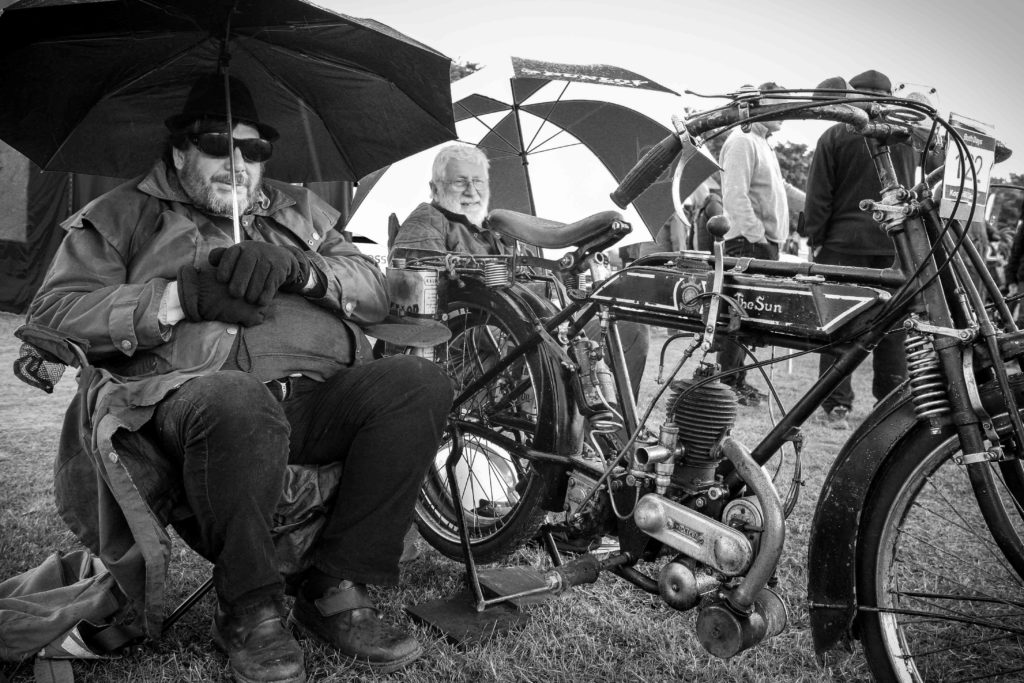
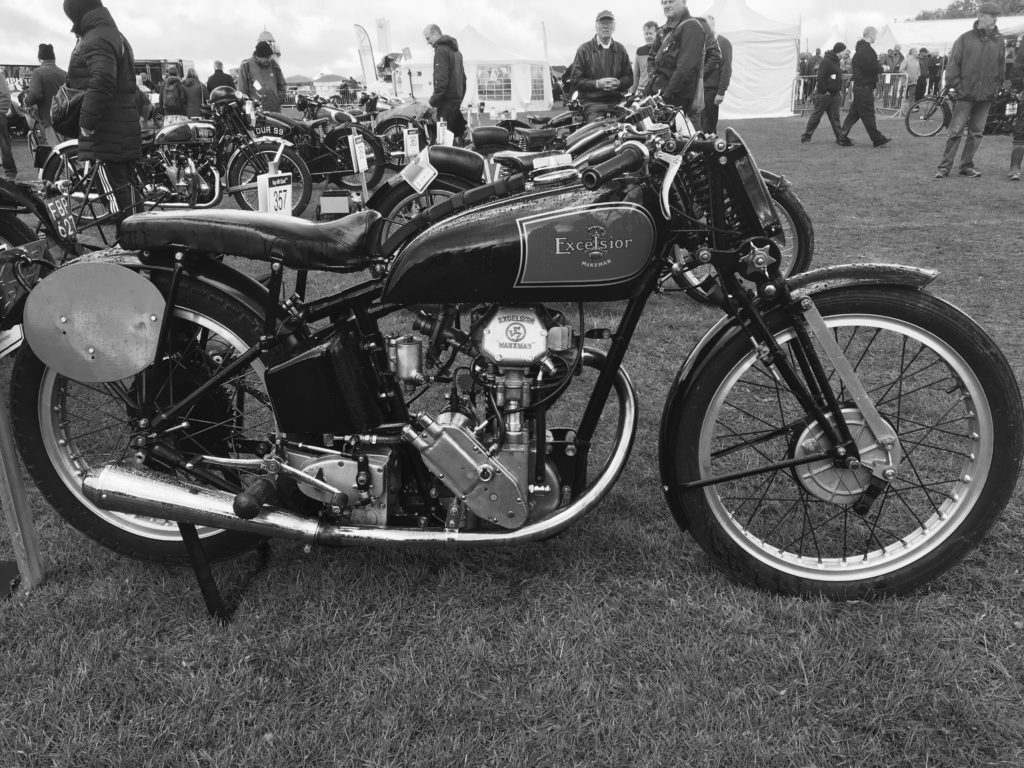
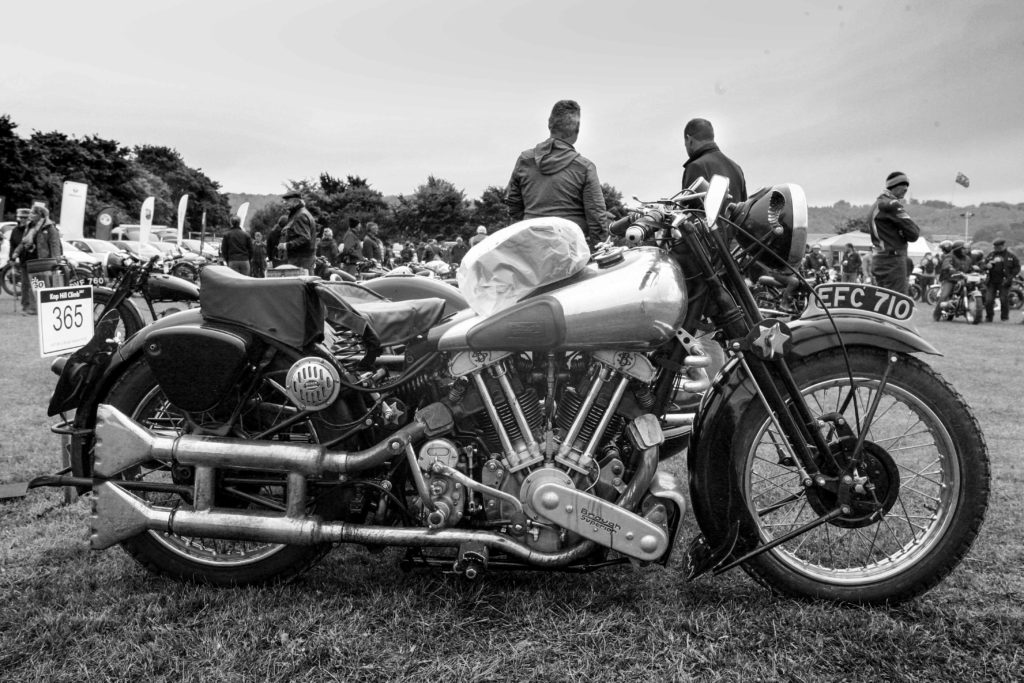
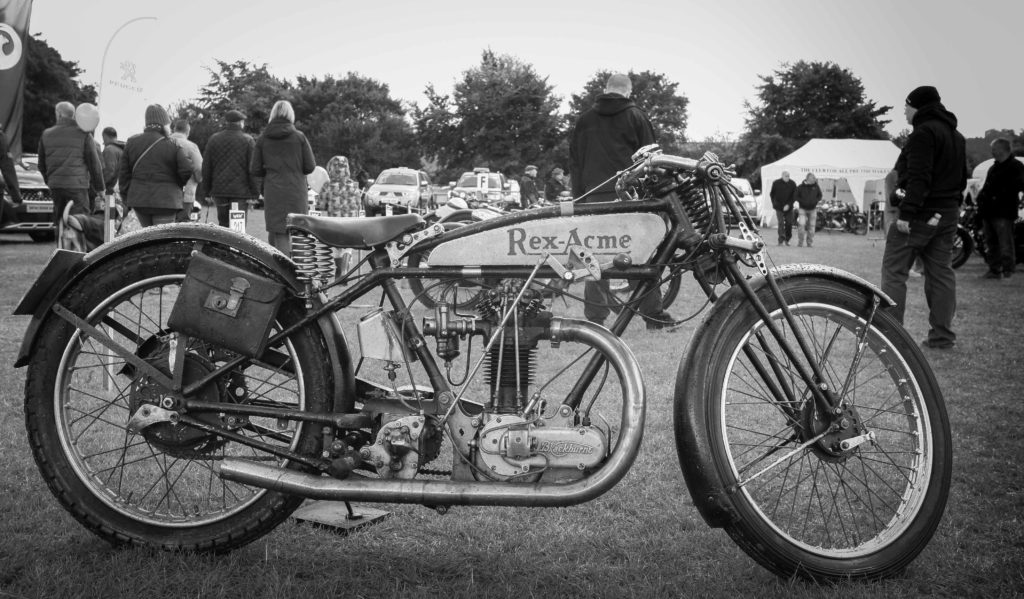
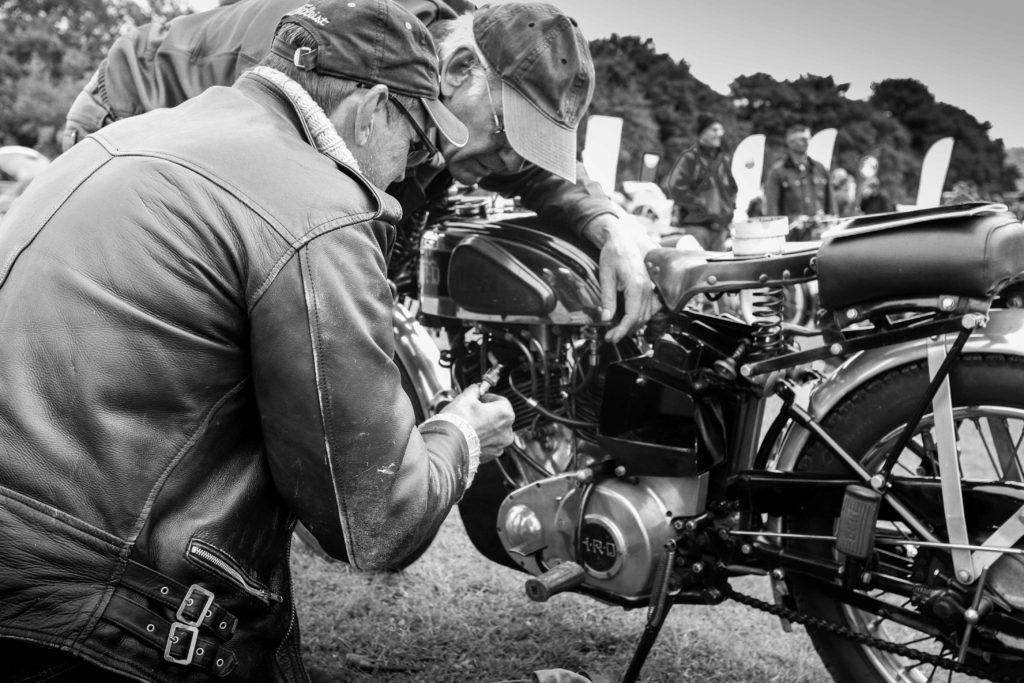
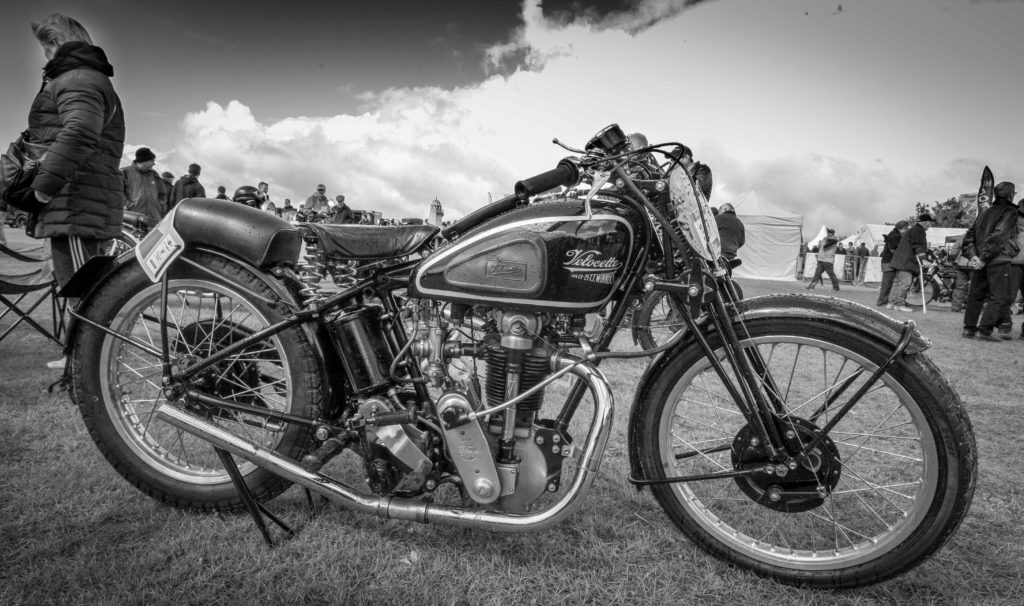
[For more history of Kop Hill, read this]
Showman in a Suitcase - Putt Mossman
[Words: Chris Illman]
Some 20-odd years ago, whilst browsing a Junk Shop in Greenwich (southeast London), I found a very scruffy suitcase gathering dust, filled with a pile of old newspapers. Closer inspection revealed some interesting stuff, including a mountain of photographs of pre-WW2 Speedway racing – a particular passion of mine! That set the heart racing; without wanting to appear too eager for fear of escalating the price, the obvious question was asked - “How much for this old suitcase full of Newspapers?”. The welcome retort was “Give us a fiver!”
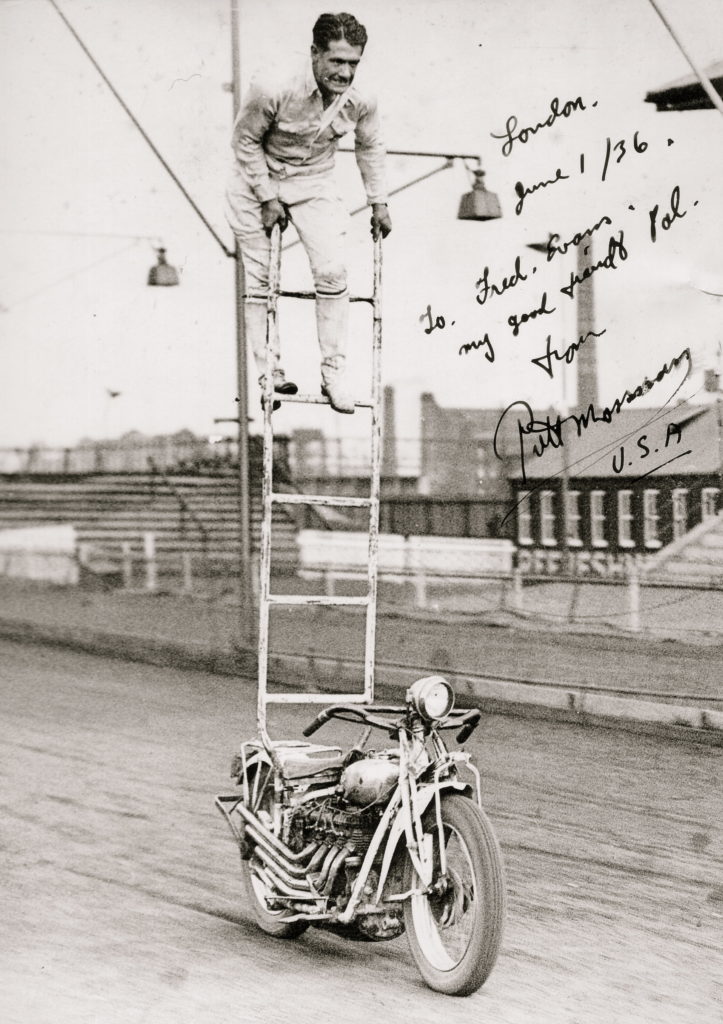
My anticipation was agonizing during the drive home, as there was no way to properly assess the contents of my prize until they could be spread out and sifted through. That humble suitcase revealed a treasure trove of material related to just one man; Frederick Lindop Evans. Fred Evans was the Manager of Hackney Wick Speedway team, and it quickly became clear that the case contained personal effects from his time as Hackney ‘Wolves’ Manager, covering the period 1935 until the outbreak of the 1939-1945 conflict in Europe. Fred Evans survived the War, but apparently he was never reunited with his treasured possessions, which remains a complete mystery. To relate Fred’s story and explore the entire contents of the suitcase is beyond the scope of this post, but after years of dipping in and out of the thousands of items, many stories emerge.

And this is where Oren 'Putt' Mossman comes into the story. Putt was born in Iowa, USA in 1906, and traveled the world as a stunt rider, midget car racer, boxer, actor, and all around carny and showman. Fred Evans was great friends with Putt! During these Pre-War years, Speedway in England was big; indeed for a while, it was Britain’s top spectator sport. Fred and Putt shared much in common. The most significant pattern to emerge is a shared obsession with ‘Self Publicity’. As well as the obvious Speedway connection, they both loved to play Golf and as it happened, Fred was a member the exclusive Chorleywood Golf Club in Middlesex. From Fred’s diaries it seems that whenever Putt was in London, they tried to fit a game in at least once a week. Given that Fred and his Hackney Team were touring the Country at least 5 nights a week, where they found the time is beyond belief, as Putt’s schedule was probably just as hectic!
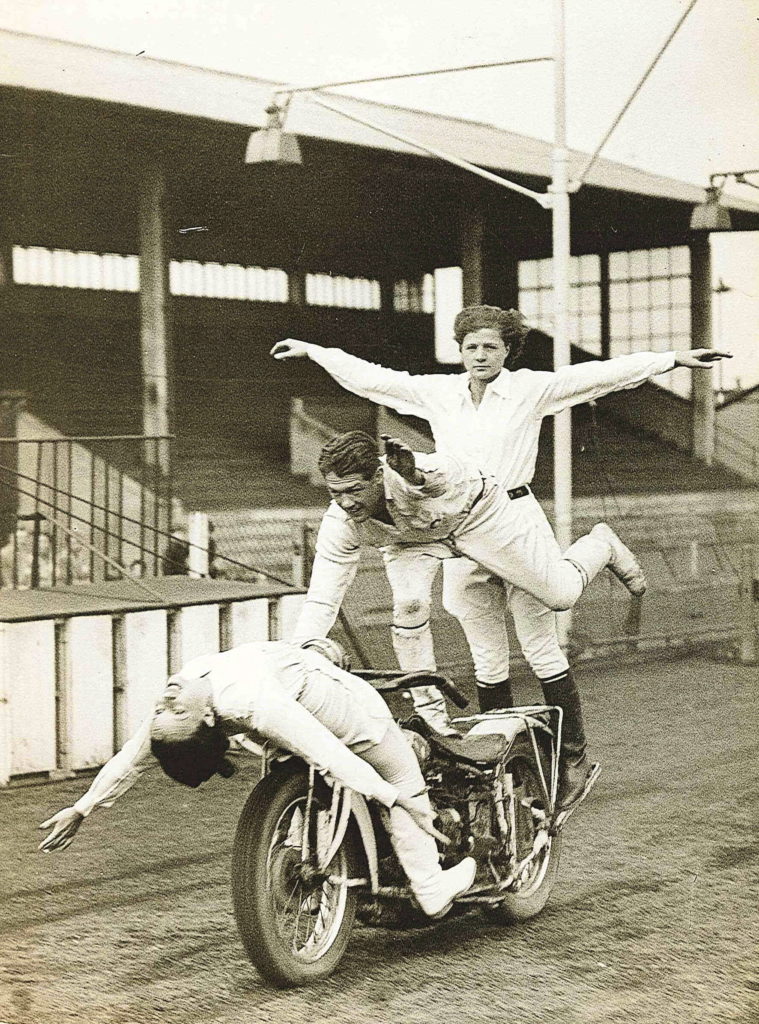
On occasions their schedules didn’t work out - see the note from Putt, with his wonderful Letter Headed paper proclaiming his achievements - saying sorry that golf would not be possible on July 17, 1938. Both appear to have been accomplished Practical Jokers, if examples of the outrageous tricks they played one another and on the Hackney Riders are anything to go by! Showman Putt needed an opportunity to present his exploits to big audiences, and it seems that our Fred was also keen to make the most of the large attendances at Hackney by adding new attractions to his Speedway meetings. The synergy was obvious and Putt’s Stunt Show fitted the bill perfectly for the intervals. The Hackney Wick crowd was already huge, but the added attractions swelled the gate, giving a mutual benefit to both parties. Putt of course would go on to spend a great deal of time in England, and his schedule of shows defies logic. My god, he must have had some stamina!
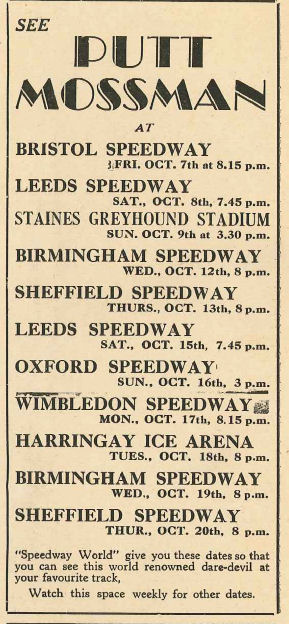
A quick glance at the attached Press Cutting (above) will show how he managed to pack in more than 11 shows across the country in just 13 days - it is said that he once did 100 shows in England in just one year. Given his propensity to push himself to the limit and beyond, he had terrific self-confidence, not allowing himself the luxury of a few days recovery should he tumble (and tumble he did it appears, on many occasions!).
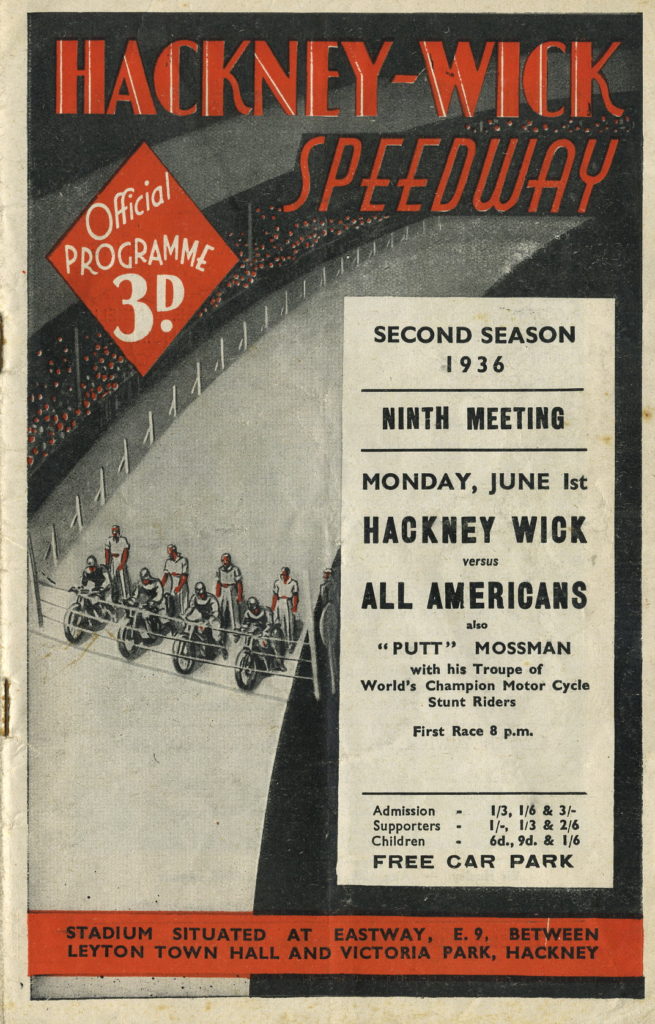
As well as the Stunt Shows, Putt was a Speedway rider of some note, and appeared with the American team on a regular basis. A photograph of the Tram outside the famous Hackney Empire Music Hall and Theatre, clearly expresses the sentiment that ‘It pays to advertise’. Wonderfully evocative of pre-war London, it encapsulates the Mossman/Evans connection via a banner promoting an American Speedway Team vs. Hackney Wick match. The photo of Putt in full ‘Leg Trailing’ mode not only demonstrates his skill as an accomplished Speedway rider, but shows him casually wearing a pullover and a tie!
During one of his many visits to Britain, Putt participated in the 1938 Isle of Man Lightweight TT, on an OK Supreme. Sadly, he did not finish, falling at the 33rd Milestone and suffering a serious arm injury. As if to wear his failure as a glorious Badge of Office, he printed up the Post Card below, which, like so many of the others found in the case, is personally signed by Putt to Fred Evans.
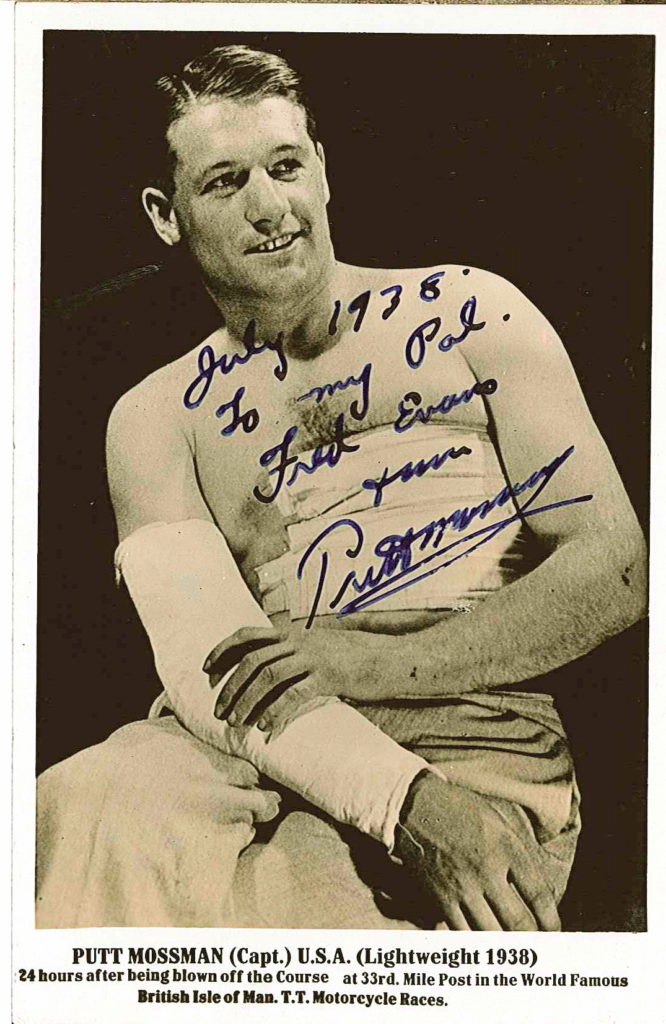
Incidentally, whilst on the subject of the Isle of Man, it is a little known fact that Putt also did the Stunt Riding for the iconic film ‘No Limit’ that starred George Formby as a TT Rider which was actually shot in the I.O.M in 1935. Among his stunts, perhaps one of the most dramatic was staged at the Hackney Wick Stadium. A makeshift scaffold was erected, and a ramp descended from the top of the Grandstand, sweeping down to a take-off ramp, where Putt was propelled though the air to land in 15” deep pool of water. As if this feat was not daring enough, the pool of water was topped off with burning petrol! Although the leap was a spectacular success from the crowd’s perspective, personal recollections of a spectator reveals that a heavy landing resulted in a broken and bloody nose for Putt. In true showman’s spirit, he completely disregarded his injuries, picked himself up, and rode a lap of honour, to the great acclaim of the assembled masses.
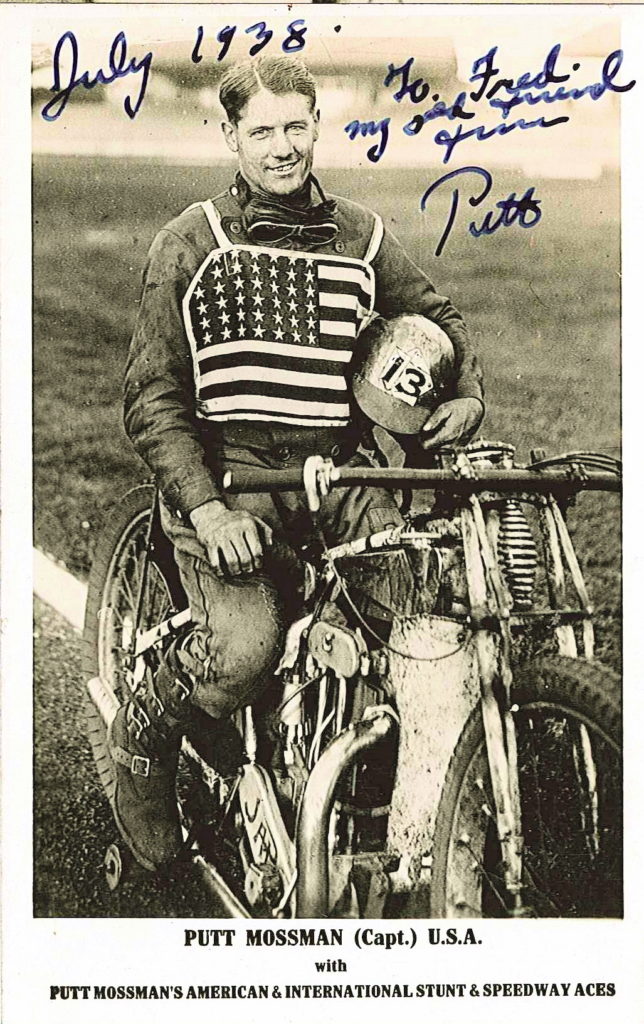
Although well known for his Ladder Walk, the top photo in this article, which has been published on several occasions I believe, is again rather special as it is personally signed and dedicated ‘To my good friend & Pal, Fred’. The bike incidentally, is an Indian 4-cylinder job, with an amazing exhaust system! It was an expensive machine then; I wonder where it is now? These images are a small selection of the treasures associated with Putt that came from this wonderful goldmine of Pre-War Speedway ephemera. Stunt Riding was effectively a ‘Part Time’ job for him; amongst other things, Putt was, or had been, a Speedway Champion [Japan 1936] a Champion Shoe Thrower [Horseshoes], Midget Car Racer, Boxer, Baseball Player and Vaudeville artist. His public swan song was an appearance on the Johnny Carson Show, pitching horseshoes between Johnny's legs! What a man.
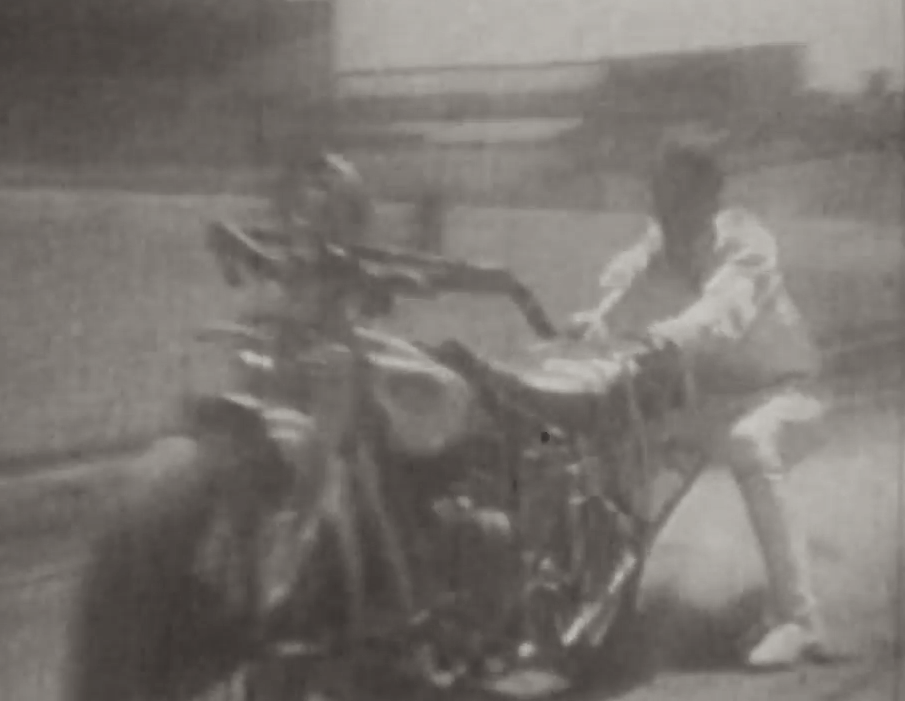

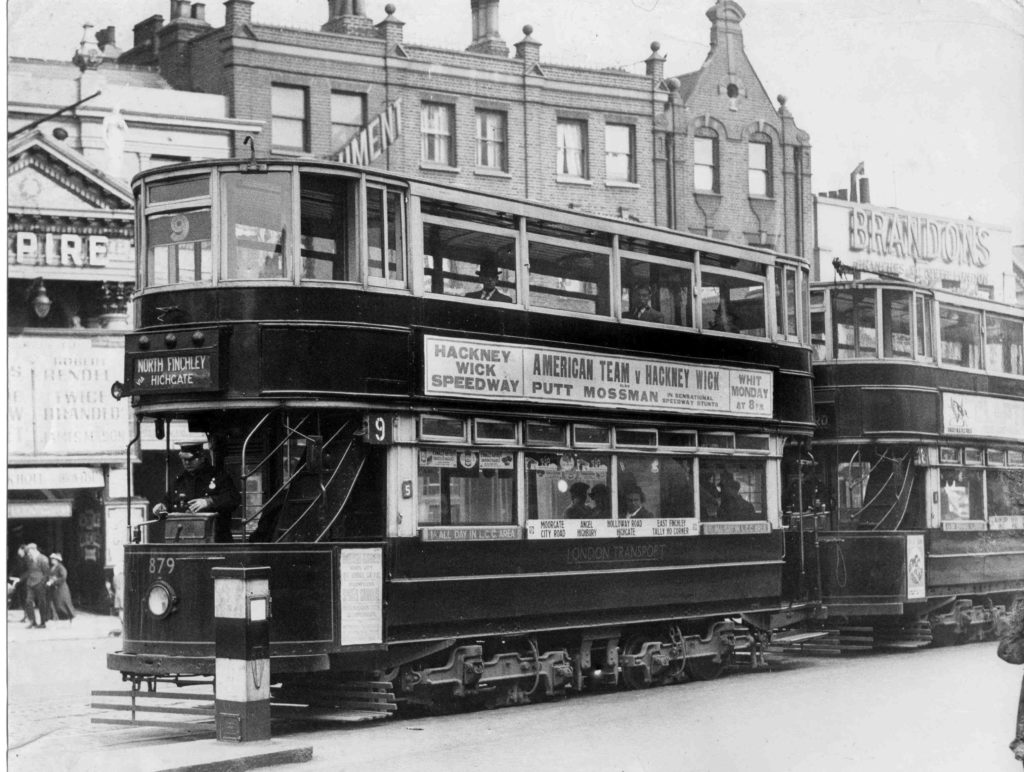
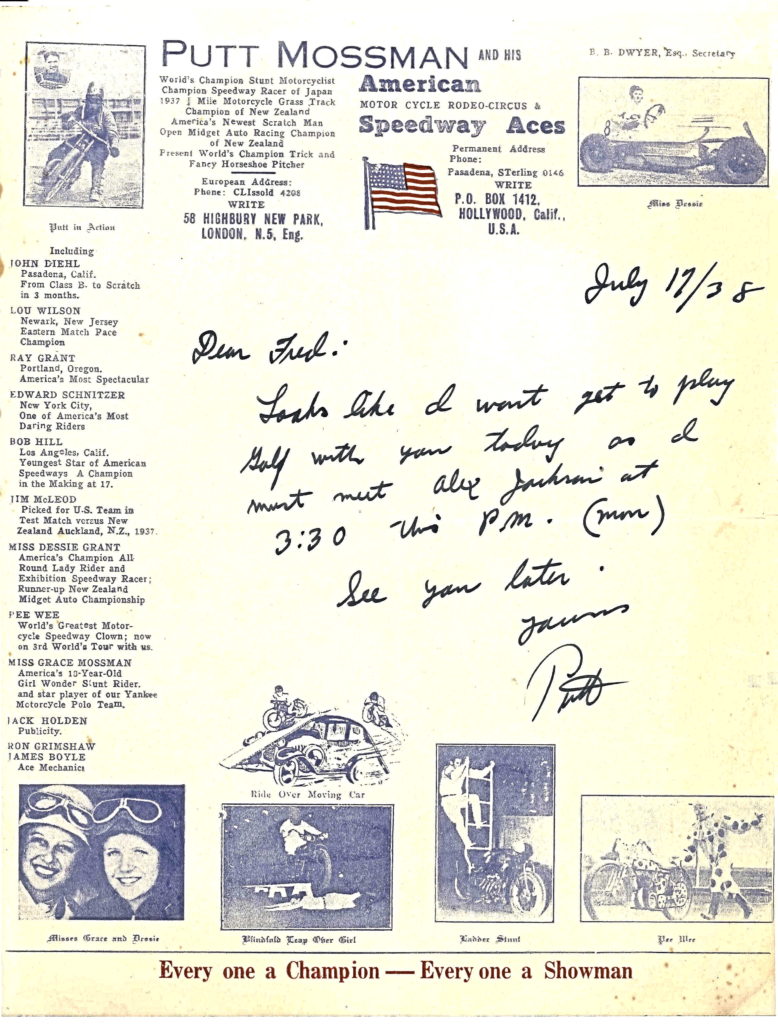
Book Review: Harley-Davidson Book of Fashions
Rin Tanaka has outdone himself. The master of books on vintage clothing has published the definitive history of American motorcycle gear, 'Harley-Davidson Book of Fashions: 1910s - 1950s', after he was given rare access to the Harley-Davidson Museum and Archives, with their over 100,000 photographs spanning their entire history from 1903 to the present. H-D was one of the first motorcycle manufacturers to hire professional photographers to document their progress, and kept photographic and documentary records of their various lines of accessories which they offered from 1914, along with the entire run of The Enthusiast magazine and contributions from various dealers, clubs, and race promoters.
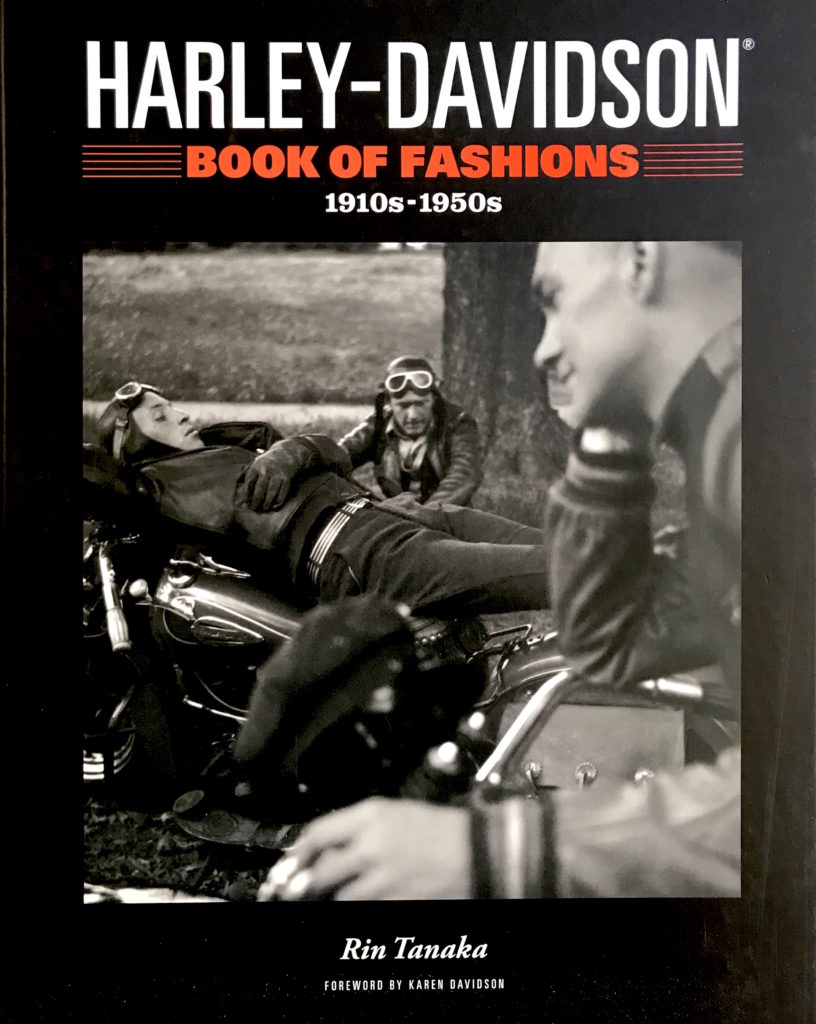
With access to this vast array of totally cool stuff, Rin couldn't fail to make an outstanding book. His self-published specialty has been a series of obsessive picture books documenting, in chronological order, various styles of motorcycle jackets - Motorcycle Jackets: A Century of Leather Design and 'Motorcycle Jackets: Ultimate Bikers's Fashions (Schiffer Book for Collectors)
' - and helmets ('The Motorcycle Helmet: The 1930s-1990s
'), t-shirts (My Freedamn! 3, 4), etc. He was also granted the rights to publish recently found documentation (photos and film) of Steve McQueen's foray into the ISDT, which he published as '40 Summers Ago', which I can't recommend highly enough - you can purchase Steve McQueen 40 Summers Ago....Hollywood Behind the Iron Curtain (Cycleman Books)
here.
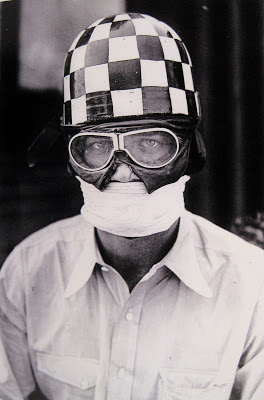
One doesn't really think of 'Fashions' per se when the name Harley-Davidson comes up, but Tanaka makes a compelling case that their extensive line of Motor Clothing, produced for the last 90-odd years, has made a sartorial impact far beyond those who simply ride H-D motorcycles. The book, which is large format (11" x 14") and beautifully printed, moves between official publications / catalog photos, and shots of contemporary riders actually using the purpose-designed clothing and accessories in races, club events, official business, and the military. Each chapter focuses on a decade (1910s, 20s, etc), and shows the evolution of 'gear' as motorcycling itself changed and conditions demanded new and better products. He also explores how customization of clothing (and by implication, the bikes too) developed from various small accessories into the blaze of custom culture in which we now live.
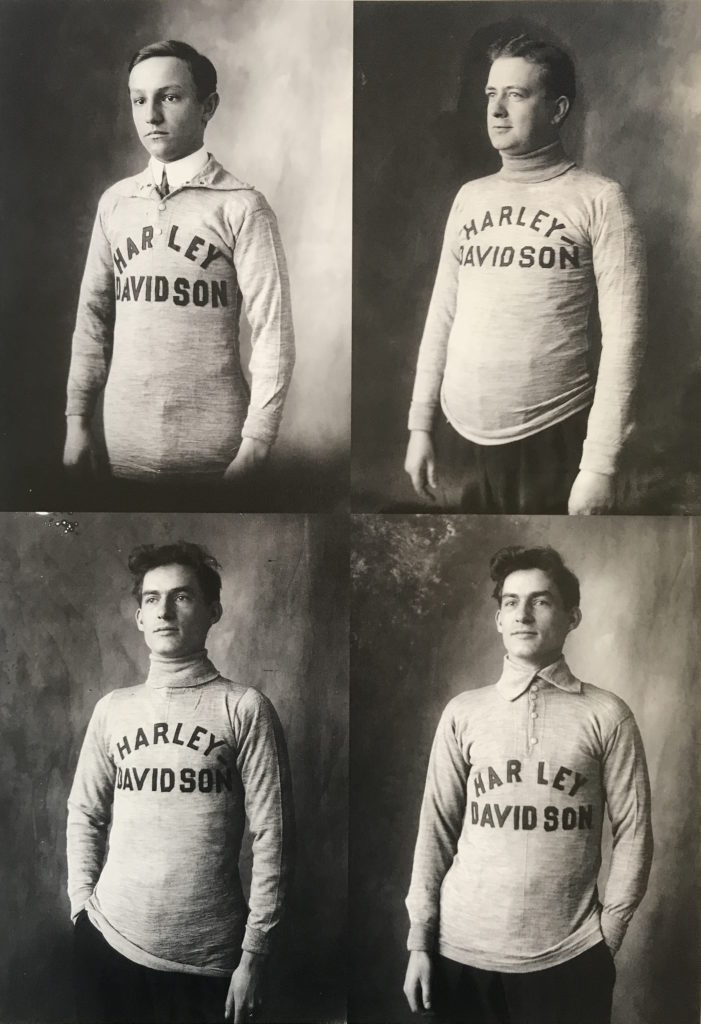
The 600 photographs are luscious and beautifully reproduced, and lots of surprises turn up, such as this 'Harley' Board Track racer which uses a Cyclone engine with one cylinder blanked off! The photographs are gorgeous, and Tanaka has chosen mostly never-seen shots from the Archives. Tanaka knows his vintage motorcycle gear history, and has the eye of a designer laying out the book. The copious images are clearly the point of the book, and the text is minimal - there are times when a bit more exposition would be welcome, but in truth I imagine that few people have a total grasp over the enormity of the Archive and all the details represented. The first edition print run was 10,000 copies - huge by motorcycle book standards, but with H-D attached to the project, I imagine this book will require further print runs.
Purchase Rin Tanaka's outstanding Harley-Davidson Book of Fashions 1910s-1950s here!
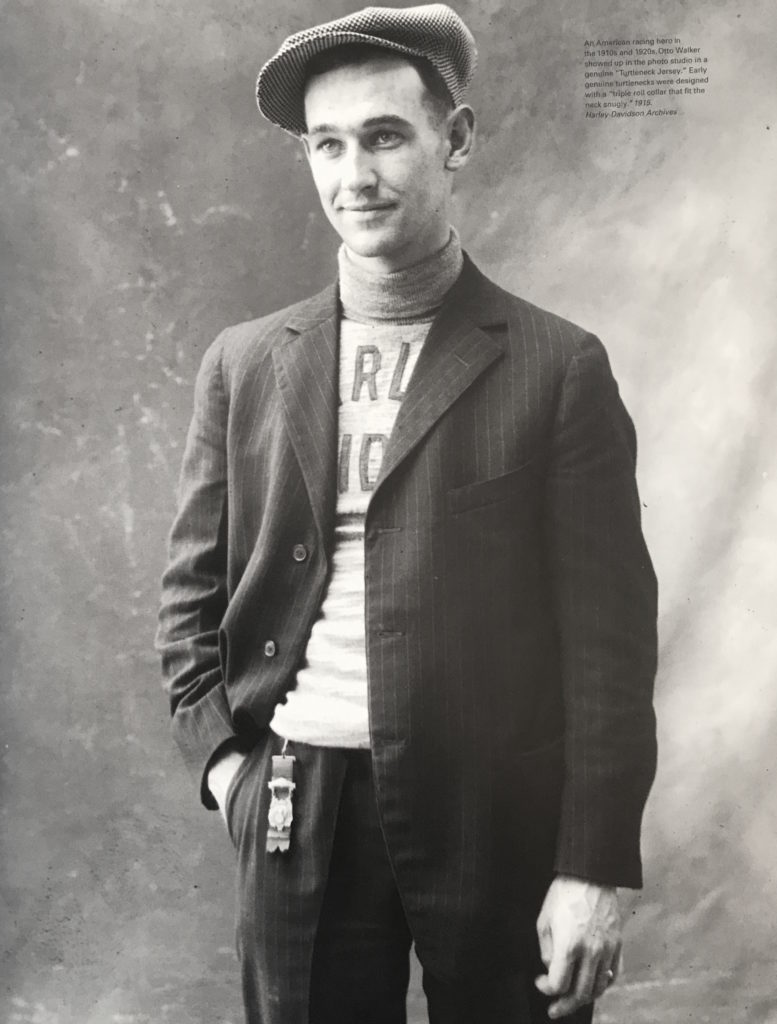

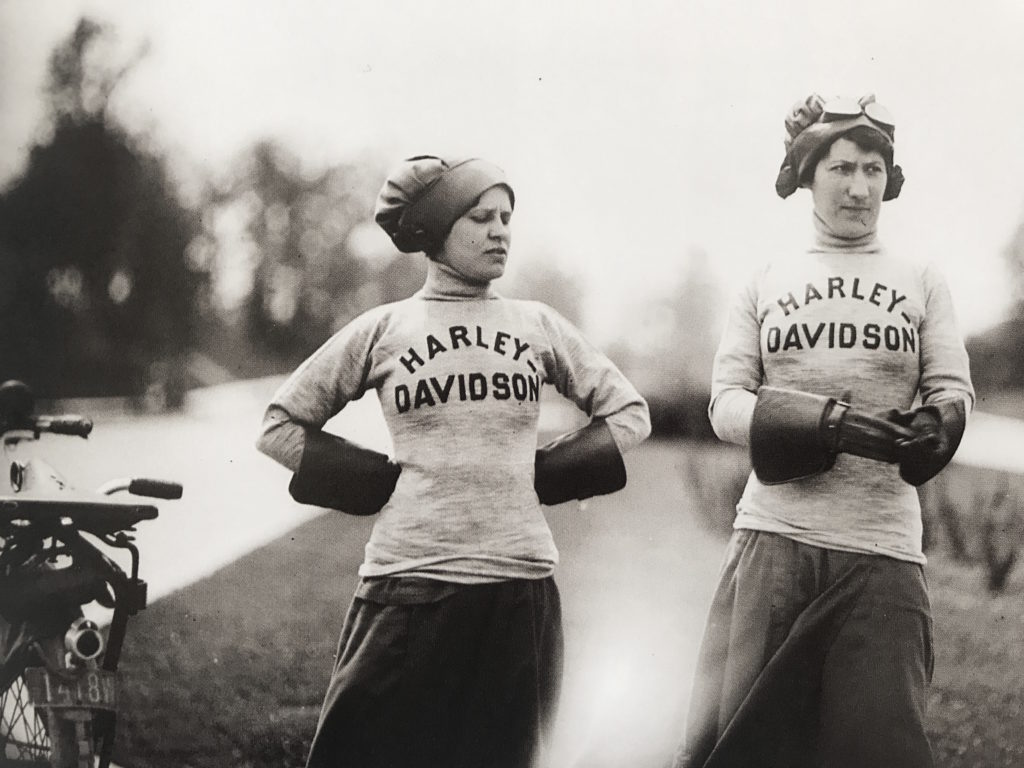
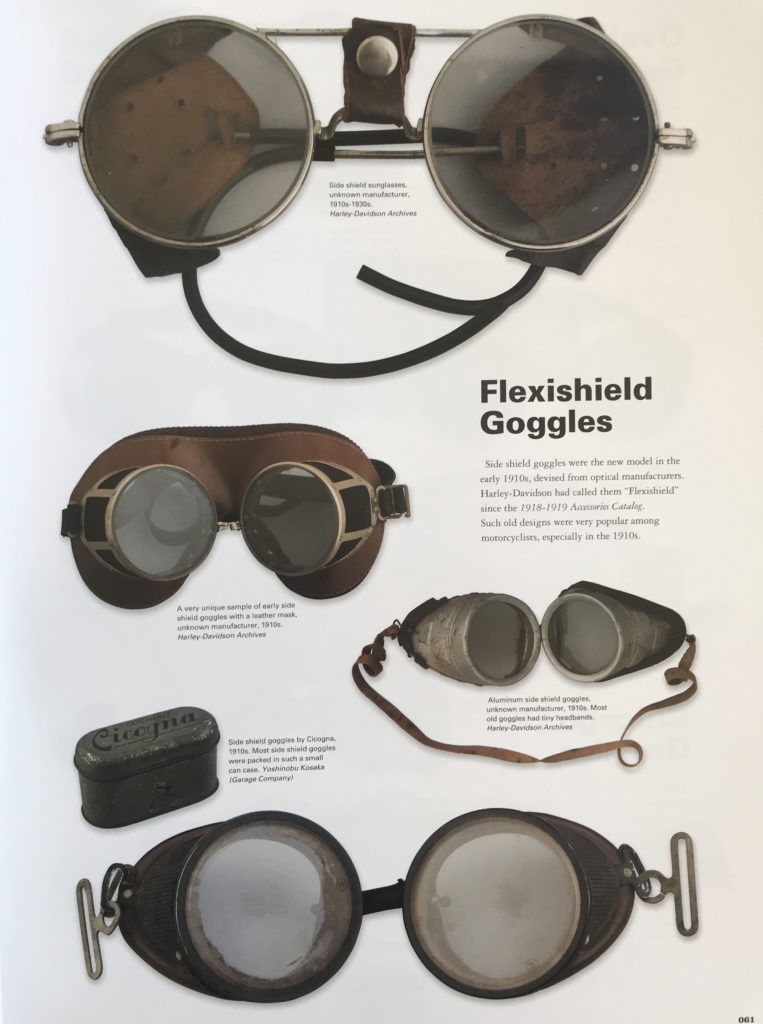
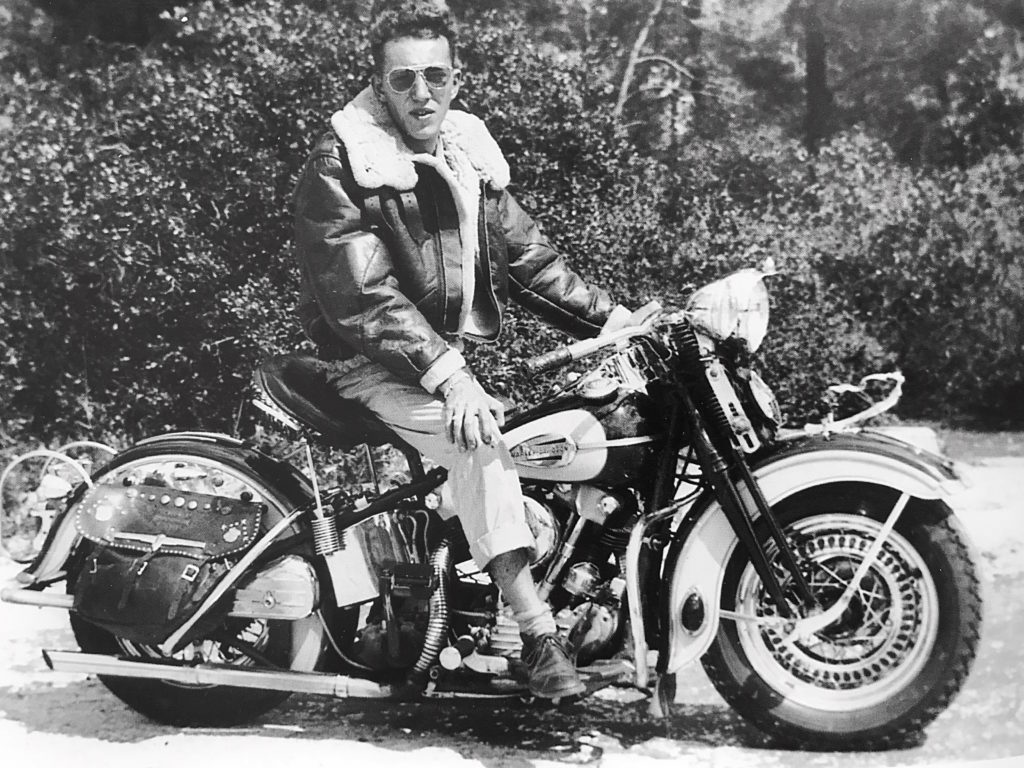
Road Test: 2010 Falcon Kestrel
The Vintagent Road Tests come straight from the saddle of the world's rarest motorcycles. Catch the Road Test series here.
Sometimes a scoop is a whispered favor; sometimes you grab it with both hands and run. I had the great luxury of spending a weekend in the company of the Falcon Motorcycles team; the Bullet, the Kestrel, Ian and Amaryllis, a talented trio of fabricators from Falcon, and Leif who built up the engine, at the Quail Lodge for the Motorcycle Gathering. I've had the rare opportunity not only of having (well, hijacking) the first real ride on the Kestrel, but of watching the entire process of its development from a sketch through 'wouldn't these parts look cool if I mated them this way' to firing up the bike and easing the clutch home.
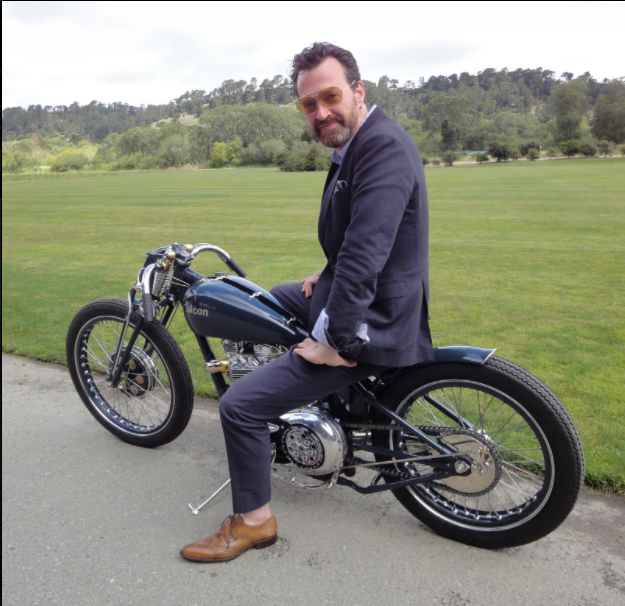
When I first saw the Bullet while judging at the 2008 Legends, I thought it was a well-executed Custom, worthy of praise, and thus tolerable to a Vintagent who had little interest in the genre per se, but certainly an appreciation of good workmanship and passion. The Kestrel is different. Ian Barry has shown there is Vintage blood running in his veins, plus something else, but I'll let history name that. Mark my words, it will. I'll stake a claim here and now that the Kestrel has broken out of the Custom shell, and has become something completely new. This man and his team made a Motorcycle the world will have to reckon with.
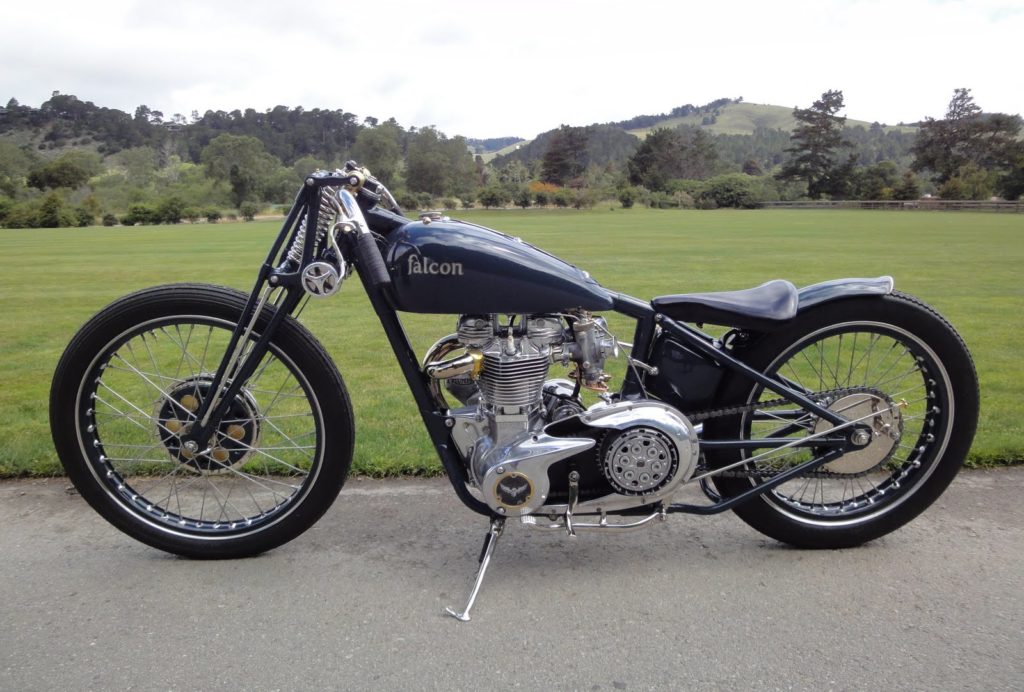
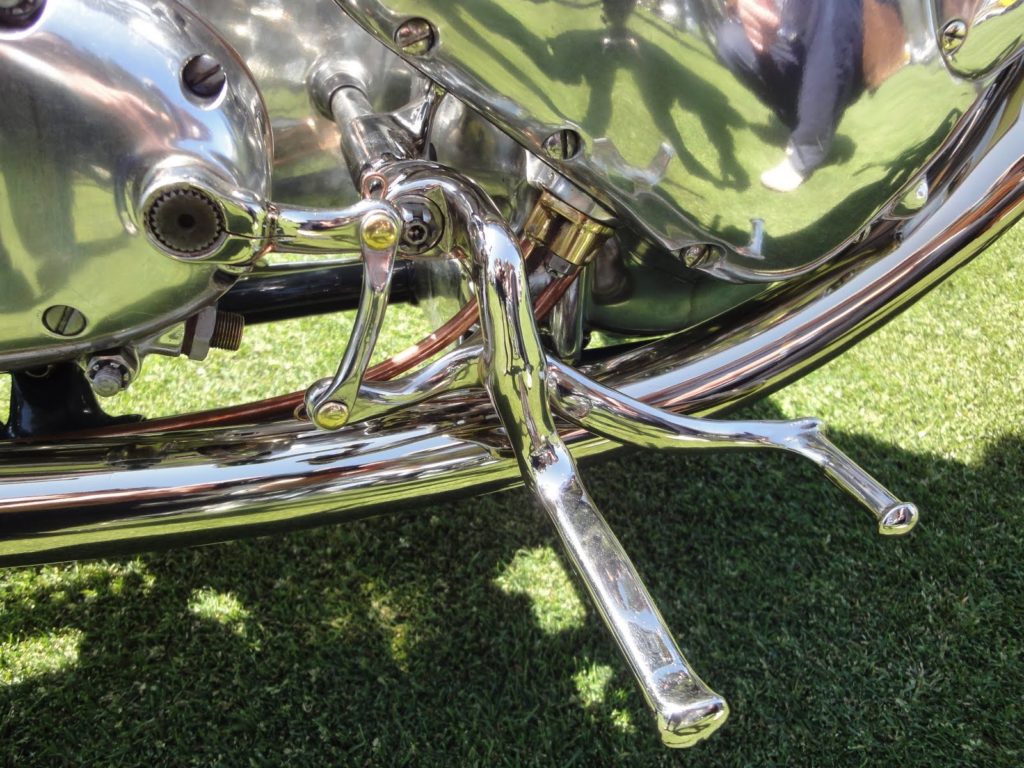
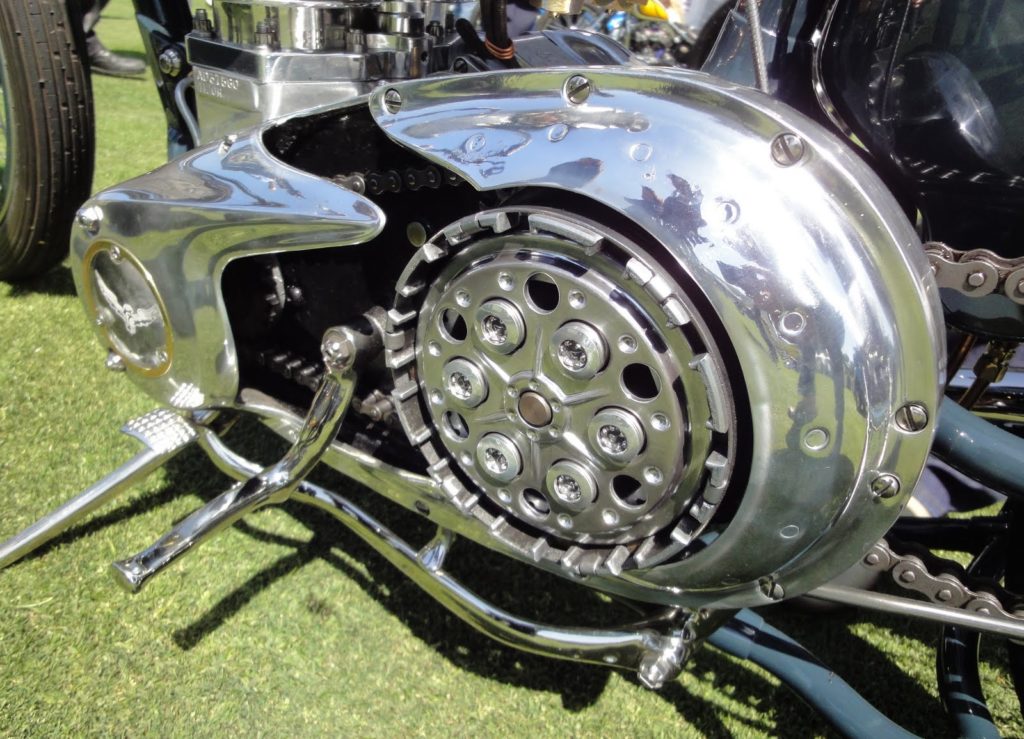
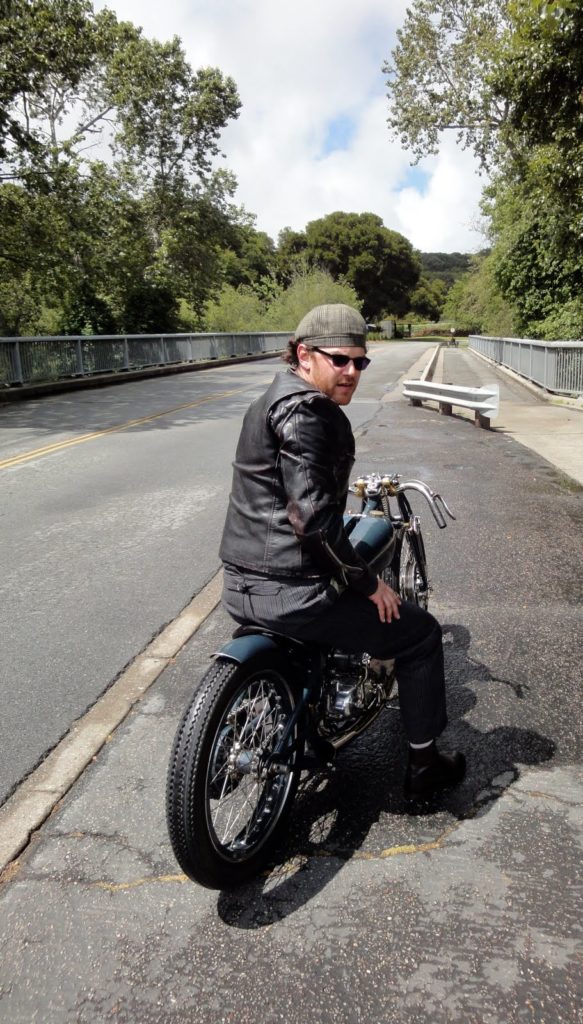
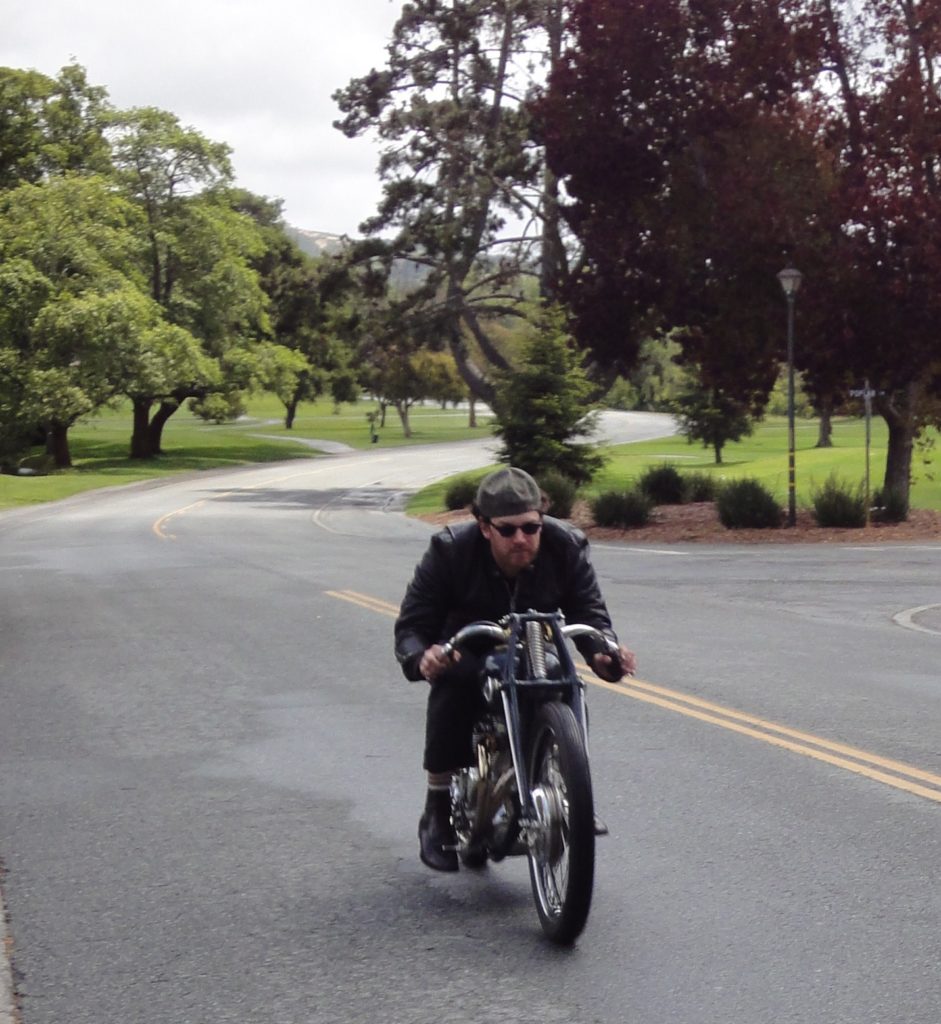
So I spent more time with the Kestrel, and each time I looked I found something new. A funny little gearbox adjuster, with positive stops and a brace to prevent any axial play. An internal throttle which exits through the end of the clip-on handlebar, with a knurled cable adjuster fixed unobtrusively in place. The little locking levers on top of the TT carbs, which adjust the idle speed. The brackets which hold the two pannier tanks together, which are...turnbuckles... and adjustable to be sure the tanks will fit together just so. An articulated shifter mechanism which mimics the fine bones of the inner ear. And gradually, I was awe-struck.
https://www.youtube.com/watch?feature=player_embedded&v=m7OIpIJcjpA
The Kestrel isn't a first-look or a ten-foot motorcycle, it's a third look machine, or a fifth. Like a work of fine art, it needs to be lived with to soak it in. It rewards time with time, those thousands of hours spent on its creation slowly leak back out, if you let them. It's a monumental achievement, and among the most beautiful two-wheelers ever made.
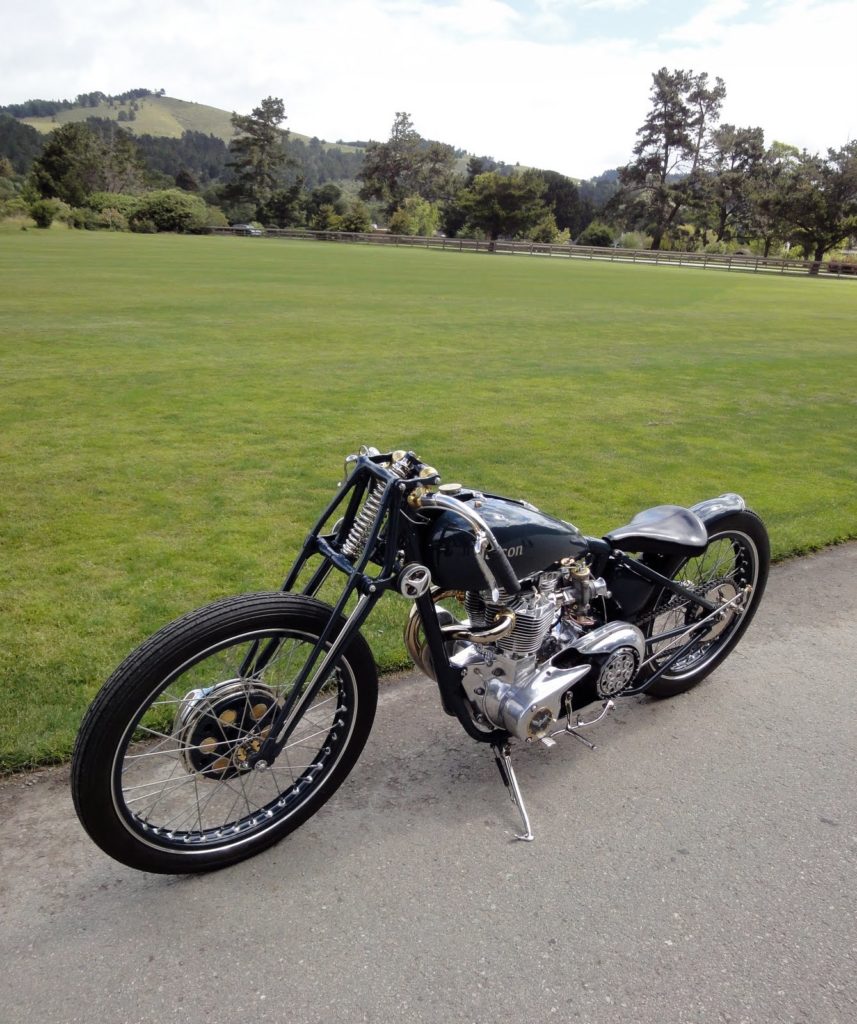
https://www.youtube.com/watch?feature=player_embedded&v=HbWuxy8K4q8
Does it work? Or like Mona Lisa, is it a lovely work of Art? I had reconnoitered the field access a bit earlier by riding my late-entry (ie, no entry, and at noon) '28 Sunbeam TT90 from the street onto the lawn, and thank you Courtney Porras for telling Quail security that I could 'do whatever I want'. Give a man an inch! Thus I knew it was perfectly possible to ride the bike straight from the grass to the road, and nobody would stop me. Up the grassy slope - road clear - and off I went, first right, to all smiles from the hundreds of motorcyclists parked up along the street, and back again to the left, where the highway beckoned.

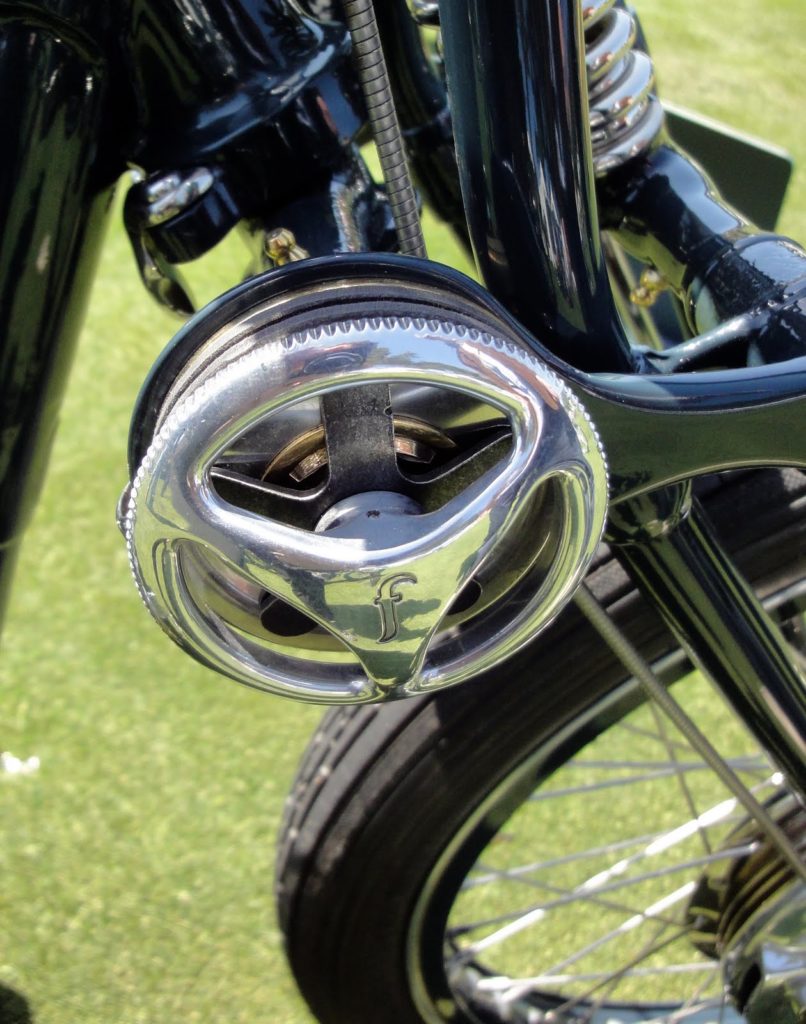

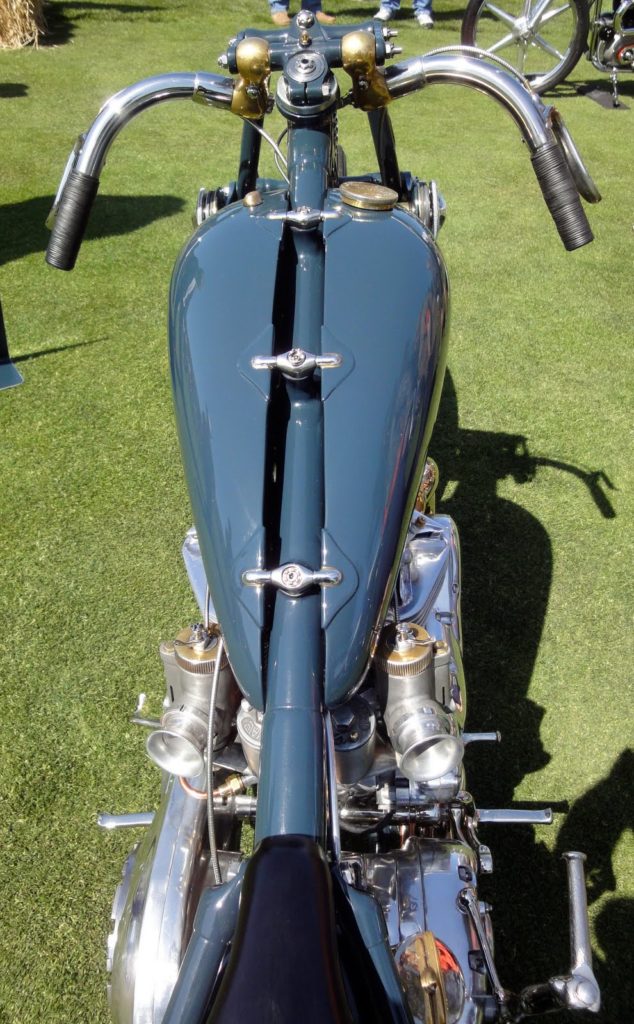

Atlanta's 'Black Streaks'
[Words: David Morrill]
Beginning in the mid-Teens, factory racing teams from Indian, Harley-Davidson, and Excelsior fought a hard battle for dominance on the board- and dirt-tracks around the country. Great riders like Gene Walker, Shrimp Burns, Otto Walker, and many others made their names riding for either the Indian 'Wigwam' or the Harley 'Wrecking Crew'. The bikes they rode were little more than bicycles, with powerful V twin engines, and no brakes. Motorcycle racing was a major spectator sport and drew tens of thousands of spectators across the country.
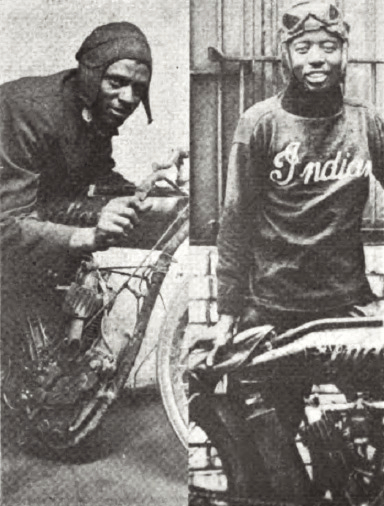
with their Indian Racers - Atlanta 1924
In Atlanta, another group of racers sought fame and fortune, whose story today is virtually unknown; these black riders had colorful nicknames like Hall “Demon Wade” Ware, Horace “Midnight” Blanton, and “Bones the Outlaw,” who raced each other at Atlanta’s Lakewood Speedway from 1913 to 1924. They didn't have the latest factory racing bikes, and their racers were often cobbled together with obsolete parts from the scrap piles of local Harley and Indian dealers. They were known as Atlanta’s 'Black Streaks' and while their races were covered by the national motorcycle press, the articles reflected the racial prejudice of the day, such as a 1919 Motorcycling and Bicycling article titled “When Dinge Met Dinge in Georgia"; the text was even worse.
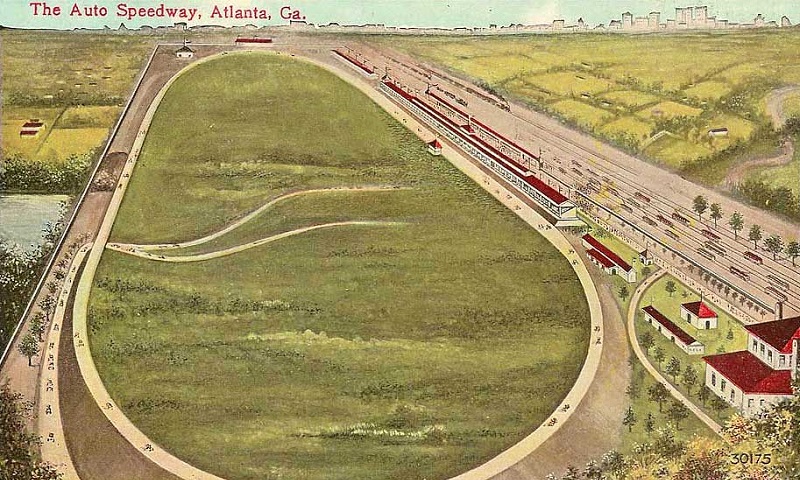
In 1909, Coca Cola founder Asa Candler opened the Atlanta Speedway on what is now the site of Hartsfield-Jackson Atlanta International Airport. The two-mile oval track featured an asphalt and gravel racing surface, which was modeled after the recently opened Indianapolis Speedway. Motorcycle races (for white riders) were held there beginning in November 1909. The first mention of a motorcycle race for black riders appeared in an Atlanta Constitution article concerning events held at the Speedway on Labor Day, 1913, by the " Atlanta Colored Labor Day Association." The race featured a black automobile racer, "Hard Luck" Bill Jones, who had recently switched to racing motorcycles. The race results appeared in a later Constitution article on Jones; John Sims on an Indian was the winner.

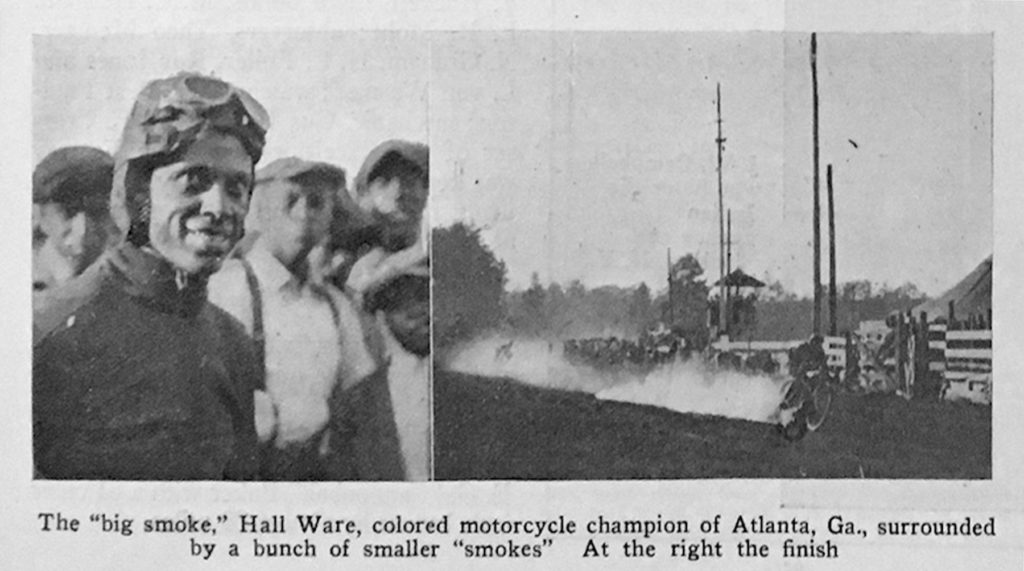
The article quoted local Atlanta Harley-Davidson dealer Gus Castle, and Thor/Jefferson dealer Johnny Aiken. Both dealers' statements reflected the attitude of most whites in Jim Crow Atlanta. Gus Castle stated: "I think the negro racing game is a substantial benefit, as it drives the last nail in the coffin of motorcycle track racing in Atlanta, and that's a blessing of no small importance." Aiken's stated: "Except that it will popularize motorcycling among Negros and in that way cheapen the sport in the eyes of white men." The article went on to state that there were about forty black motorcyclists in Atlanta, and that the white dealers refused to sell them new motorcycles. After reading the article in Motorcycling, Federation of American Motorcyclists (F.A.M.) Chairman John L. Donovan wired the track operators stating the Atlanta Motordrome would be "outlawed" and their race sanctions withdrawn "as the F.A.M. does not allow colored men as members." Despite the threats from Donovan, on October 19, 1913, an article appeared in the Atlanta Constitution newspaper announcing a race featuring black riders would take place at the Motordrome.
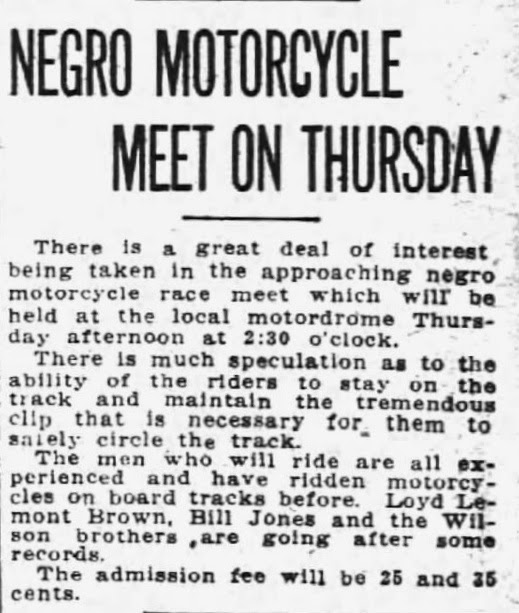
The article states "The men who ride are all experienced and have ridden motorcycles on board tracks before" (that statement seems to confirm that black riders rode on Motordrome-style board tracks in other cities, but sadly, that history has been lost). The Atlanta race was postponed twice due to rain. Weather was a constant problem at the Atlanta Motordrome - the riders could not safely race on the steep wooden banking when it was wet, and races were often postponed several times. The race featuring black riders took place at the Motordrome on afternoon of October 28, 1913, and featured black riders Bill Jones, and Lloyd Brown of Atlanta, along with the Wilson brothers from New Orleans, and Ben Griggs and Willie McCabe of Chattanooga. The Atlanta Constitution did not cover the race, and the results are unknown. Less than a month after the race, an article appeared in Motorcycling World and Bicycling Review that stated the owners of the Motordrome had filed for bankruptcy. It further stated: “This Motordrome earned an unsavory reputation by pulling off a race with negro riders, in defiance of F.A.M. regulations, thereby becoming outlawed as long as the present management exists.” The Motordrome reopened the following year under new management. There is no record of any further races featuring black riders at the track. With the opening of the Lakewood Speedway, motorcycle racing shifted away from the Motordrome.
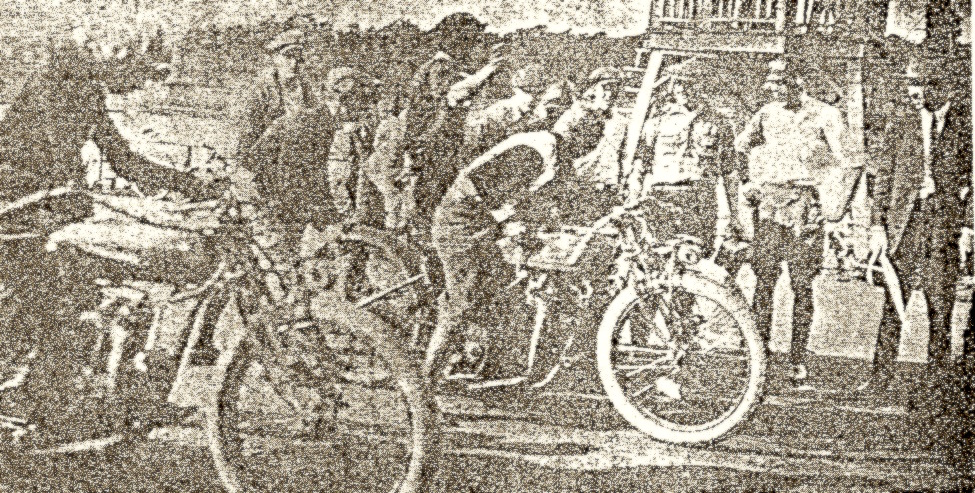
The Lakewood Speedway, one-mile dirt oval, opened south of the city in 1917, and immediately began running motorcycle and auto races. The track owners revived the racing series for black riders, which they billed as the Grand Colored Motorcycle Championship Race. A black South Carolina racer named Tom Reese, who called himself the 'Champion of South Carolina', arrived in Atlanta for the June race. Reese’s manager began to brag that Reese could 'beat any Atlanta rider,' and he was prepared to place a large cash wager to back up his claim. The event drew large crowds from Atlanta’s black community, and bets were placed on the favorite riders. While the Harley-Davidson, Indian, and Excelsior factories had no involvement in these races, the local Harley-Davidson and Indian dealers gave limited assistance to their chosen racers. They also often placed large wagers between themselves on the outcome of the race.
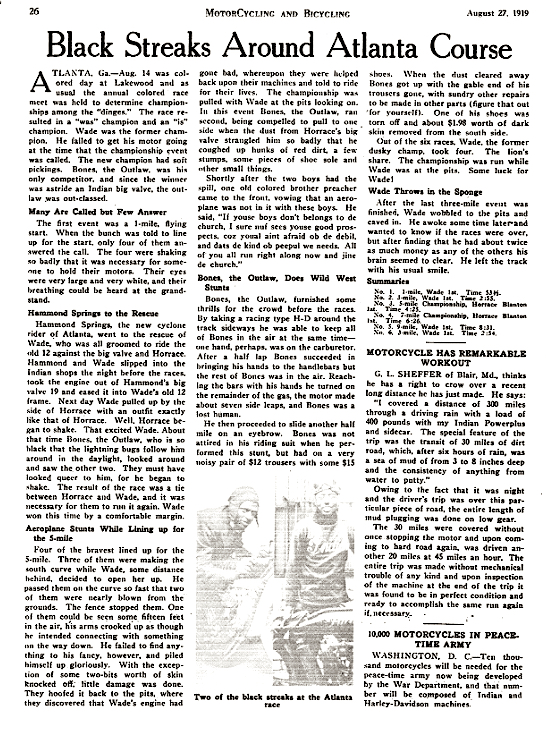
On May 31, 1919, 'Bones the Outlaw' appeared in a photograph (was standing with his employer Harry Glenn) within a pre-race article for the 1919 Southern Dirt Track Championship, which featured top white riders from around the south, including Birmingham's Gene Walker , and Atlanta's Nemo Lancaster. At the local Indian dealer, Hall 'Demon Wade' Ware saw an opportunity; already an accomplished local racer, Ware worked for the dealer as a mechanic. He convinced his boss, Nemo Lancaster, to lend him a competitive bike to race against Tom Reese. While Lancaster recognized Ware’s talent, the rumor was he had a very large side bet with Reese’s manager. At the start of the race, Reese on a Harley-Davidson jumped out to an early lead, and Reese’s manager expected to win the wager. Ware, on the loaned Indian, soon caught the Carolina Champion and passed him, winning the race. Ware claimed the $150 first prize, and Lancaster collected on large side bet with Reese’s manager.
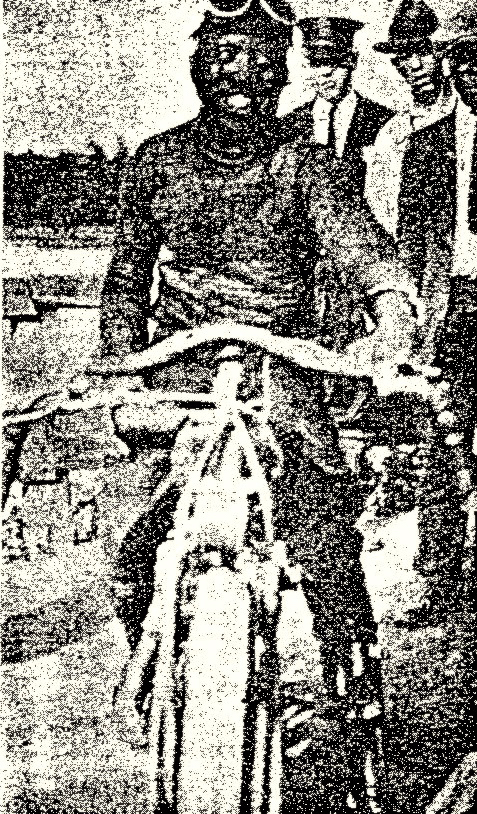
The race in August 1919 was another hard-fought battle between 'Demon Wade' and 'Bones the Outlaw'. 'Midnight' Blanton won several of the preliminary races, and had a shot at winning the championship race. But the night before the race, Atlanta board track racer Hammond Springs (who was white) helped Wade install Springs' new Indian racing engine into Wade’s older Indian frame. The competitive engine allowed Wade the edge he needed to leave Blanton in his dust. On the final lap, he and Bones the Outlaw, crossed the line in a tie. This required a rematch, which Wade won hands down, claiming the 1919 championship.

The race held on June 5, 1922, proved to be a bit of a disappointment. Once again several racers from around the South arrived, prepared to race. When Hall Wade's bike was unloaded, the motor was covered. This gave rise to rumors that Wade had another special racing engine, which was a reasonable supposition, as Wade was close to his former employer, Harry Glenn - by then an Indian factory representative. When race time rolled around, only Horace Blanton came to the starting line to face Wade. Wade won two five-mile races, defending the Southern Champion title he'd held since 1915. The remainder of the the day's races were canceled due to the lack of competition. By the 1924 race, 'Bones the Outlaw' had switched to racing automobiles, and 'Demon Ware' had sold his machine and moved north. For the 1924 races, 'Bones the Outlaw' made a demonstration run in his racing car, blasting around the dirt oval and putting on quite a show, narrowly avoiding a crash several times. In the motorcycle race, Horace Blanton had no real competition, his two chief rivals having moved on, and he easily claimed the Championship over a field of less experienced riders.

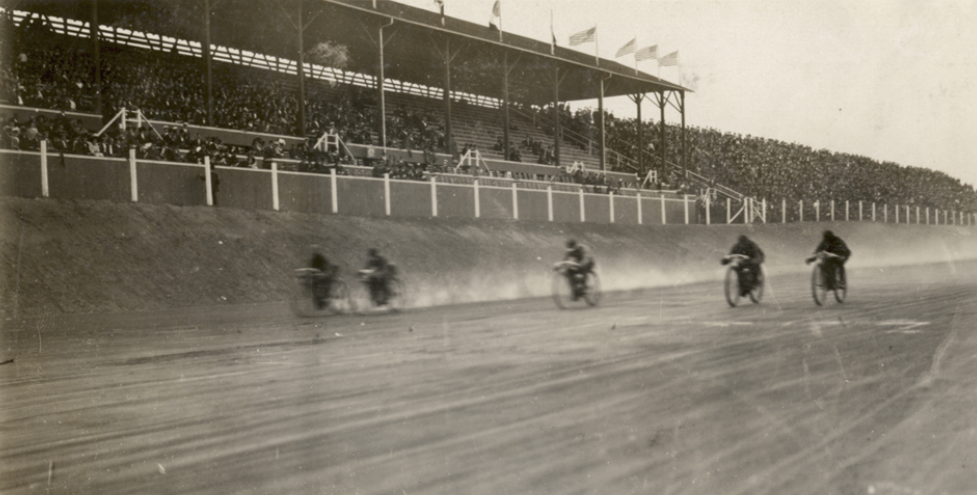
A Cowboy at a Garden Party
[Words and Photos: Michael Lawless]
"Welcome to Radnor Hunt Concours d'Elegance, gentlemen." The guards pointed our van up the manicured gravel drive; we drove past the stately clubhouse, and down the hill by the stables. As we rounded a bend we were greeted with a chorus of barking. "Look, doggies!" "They're not doggies Bryan; they're hounds." Radnor Hunt, the 'since 1882' Fox hunting club in a wealthy Philadelphia suburb, is a long way from the world of flat-track.
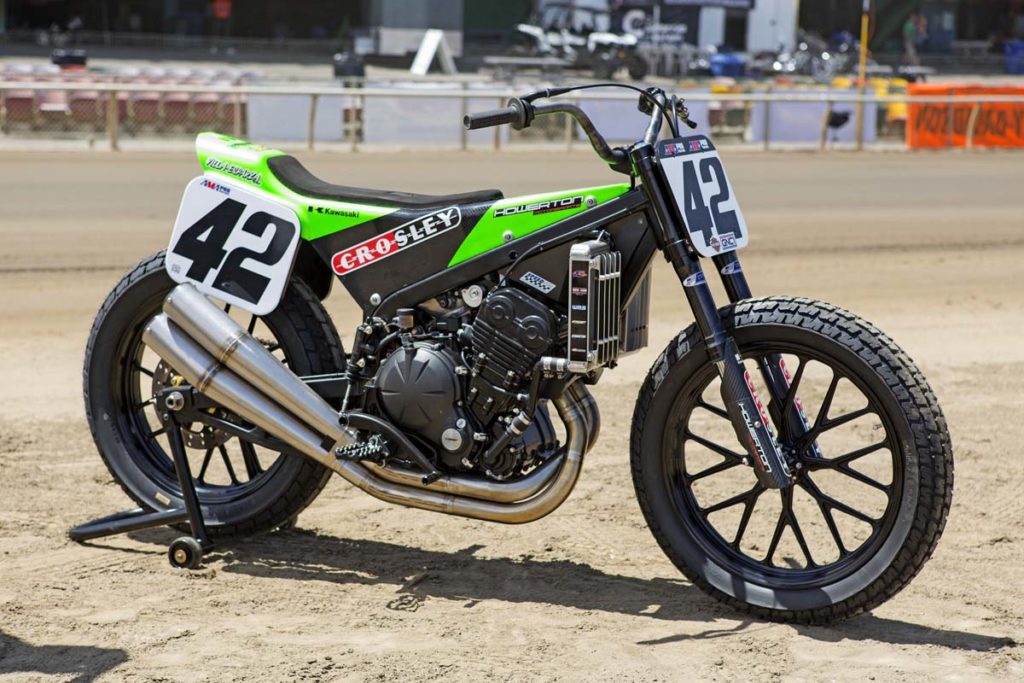
My mission for the Radnor Hunt Concours is to procure the extraordinary; that's how I landed the job as National Champion Bryan Smith's handler. I'd asked to borrow Ricky Howerton's 2016 flat-track Championship winning Howerton Racing Kawasaki, and he not only said yes, but graciously offered to send the winning rider, Bryan Smith, along with the bike. Getting the bike was terrific, but having the Champ was the icing on the cake.
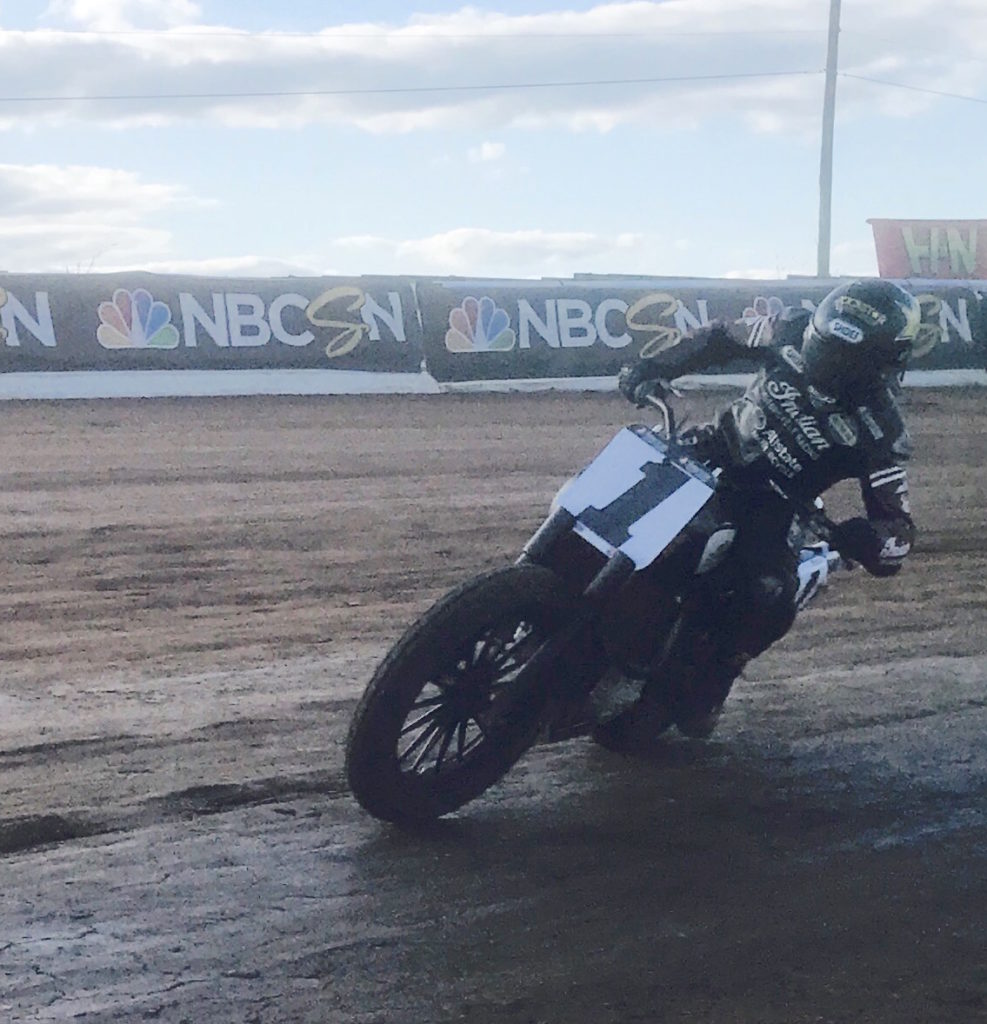
The Kawasaki is called "The Skinny Bike", and its a stunningly modern interpretation of a flat-track racing motorcycle, a study in minimalism and clever reduction. Motorcycle magazines around the world fawned over this bike, and legendary motorcycle designer Miguel Galluzzi said "The Kawa is what a pure motorcycle should be," high praise from the man who invented the Ducati Monster. I was surprised no other Concours had ask to display "The Skinny Bike."
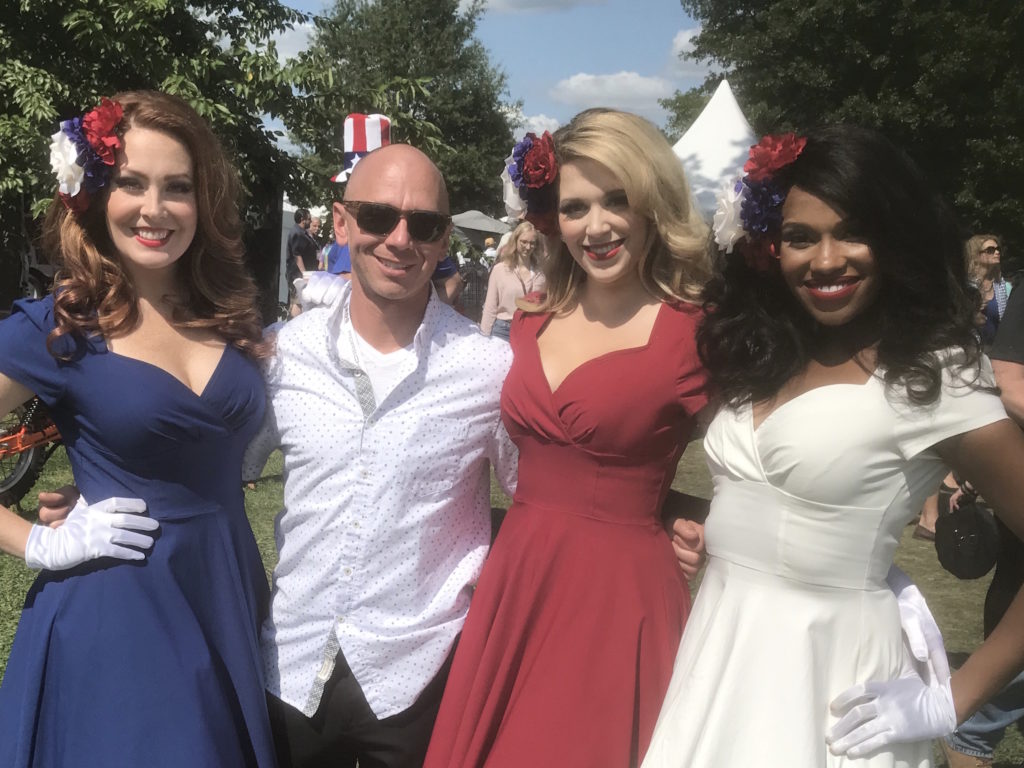
My deal was to pick up the Skinny Bike immediately after the Williams Grove flat-track race on Saturday, and bring it to Radnor Hunt for Sunday's Concours. Bryan needed to do well in that race to retain his championship, and his riding was 'all in'; he was a contender until he pitched it away in turn three. With Smith out, the championship belonged to Jared Mees. Bryan was fine after his spill, but it's hard to watch a friend do the 'walk of shame' back to the pits, on national TV.
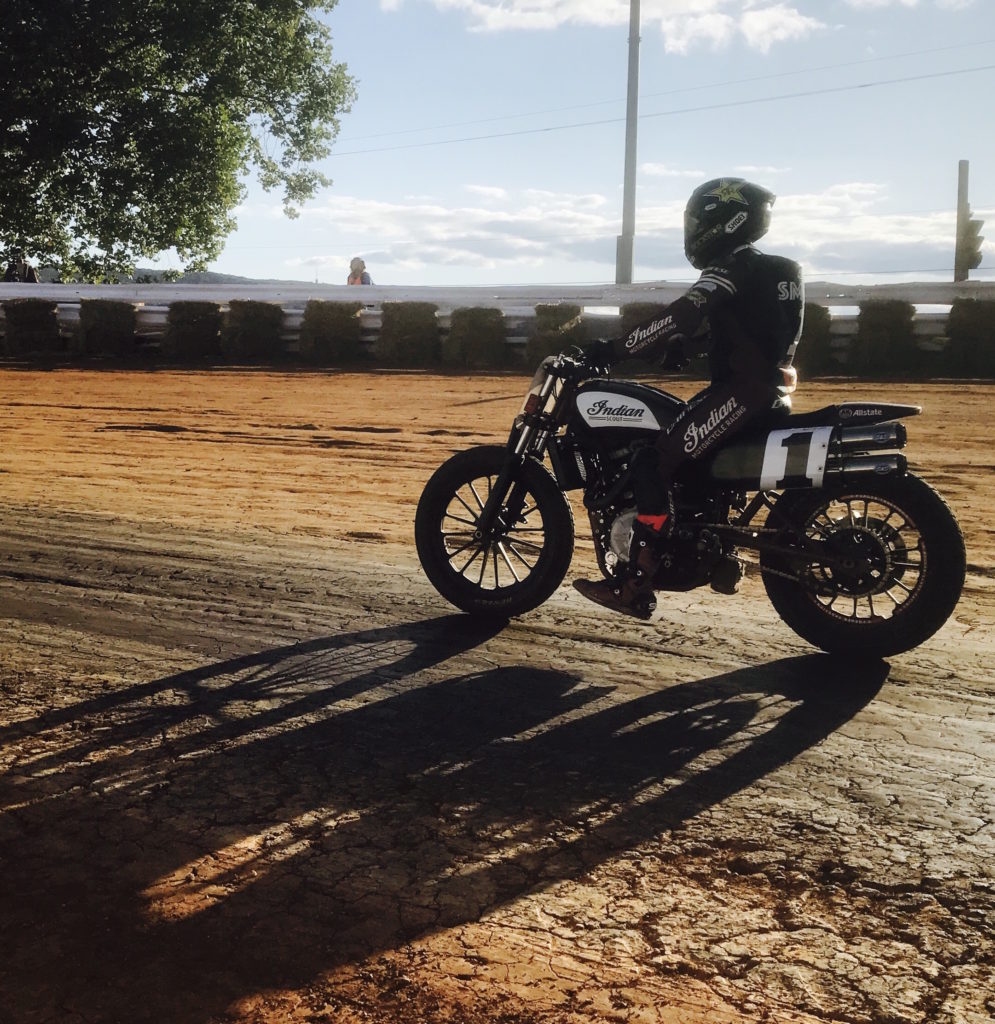
We loaded the Skinny Bike in the van and started heading east, stopping for a quick dinner on the road. No tables were available, so we sat at the bar - it was a hard luck day. Bryan ordered a Moscow Mule (the name says it all); more appeared in short order, courtesy of his fans, whom I think were a little shocked to see him humbly sitting at the bar. Well-wishers stopped for a selfie or an autograph, and he made time for everyone. Flat-track racing is more than a job for Bryan, it's his life.
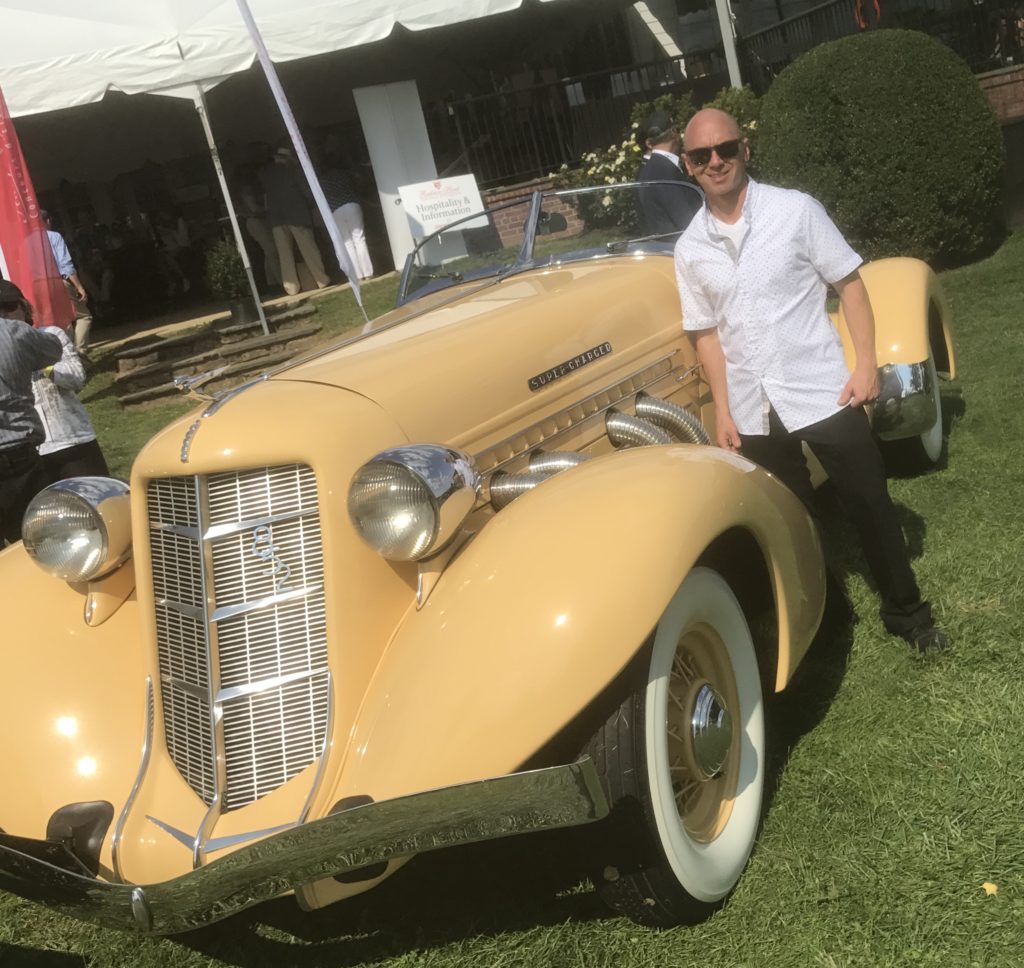
As we ate dinner, I reflected how easy it was to load the "Skinny Bike" into the van. Switching to the bigger Indian flat-track racer must have been quite a change, but when asked, he just shrugged it off, admitting that the Indian was more like a Harley-Davidson XR750, as Brad Baker & Jared Mees raced last season. It's the mark of a professional that Smith hopped on the heavy Indian and was up to speed immediately...but Bryan did mention he really liked riding the Howerton Kawasaki. Perhaps he'll will race one again?
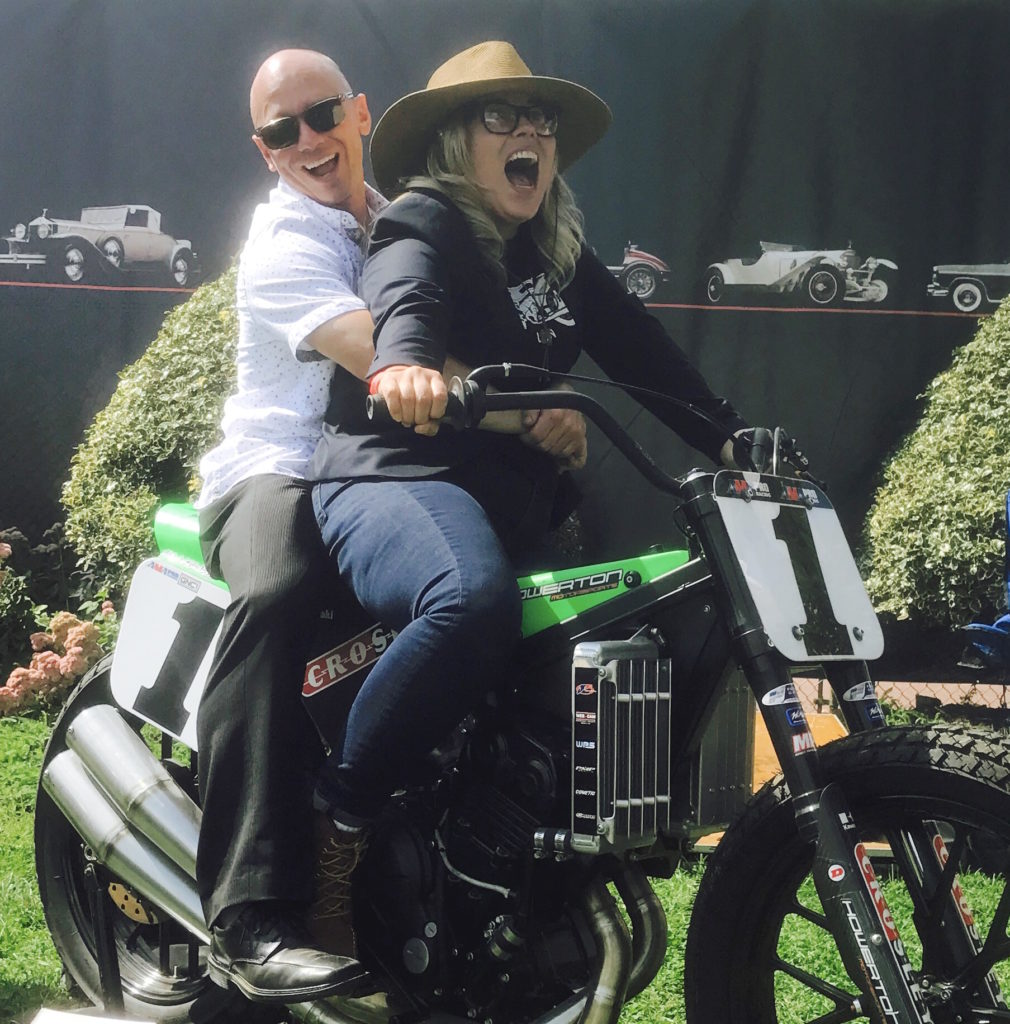
Offloading the Skinny Bike, we wheeled it past the big white tents spilling over with Rolls Royces, Ferraris and McLarens. Well-dressed ladies in big hats regarded us curiously, and Bryan understood why I'd forwarded the email on 'proper attire for a gentleman'. We strolled the show field after a quick breakfast in the clubhouse, and Bryan was impressed with the uniqueness of every car and bike on display, which included his own. "I've never even seen these on Google before!" Then the red-coated Huntsman's horn blared as he galloped past with his pack of hounds - the ceremonial start of the Concours. The contrast in atmosphere between Radnor Hunt and the Williams Grove flat-track couldn't be greater. Bryan rubbed elbows with the well-heeled Radnor guests, and was surprised to discover they were well-informed regarding flat-track racing, and knew about his Championship, but were more impressed with his X-Games win! That's when Bryan Smith relaxed, and the day became a positive experience for the Champ. I think Radnor Hunt has not seen the last of the flat-track scene!


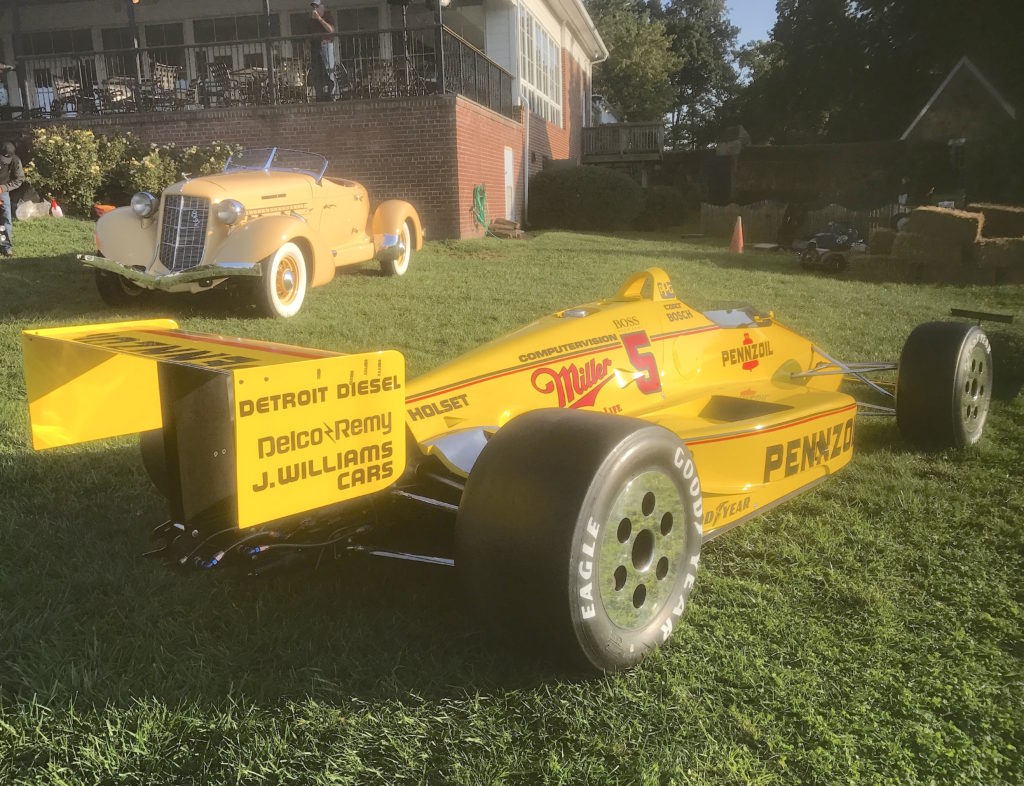
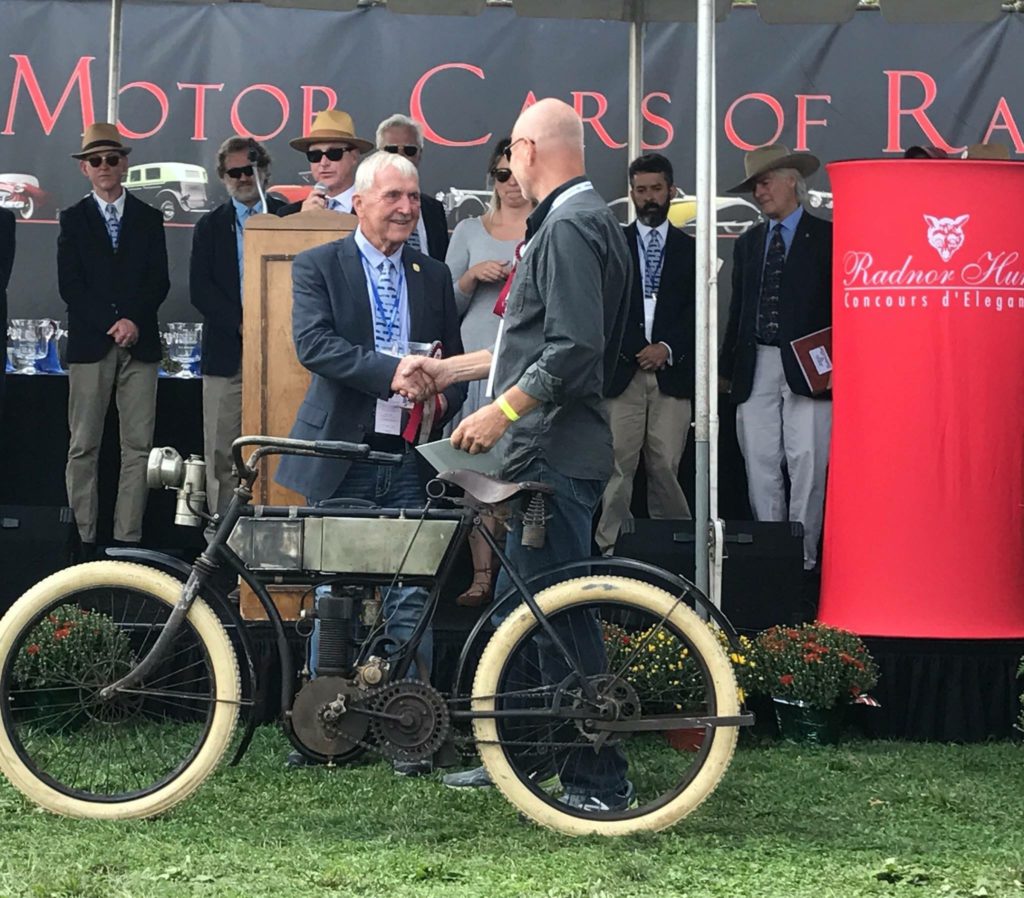

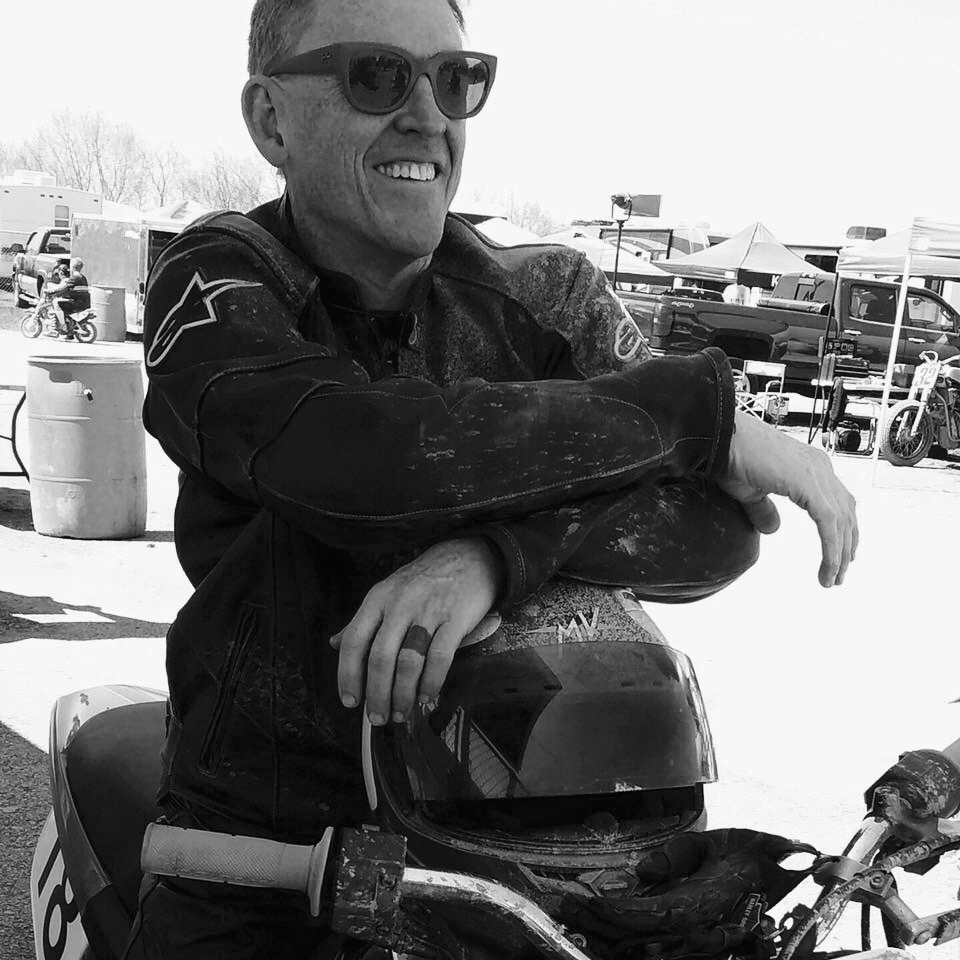
From Glorious to Notorious; the Fay Taylour Story
While virtually forgotten today, Fay Taylour was among the most world's most famous motorcyclists in the 1920's, and the most successful female motorsports competitor of the 20th Century. She was a champion speedway rider in the earliest days of the sport, when races drew crowds of 30,000 people. She was a consistent winner on the dirt tracks, and not in 'ladies events' - she held the outright lap record at several speedway circuits in the UK, Australia, and New Zealand, which so threatened the men behind the sport they banned all women from speedway tracks by 1930! She then took up auto racing, with less success, but still won many races between 1930-54. Until sexism quashed her ambitions, she was widely respected, interviewed, filmed, photographed, and featured on race programs as a star, wherever she went.

With her struggles and triumphs as a pioneer professional motorcycle racer, Taylour ought to be lauded as a feminist hero...but with some heroes, digging beyond the headlines reveals a far more complex character, and in Taylour's case, a deeply troubling story. Fay Taylour, born in Ireland of British gentry, embraced Fascism in the 1930s, in common with a other notable bluebloods, like the sisters Unity and Diana Mitford (married to Sir Oswald Mosley, 6th Baronet of Ancoats and founder of the British Union of Fascists). We would love to celebrate Taylour, but her unrepentant promotion of Fascism makes her an impossible figure. The story of her remarkable success on a motorcycle is forever colored by her conscious adoption of an ugly and hateful ideology; even before Nazism became genocidal, hatred of the Jews, people of color, queers, Gypsys, and Leftists was a foundation of Hitler's ideology, and sending these groups to death camps was a logical extension of the political philosophy spelled out in his 1925 book 'Mein Kampf'. Even after evidence of the concentration camps filtered to the world, Taylour remained unmoved, kept a photo of Hitler on her bedside, and was vocally anti-Semitic. Her Fascism began 8 years after her last speedway race, but cost her the enduring fame she'd earned as a woman in a 'man's world.'
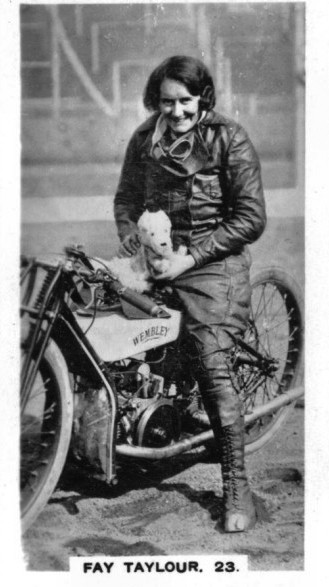
Francis Helen Taylour was born 1904 in Birr, Ireland. She was extremely competent physically, and loved to hunt, fish, and ride horses. Her father was an officer in the Royal Irish Constabulary, and she learned to drive his Buick at the age of 10, and was a competent driver by 12. She was a champion bicyclist at her girls' school (St Trinian's), and after her mother died, she gave up academic pursuits to live with her father, who'd retired to Burghfield, a small town in Berkshire. There she met a mechanic who became a love interest, but he had a Rudge and taught Fay to ride. She soon bought a Levis 220cc two-stroke, then an OHV AJS K6 'Big Port' single in 1927. A local motorcycle dealer, Carlton Harmon, observed her skill on a motorcycle, and encouraged her to enter the 'Southern Scott Scramble' at Camberley Heath, near Reading. The Scramble was a 24-mile circuit run twice, with a 'Venus Cup' for best woman rider, which Harmon suggested Taylour could win. Harmon gave her instruction, and suggested she ride as she was inclined, which was 'flat out'. She practiced the course daily before the event, to master its several steep hills, 'Wild', 'Wooley', 'Kiliminjaro', and Camberley. She wore a distinctive oversize man's cap while riding, and during official practice for the Scramble, Jimmy Simpson and George Rowley, both factory-backed racers, couldn't keep up with the rider in the unusual cap - who they later discovered was a girl. She won both the 'Novice' and 'Venus' cups, in her second-ever motorcycle event.
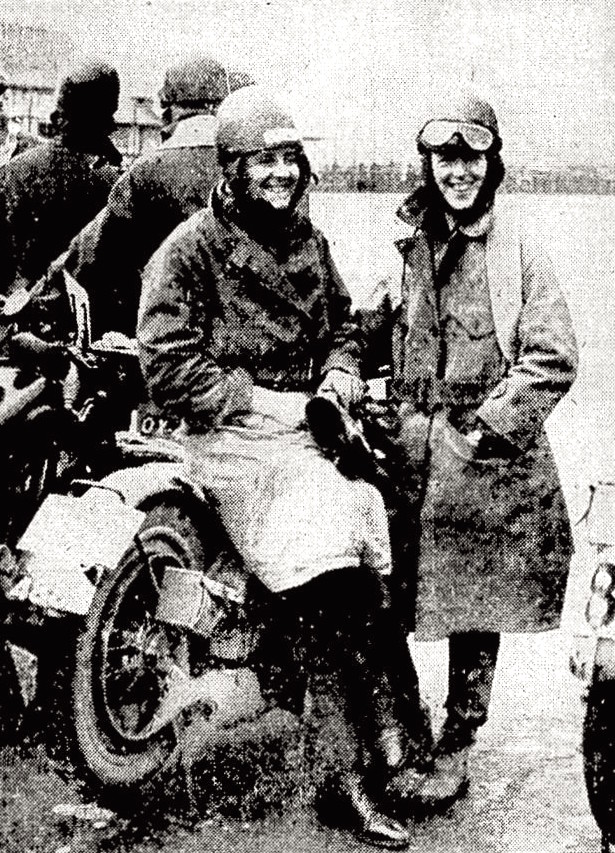
She soon won Gold Medals in the Leeds £200 Trial, the National Alan Trial, the Travers Trophy Trial, and silver in the Colmore Cotswold and Victory Trophy Trials. She even won a Gold Medal in the ACU's Six Days Trial, run over a 750-mile route, and quickly gained a reputation for remarkable personal endurance and tremendous skill at handling a motorcycle. In only four months of Trials competition, she had earned enough prize money to live on for the year, and soon looked for work in the motorcycle industry in the Midlands. She landed a job at Rudge as a secretary(!), but was selected to ride with the factory Rudge Trials team for 1928, and given a 500cc four-valve competition model. She promptly won the Ladies' Award in the London-Gloucester-London Trial, but lost the speed test, as a compression plate had been added below her Rudge's cylinder barrel. For her next trial, she worked until 3am removing the plate and rebuilding the motor in her hotel room, then rode that morning without a single loss of marks...but had to be content with a Silver medal - the same as her male factory teammates - as she'd lost 50 points for arriving late to the competition.
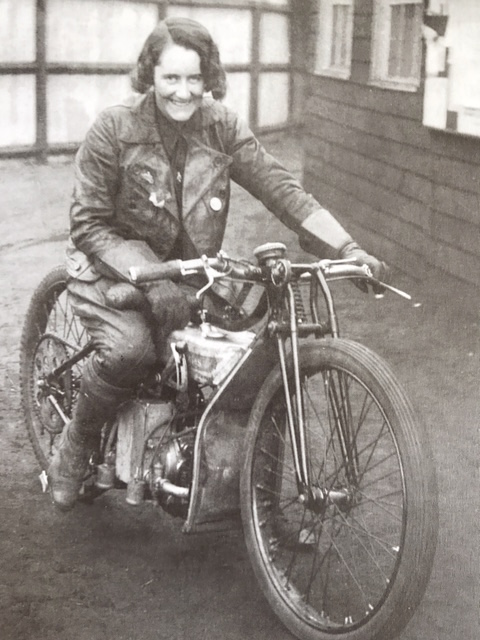
In 1928, she observed one of the first dirt-track races in the UK, at Stamford Bridge. She watched amazed as the American rider 'Sprouts' Elder broadslid his Douglas racer around the horse track. Fay immediately made the rounds of various dirt tracks, asking to be given the chance to ride. All refused her, but she was typically undaunted, and went to Lewis Leathers in London to have a racing suit made to measure. While there, she met Lionel Wills, a genteel tobacco heir who loved fast motorcycles, and had learned to broadslide after watching races in Australia. The pair had a long relationship, and Wills helped Taylour make her way in the dirt-track world, partly as Wills himself had brought the sport to Britain after witnessing a dirt-track race in Sydney, Australia, and became the first cinder-track racer in the UK. He wrote articles for sports magazines back home describing the new sport, and worked with Johnnie Hoskins to bring Australian riders to the UK to seed the sport on British soil.
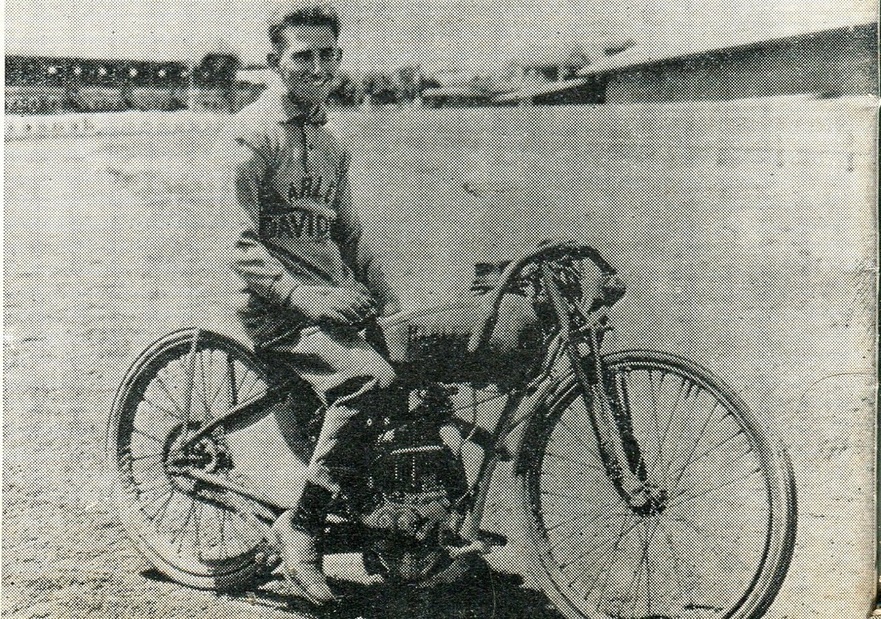
Taylour fitted a hook to her works-supplied Trials Rudge, in defiance of the factory, and wore a face mask with her leathers (common, to keep the cinders out) and snuck into an open practice session at Crystal Palace. She rode and fell repeatedly, but after a full day of trying, she started to broadslide. When Lionel Wills told track manager Freddie Mockford that the irrepressible rider practicing on his track was female, he nearly spat his cigar. But Wills lied that she'd been signed up at 'all the other tracks', so Mockford gave Taylour a week to practice before the next race. She wired Charles Vernon Pugh, the Managing Director of Rudge, to support her with a dirt-track racer, and when he refused, she purchased a Douglas DT5 racer. But before it came, she rode her modified Trials machine, which was far heavier than the specialist dirt track models being hurriedly offered by almost every manufacturer. Still, she proved her skills on the track, and more importantly was a huge draw at races, and the press had a field day with 'Eve on the Sport Field' headlines.
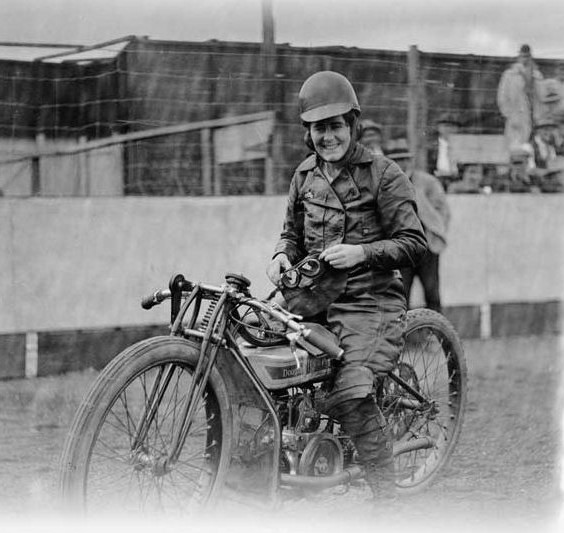
In 1928, Taylour was the first dirt track racer from Europe or the USA to travel to Australia, the home of the sport, to compete with the legends Down Under. She first landed in Perth, where she trumped the 'unbeatable' Sig Schlam on his home track, equalling the track record, then went to Melbourne, where she trounced the local hero Reg West, and held the lap record at his track for a year. After a successful tour of Australia and New Zealand, in which she was heavily advertised in advance of races with tens of thousands of spectators, she returned to Britain and won the Cinders Trophy for the fastest lap in an International contest, in front of a crowd of 30,000. At a race in Southhampton she even beat Sprouts Elder, the legendary American dirt-track expert, who would shortly follow her example and create a global speedway circuit between Argentina, New Zealand, Australia, the USA, and Britain, following the weather between hemispheres and riding seasons.
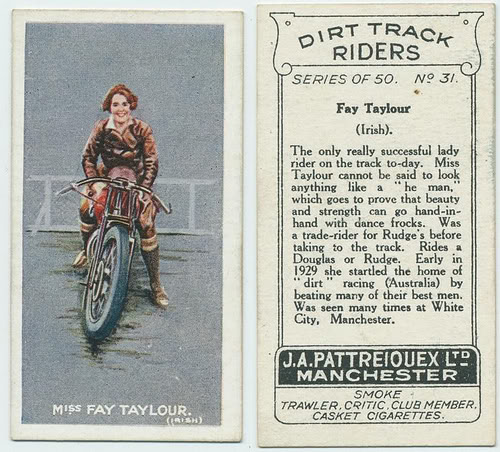
Taylour returned to New Zealand and Australia after the end of the UK riding season in late 1929; she was greeted as a star Down Under, and promoted as one. She defeated the New Zealand champion (Mattson) and recorded FTD at Auckland, then took .8sec off the lap record at the Dunedin track, beating the local champion (Young). She returned to the UK in Spring of 1930 to discover that women had been banned from the dirt tracks, and in May 1930, women were banned from riding speedway in Australia too! According to Taylour's biographer Brian Belton, it wasn't the promoters and riders who stopped women racing, it was the insurance companies who feared the reaction if a woman was killed in a race.
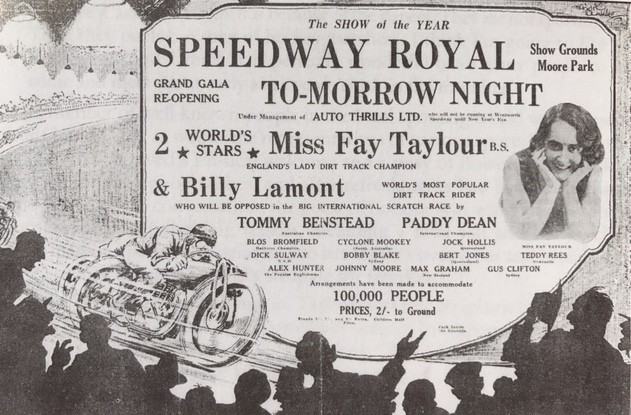
Banned from doing what she loved, she turned in 1930 to racing cars. For the next 24 years she had various successes, setting a record on the 'Rianchi Run', a 300-mile course from Calcutta, driving a 1931 Chevrolet, which gained her an entry at Brooklands in late 1931 aboard a Le Mans Talbot 105, in a women's race, which she also won. She won the Leinster Trophy in Ireland in 1934 (driving an Adler Trumpf), and won the Hill Circuit Trophy at the Shelsey Walsh hillclimb. She won a women's race at Donington, competed in the Mille Miglia, and again at Brooklands with a Alfa Romeo 8C Monza, coming in second after lapping at 114mph. She was so full of excitement driving the Alfa that she continued hot lapping the circuit after the race, and had to be stopped by a flagman stepping in front of her car; she thought it a great joke, but she was disqualified from the race and fined.
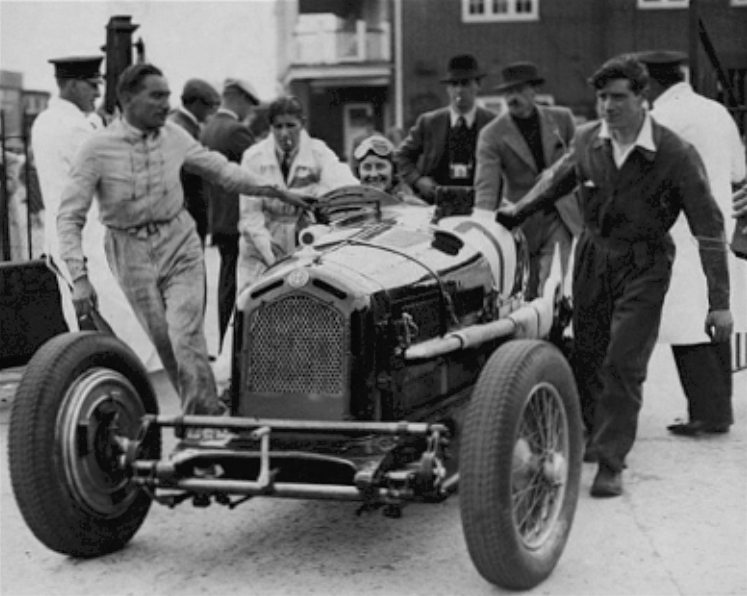
In Septermber 1939, Britain declared war on Germany, and Fay Taylour became outspoken in her support of Hitler, and against the war. She had visited Germany many times since 1928, driven factory-loaned Adler race cars, and gotten to know officials in the NSKK (Nazi sport bureau). Her anti-war, pro-German advocacy was unattached at that point to any organized political party, but she played a German radio station loudly to annoy her neighbors, and proclaimed her views in restaurants, in letters to friends, and to newspapers, as well as with (illegal) leaflets she distributed. All that earned her a visit by the Special Branch of the Metropolitan Police in 1939, which only increased her public support for Hitler, and she soon joined Oswald Moseley's British Union of Fascists. She also attended gatherings of the Right Club, and after Club member Tyler Kent's arrest for spying (he'd stolen 2000 secret telegrams between Churchill and Roosevelt), Defense Regulation 18-B was enacted, allowing known Fascists to be imprisoned without trial. On May 30th, 1940, Taylour was arrested at her home, and interned at Holloway Women's Prison in London, along with the Diana Mitford - over 1000 British citizens were so imprisoned. She was later sent to Port Erin prison on the Isle of Man, and in her recently released MI5 file, her prison warden described her as "one of the worst pro-Nazis in Port Erin...she is in the habit of hoarding pictures of Hitler and had in her possession a hymn in which his name was substituted for God's." After 3 years of imprisonment, Taylour was exiled to Ireland in 1943, as she held Irish citizenship - that country was officially neutral during WW2 - but remained under scrutiny by British security services until 1976, as she became a conspiracy theorist, and carried on agitating for extremist ideologies and groups for the rest of her life.
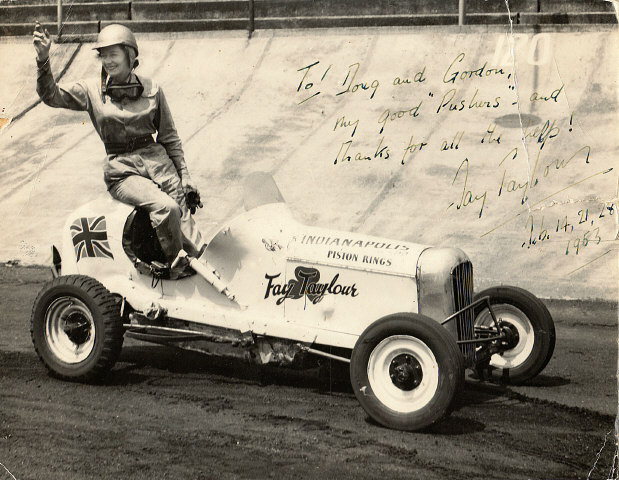
After the War, with her reputation soured in Britain, she emigrated to the US and took up midget car racing, and selling British cars in Lost Angeles. After a visit back to London in 1952, she was barred from returning to the United States due to her political history. She took up auto racing in Britain, and traveled to race in Ireland, Sweden, and Australia, and was the only pre-War female auto racer to take the wheel competitively post-War. She was allowed to return to the USA in 1953, and raced cars for another year, before giving up racing for good in 1954. She remained in the US until 1971, attempting without success to publish her memoirs and have a film made of her life, and worked odd jobs. She returned to Britain in 1972, and compiled her autobiography, which was never published (she rightly blamed her politics), but her collected notes did form the basis of Brian Belton's flawed book (it devotes barely one paragraph to her politics, and her auto racing) 'Fay Taylour Queen of Speedway', published in 2006, long after her 1983 death. A far more comprehensive biography is Stephen Michael Cullins' 2015 dissertation, 'Fanatical Fay Taylour; Her Sporting and Political Life at Speed, 1904-1983'.
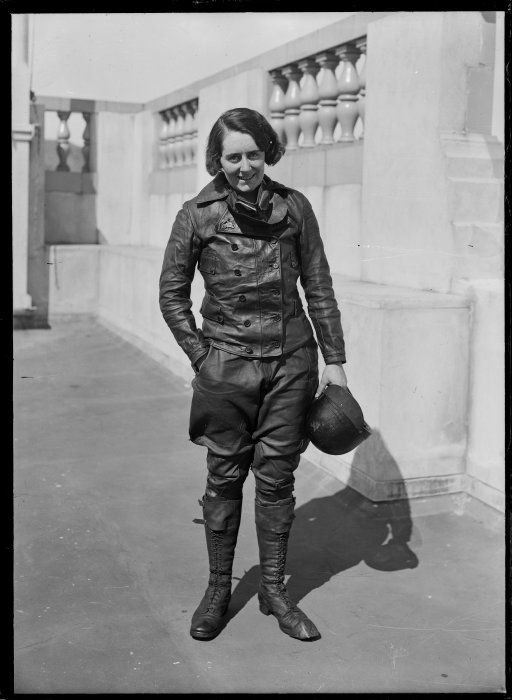
Taylour's story is fascinating, and tragic. Her 4-year motorcycle racing career shone brightly enough to earn her a permanent place in the motorsports Pantheon, but the ugliness of her political views changed her reputation from glorious to notorious.
A glimpse into her character can be gleaned from an Australian newspaper interview in 1930, on the conclusion of her final world dirt-track tour: “When, three years ago, I got my first motorbike, I was told I should break my neck. But I didn’t! In fact, I entered for the Southern Scots Scramble at Camberley in that same year. It was a grueling test for both machine and rider, but more especially for the rider. Much against his will, and after a great deal of persuasion, an uncle had financed me for this event. I had sworn to win it! He didn’t believe it possible. But, I felt it was, because I wanted it to be the means of making a new career. So I kept on saying to myself: ‘Girl, you must win!’ And win I did! From that date my career as a racing motorcyclist began.
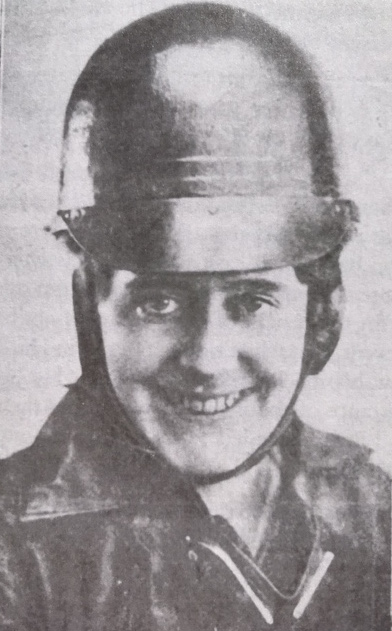
“I wanted speed. I had won a score or so of cups, but you can’t live on cups! When, in the early part of last year, I saw the dirt-track speeding, I made up my mind to go in for these new thrills. I was refused admission to three speedway tracks, one after the other. Then, whilst the officials were in the Isle of Man last year for the T.T. races, I took advantage of their absence to test myself on the dirt track at Crystal Palace. The result was that, by the time they returned, I was able to show them efficiency in the new sport. I was established, and, as is generally known, I made the most of my opportunities there during the summer of last year. Even a woman can get what she wants, when her want is strong enough."
The Tiger of Picardy
[Words: Prosper Keating]
It isn’t an everyday occurrence, finding yourself in a time capsule house in France, looking at a 1940 Triumph Tiger 100, sat parked in a hallway since the 1980s. Prewar T100s are rare — they were rare when new — and given the onset of WW2, 1940 models are very rare indeed. Most were exported to the United States, but a few went elsewhere. This machine in the hallway was ordered new by a Frenchman, who collected it from a Triumph dealer in the northern French town of Amiens, in November 1939.
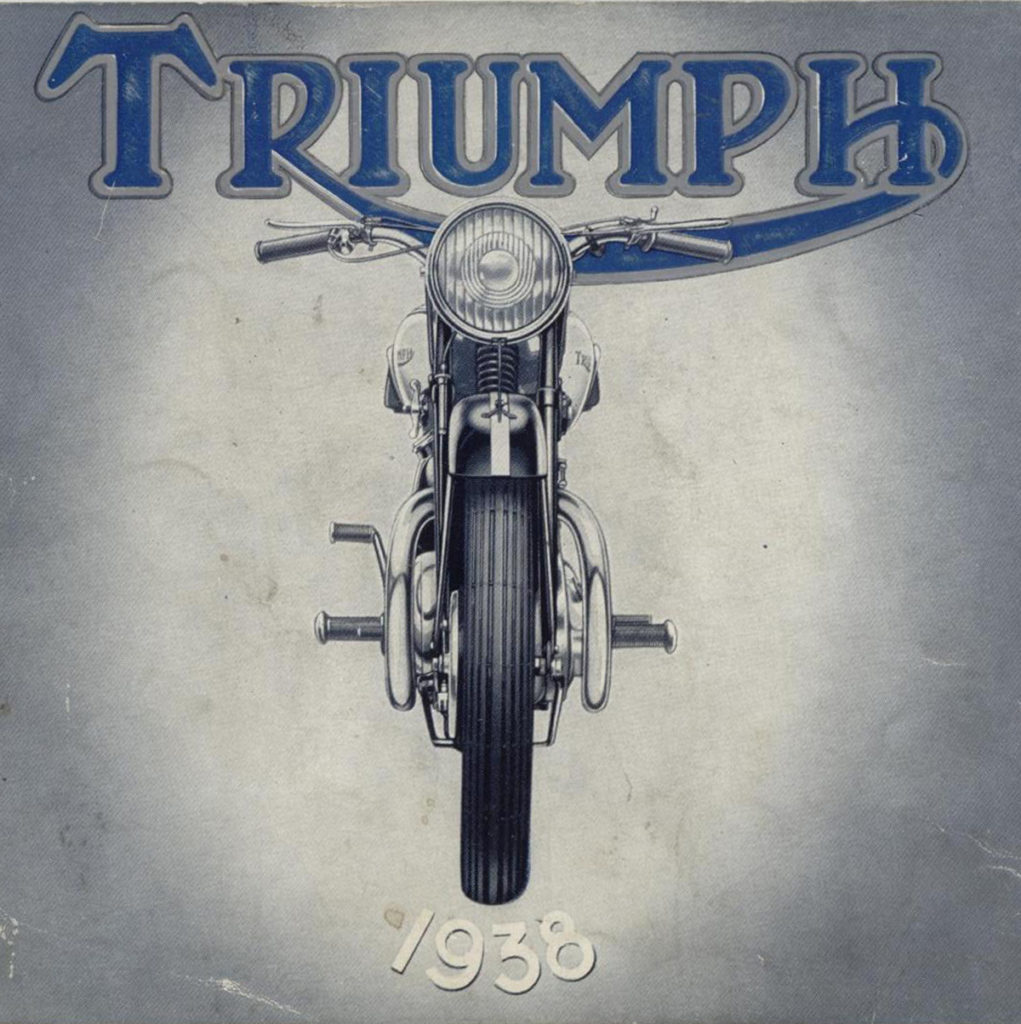
Historians among you will doubtless wonder what kind of nonsense you are reading, given that the British War Department requisitioned all stocks from the largest motorcycle factories, shortly after the declaration of war with Germany - September 3rd 1939. Triumph motorcycles were not exempt... except for the firm’s 500cc parallel twins. They were considered too exotic and high-performance for the armed forces, and no mechanics had yet been trained to work on anything but sidevalve singles. Not only did the military not want the Speed Twins and Tiger 100s, but Triumph was authorised to continue producing and exporting them despite the war, and the governmental interdiction on civilian vehicle production announced in May 1940. Thus in the United States, the late summer and autumn 1940 issues of Motorcyclist magazine carried Triumph advertisements bearing Managing Director Edward Turner’s signature under the following, somewhat Churchillian announcement.
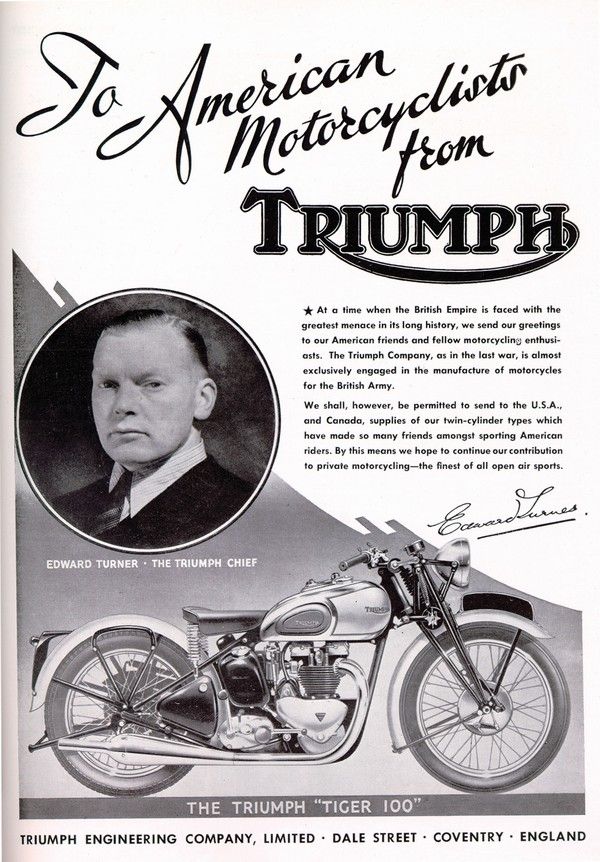
“At a time when the British Empire is faced with the greatest menace in its long history, we send our greetings to our American friends and fellow motorcycling enthusiasts. The Triumph Company, as in the last war, is almost exclusively engaged in the manufacture of motorcycles for the British Army. We shall. however. be permitted to send to the U.S.A., and Canada, supplies of our twin-cylinder types which have made so many friends amongst sporting American riders. By this means we hope to continue out contribution to private motorcycling — the finest of all open air sports.”
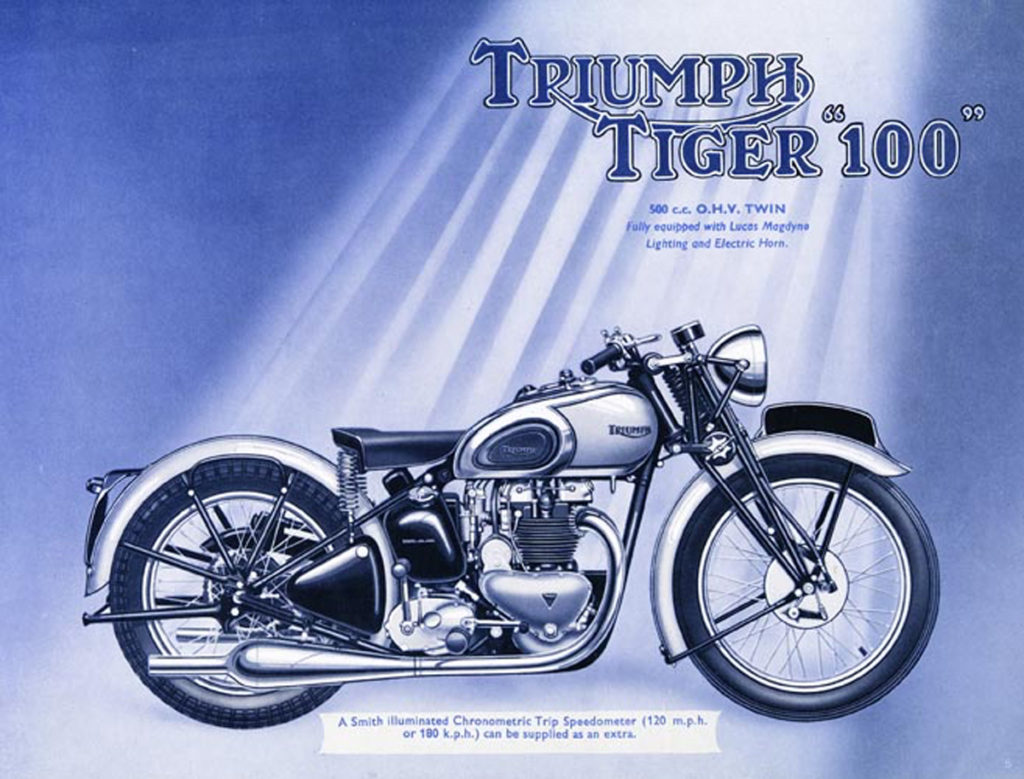
By Summer 1940, of course, the Germans were installed in Paris and all along the coast facing Britain, having invaded France and other countries that May. But in November 1939, when ‘our’ Tiger 100 arrived in Amiens, Britain, France and Germany were still engaged in what Germans nicknamed the Sitzkrieg, and the British called ‘The Phoney War’. Lines of communication and trade between Britain and France remained open. Triumph owner Jack Sangster was a powerful businessman, and persuaded his pals in government on the fiscal benefits of permitting his firm to carry on exporting its successful 500cc twins to the all-important US marketplace, where Turner had bolstered Triumph’s presence since 1937. That Triumph was awarded the prestigious Maude’s Trophy in November 1939 surely helped Sangster’s argument.
The Maudes Trophy
In late February 1939, Auto Cycle Union (ACU) officials were invited to choose a random Tiger 100 from any Triumph dealer they wished, and a Speed Twin from any other Triumph dealer. The selected T100 and 5T were registered for the road by the Triumph works as EDU 223 and EDU 224 respectively (EDU being a Coventry registration prefix). To run in the motors, Triumph employees rode the two twins from the factory in Coventry to John O’Groats on the northernmost tip of Britain – around 580 miles. Followed by ACU observers, the Triumphs were then ridden from John O’Groats to Land’s End - Britain’s southernmost point.
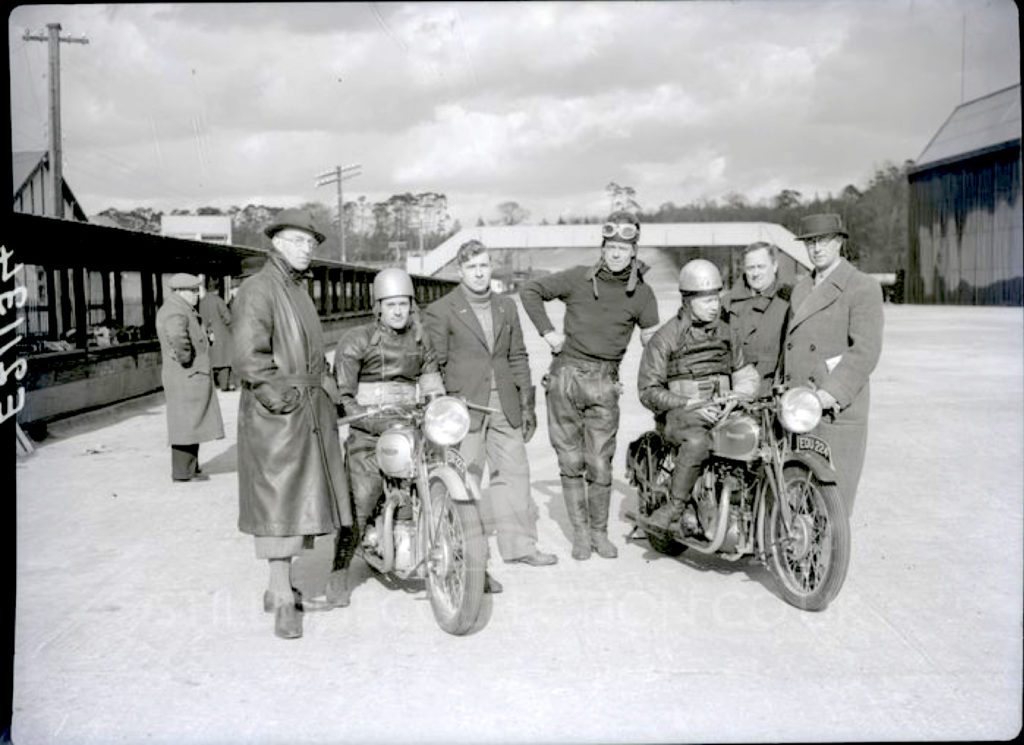
The weather conditions in the Scottish Highlands were atrocious, but the riders pressed on with reduced speed, and on reaching Land’s End, they rode to Brooklands. There two experienced Brooklands Boys took the handlebars, and rode the Triumphs at high speed around that banked autodrome for six hours. The Tiger 100 and Speed Twin were then ridden back to the works in Coventry, and stripped for inspection under ACU observation. Negligible wear was found in the motors. The road route of over 1,800 miles was covered at an average speed of 42 mph. At Brooklands, the T100 averaged 78.5 mph with a best lap of 88.46 mph and the Speed Twin was not much slower at an average of 75.02 mph and a best lap of 84.41 mph. Apart from two flat tires and one of the machines falling over whilst parked on its stand, the riders encountered no problems, and Triumph was awarded the coveted Maudes Trophy in November 1939.
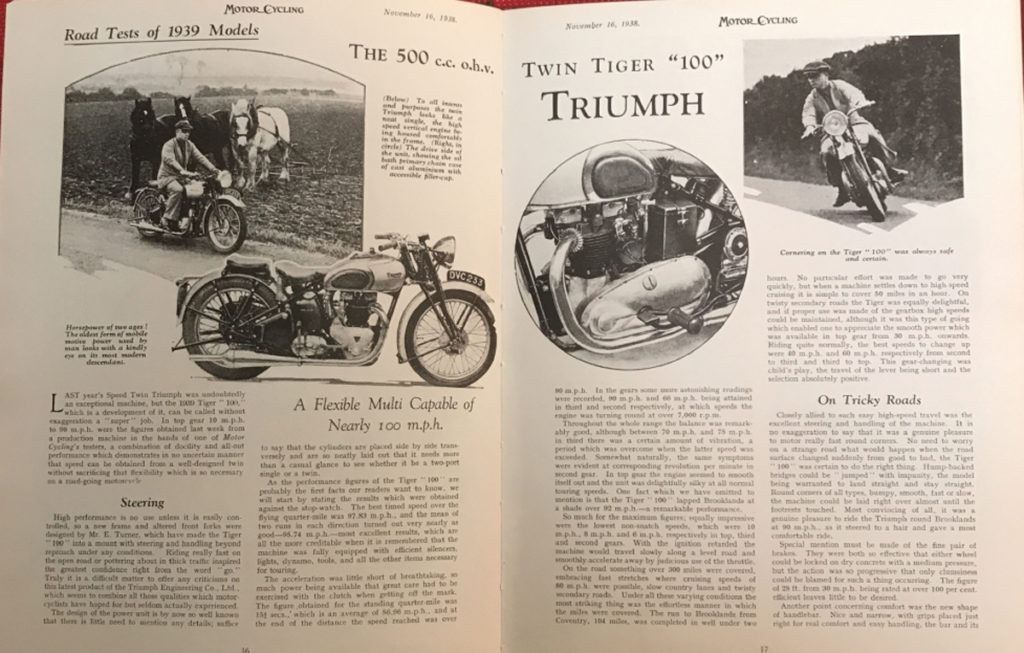
Triumph’s new Tiger 100 model was first tested by the British monthly Motor Cycling a year before (November 1938), and had reached 98 mph in full road trim, which was very fast; in those years, a family sedan might blow a gasket or worse if driven at 60 mph for any distance. The Tiger 100 cost £80 (plus £2 10s for the speedo), and would easily exceed 100 mph on open pipes. When Triumph introduced the so-called ‘cocktail shaker’ silencers for the 1939 season, riders could remove the quickly-detachable end caps and baffles, transforming the silencers into open megaphones. Every Tiger 100 built in Coventry (ie, before the factory was bombed during WW2, and rebuilt in Meriden, near Birmingham) came with a dynamometer test certificate, and differed from its Speed Twin brother only with 8:1 compression pistons, polished inlet tracts, and a 1/16” larger carb – enough for a claimed 8hp increase! By comparison, BSA’s 500cc M24 Gold Star single cost £82 exclusive of extras like pillion footrests and the speedometer and might hit 95 mph downhill with the wind behind it. The competition and racing versions were faster but cost more. A Vincent H.R.D. Comet cost £86 plus extras and was good for 90 mph with a jockey-sized rider aboard. To borrow the catchphrase of a motorcycle dealer I knew in London decades ago, who had started racing in the 1930s, the Tiger 100 was “a lot of bike for the money, son!”
The Picardy Tiger
But back to our Picardy Tiger 100, the King of Route 29. The story is third-hand, the main players no longer around, but it’s a good tale and worth telling, and probably true (or as true as such stories can be). My friend Laurent Mimart, or ‘Mimo’ to those who know him as France’s go-to man for pre-unit Triumphs, mentioned a 1939 Tiger 100 he’d heard of in Saint-Quentin, on the Somme river in Picardy. Yeah, we’ve all heard those stories, but we had nothing else going that day so we drove from Paris. The house was a 1950s time warp, and was full of Triumph motorcycles and spares dating from the 1920s to the 1950s. It took us a couple of hours to dig a 1926 sidevalve and its parts out of the earthen floor of the dungeon-like cellar with our bare hands. There was a rare and genuine 1953 US market 6T Blackbird parked in the hallway, its cylinder head in a crate in a bedroom serving as a workshop. The Tiger 100 sat behind the Blackbird, its striking but non-original green-and-black finish typical of an older French enthusiast’s fondness for personalising his motorbikes. Mimo and I didn’t care about the green paint, being riders rather than collectors; what grabbed our attention was the engine number prefix: 40-T100.
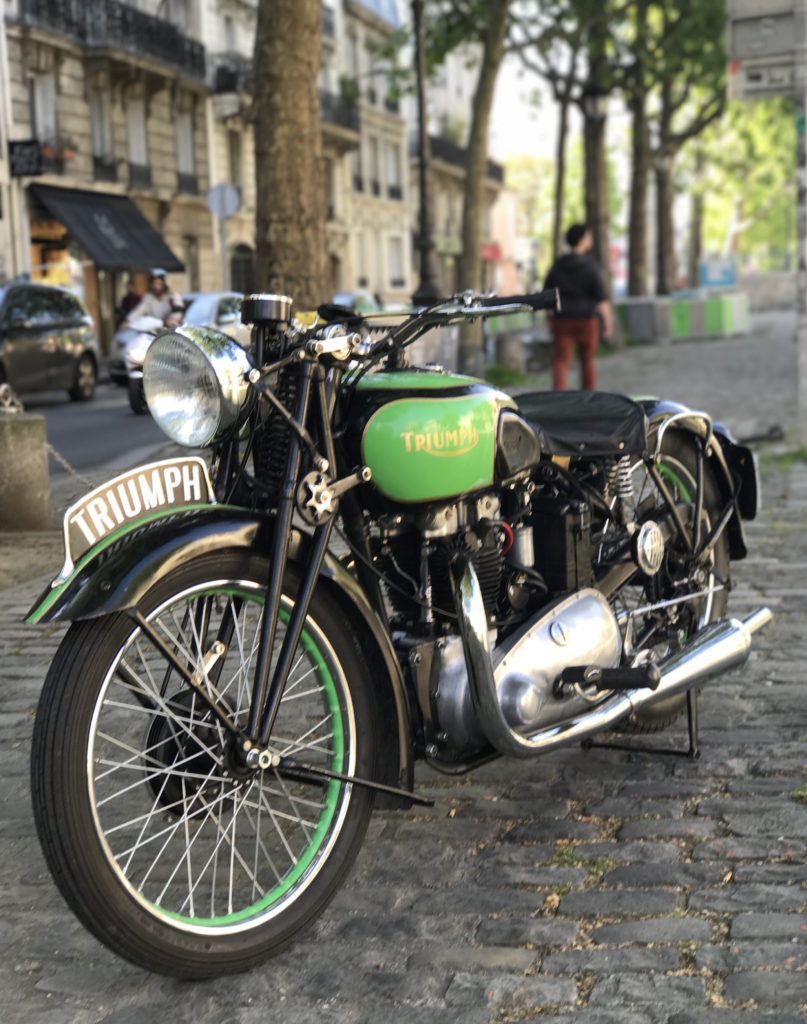
Let’s call the Triumph’s owner 'Gaston Blanchard'. He had died and his brother needed to clear the house out, but he didn’t want to sell Gaston’s motorbikes to any Tom, Dick or Harry. They had to go to people of whom his brother would have approved. As we sat drinking coffee in the dusty old house, Gaston’s brother told us the story of the Tigre Cent as he recalled it. In 1966, or maybe it was 1965, the nineteen year-old Blanchard, a keen scrambles fan like many Frenchmen at the time, was looking for an old motorbike to use as a field hack. Someone put him in touch with a Monsieur Morin, a retired railway signalman who lived near Amiens, some eighty kilometres to the west of Saint-Quentin along the Route Nationale 29, a post-Napoleonic highway that runs almost as straight as a Roman road between the two towns.
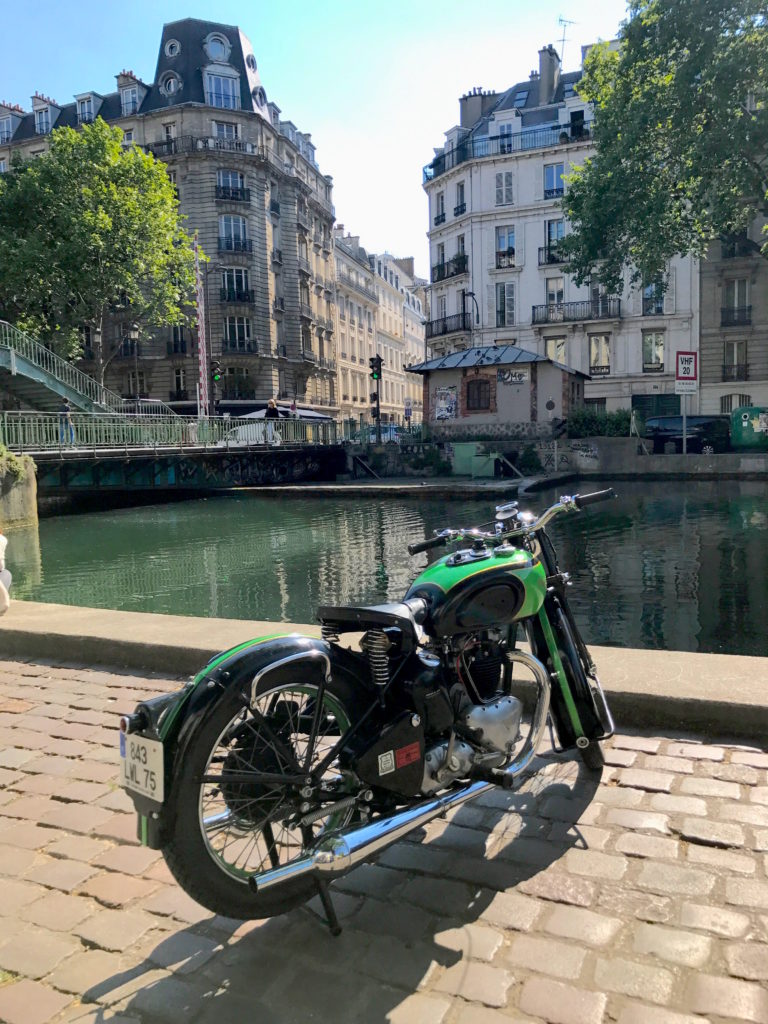
Blanchard rode there with his brother. Morin did indeed have an old motorbike that he hadn’t used in more than a dozen years since the lights had stopped working because the dynamo was foutu (f*cked). It was a fast machine, though, a Tigre Cent that he had owned “since the war”. It was the fastest motorcycle on the RN29 for a time, except for a very loud motorbike that had overtaken him one night at high speed and pulled away into the gloom. Knowing that a Tiger 100 in good tune was capable of just short of the magic ton in road trim, Mimo and I wondered aloud if the faster rider might have been on one of the first postwar Vincent H.R.D. Rapides imported to France just after WW2. Blanchard’s brother disagreed, saying that Morin had spoken of having to hide the Tiger 100 before he could seek out the challenger to prevent the French armed forces from requisitioning it.
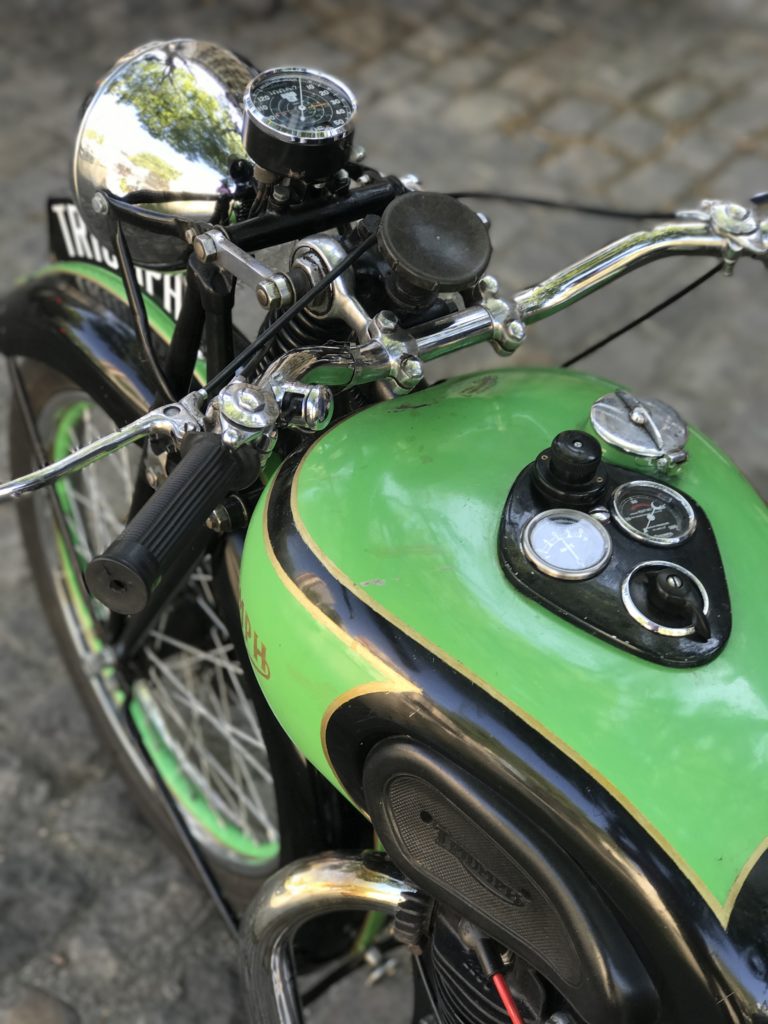
So this Tiger 100 had been in France since before the war? No, said the brother. It had been imported from England during the war, but before the German invasion. It was a 1939 machine, he said, laying a 1980s document on the table, which gave the date of first registration as 1939. According to the (few remaining) factory records that survived the German air raid on Coventry during the night of November 14th 1940, when the Triumph works were destroyed, Triumph produced a total of 8,818 motorcycles from January to November 1940, of which just 274 were Tiger 100s. The engine and frame numbers of Morin’s T100 suggest it rolled off the Priory Street production line in October 1939. So the French bureaucrat who issued a new registration document in the 1980s was not mistaken: the T100 was indeed made in 1939 but for the 1940 season.
Tigers in Wartime
After Triumph relocated to Meriden, the firm was able to complete a few orders using parts salvaged from the ruins of the Coventry works. The Hollywood actor Rod Taylor is said to have received his new Speed Twin in 1942, delivered in a crate marked as tractor engine spares. Maybe this was the bike Taylor rode up to Hollister in 1947 with other Hollywood area bikers, but that is another story. Some students of the subject believe the last ‘Coventry Tiger 100’ made was the racer ordered by Rody Rodenberg on March 30th 1940 and dispatched to the US on May 18th that year. Rodenberg’s specifications included the optional bronze cylinder head and an Amal TT carburettor. Sold at auction by Bonhams in 2010, Rodenberg’s T100 comprises frame number TF 4030 and engine number T100-31131, Triumph having dropped the year prefix by then, according to some sources.
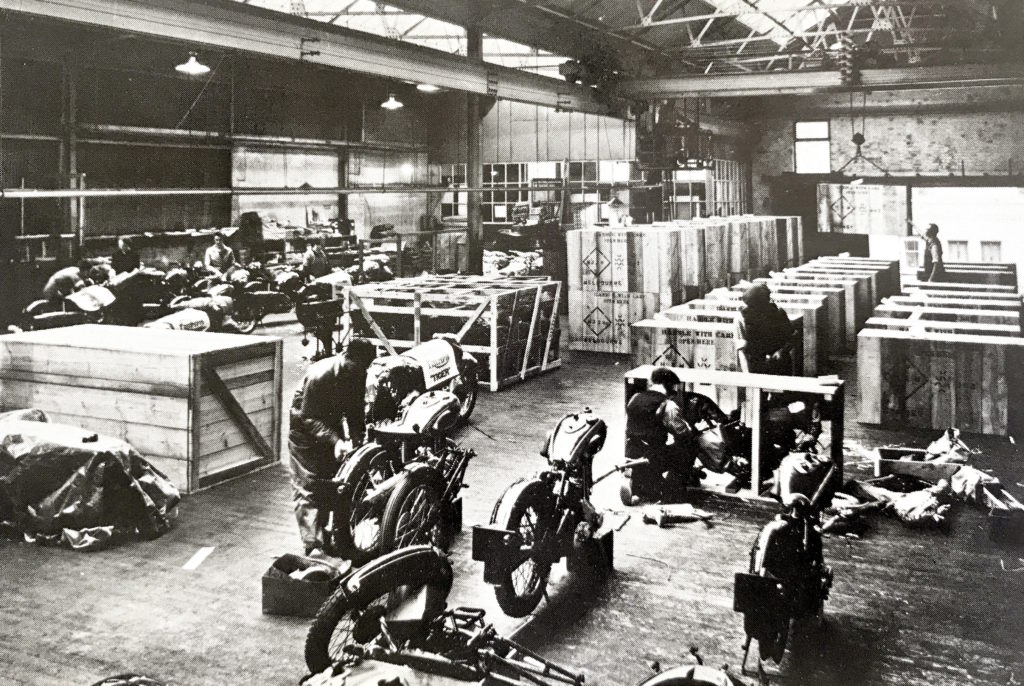
The topic of late prewar and early wartime Triumph frame and engine numbers is worth a digression if only to save people from buying bitzas or, now that prices are rising, fakes. From 1937 on, all new Tiger engines were numbered in sequence, regardless of the model type. The 1938 Speed Twin engine, though not a Tiger, was included in this sequence, as was the Tiger 100 when it arrived for 1939. The 5T engine was fitted to the Tiger 90 chassis, which was given its Amaranth Red and chrome finish to distinguish it from the blue-lined silver-grey/chrome colour scheme of the Tigers. The engine numbers were prefixed by the year and model codes. The 500cc and 600cc engines were fitted to Triumph’s heavyweight chassis whose serial numbers were prefixed by the code TH for ‘Triumph Heavyweight’. The smaller models had lighter frames marked TL for ‘Triumph Lightweight’. However, the TH frame was barely able to absorb the power of the new twin engine and when racers and dragsters tuned their Speed Twins, frames and lugs would crack.

The Speed Twin engine produced 26bhp, or more with hotter pistons and cams. However, the six-stud barrel-to-crankcase joint was prone not just to oil leakage at sustained high revs, but sudden, violent separation as studs were ripped from the alloy. Triumph introduced a new crankcase and cylinder block for the T100 with an eight-stud joint. The cylinder head was also new, with a larger one-inch inlet manifold and polished ports. It was made by the Birmingham firm of Birco, which some say explains the B suffix to the part number: E1454B. Birco also produced the optional bronze head (as fitted to the Rodenberg racer) that cost an extra £7 4s or $36 at contemporary exchange rates. The prewar bronze heads were also numbered E1454B but Birco produced a batch of bronze T100 heads for Triumph just after the war, in response to orders from the United States. These postwar heads were numbered E2258.
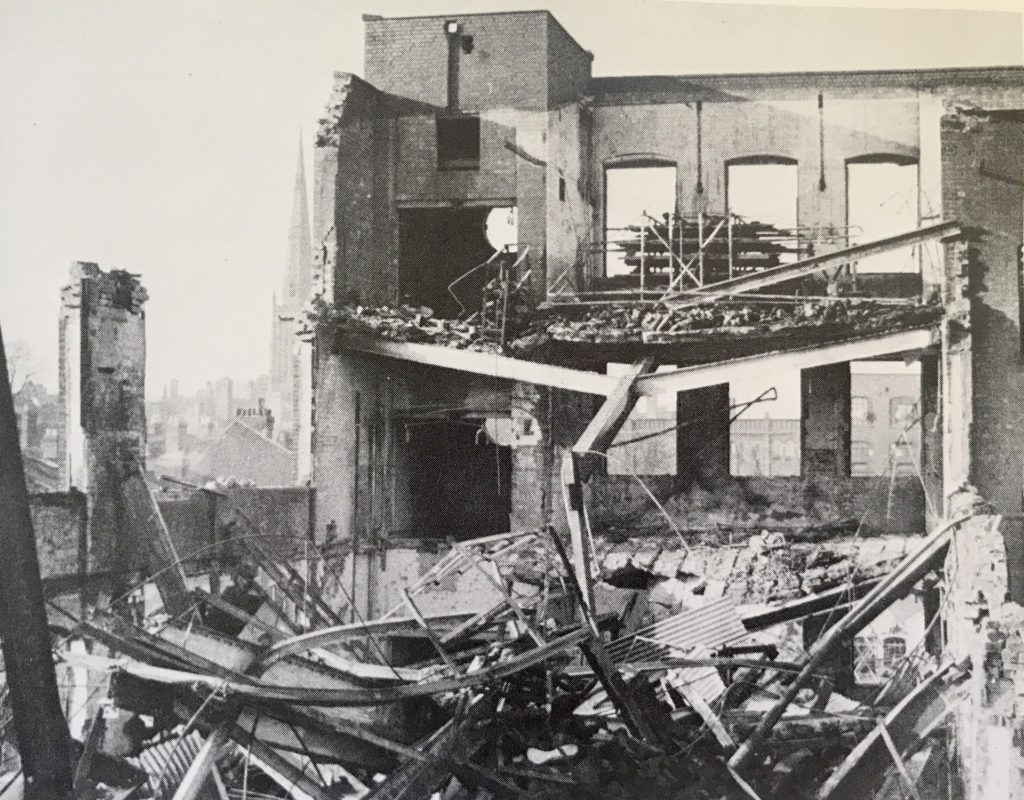
Some tuners fitted the T100 head to Speed Twin engines as the head stud configuration remained unrevised. I have a low-mileage 1939 Speed Twin motor given to me years ago by the son of a London Ton-Up Boy who had used for a season in his Norton-Triumph Special as a temporary replacement for his blown-up all-alloy T100C engine. The Ton-Up Boy had fitted it with a new T100 iron head, and I can confirm that the Triumph sales blurb about ‘polished ports’ was no lie. The Tiger 100 came with 8:1 forged alloy ‘slipper’ pistons. Other than that, the internals were Speed Twin, including the camshafts. In other words, the standard engine produced 34bhp, 8bhp over the Speed Twin. Tuned carefully, it was capable of far more, as Triumph’s Chief Development Engineer Freddie Clarke proved when he set a lap record of 118 mph at Brooklands in 1939.
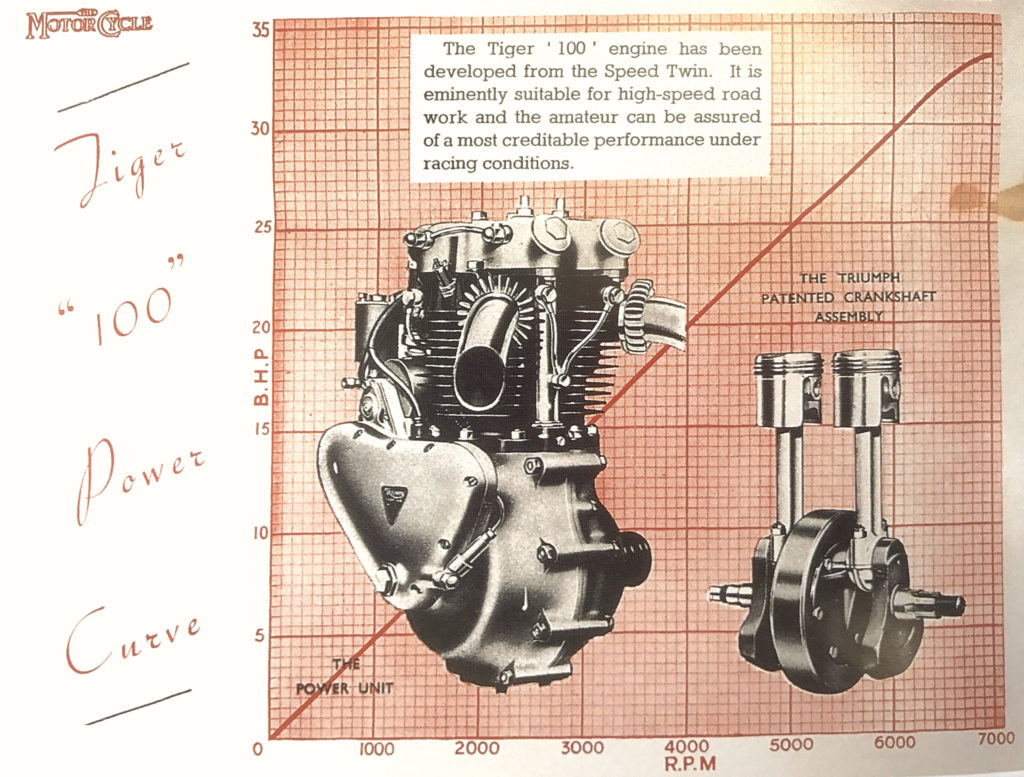
As stocks of the six-stud 5T crankcases were used up during the 1938 season, 5T motors were built using the new eight-stud crankcase and cylinder block but the existing 5T head. Towards the end of the 1939 production run, a few dozen 5T motors were installed in T100-spec TF frames. From then on, all Triumph heavyweights had TF frames. A total of 4,413 TF frames are logged in surviving Triumph records to 1942, by which time Triumph was in Meriden and concentrating on military motorcycles and other war-essential products. In other words, all genuine Coventry Tiger 100s should have TF frames but not all of the higher-numbered TF frames began life as Tiger 100s. As we know, just 274 of the 8,818 motorcycles made in Coventry from January to November 1940 were Tiger 100s. The first 1940 Tiger 100s would have been assembled from late-August 1939 onwards.

One of these was the Tigre Cent ordered by Monsieur Morin, Roi de la RN29 or King of Route 29 for a brief time early in the winter of 1939, before he had to hide his T100 from the French military and then, of course, the Germans. As a railway signalman, Morin was in a reserved occupation and therefore exempt from the military mobilisation of all Frenchmen of military age. This explains why he was around to collect his new Triumph from the firm’s northern French concessionaire, the Grand Garage Paul Passet in Amiens. Blanchard’s brother mentioned Passet’s as the place where his brother went to order spares for the T100. Founded by Paul Passet before WW1, the dealership had a second branch in Abbeville by the late 1930s, and sold other imported marques like BSA. Paul Passet’s son Georges was a well-respected Clubman racer in the 1930s. In 1970, when the Bol d’Or was held at the Montlhéry circuit south of Paris for the last time, Georges’ son Jean-Paul would race Triumph factory racer Percy Tait’s T150 triple, such was the close relationship between the Passet family and Triumph. The dealership closed down in 1980 and their old Amiens premises now houses the town’s Police Municipale.
Le Roi de Route 29
Many French speed freaks on two, three and four wheels tried their luck on the RN29 in the interwar years, after the abolition of speed limits on French highways in 1922. You could get up to full race speeds between the towns and villages along the 80-kilometre or 50-mile stretch between Amiens and Saint-Quentin, cutting across the Picardy landscape like a steel rule. Prudence aside, the law required that you slow down through built-up area, and the gendarmes would lie in wait, hoping to catch roadhogs and hooligans rash enough accelerate before the derestriction signs marking the end of the speed limit. As Morin told the Blanchard brothers in the mid-1960s, ‘les flics’ had nothing capable of catching his Tigre Cent on full song. Running from the cops was easier when they did not have radios to alert their comrades further up the road…but they still telephone ahead in the late 1930s. If hotshoe riders like Morin thought they’d been clocked, they would turn off the highway into the hinterlands, lying low for a while, before returning home through the back lanes. At night, it was even easier to vanish, by simply turning off their lights.
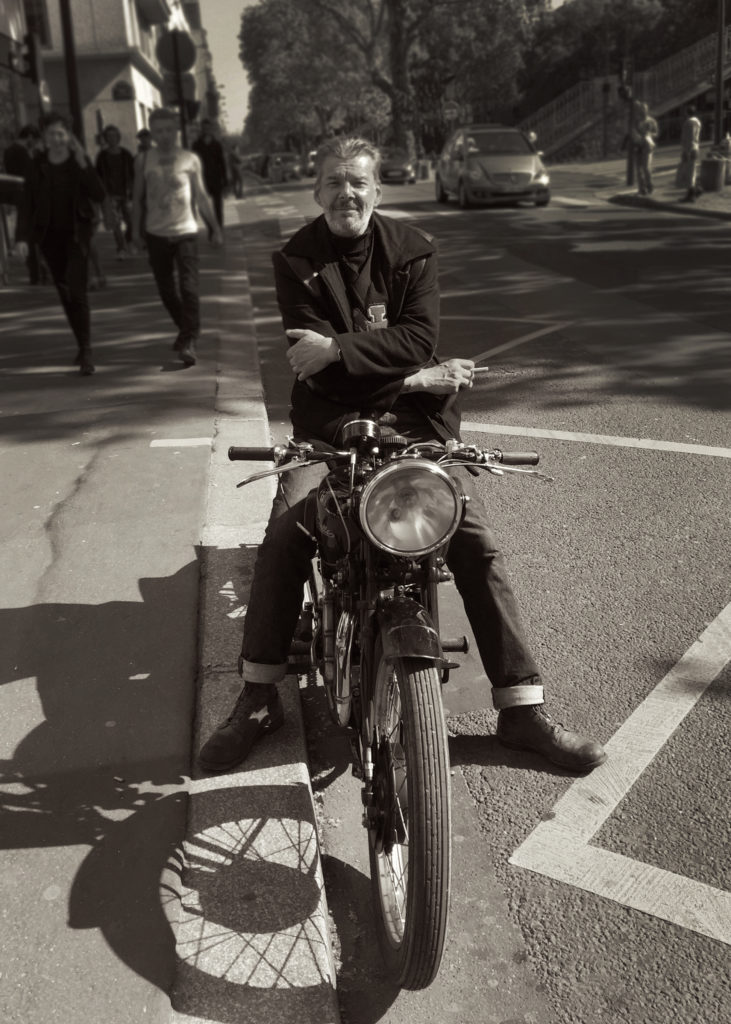
Morin, as an ‘essential worker,’ needed to travel between different railway signal boxes in the Amiens area, and had a fuel allowance for a motorcycle, but once the French authorities started requisitioning private vehicles (including more than 56,000 motorcycles, many of which would end up in German hands), Morin would have been expected to take the train to work, or to use a bicycle. No more gallivanting up and down the RN29. As mentioned, he must have hidden his precious Tiger 100, first form the French military, then the Germans. After the war, Morin retrieved his Tiger 100 from its hiding place and used it as daily transport, until the dynamo stopped working. After Gaston Blanchard bought the T100 from Morin, he used and abused it as a field scrambler for another few years until the magneto died. As anyone who has a prewar Triumph twin knows, the twin-lead version of the Lucas Magdyno is a rare item, so the T100 was going nowhere. Blanchard dumped it in the cellar of his mother’s house in Saint-Quentin.
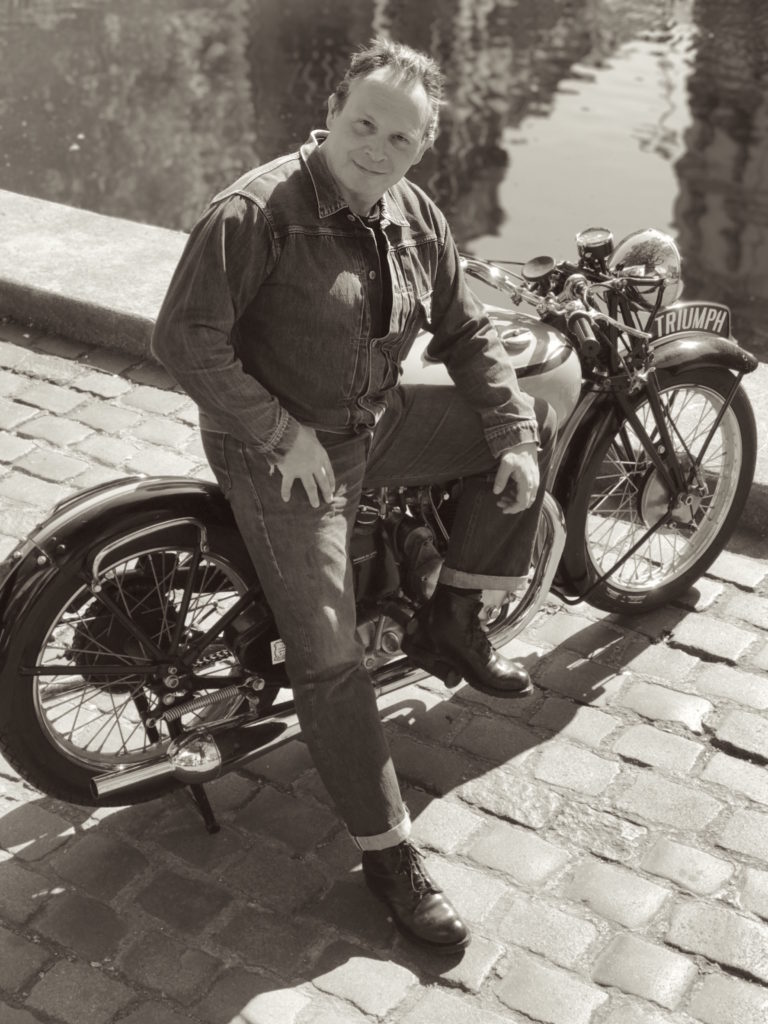
Taking early retirement in the 1980s, the unmarried Gaston Blanchard moved in with his mother. He bought a 6T Blackbird and became quite keen on classic bikes, even subscribing to the British magazine Classic Bike and joining the Triumph Owners Motor Cycle Club, whose badge we found on his workbench. At some point Blanchard must have realised that his old T100 was in fact quite special, and worth restoring. His paint job was competent but gives the Tiger the look of a BSA. His homemade wiring harness was rustic and an eyesore with only thick red wires, but it works well. However, Gaston Blanchard’s engine-building and fitting skills were beyond reproach. He renovated the engine and transmission with genuine, new old-stock parts. The rare MN2L Magdyno is a Lucas-reconditioned unit dated 1954, with an expensive-looking bronze plate repair to the drive end bearing housing. It must have cost a lot, even in the 1980s. Judging by the faint traces of soot on the plugs and in the ends of the cocktail shaker silencers, which appear to be genuine NOS pieces (as nobody was making replicas back then), Blanchard probably fired the Tiger 100 up a few times to check the timing and lighting. We can be sure that he did not ride it as the bottom fork yoke was fitted back-to-front, interfering with the chassis geometry. It would have been dangerous. In any case, he had his 650cc Triumph, which locals remember seeing him riding from time to time.
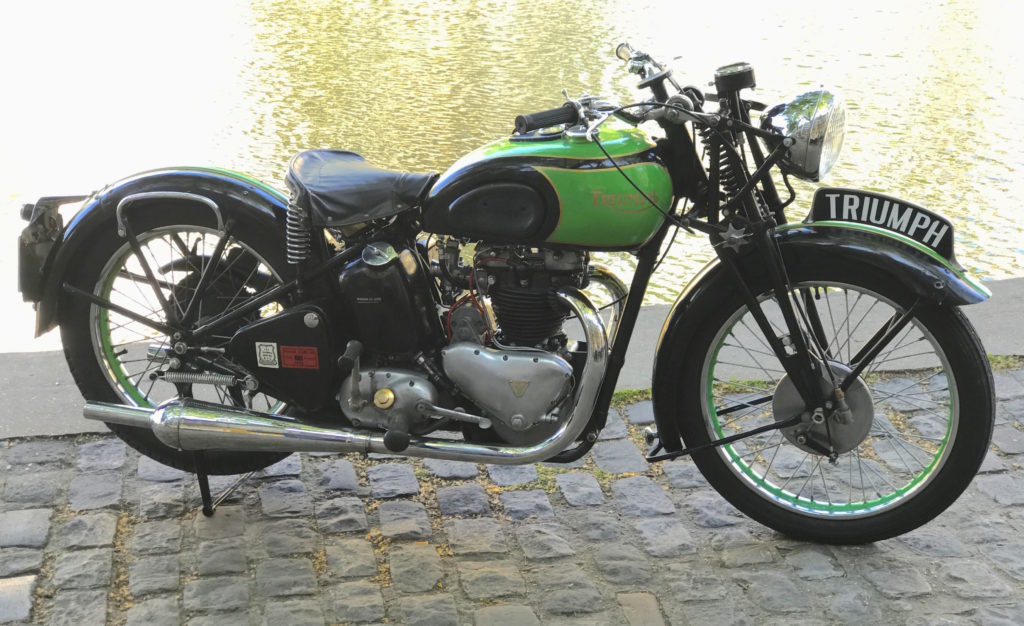
We took the Triumph back to Paris, where Mimo and I sorted out the fork, and checked the engine and transmission. Jake Robbins Vintage Engineering supplied the right fork spring - Blanchard had fitted a spring from the lightweight chassis. The fork is not the 1940 type with the double counter-springs but that is just a detail, like the paintjob. The headlamp is wrong but who’s asking? It throws a beam up the road and finding an 8-inch original or a decent copy is not a priority. The priority is to run-in the motor carefully and take the Tigre Cent back to the Route Nationale 29, which still exists but was renamed the D1029, with heavy traffic routed on the new A29 motorway, built a few kilometres to the south. Mechanically, the motor is almost noiseless, with minimal noise from the transmission and gearbox. The cocktail shaker silencers emit a powerful burble that rises to a menacing snarl when the throttle is blipped. The twistgrip is a very rare, original example of the ratchet type available as an option to riders wanting a form of cruise control. It is useful as enables you to make hand signals, although most car drivers these days are unfamiliar with hand signals, apart from the single or twin-finger variety one makes after being cut off by them. I have never liked the rubber-mounted handlebars fitted to late 1930s Triumphs but tightened up good and hard, the bars don’t move and handling is very light and precise. Speed cameras and traffic cops with penalty quotas to fill each month will make it hard to beat Monsieur Morin’s times between Amiens and Saint-Quentin in November 1939, but we will salute his ghost as we give the old Tigre Cent a handful of throttle along the RN29. Perhaps the ghosts of World War One, who haunt the many battlefields along the route, will remember Monsieur Morin’s Triumph.
How can they not, when she sounds like this?
Scram Africa
[Photos: Götz Göppert]
Want to put your BikeExif-ready Scrambler to the test? No, not on the mean streets of LA or Paris, but the sand and rocks of Morocco! Scram Africa is organized by Barcelona's Fuel Bespoke custom shop, as a way to get out and have some fun on cool machinery, regardless its suitability for the terrain. As Bespoke puts it on their website; it's 'more than a trip, it's an amazing experience about overcoming, adventure and friendship. A trip of more than 2000 km for scramblers to the south of Morocco by roads, trails and dunes. A trip only for nostalgic riders!'

As 'nostalgic riders' ourselves (whatever that means), the appeal of taking a converted 30-year of BMW roadster over 1200 miles of rough terrain sounds like tremendous fun, and a lot of hard work. That matches the description of ace photographer Götz Göppert, who rode along with the traveling Scram circus this year. Here are his thoughts on the event:

"I’d been to Morocco for work in fashion shoots, and the people are great, very helpful. Wherever you go they try to help you, sell you things and offer you drinks. On this trip we didn’t get to see a lot of people though, we were always on a bike. We started in Tangier and visited the largest souk (market) in the world, we had half a day off for that. With lots of little villages in the middle of nowhere, when we finally stopped you’re happy to get off the bike and sit by the pool for a while, and in the morning you’re happy to get on your bike and get out of there!

"Karles (Fuel Bespoke) called and asked if I'd shoot this year's ride; it was exactly the right moment. I called Ducati and got one of their new Scramblers. It’s kind of a city bike, and not really meant to do this sort of ride - I brought it back broken! They didn’t mind. There were 18 bikes, 4 broke down, and there was one serious accident. Almost all the bikes had issues. We had a mechanic with a car who followed us, he repaired the machines when we'd arrive at the end of the day, starting at 5 or 6pm, but some bike didn’t get in till 10pm!

"Some of these bikes were 30 years old, so it was a real adventure, and real work on these street bikes; they were heavy, it was very soft sand, and it was hard work. Some were basically stock BMWs with knobby tires, and the riders had no experience riding off-road like this. They were heavy bikes, they’d get stuck in the sand, and it took 2 people at least to push them out, in the middle of the day in the heat! But you meet a lot of great people. We’d all take turns pushing each other.

They've been doing the trip 6 or 7 years now. We began on the Barcelona-Tangier ferry, then we crossed the countryside into the desert, where there's nothing dangerous but the occasional goat. On the flat areas you could see 100km in front of you, there was so much empty space, and then the mountains in the distance. If there was a house, we'd stop, have some tea and dates, and go off again! The lowland areas were really soft sand, and the mountain roads were made of big rocks. It was really hot in the desert, 35-38 degrees, while in the mountains it was chilly, like 7 or 8 degrees, so you needed warm clothes and cold clothes.

You can’t go over the sandy parts too fast, as you don’t want to break your bike, and if you break yourself it’s a long way from the hospital. In the Atlas mountains it’s all green, and very pretty; then in the sahara you’re on the sand. I never used the tents, just slept on the sand, on a mattress, and in the morning you shake the scorpions from your boots. You don’t see anything but the stars, there’s nothing else out there. It’s something you can’t forget."


"The desert was really hot, you ride all day, there's good food in Morocco - its really nice."





"In some places it's all flat, and you go straight for 100km, and there’s nothing. You see the mountains at the end, and you keep going, and there’s nobody."




"Some of the riders were on basically stock 30-year old BMWs with knobbies, and no experience off road like this. They were heavy bikes, they’d get stuck in the sand, it took 2 people to push them in the heat! But you meet a lot of great people. We’d all take turns pushing each other."







Goodwood Revival
[Photos: Laurent Nivalle]
Disneyland for revivalist gearheads. That pretty much sums up the Goodwood Revival, the enormously popular retro-themed event held on the expansive grounds of Lord Charles March's estate in the south of England. However you feel about mixing those 3 words will probably determine your feelings about Goodwood, as it's the best summary we can provide, having attended the event occasionally since 2004. It's a fun, expensive, crowded, colorful, anachronistic dress-up party, with a very wide latitude on the suggested 'period' attire (1940s-60s), and a surprisingly large percentage of participants playing along with the game.
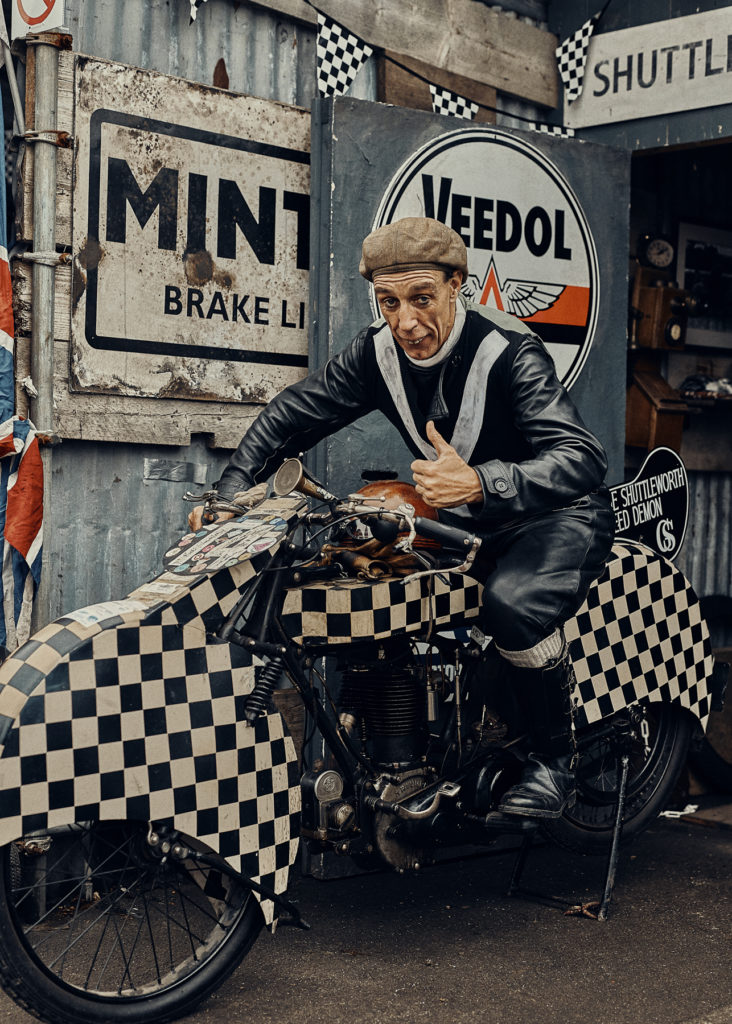
The remarkable effect of 90% period attire at a vintage motorsports/aviation carnival is amazing photography. Not that acclaimed French photographer Laurent Nivalle needed the costumes to boost his work; he was hired by Sebastien Chirpaz of A Piece of Chic to cover the event. But, since vintage suits and dresses are omnipresent at Goodwood, his photos gorgeously capture the eerie simulacra of contemporary mechanical and human subject matter merging into a slot in our collective memory. Since we learn the history of the period in question through photographs, Goodwood can really bend the mind!
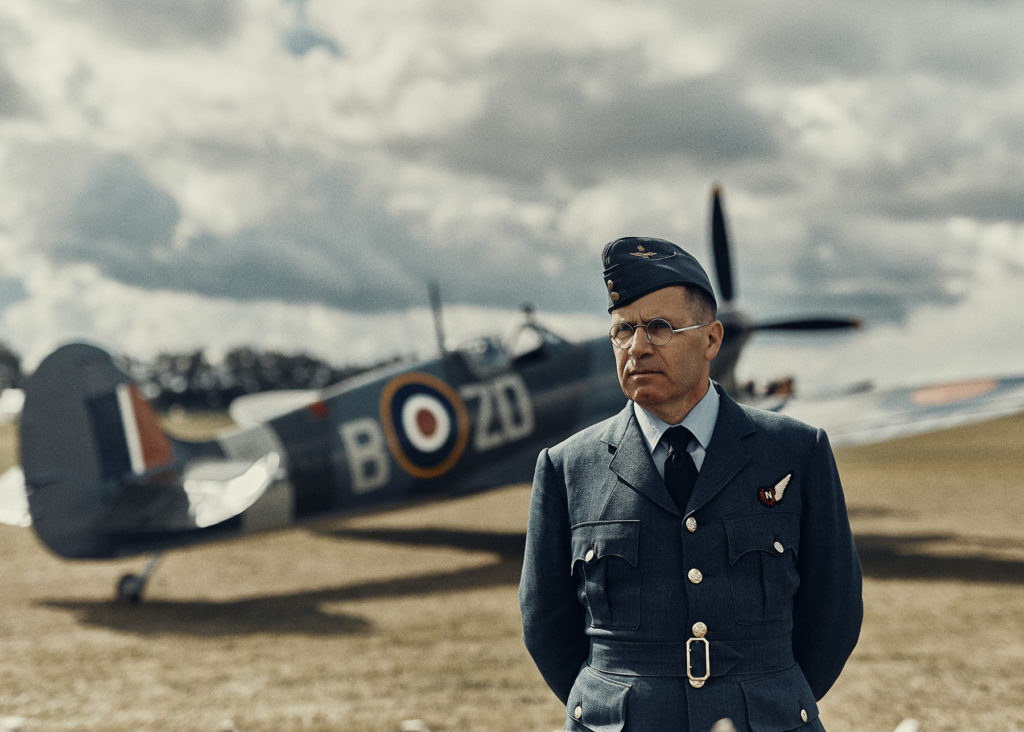
Goodwood is centered around the history of this private racing circuit, which was active on the European Formula One and club racing circuit from 1948-1966. The vehicles (and outfits) are nominally expected to fall within this timeline, and the best of the era comes out to play on the race track. Videos of the auto racing in particular show drivers really trying, whether they're in a Ford Cortina or a Ferrari GTO; the circuit is narrow, with a wide (but not very wide) grass verge, and spins are common. As the grass makes an even more slick surface than the track, over-exuberant drifting can lead to body-damaging shunts into the boundary walls. And everyone likes to see a multi-$Million getting used, and dented!
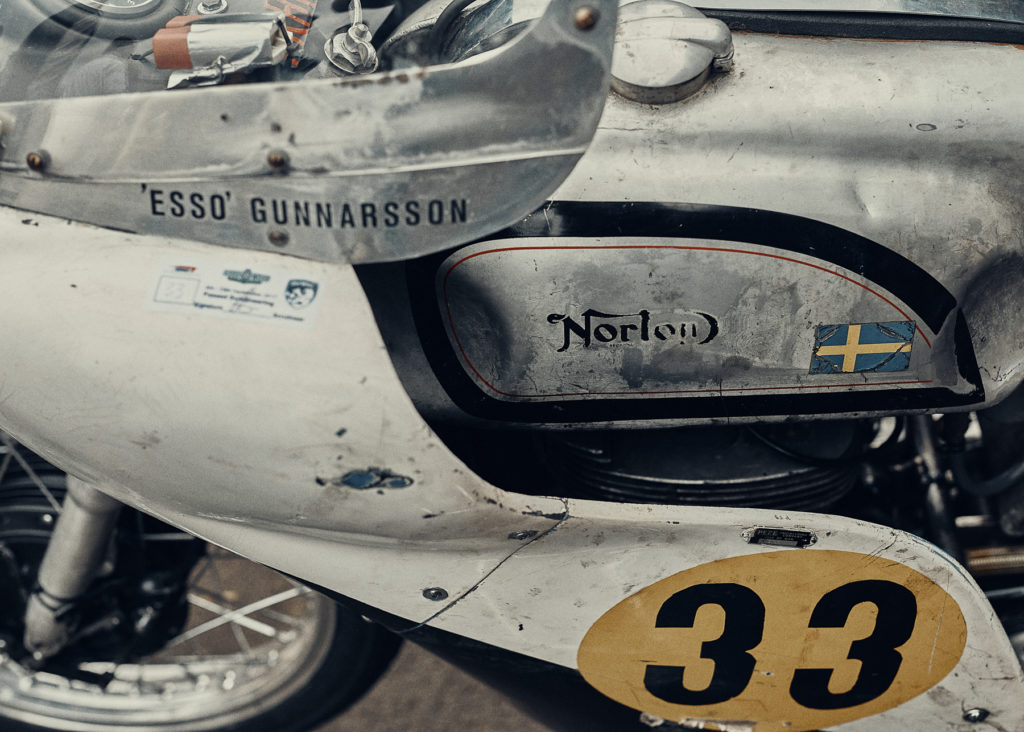
Goodwood also incorporates some fun motorcycle racing, although there are as many contemporary racing bikes - replicas - as genuine vintage motorcycles. Granted, the replicas are raced hard in the Lansdowne Series, and certainly fit with the reenactment vibe; there are also genuine Aermacchis, Nortons, and BMW Rennsports on the track. But there isn't the depth of exotica to match the automotive side, which is far more impressive, with rows of amazing GP and circuit-racing cars, their curvaceous bodywork tugging at some part of our hearts as Desire.
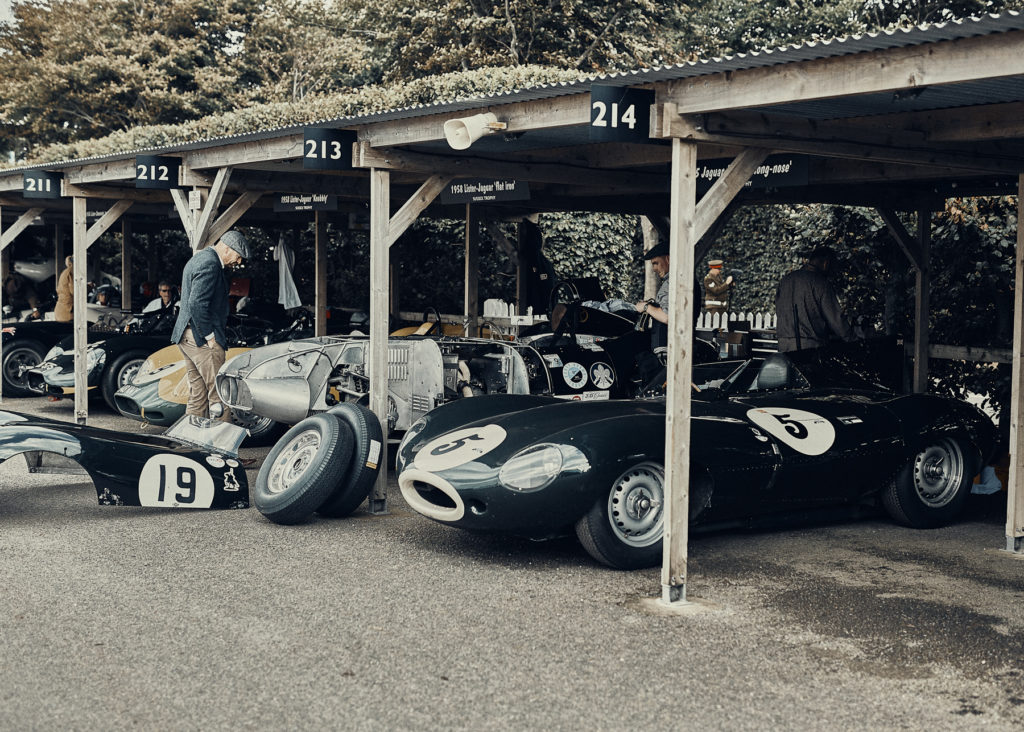
The aviation component is simply remarkable, and perhaps the most moving of all the activities, with a slew of old warbirds (Mustangs, Corsairs, Spitfires, Lightnings) taking off and flying in formation throughout the weekend event. Great sightlines of the parked planes, and the ability to inspect some up close, is a pure thrill, without the envy generated by some of the cars. Nobody expects to own a Spitfire except in a fantasy, but we all drive cars, and can't help but compare ourselves with the rich sods able to whack a mighty dent in their 250GTO Ferrari while the racing. That's burning thousand-dollar bills by the second!
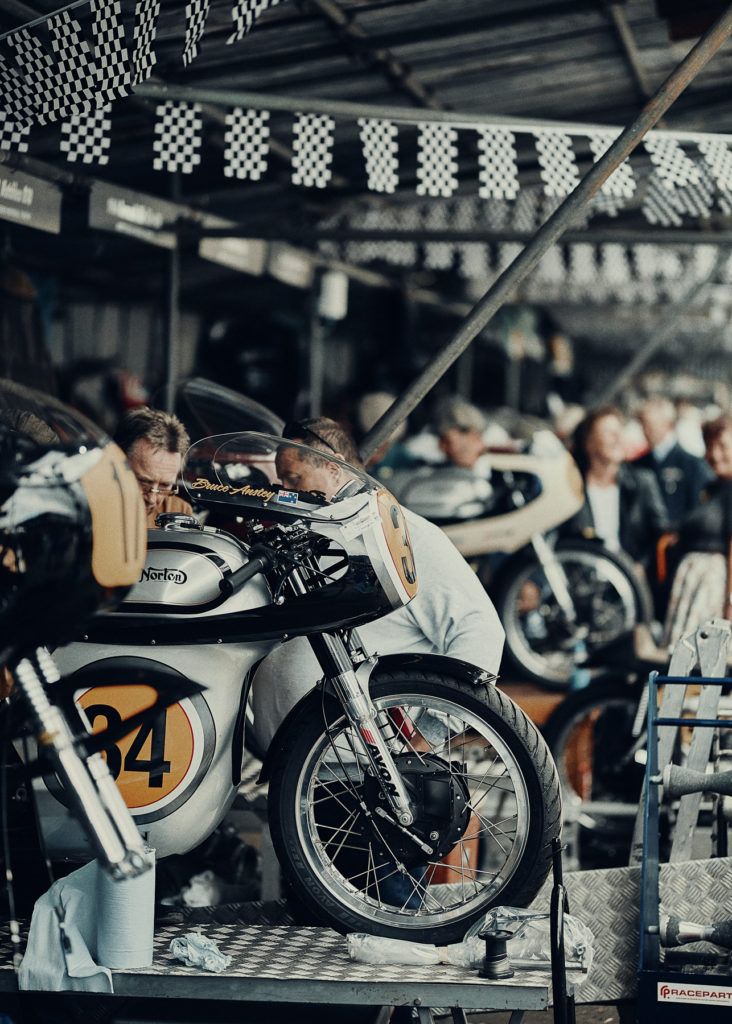
If you've never been, you really must. We'll leave it to you to draw your own conclusions, but there's plenty of fun to be had, and lots of interesting people to chat with. If you're not a VIP, you might get annoyed at the 'velvet ropes' around the most interesting machinery - the GP cars, the champagne tents, etc. The keen-eyed will spot the 'helicopter crowd' who fly in wearing bespoke vintage outfits from French couture houses - as spectacular as the cars in some cases, and sometimes just as expensive! The rest of us can enjoy the scene from the sidelines.
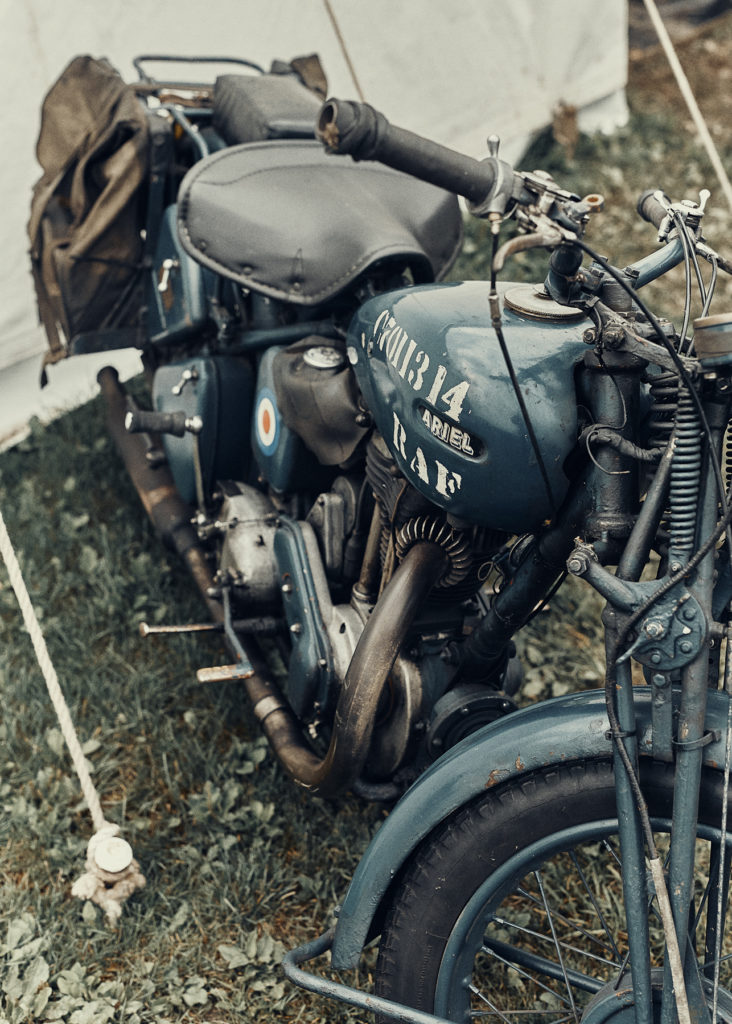
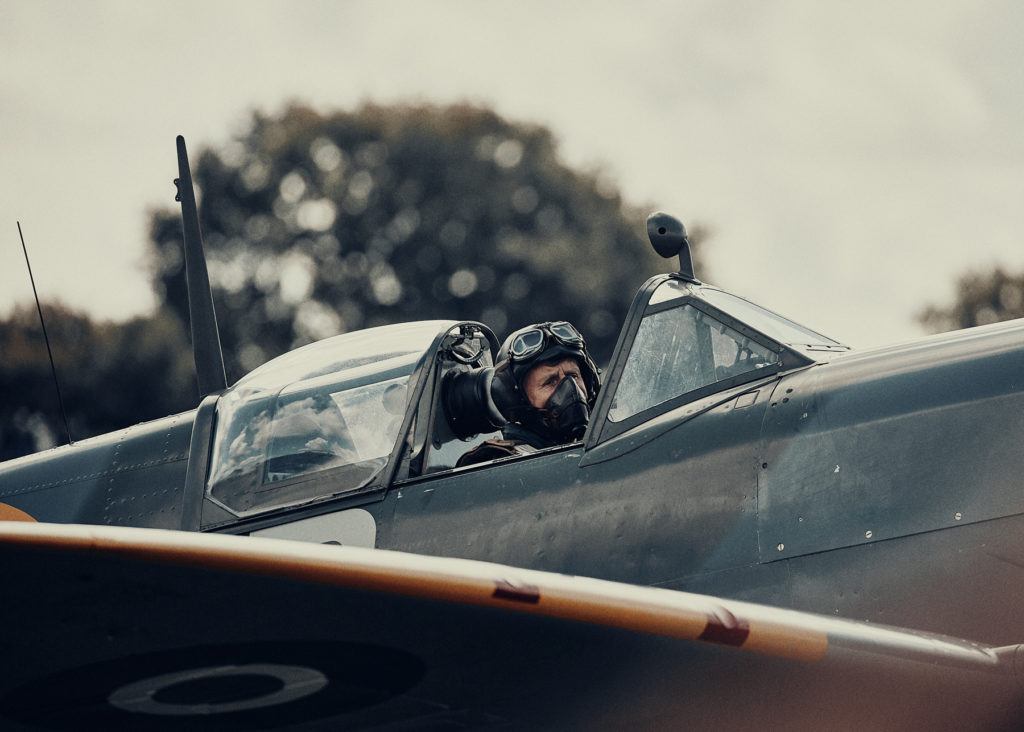
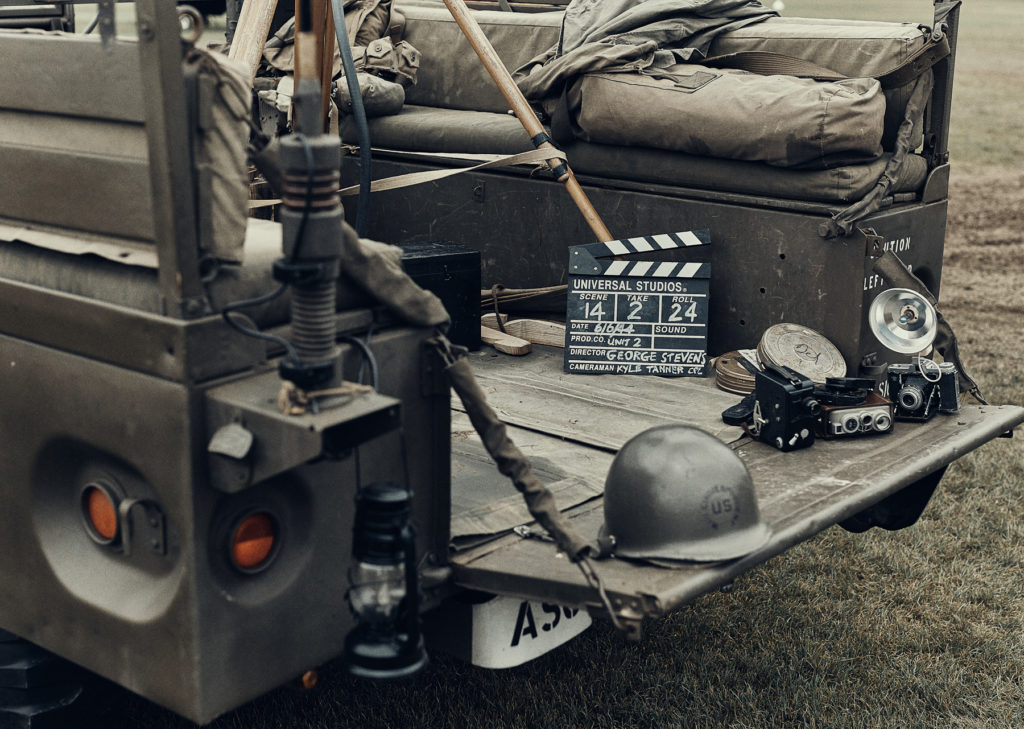

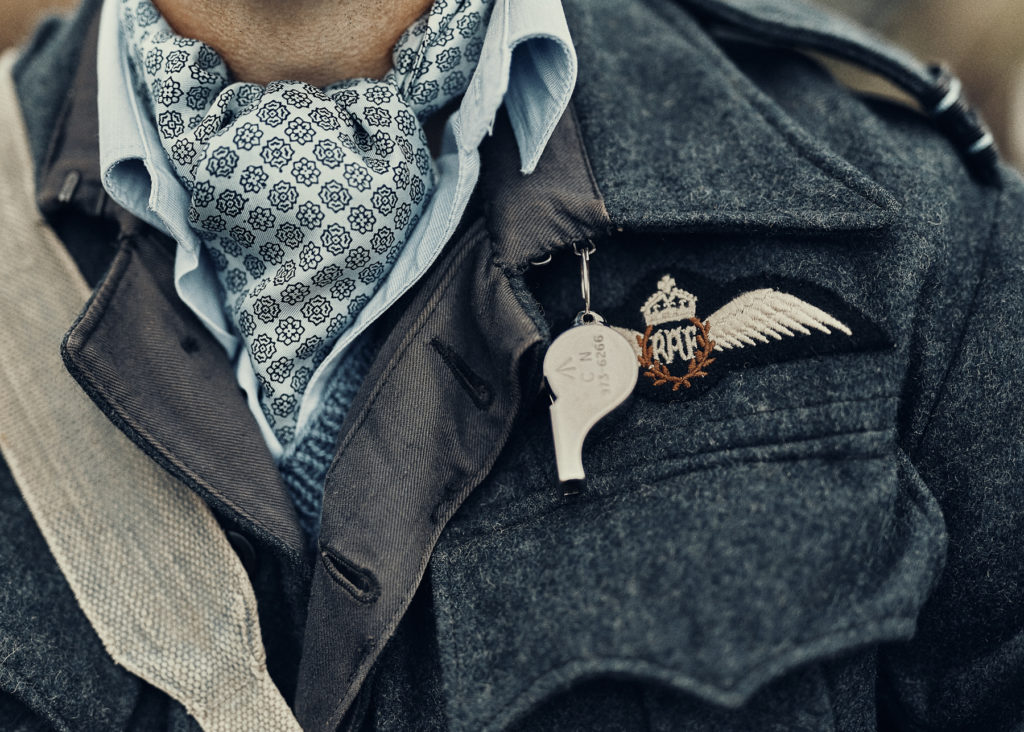
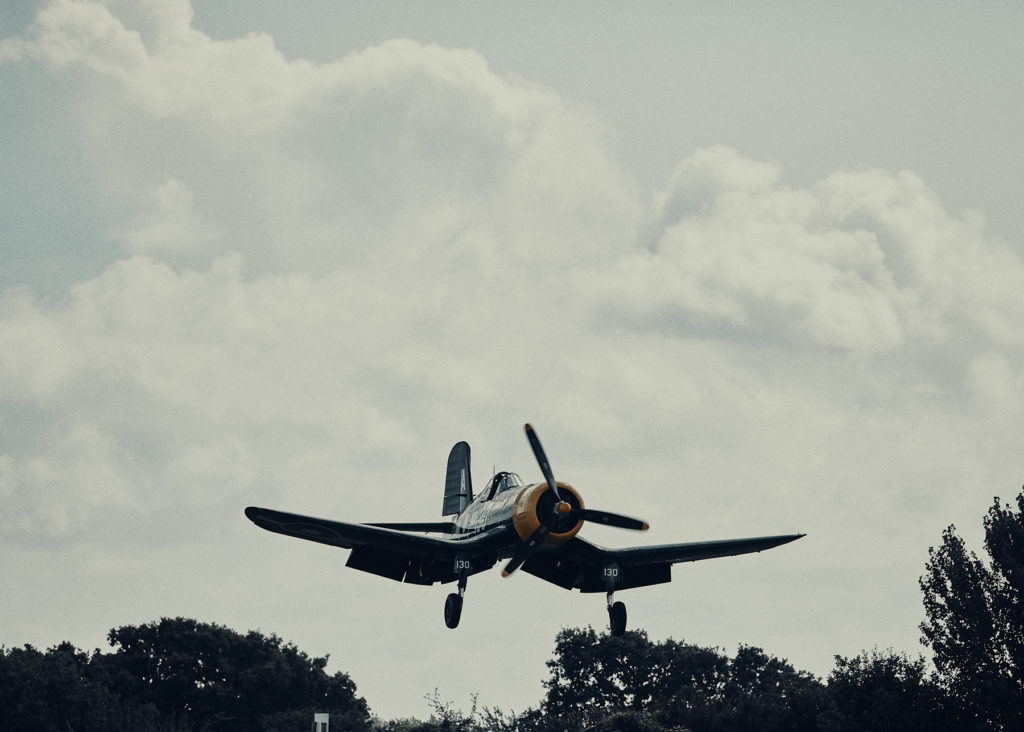
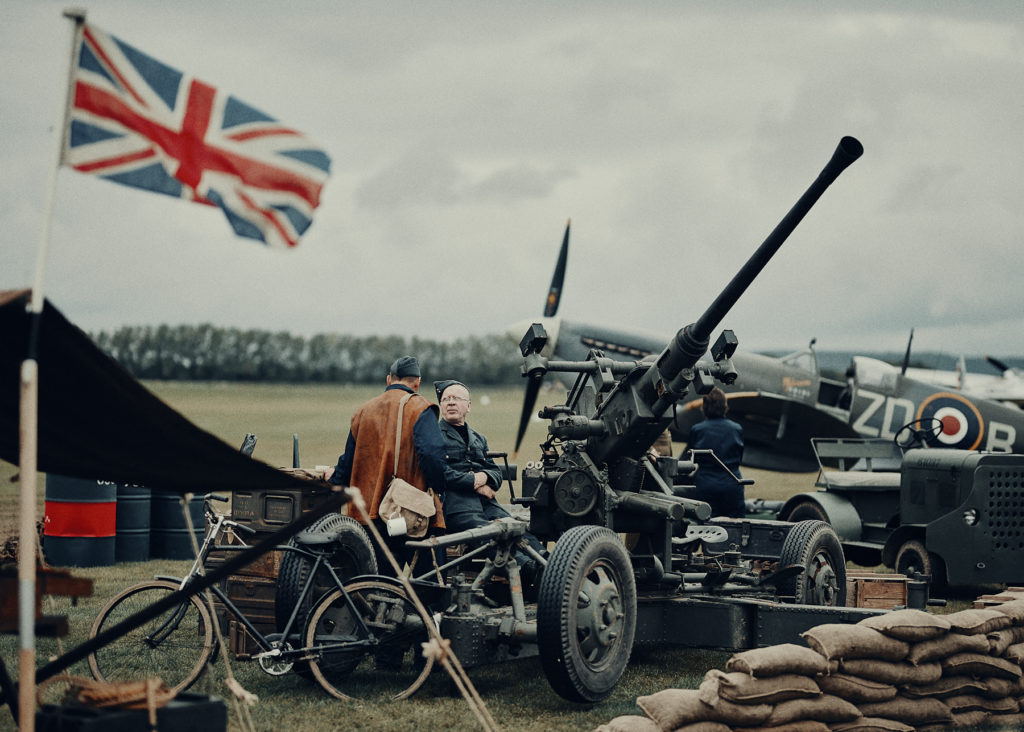
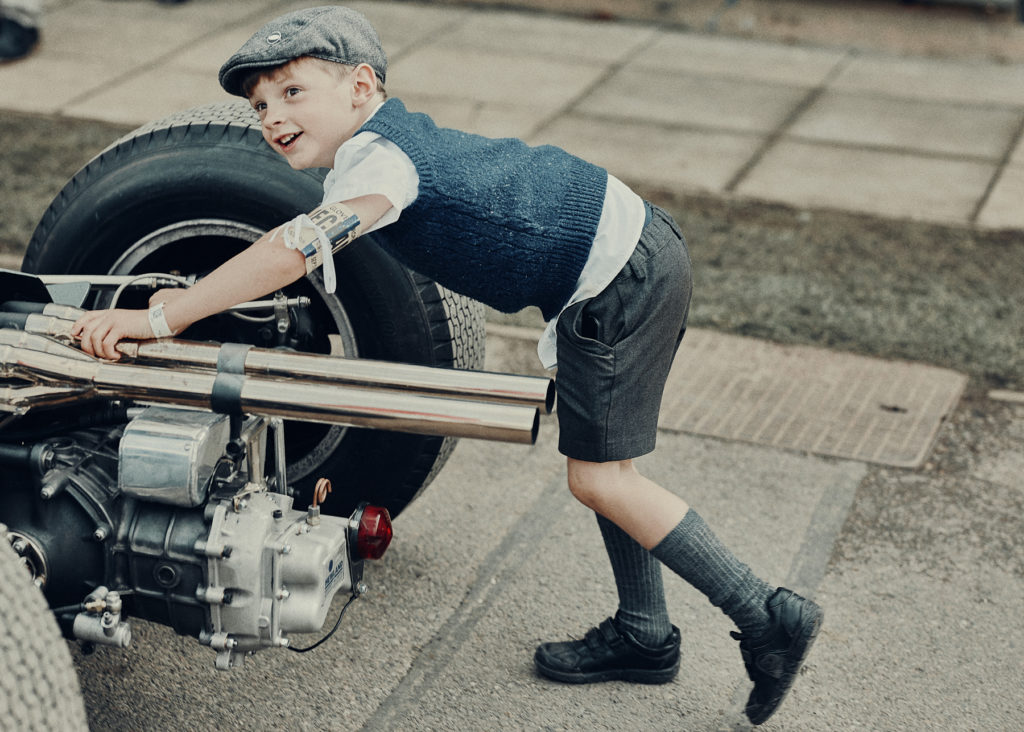
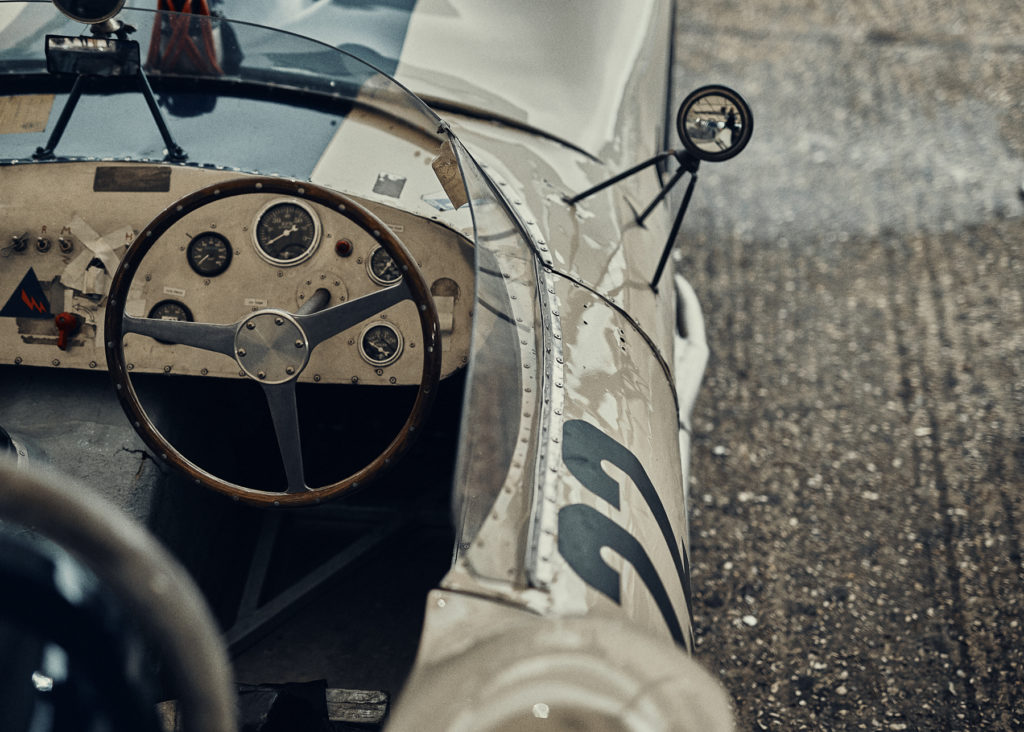

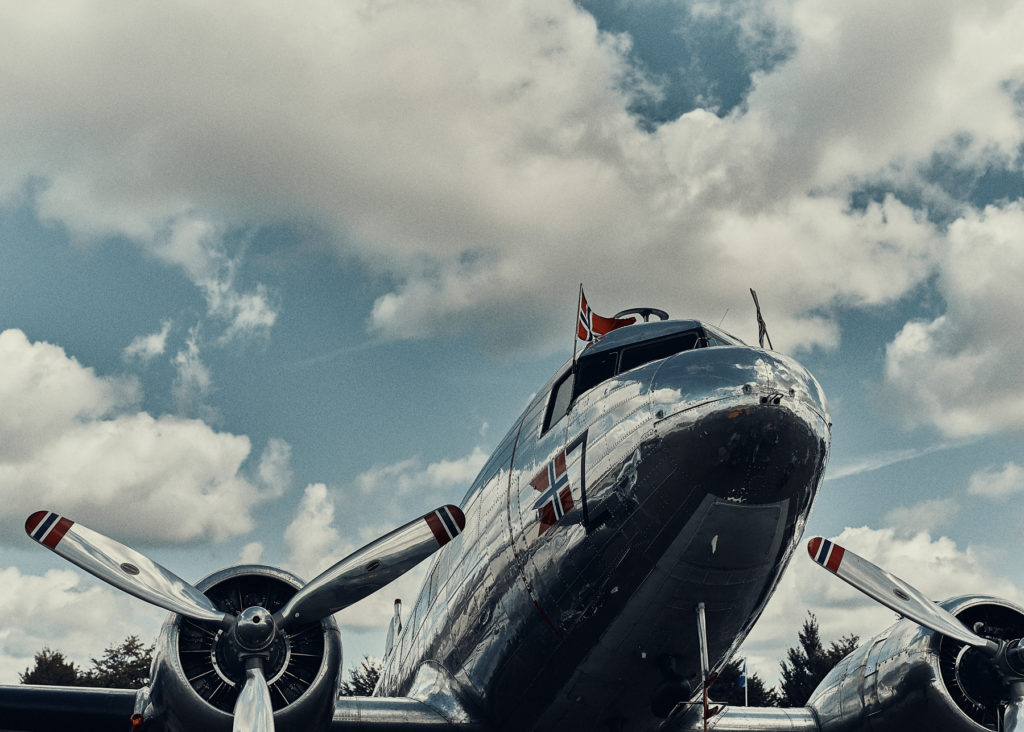
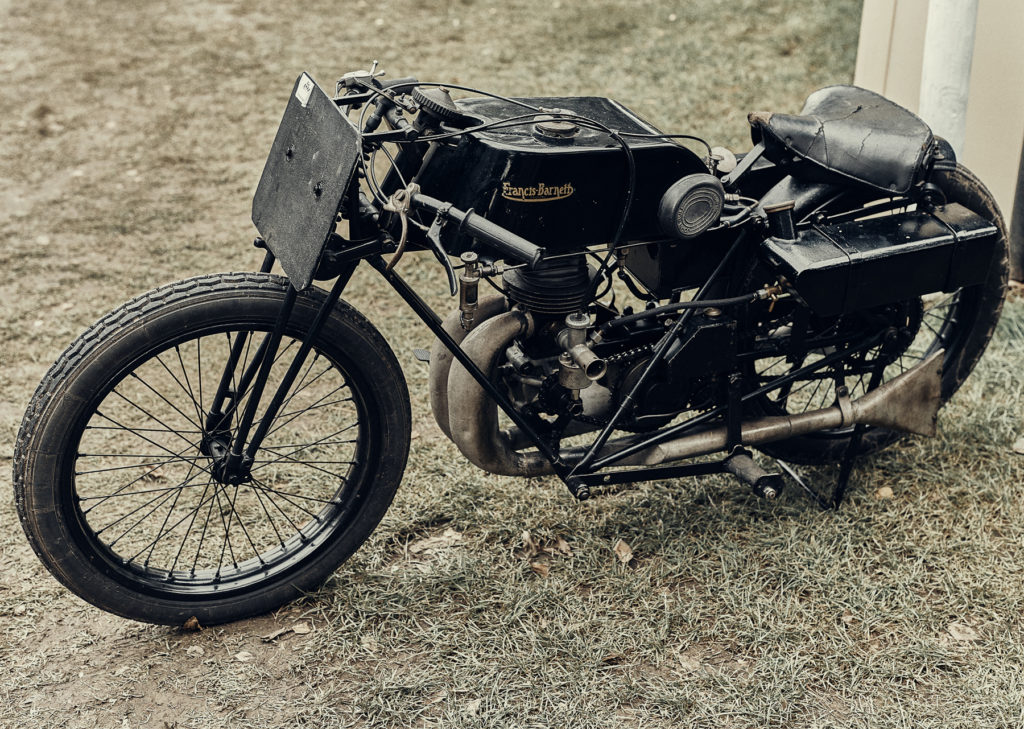
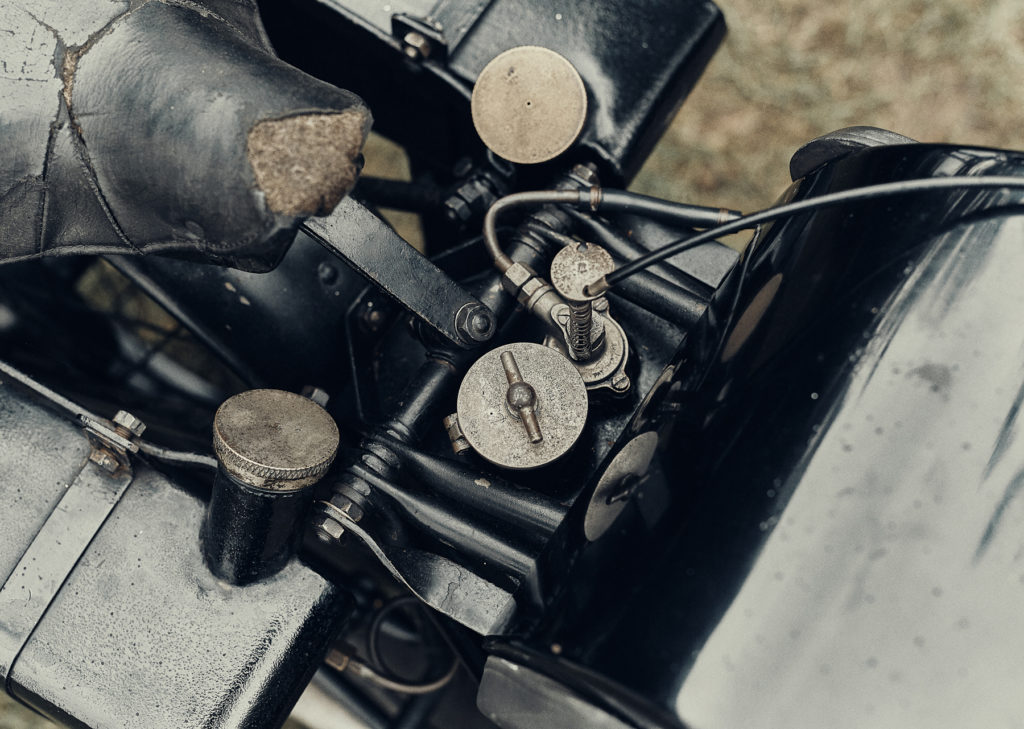
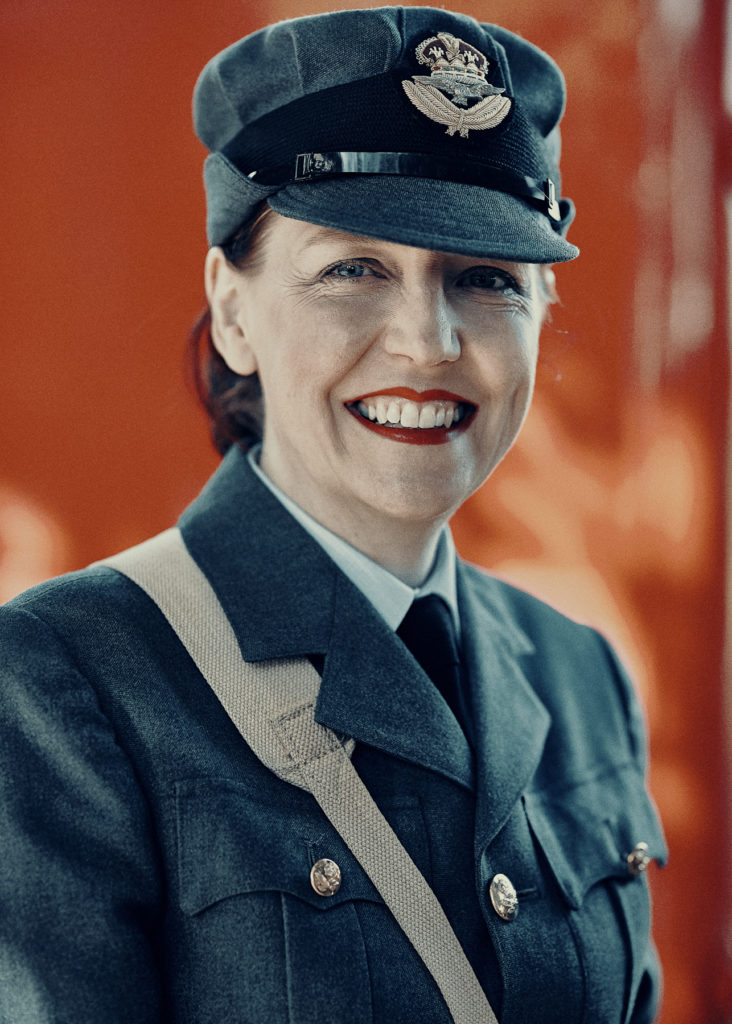
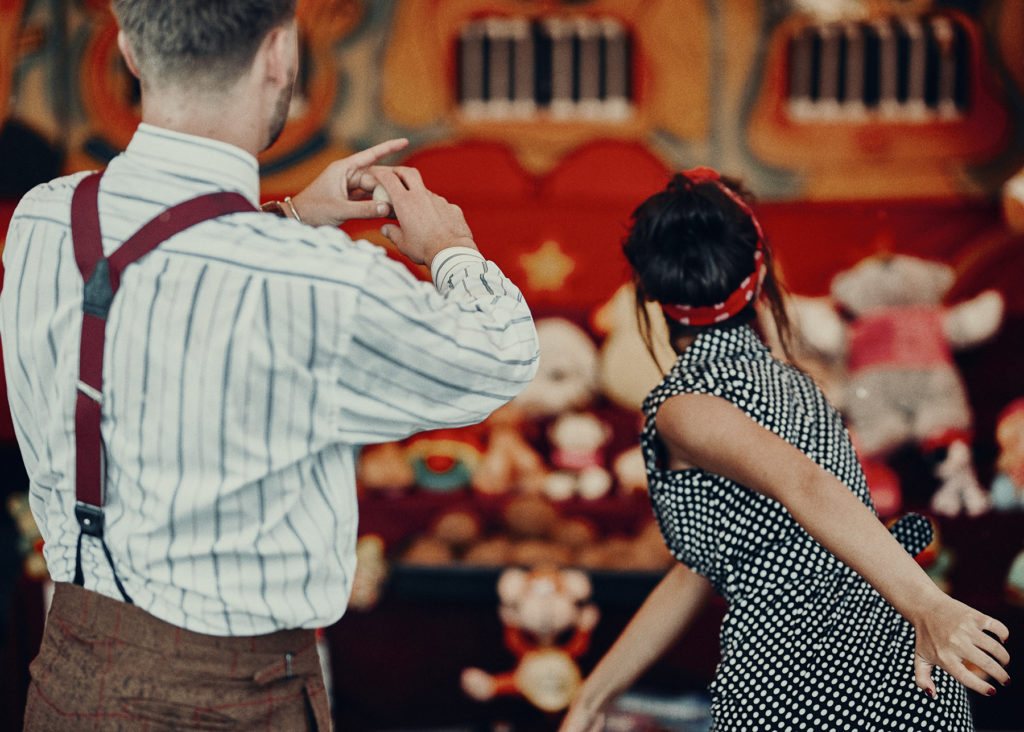
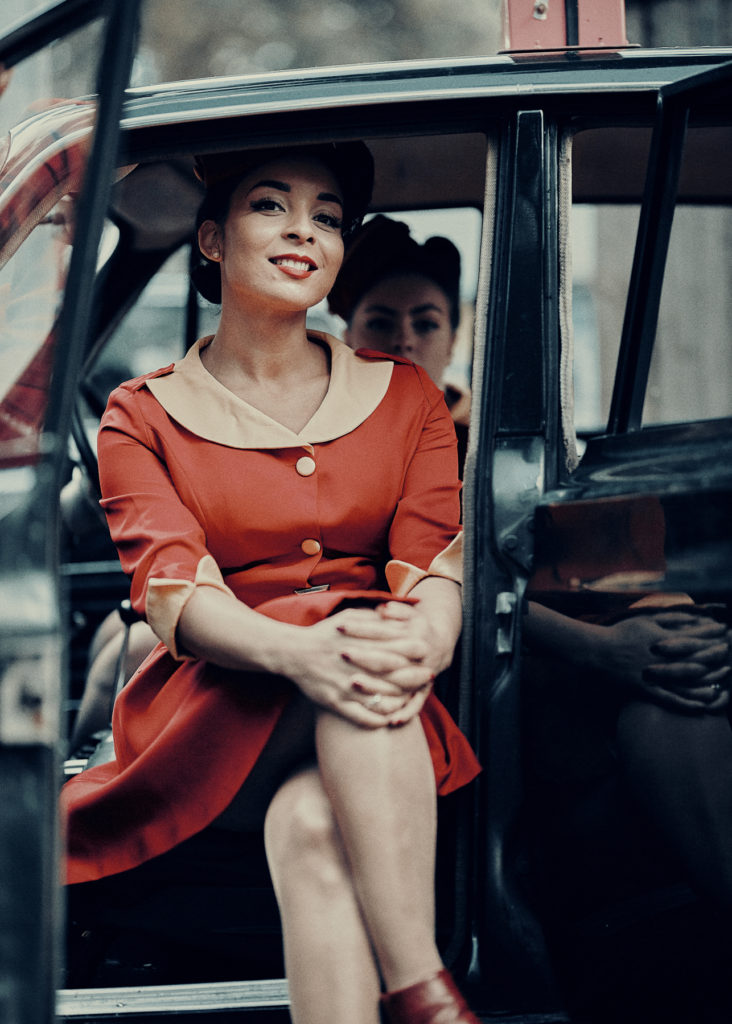
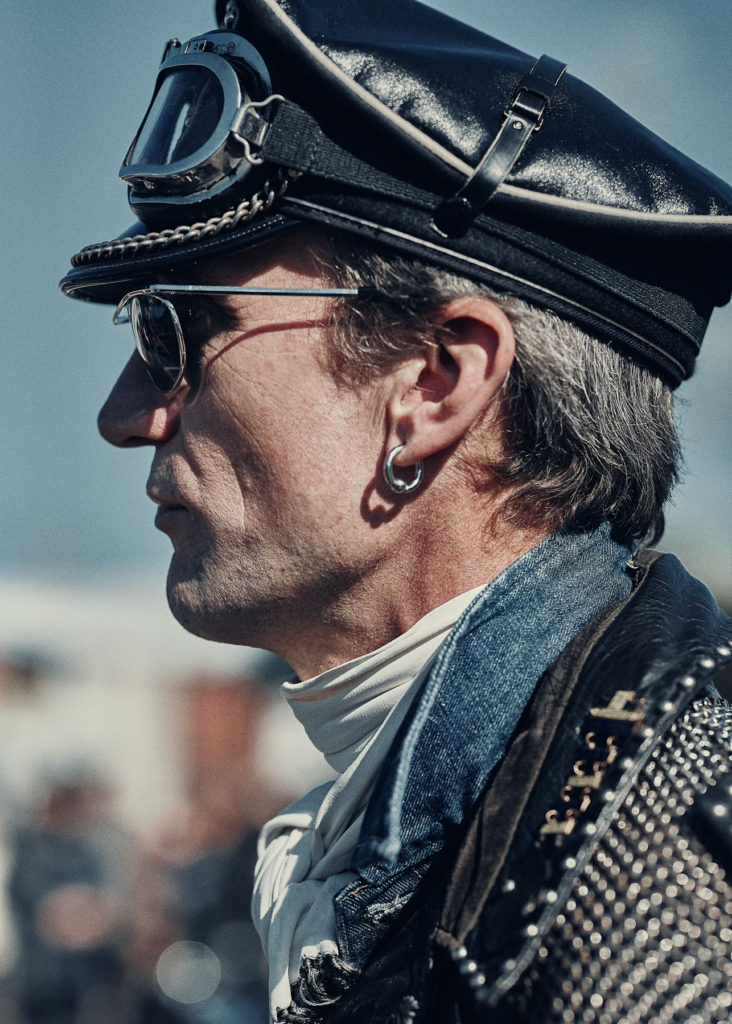

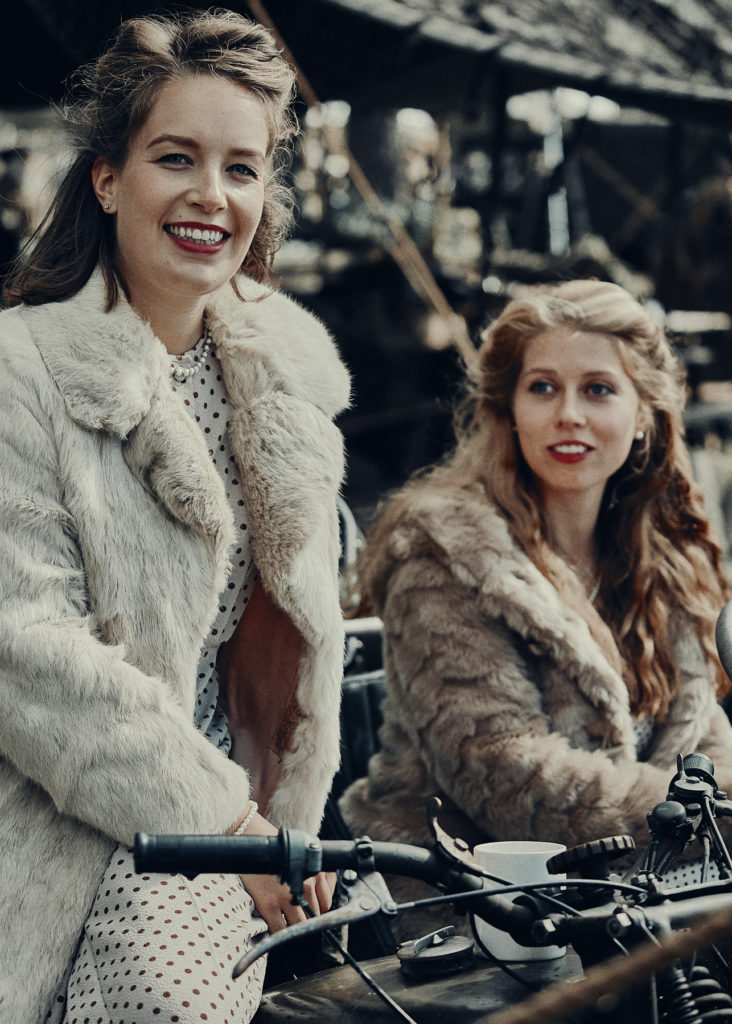
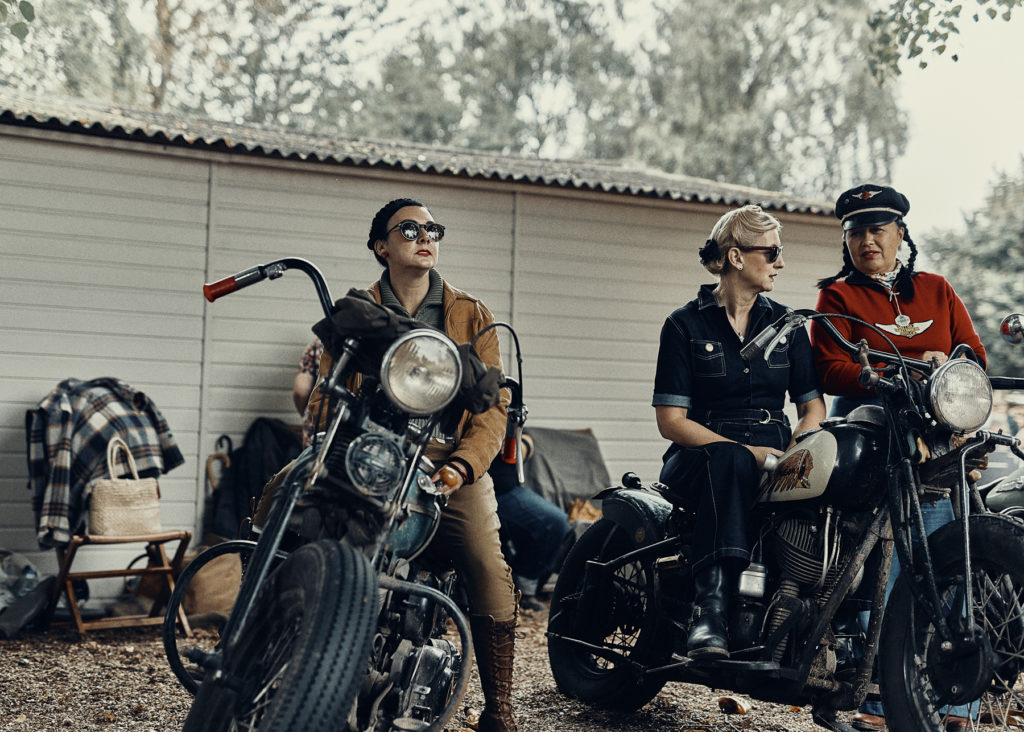
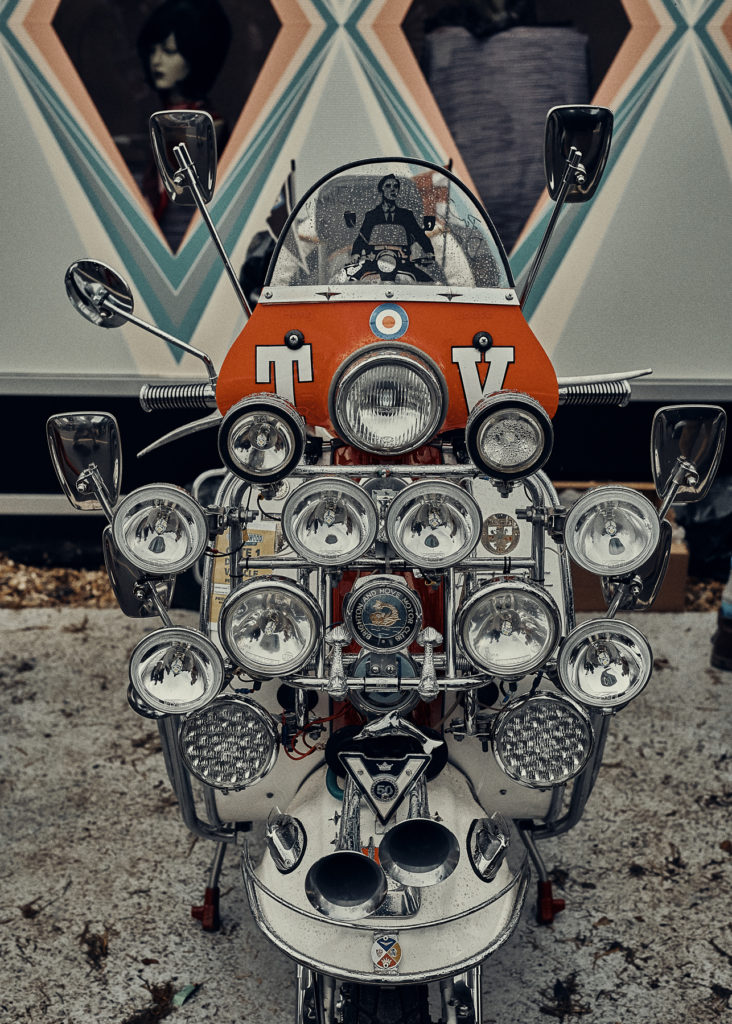
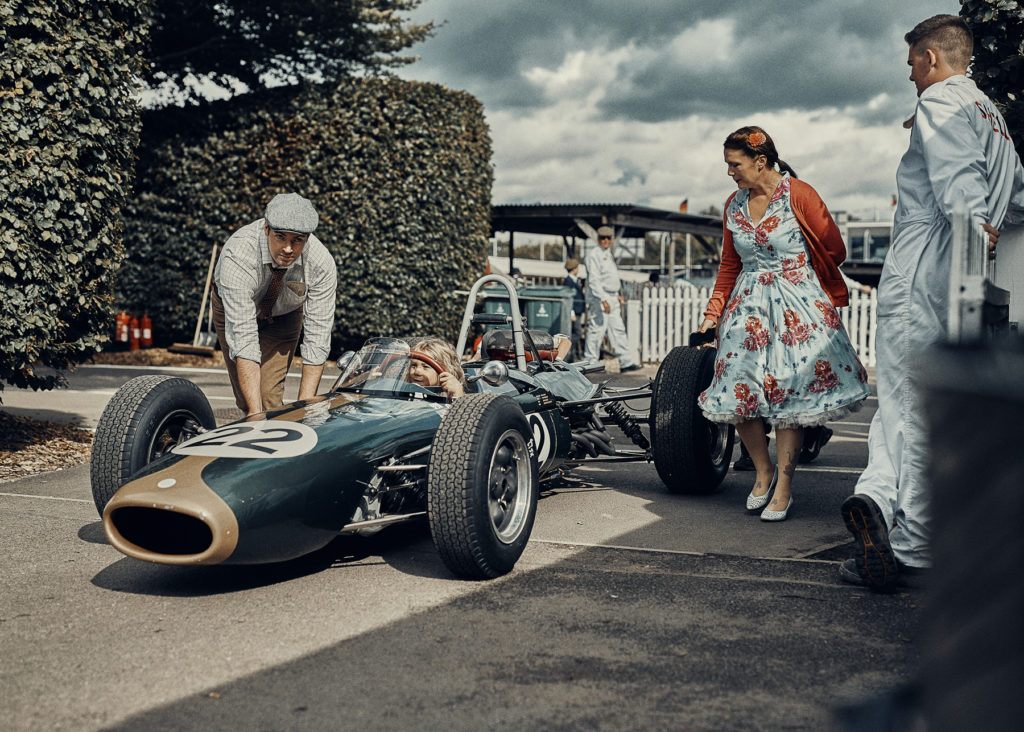

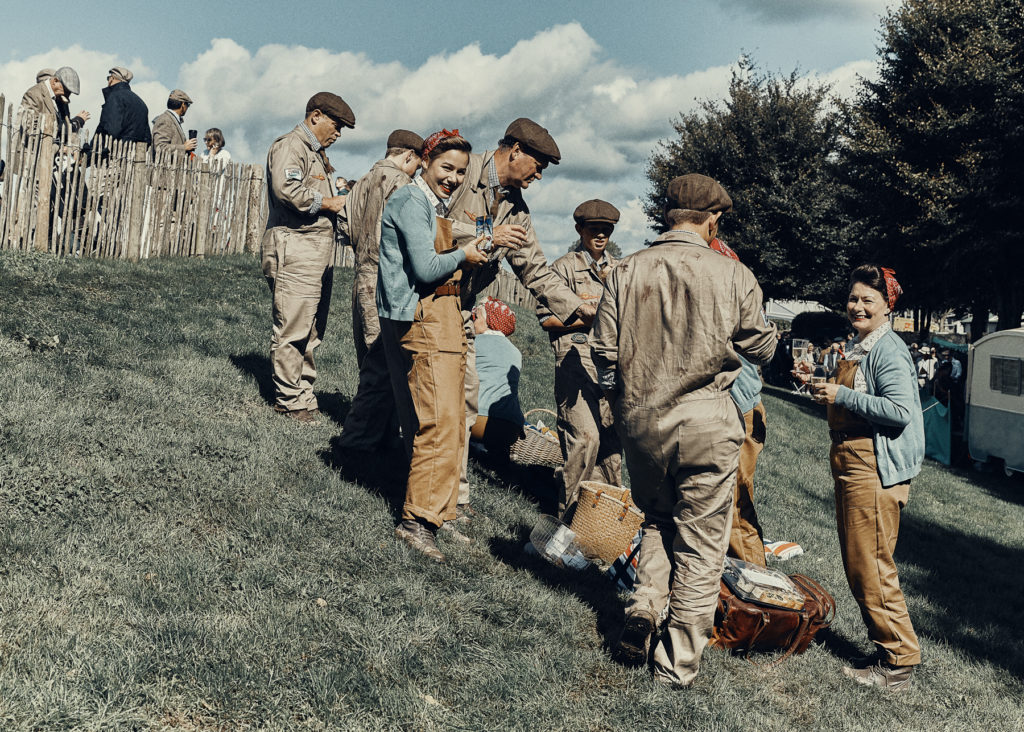
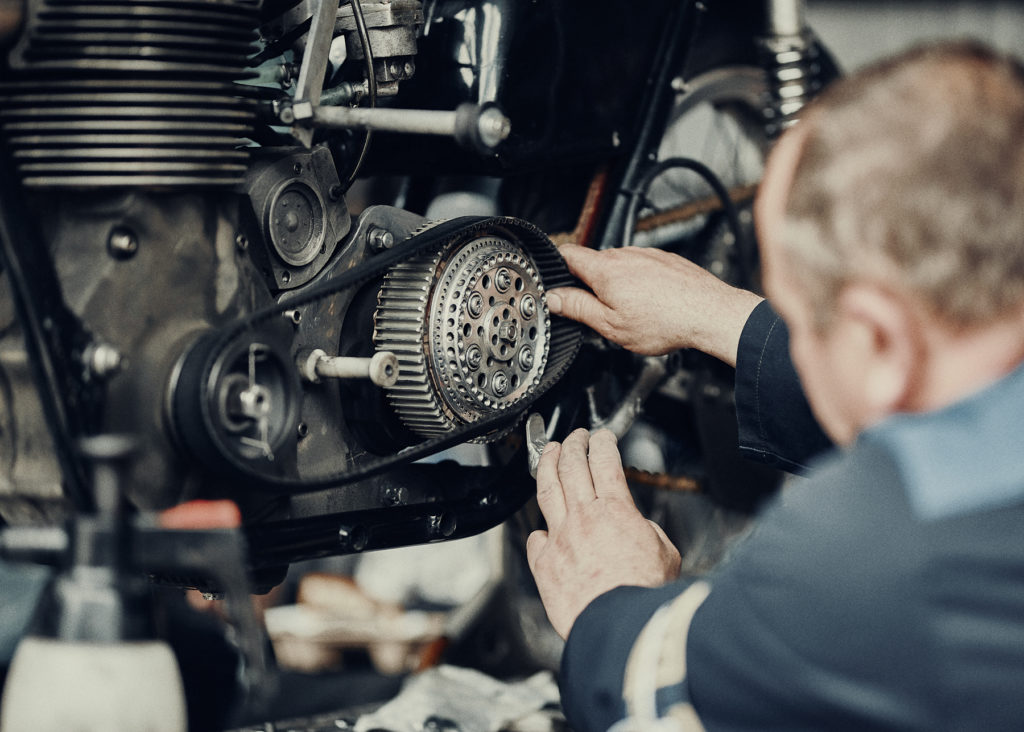
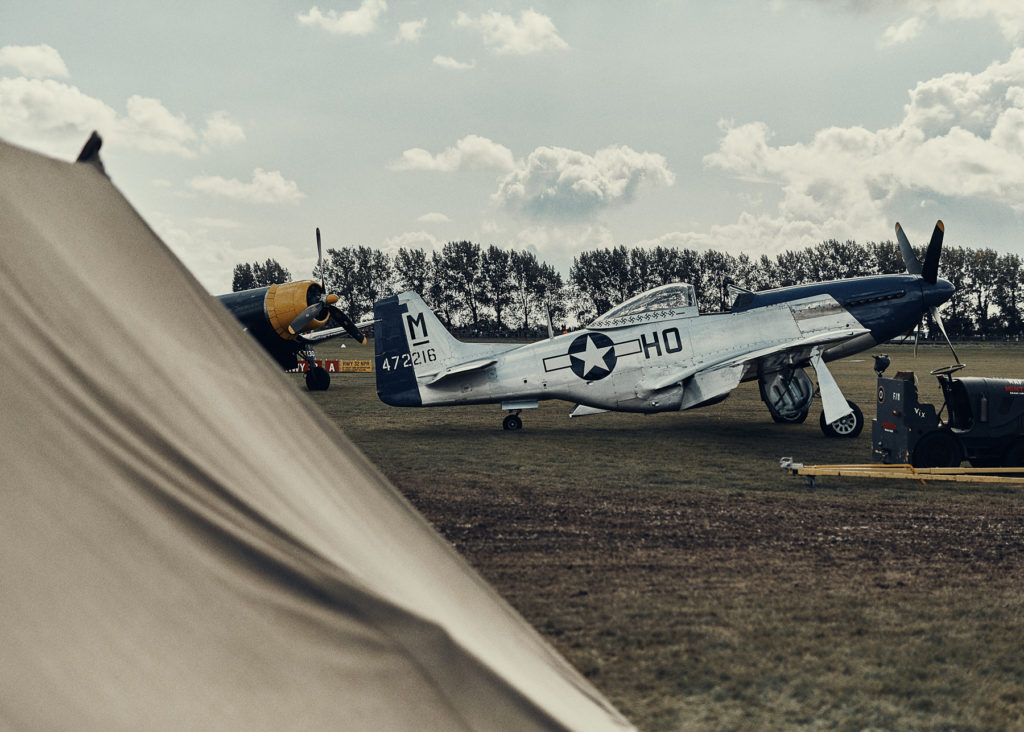



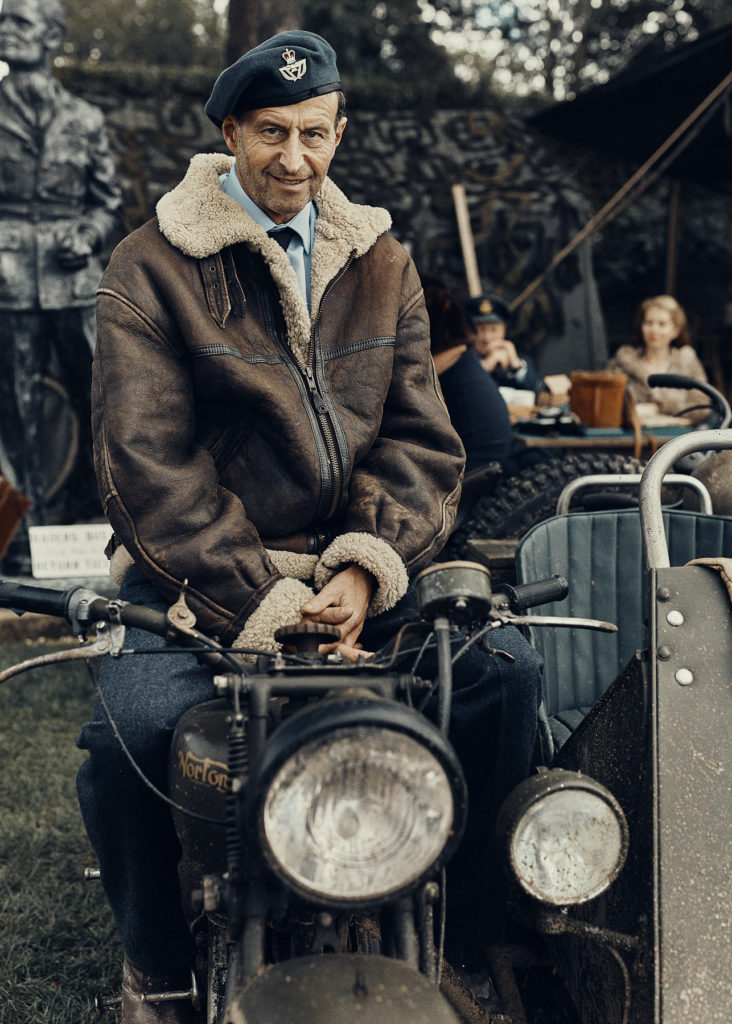
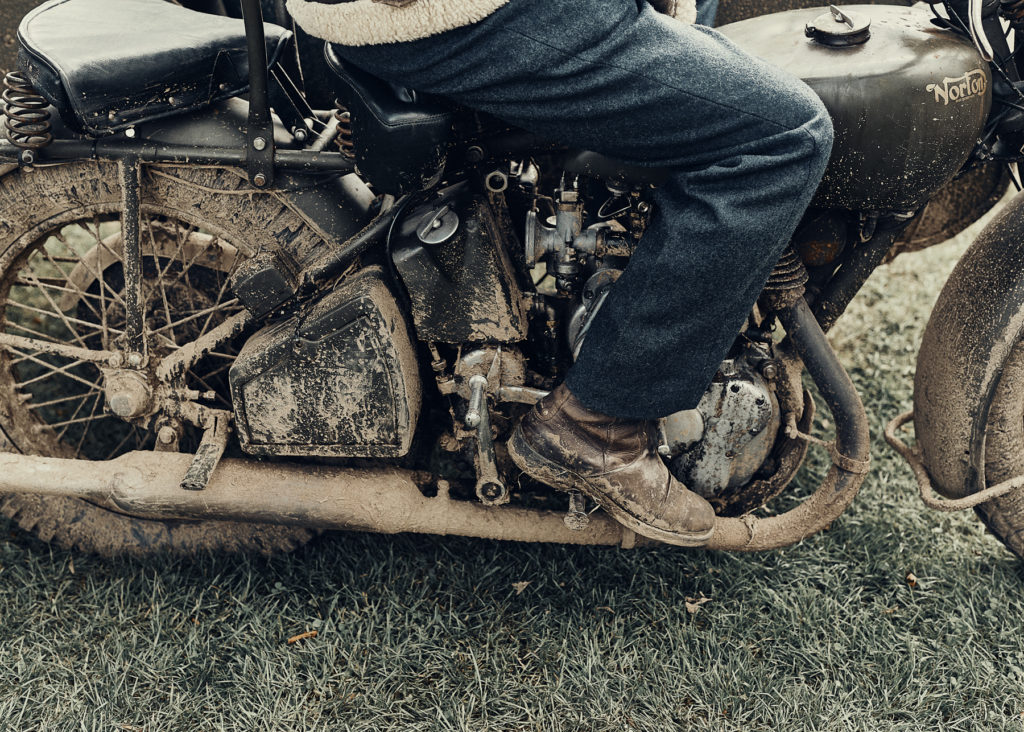

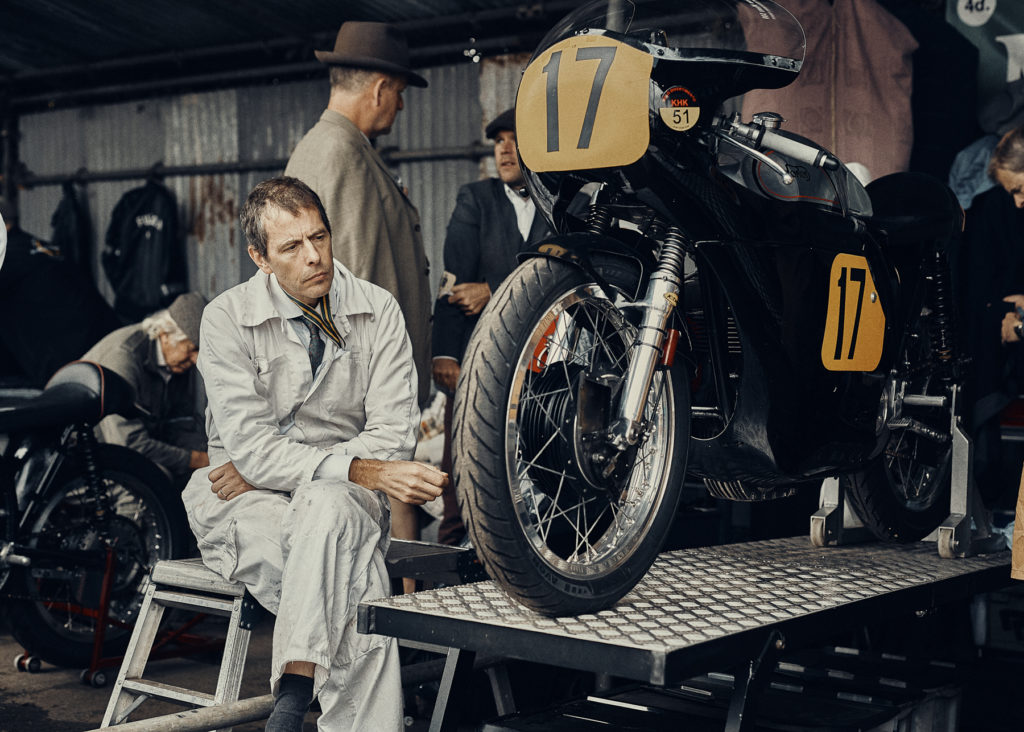
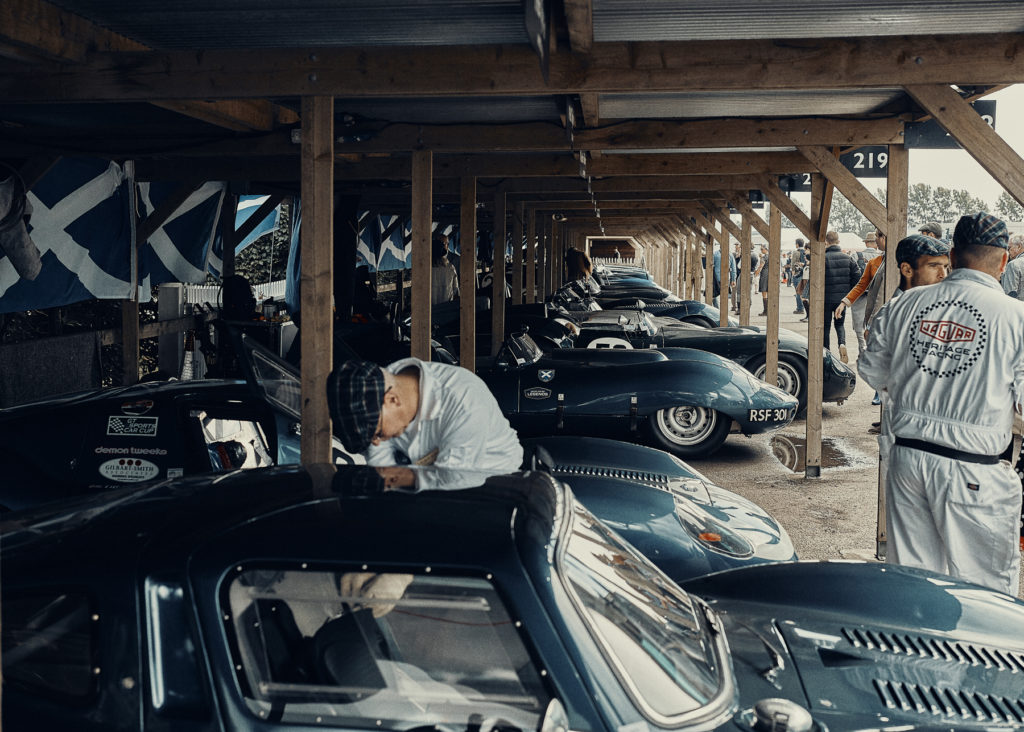
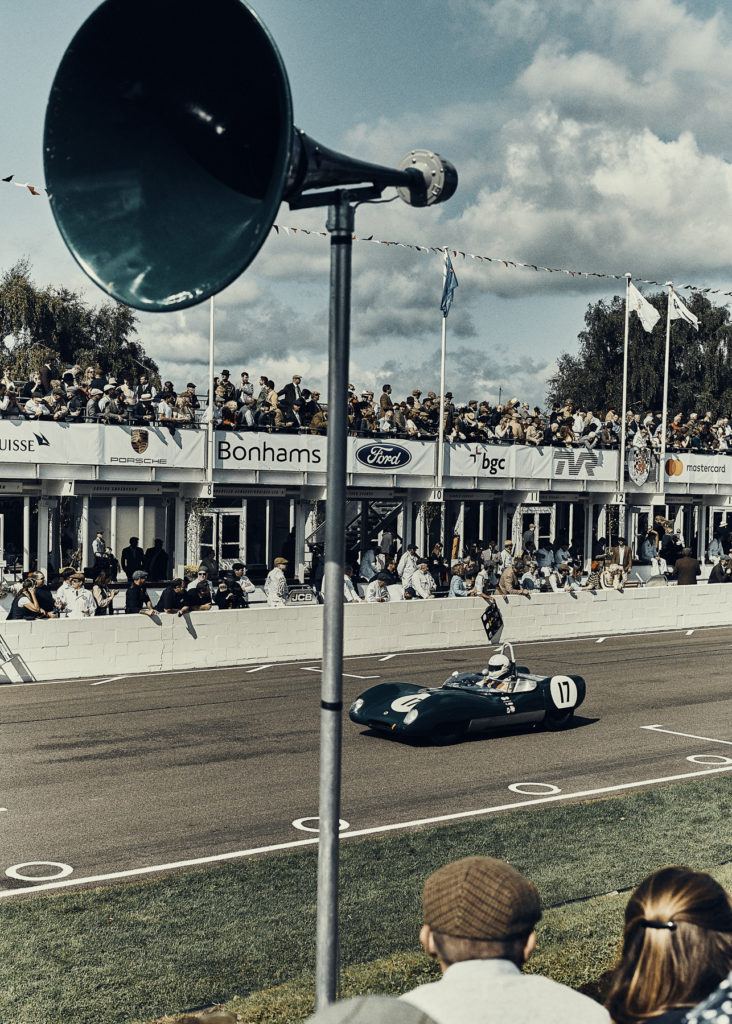
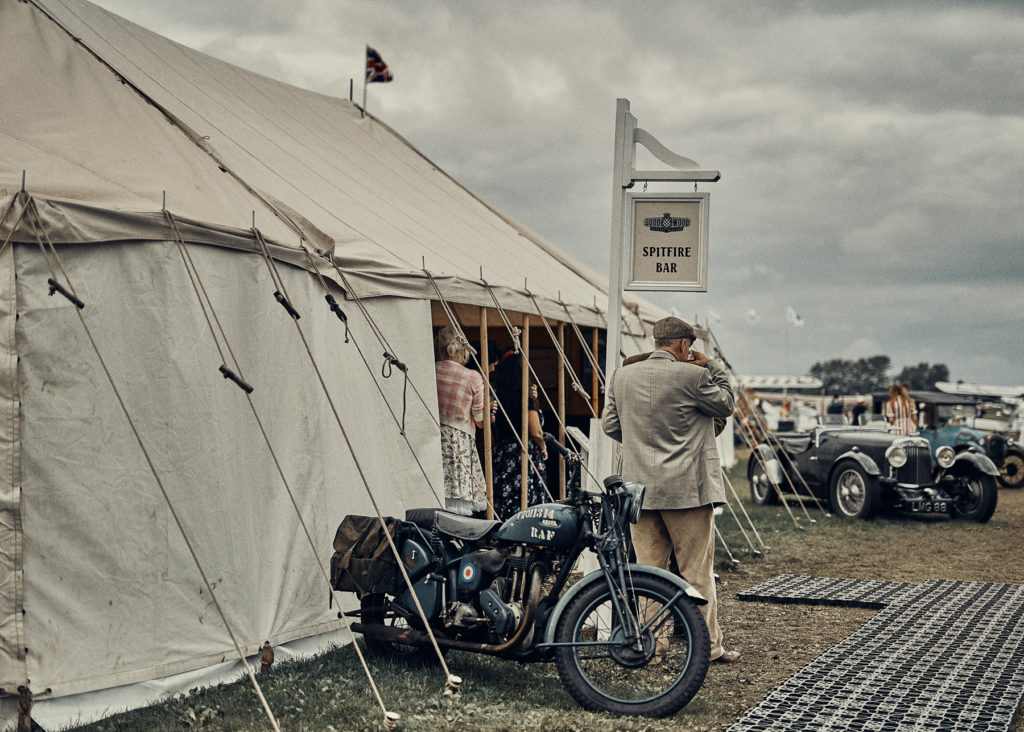
The Golden Age of Superchargers
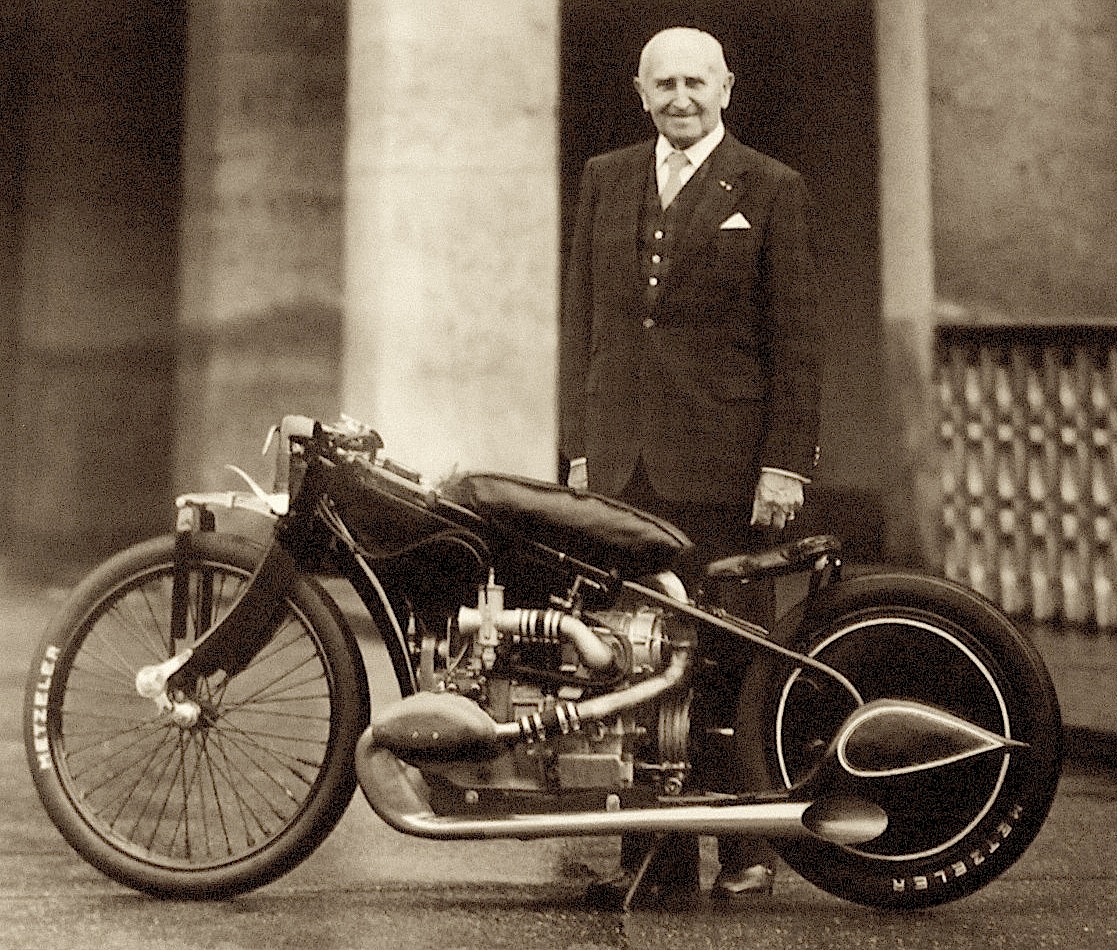
The Golden Age of supercharged racers was a brief but glorious moment, when competing factories built ultra-exotic machines which laid the foundations of modern motorcycling. By pushing the boundaries of engine and chassis technology, new designs were adapted out of necessity, like perimeter frames, front and rear hydraulic suspension, wind-tunnel tested fairings, etc. The power discovered through forcing an air/fuel mix into an engine - a 40% gain in HP, at best - revealed problems with high-speed stability and wind-cheating which are still being addressed by ever-faster sport bikes.
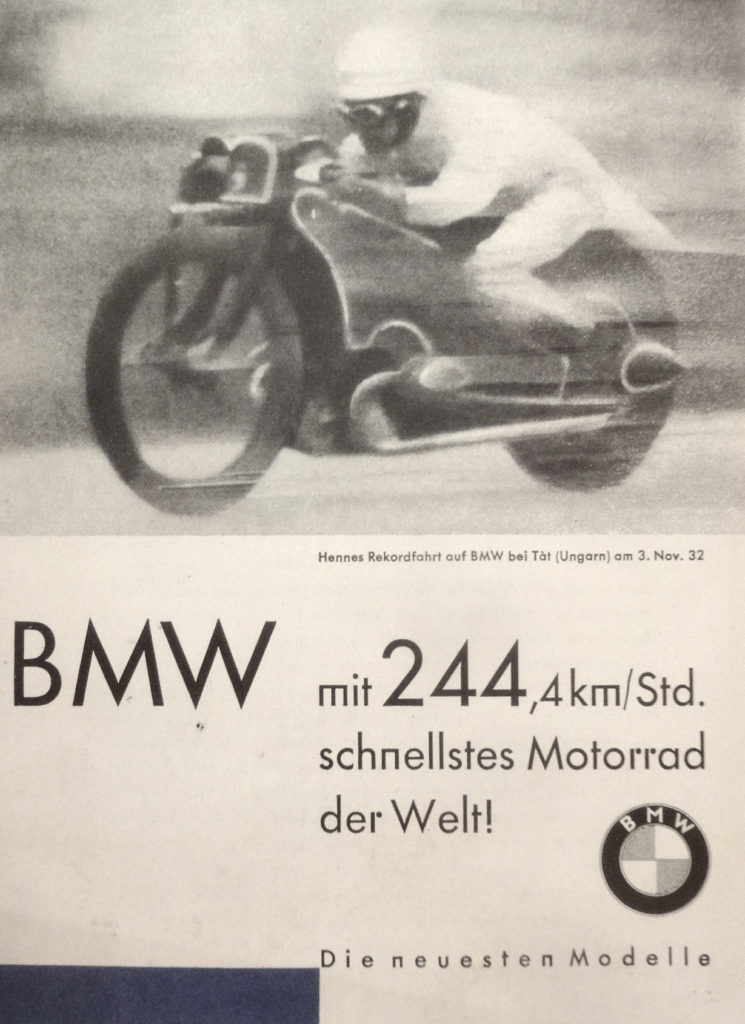
The German and Italian factories were the first to embrace supercharging as a race policy, and integrated blowers with their racing engines from as early as 1925. By the mid-1930s, all companies competing in the Grand Prix series were at least experimenting with blowers and multi-cylinder engines, barring Norton, who remained true to their naturally aspirated single-cylinder racers. While AJS had a blown V-four, and Velocette a blown vertical twin (the 'Roarer'), these machines were underdeveloped compared to their competition from BMW, DKW, NSU, Moto Guzzi, and Gilera, whose racers dominated the high-speed stakes in every racing capacity - 250cc and 350cc for the Guzzi flat-single and DKW two-stroke racers, 500cc for the BMW flat twins, NSU vertical twins, and Gilera 4s.
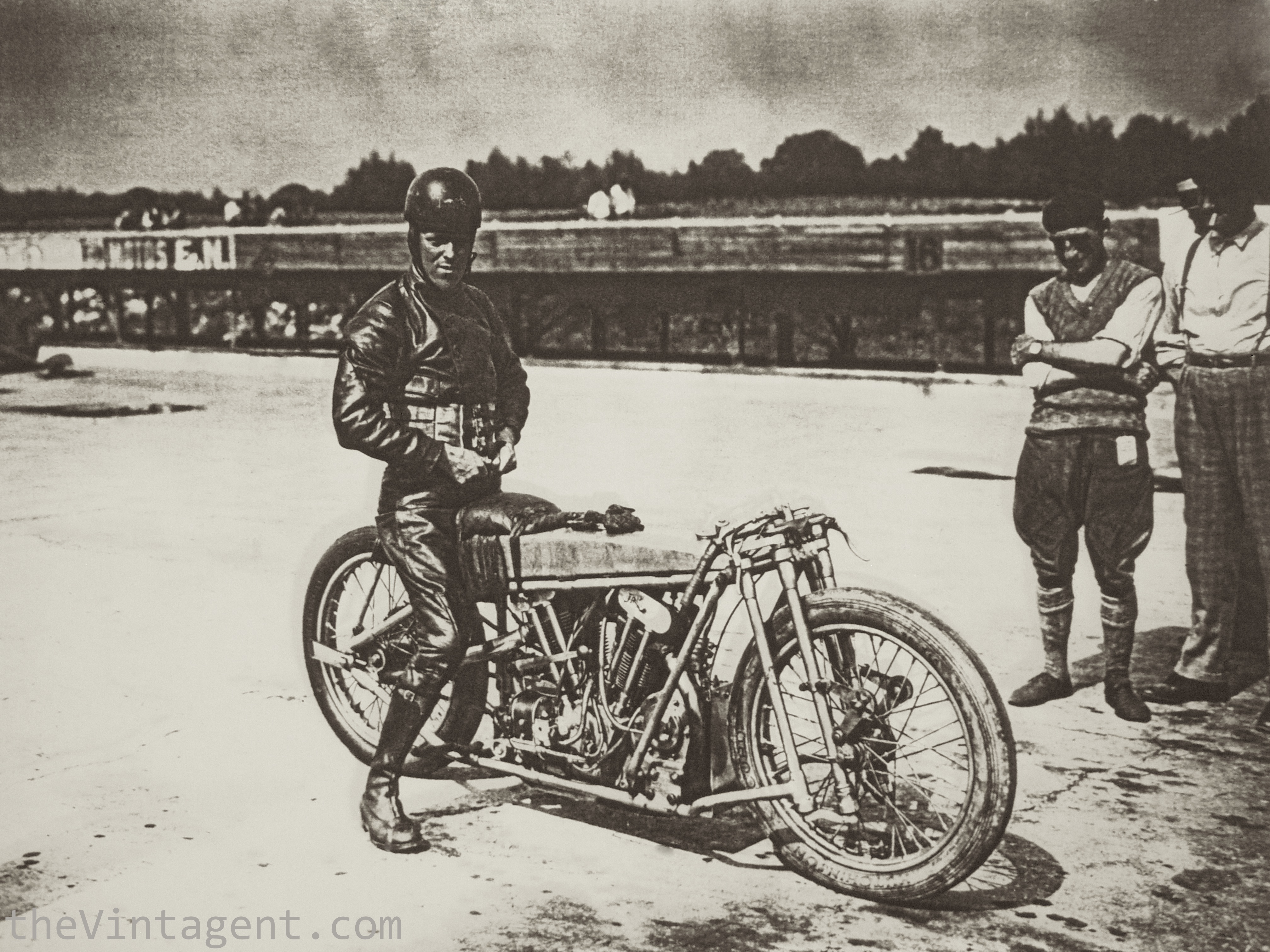
http://www.britishpathe.com/video/150-miles-an-hour-on-a-motorcycle
The World Speed Record was the sole property of supercharged motorcycles from September 19 1929 onwards, when Ernst Henne took the first of his many records on a blown WR750, with a pushrod 750cc motor based on the BMW R63, on the straightaway at Schleissheim, Germany, at 134.68mph. Henne's record was challenged the following summer by Austrian Brough Superior importer Eddy Meyer, who added a supercharger to his SS100, and a new JAP 8/50 racing motor, but French customs officers refused to import his special racing fuel, and he never reached the speeds he intended.
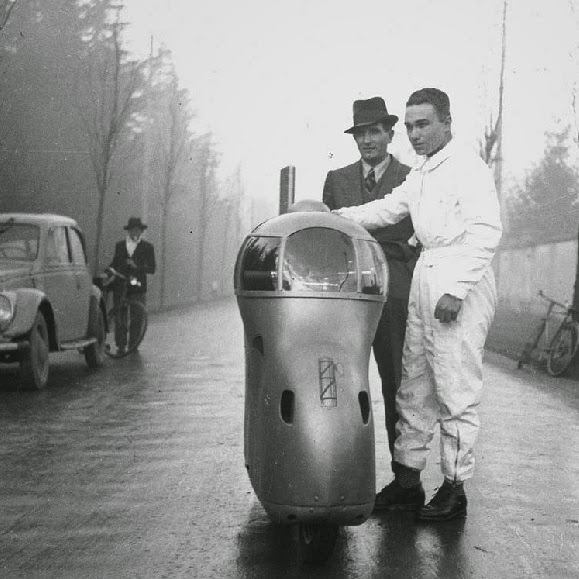
It took Joe Wright on a supercharged OEC-Temple-JAP to beat the BMW's speed, which he barely pipped at 137.32mph down the straightaway at Arpajon, France, just outside the gates of the Montlhéry speed bowl, on Aug 31, 1930. Less than a month later, Henne squeezed another mph from the BMW, and recorded 137.66mph at Ingolstadt, Germany, on Sep 21st. The remainder of the 1930s was a ding-dong battle between a clubby pack of English speed-demons and the might of the BMW factory, interrupted only by the Gilera Rondine snatching glory for a moment in 1937, when Piero Taruffi recorded 170.37mph on the Brescia-Bergamo autostrada.
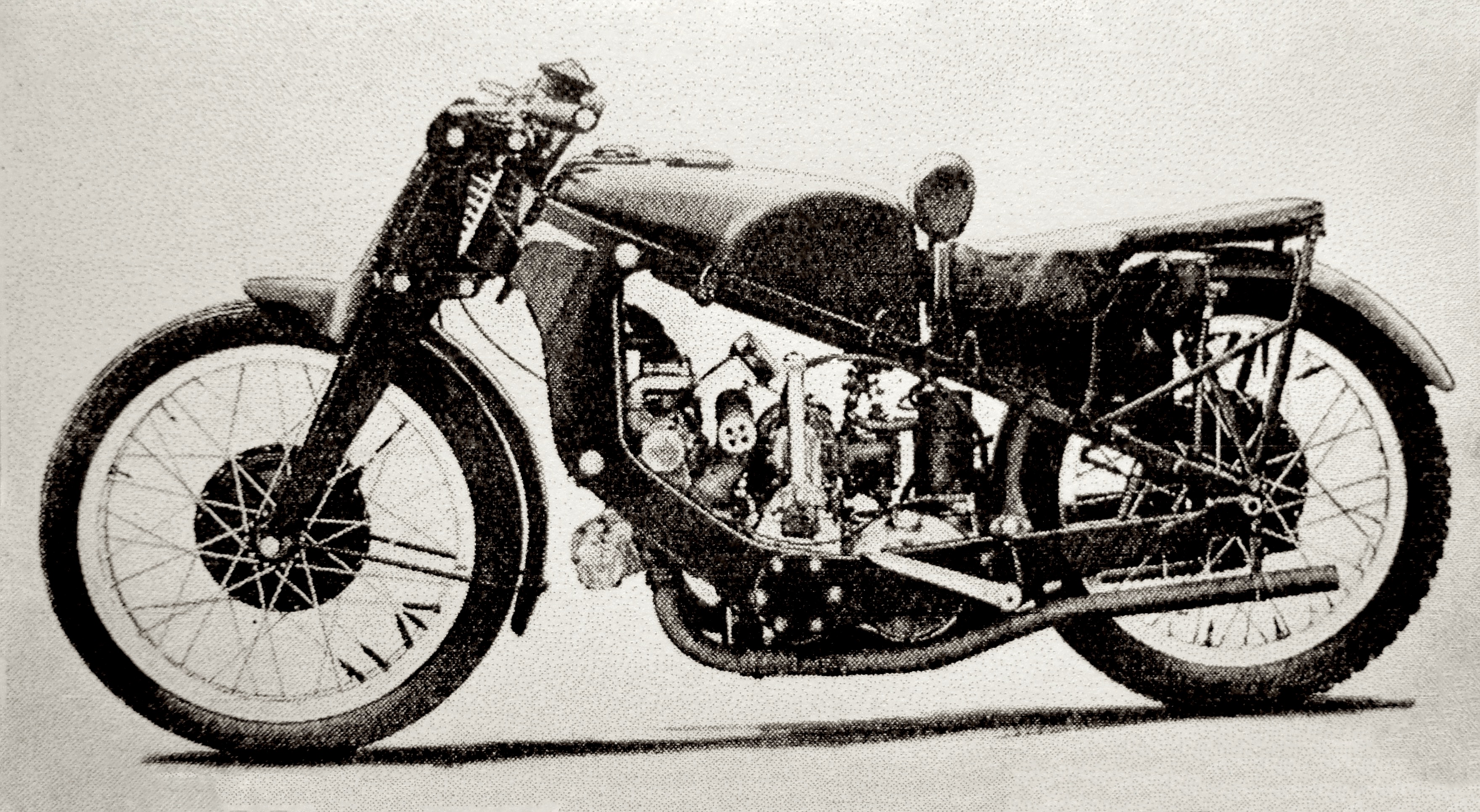
The Brit club included George Brough, Freddie Barnes, and Claude Temple as builder/mentors, and Eric Fernihough and Joe Wright at the brave riders. These gents worked in glorified sheds, squeezing power out of the obsolete (by comparison) JAP pushrod V-twin engine, which they housed in their own chassis (Brough Superior, Zenith, and OEC respectively), and ultimately succeeded in retaining glory, until it was clear 'the competition' would shortly involve guns. The motorcycles they built are magnificent bitsas, masterpieces of handwork and inspiration, cobbled together by men of tremendous passion. Amazingly, almost all of these supercharged record-breakers survive.
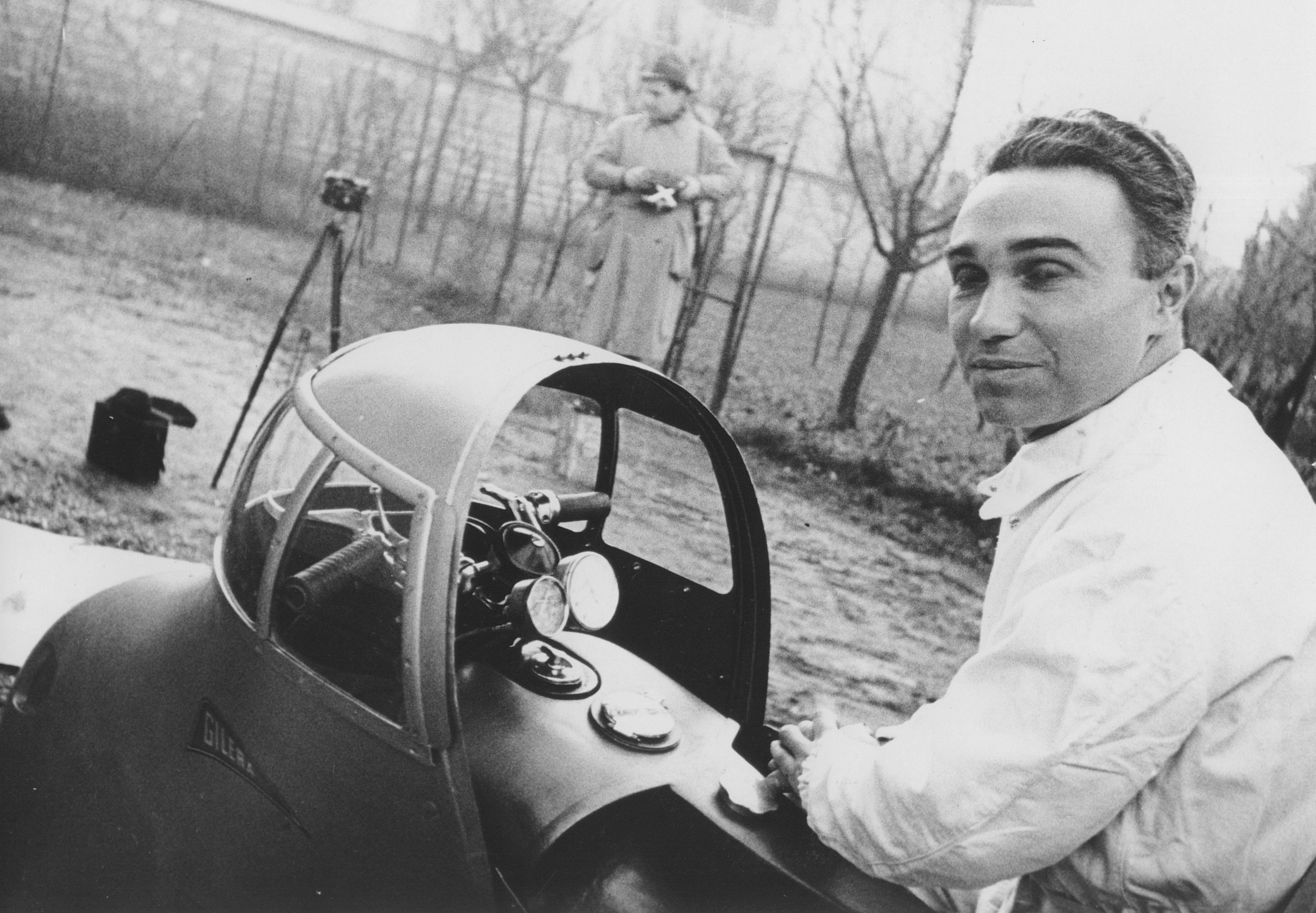
Below is a fantastic '5 minutes' with Piero Taruffi and the Gilera Rondine:
https://youtu.be/iDlJG3DVd6M
The BMW factory, by contrast, worked from a fresh sheet of paper, ultimately designing the RS255 engine for modern racing, integrating a blower to the engine castings, and developing this OHC flat-twin 500cc racer to win both the Isle of Man TT by 1939, and take the ultimate pre-war World Speed Record by 1937, at 173.68mph, which stood for 14 years. The BMW had half the engine capacity of its rivals from England (although the same capacity as the Gilera, which was only 3mph slower), but had the advantage of a modern factory and a team of talented engineers to build this superb machine from scratch. The BMW record-breakers were equally the product of passionate engineers, and are equally masterpieces of speed-inspired design. Amazingly, the BMW and Gilera record-breakers also survive, and all can be enjoyed in person, if you're lucky enough to encounter them. In the past two years, for example the Joe Wright blown Zenith-JAP and OEC-Temple-JAP could be seen at the Vintage Revival Montlhéry, as well as the Concorso di Villa d'Este, where one could also see the BMW WR750 and Gilera Rondine in original condition, and a rebuilt RS255 streamliner ('Henne's Egg'). These machines are reason enough to attend such events, as they leave a lasting impression as the pinnacle of the Golden Age of Supercharging.

The Japanese Harley-Davidsons
The early history of Harley-Davidson in Japan is little known in the West, but the complex relationship with its #2 export market in the 1920s (after Australia) is fascinating. Relations between the Motor Co. and its Japanese subsidiary became very contentious in the 1930s, as the Japan transformed into an aggressive Imperial power, with a militarized, nationalist, and protectionist political system.
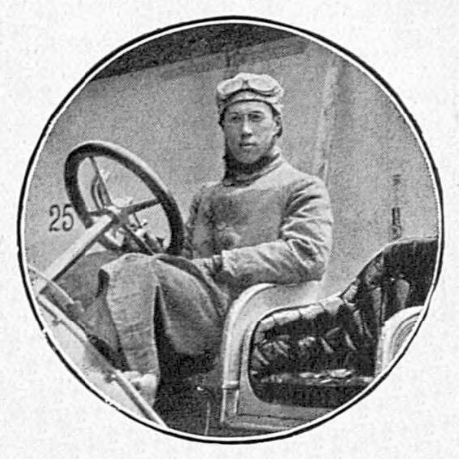
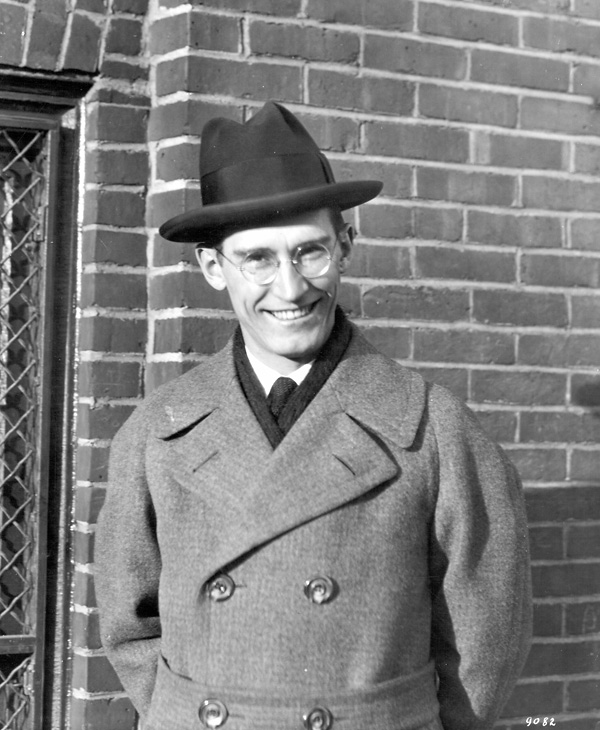
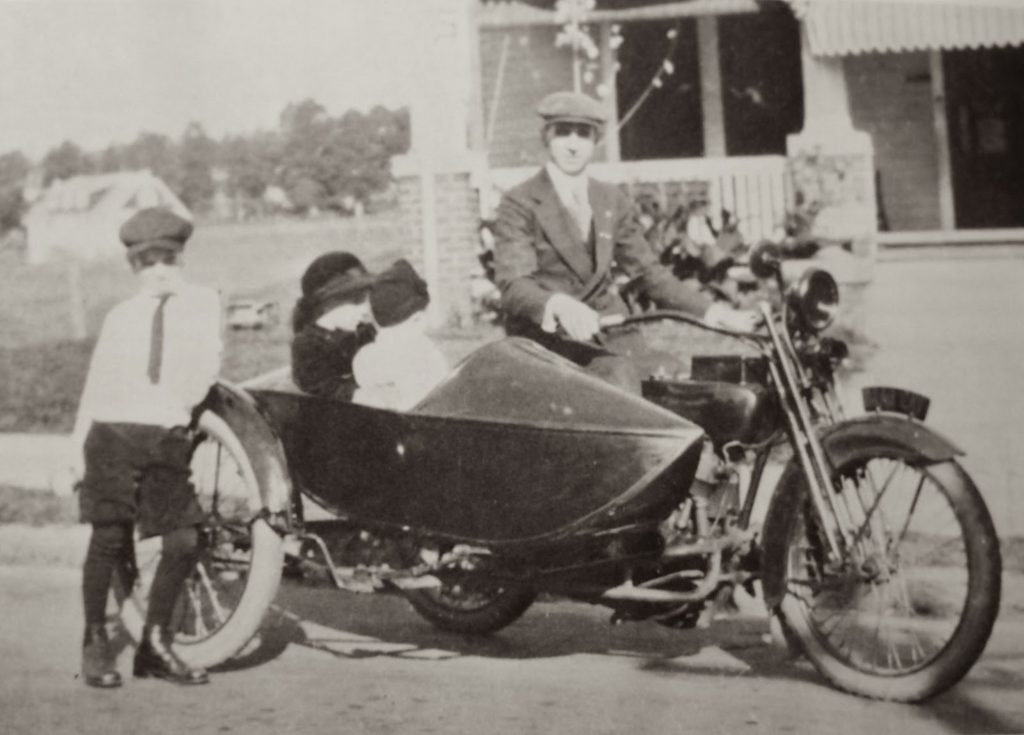
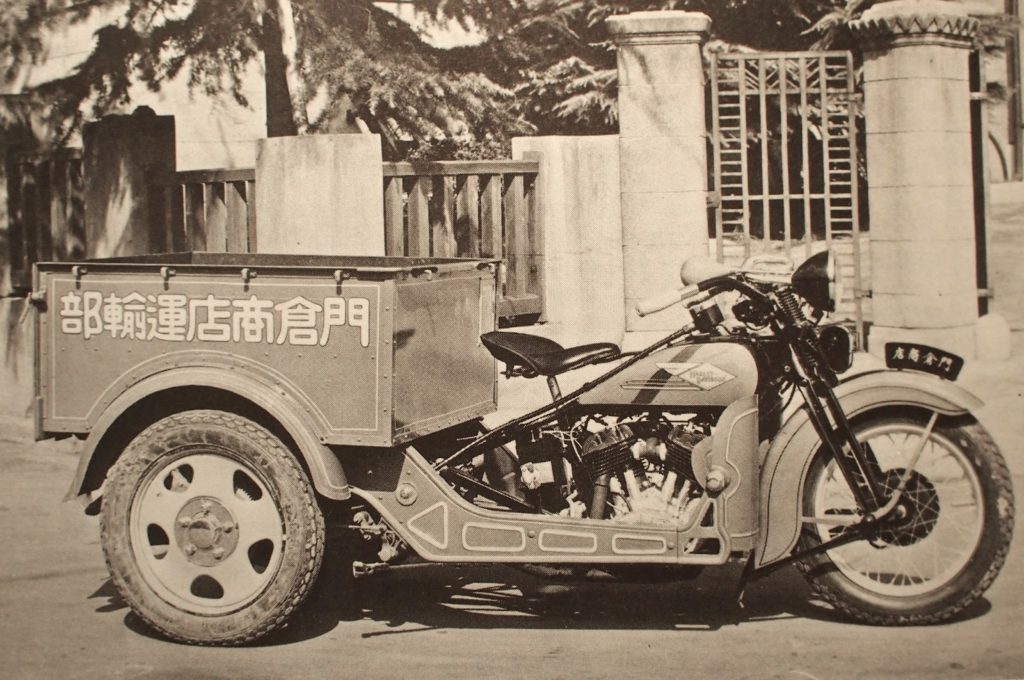
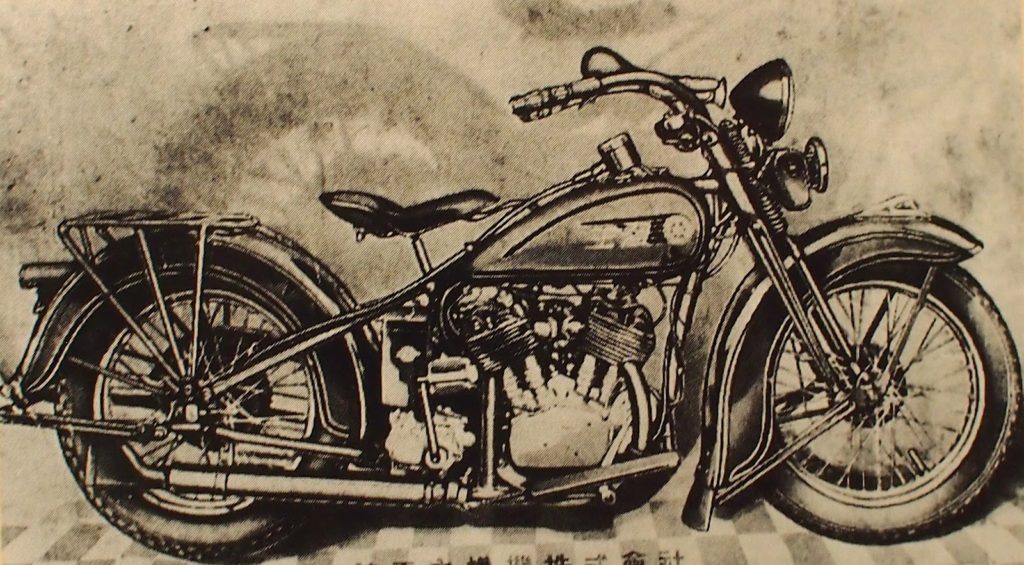
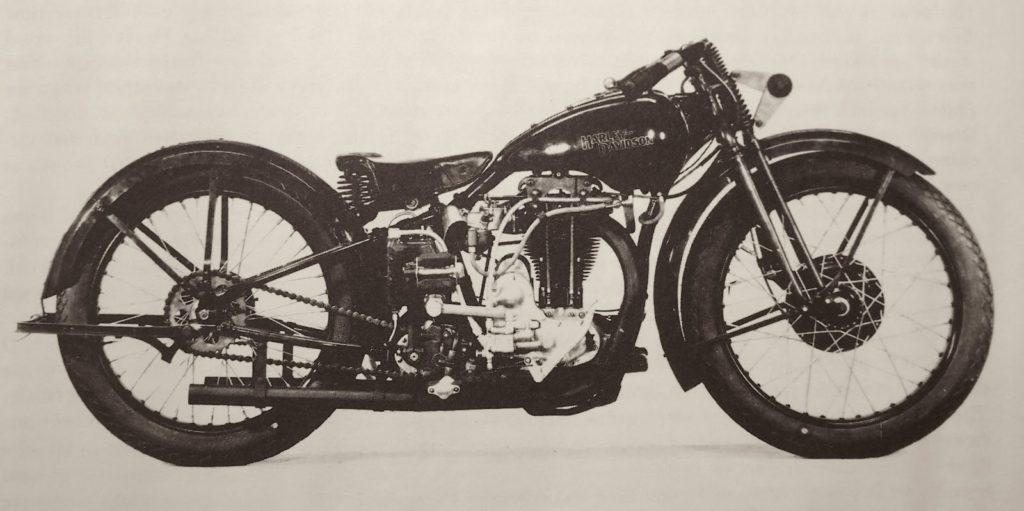
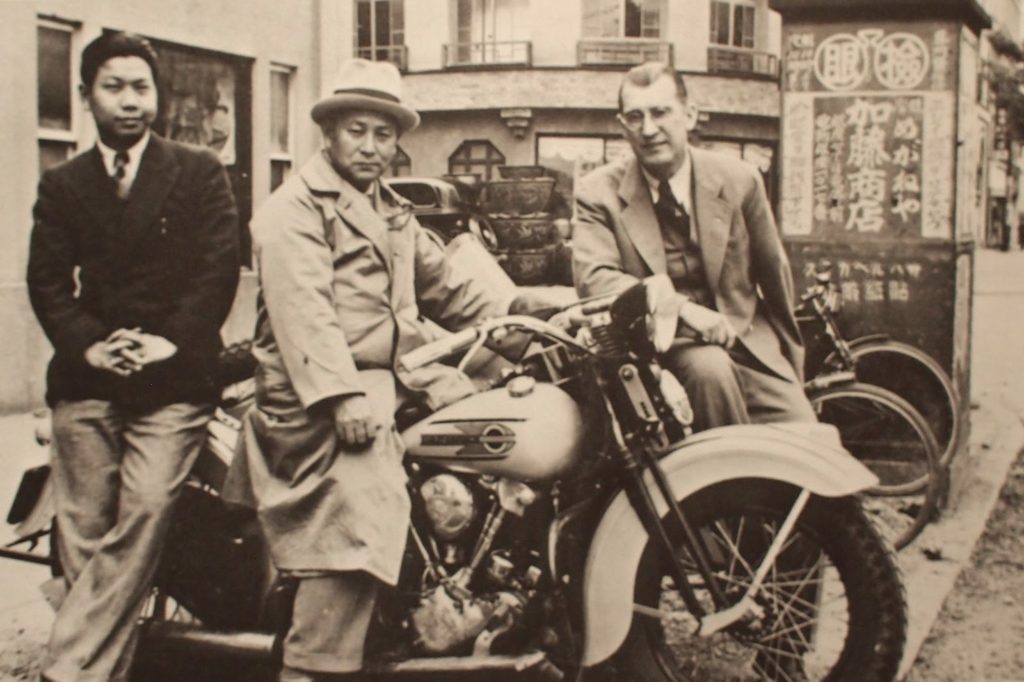

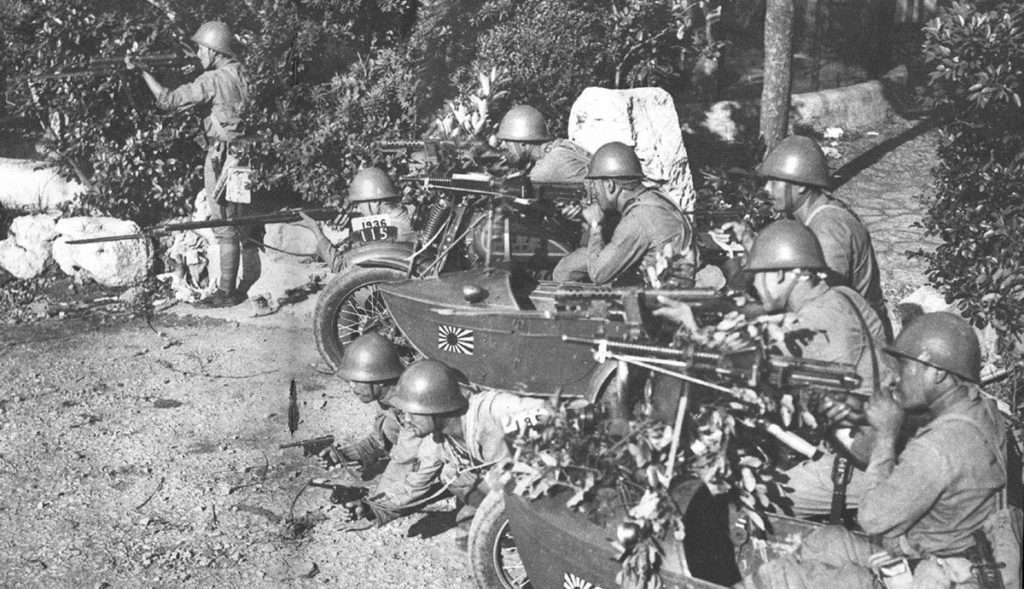
- 'A Century of Japanese Motorcycles', by Didier Ganneau and Francois-Marie Dumas, which is to date the only comprehensive English-language book covering all years of the Japanese motorcycle industry. Given the market dominance of Japanese motorcycles since the 1960s, this is a remarkable poverty of books, compared to every other nation's motorcycling contribution. Photos scanned from here are listed as (Iwatate). It's a must-own book!
- 'Japan's Motorcycle Wars', by Jeffrey Alexander, was reviewed in The Vintagent here. An excellent dissertation, admittedly not a 'bike book' per se, but full of good stuff.
- 'Harley Davidson' by Harry Sucher, for the Rikuo story; the first complete history of the H-D marque, with much info from people who were still alive in the early days. Extremely informative. Photos listed as (Sucher).
Japanese Motorcycles: the Early Days
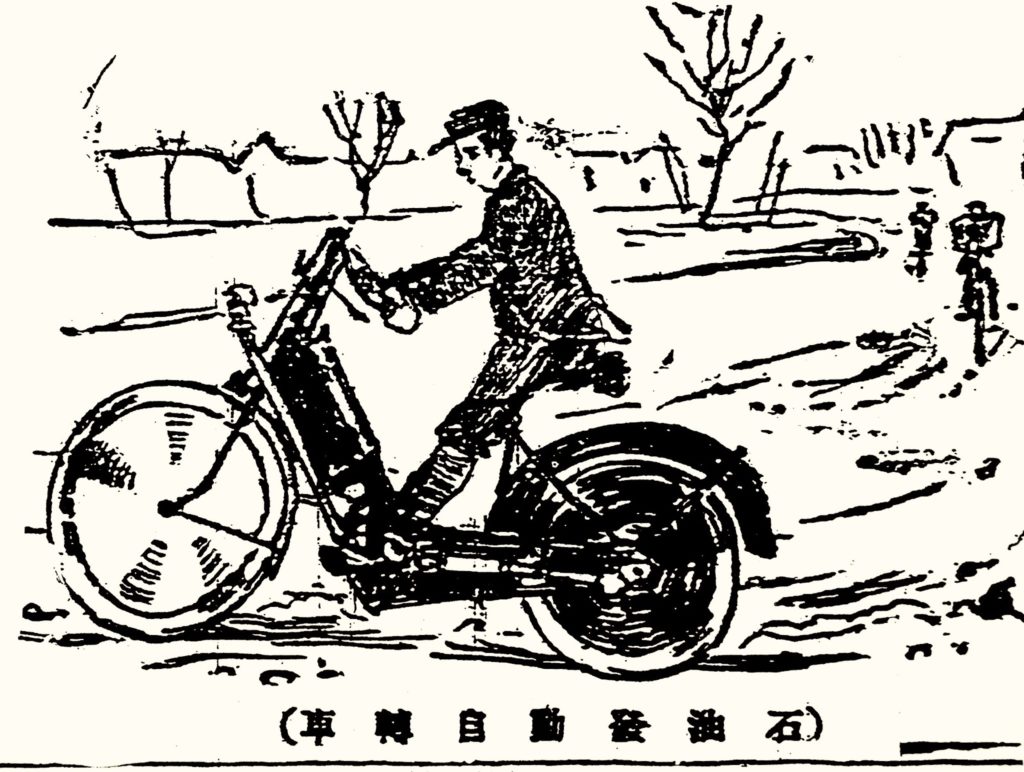
To understand the slow and chaotic beginning of the Japanese motorcycle industry, it helps to understand a little of the country's background, and history of its relations with the West. Japan was never isolated or ignorant of world affairs, having conducted sea trade for centuries with neighbors in China and Korea, and was well aware in the 1500s that an aggressive colonial expansion by European countries had begun in the New World. When Spanish and Portugese traders arrived on Japanese shores in the late 1500s, the introduction of Catholicism in southern Japan was seen as the spearhead of a possible colonizing effort by Europeans. In response, the Tokugawa shogunate (the feudal military rulers in Edo castle - this is also called the 'Edo period') passed laws starting in 1633 which drastically restricted contact and trade with the outside world, making entry into Japan by foreigners, and exit from Japan by locals, punishable by death. These laws remained in effect until 1868 (230 years!), the end of the Edo period, and the start of the 'Meiji Restoration'. As with all politics, while the colonial threat was the primary excuse for an iron grip on Japanese trade, an important effect was to enrich the Tokugawas and deprive rival feudal groups of trade revenue. Ultimately this unified Japan, and created a national identity.
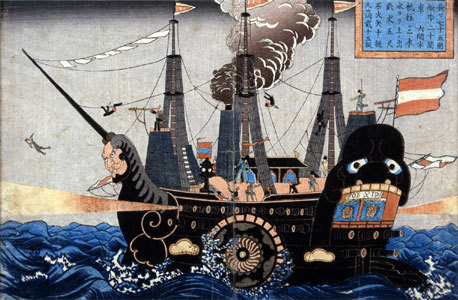
Japan still traded with the outside world, through tightly controlled channels: the sole European access was limited to the artificial island called Dejima, in Nagasaki harbor, where the Dutch East India Company handled imports and exports. All trade with China went through Dejima as well. Trade with Korea, the Ainu people of northern Japan, and the islands of the Ryukyu kingdom (Okinawa etc) were all handled at specific sites. Europeans tried for 200 years to establish relations with Japan by trickery or force, but were successfully repelled until July 8, 1853, when Commodore Mathew Perry brought four US Navy warships (the kurofune, or 'Black Ships') into Tokyo Bay, and broke the resistance of Japanese forces. He returned the following year with 7 warships, and forced the Shogun to sign 'Treaty of Peace and Amity'...classic 'gunboat diplomacy'; the treaty forbade the Japanese from levying tarrifs on trade (although of course the US could), and gave US citizens immunity from prosecution in Japan ('extraterritoriality' - same as in Iraq/Afghanistan today - some things never change). Such treaties were implemented soon after by European countries, a humiliating turn of events which led to the end of the Tokugawa shogunate, which was replaced by the Meiji oligarchy in 1868 [which corresponds to the invention of the motorcycle, in France (the Perraux steam cycle) and the US (the Roper steam velocipede)].
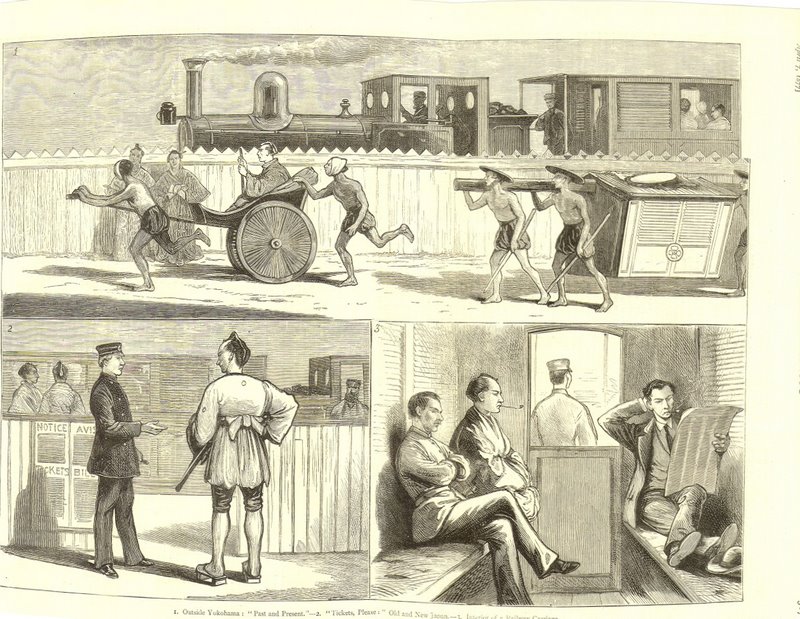
The sudden/forced opening to European influence was embraced by the Meiji government, who saw modernization as the only way to defend Japanese sovereignty and culture. They organized 'learning expeditions' to the US and Europe from the 1870s onwards, where large teams of diplomats and students examined all manner of manufacturing and governmental institutions (military, courts, schools, etc). These missions served Japan well, for within a generation the country had become acknowledged as a modern global power, with a burgeoning industrial base.
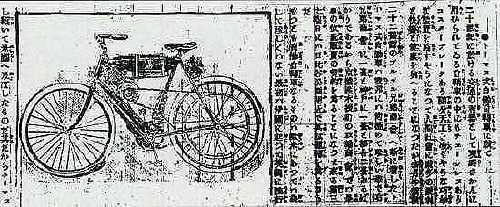
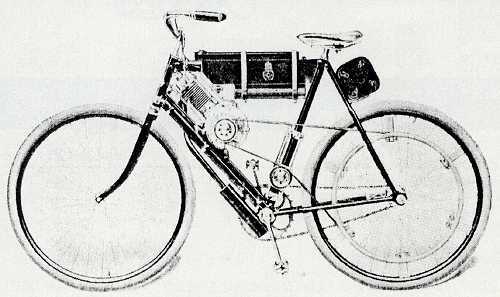
The first motorcycle appeared in Japan in 1896; a Hildebrand and Wolfmüller imported by Shinsuke Jomonji, a member of the Japanese House of Representatives, who demonstrated the machine in front of the Hibiya Hotel in Tokyo (destroyed by earthquake in 1923?). In 1901, a Thomas motorcycle and tricycle were imported, and the motorcycle was ridden extensively through Tokyo, and generated considerable press comment. The first motor vehicle race in Japan was staged between the two Thomas machines and a Gladiator quadricycle, on Nov. 3, 1901. The Thomas is generally considered the first production motorcycle in the US, and its appearance in Japan at this early date is remarkable.
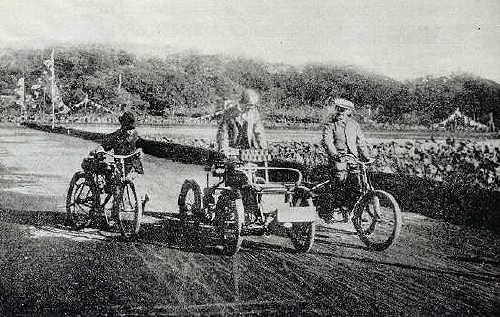
1908 - The First Japanese Motorcycle:
The true pioneer Japanese motorcycle builder was Narazo Shimazu, who established the Shimazu Motor Research Institute in 1908, in Osaka. Using knowledge gleaned from Scientific American and the English book 'Motor Cycling Manual', he built his first gasoline-powered engine in August 1908, a two-stroke single-cylinder of 400cc, and installed it into a home-built frame from salvaged bicycles (there being no raw tubing available) - the first entirely Japanese-built motorcycle

In 1913, Eisuke Miyata, founder of a gun and bicycle firm (in 1892 - 'Miyata' is still making bicycles today), purchased a Triumph and made a faithful copy as the 'Asahi' motorcycle, which was used by the Tokyo police and for gov't minister escort duty, despite its 180yen price. The Japanese motorcycle industry had truly begun, although there was as yet no unified highway code in Japan, and inter-urban roads were terrible. Urban roads were worse, as Japanese cities were intentionally built in a crazy-quilt pattern during their Feudal period, to slow the advance of invading troops. A lack of road signs and even street names, combined with the horrific state of road repair, made the advance of motorization difficult. Japan had never relied on horse and carts for general movement of goods in their Feudal period, and almost all traffic was by foot.
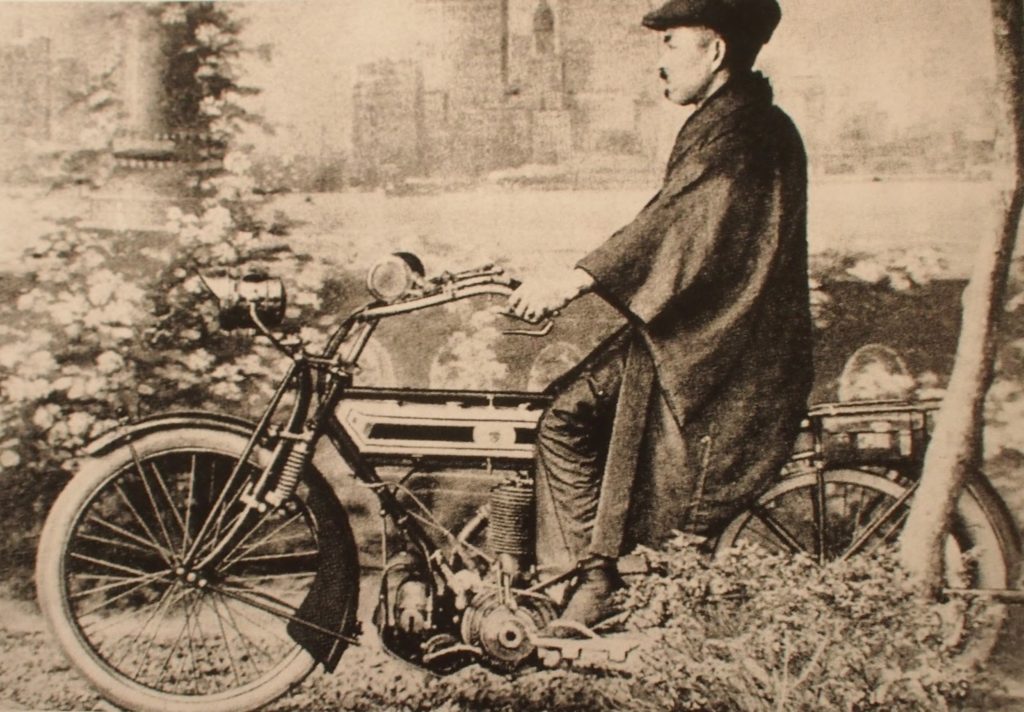
Narazo Shimazu returned to the motorcycle business in 1926, producing the 'Arrow First', a 250cc sidevalve single-cylinder, and after 6 were built, he embarked on a well-publicized across-Japan moto-tour, sponsored by Japan Oil, Dunlop, and Bosch. Six riders, on four red motorcycles, took a 15-day ride of 1430 miles from Kagoshima to Tokyo. The publicity drew the attention of the Ohayashi group of companies, which whom Shimazu founded Japan Motors Manufacturing. He improved the 'Arrow First', and eventually sold 700 over the next 3 years, before the business went bust.

The first motorcycle race in Japan was held in 1913, at the Hanshin Racecourse, a dirt horse racing track in Nishinomiya (near Kobe). Around 30,000 spectators attended, a record for any kind of race in Japan. Racing became more common at venues across the country, and professional riders emerged, such as Kawamada Kazuo (who worked for Alfred Child at Harley Davidson Japan - see below) and the remarkable Kenzo Tada, the first Japanese rider to compete at the Isle of Man TT, in 1930, aboard a Velocette KTT. [Read more on Kenzo Tada here]
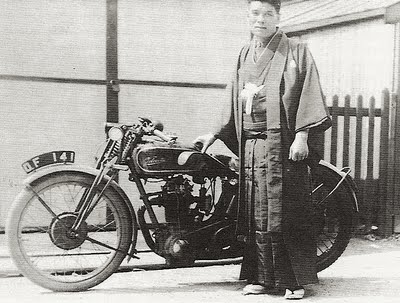
Just like the United States after WW2, it was the need for military mobility which sped up infrastructure improvement for Japanese roads. An increasingly belligerent Japanese military (annexing Taiwan in 1895, and parts of China and Korea by 1910) used motorized vehicles in greater numbers than the rest of the country. By 1919, a unified highway code was established along British lines (meaning they drive on the left), and civilian contractors hired to improve roads and bridges, while the military was allowed to subsidize vehicle manufacture at home.
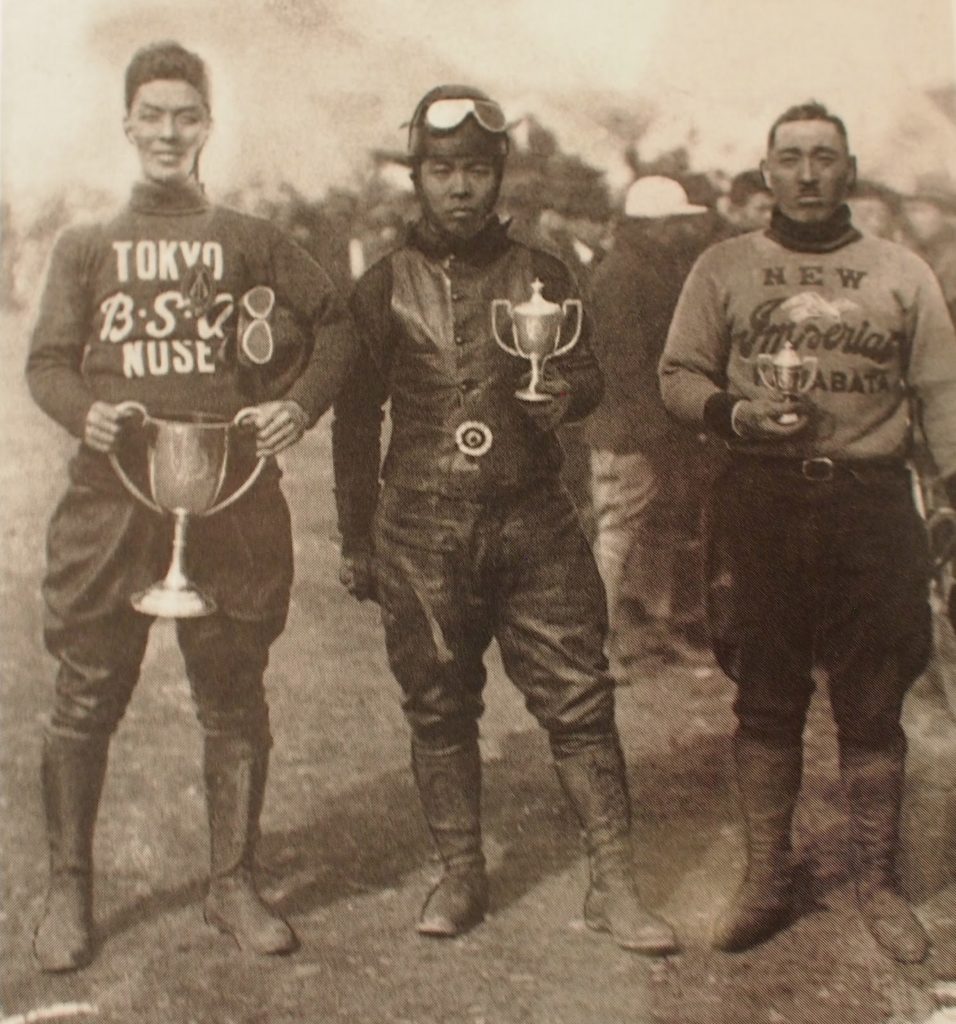
During the 1920s, Japanese textiles were driving their export market, and increased prosperity meant more imports of motorcycles. Harley Davidson's #2 global export market in the 1920s was Japan (after Australia), and Indian sold just as many (around 1000/year), including to Prince (later Emperor) Hirohito, who enjoyed riding an Indian Chief with sidecar. Henderson four-cylinders were also sold in Japan, and manufacturers from Britain (AJS, Matchless, Norton, Douglas, Brough Superior, and Velocette), Belgium (Saroléa and FN), plus Husqvarna, Moto Guzzi, NSU and BMW exported to Japan as well. The Road Improvement Plan of 1920 estimated a 30-year project of completely paving Japanese roads, and building bridges over rivers, and the motorcycle as a pleasurable touring machine for wealthy riders became a reality. Motorcycle clubs sprung up, some of which forbade riders to venture alone due to the terrible state of roads, and a culture of tonori ('riding far') grew.
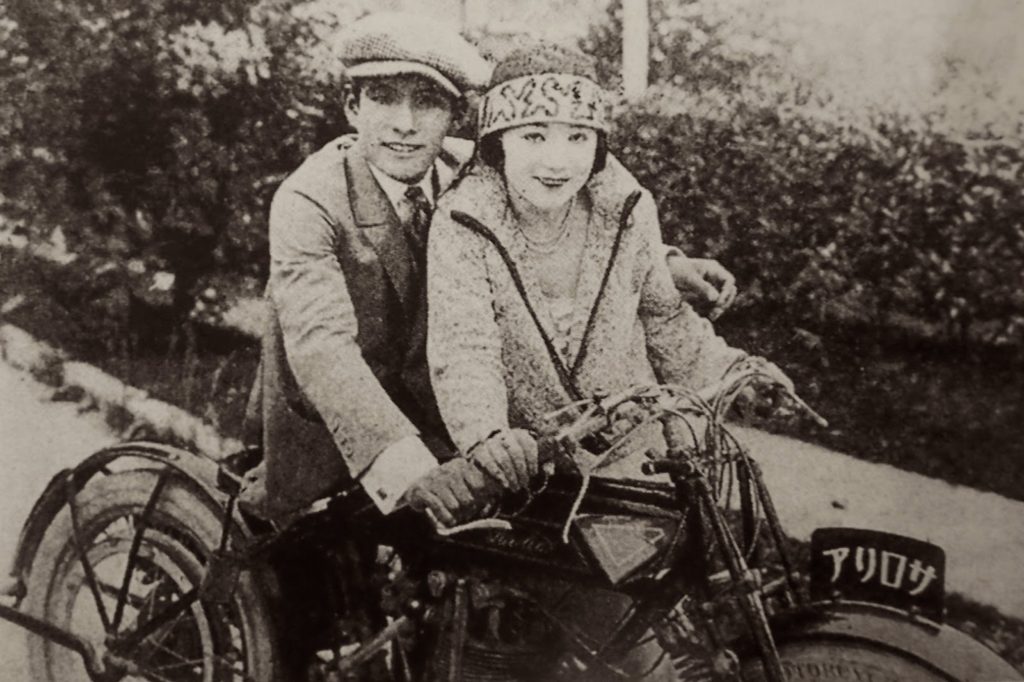
A massive earthquake destroyed much of Tokyo in 1923, killing hundreds of thousands, and the utter lack of motorized emergency vehicles, plus the impossibility of the road system for efficient rescue/reconstruction work, meant big changes for the Japanese vehicle industry, and the roads they used. Tokyo was rebuilt with a more rational road system, which doubled the number of vehicles in a single year (1924), and led to a push country-wide for a modernized road system. To further promote the nascent Japanese vehicle industry, import tariffs were imposed on foreign vehicles in 1925, which led Ford (1924), General Motors ('27), and Chrysler ('29) to establish factories in Japan. Harley-Davidson followed suit in 1929.
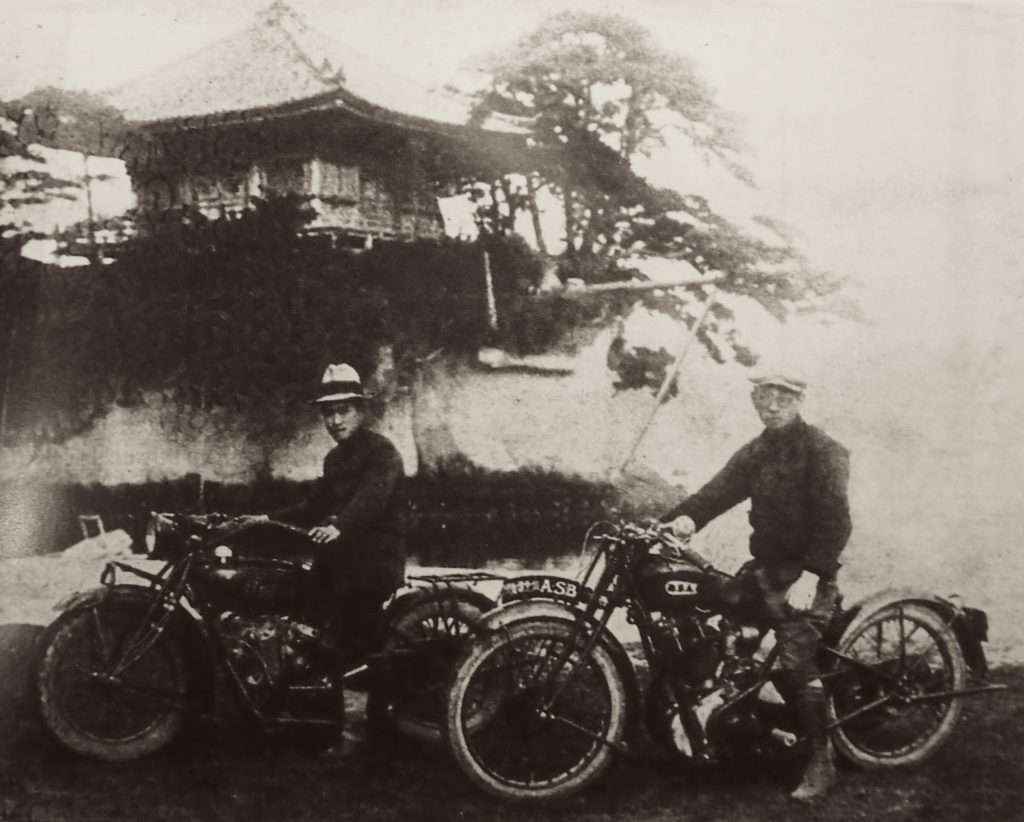
Several small motorcycle manufacturers set up shop in the mid-1920s, including the 350cc two-stroke Sanda ('Thunder') from Osaka, the SSD of Hiroshima, and the grand-daddy of them all, a 1200cc twin called the Giant, built by Count Katsu Kiyoshi in 1924. The Japan Automobile Company (JAC) produced motorcycles starting in 1929, which included 350cc and 500cc sidevalve singles, and a 500cc v-twin on JAP lines. In 1931 JAC built about 30 examples of 1200cc flat-twin, used for Imperial escort duty. Between the late 1920s and 1937, when the military effectively commanded all civilian vehicle production, quite a few large manufacturers had firmly established themselves in the Japanese market. Maruyama, Toyo (Mazda), Meguro, Cabton, Showa, Miyata, and Rikuo. Miyata alone produced nearly 30,000 motorcycles between 1930-45, and as mentioned, Rikuo built some 18,000 heavyweight H-D clones between 1935-42.
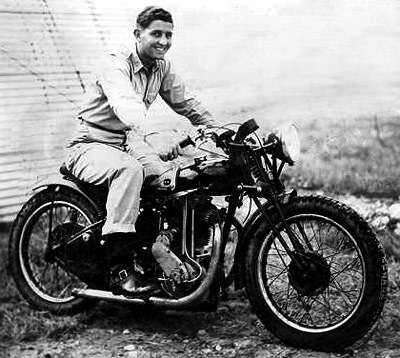
Information and photographs for this article were sourced from 3 excellent books:
- 'A Century of Japanese Motorcycles', by Didier Ganneau and Francois-Marie Dumas, which is to date the only comprehensive English-language book covering all years of the Japanese motorcycle industry. Given the market dominance of Japanese motorcycles since the 1960s, this is a remarkable poverty of books, compared to every other nation's motorcycling contribution. Photos scanned from here are listed as (Iwatate). It's a must-own book!
- 'Japan's Motorcycle Wars', by Jeffrey Alexander, was reviewed in The Vintagent here. An excellent dissertation, admittedly not a 'bike book' per se, but full of good stuff.
- 'Harley Davidson' by Harry Sucher, for the Rikuo story; the first complete history of the H-D marque, with much info from people who were still alive in the early days. Extremely informative. Photos listed at (Sucher).
